








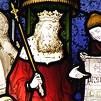










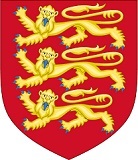



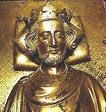





























TLW's Englandscope™ (England Historyscope) |
By T.L. Winslow (TLW), the Historyscoper™ |
© Copyright by T.L. Winslow. All Rights Reserved. |
Original Pub. Date: Apr. 15, 2019. Last Update: Apr. 14, 2025. |









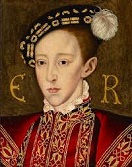
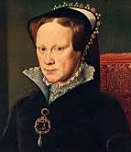


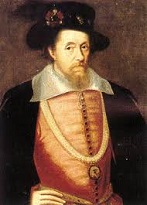


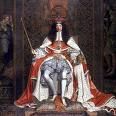


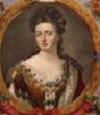





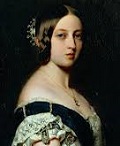




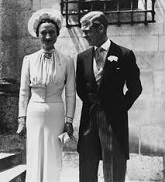
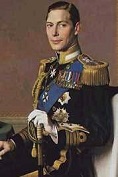


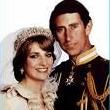

Westerners are not only known as history ignoramuses, but double dumbass history ignoramuses when it comes to England and English history. Since I'm the one-and-only Historyscoper (tm), let me quickly bring you up to speed before you dive into my Master Historyscope.
About 2B B.C.E. the oldest magnetofossils on Earth are formed of the mineral magnetite by magnetotactic bacteria in S England and the Gunflint Chert along the N shore of Lake Superior.
About 1.1B B.C.E. the supercontinent of Rodinia (Russ. "to give birth") emerges, causing land to cover 30% of the Earth's surface instead of only 5%; it ends up being surrounded by the single Iapetus Ocean in the S Hemisphere between Scotland, England and Scandinavia by -600M; the Grenville Orogeny causes the Laurentian Mts. to be formed.
About 425M B.C.E. a fossil of Colymbosathon ecplecticos ("amazing swimmer with large penis") of the ostracode species group is found under volcanic ash in a rock bed in Herefordshire, England in 2003, with its soft body parts mineralized, becoming the oldest male fossil ever discovered.

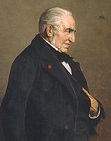
About 168.3M B.C.E. the Bathonian Age begins in Bath, England (ends -166.1M), with the first Ammonite marine mollusc species appearing; first pub. in 1843 by Belgian geologist Jean Baptiste Julien d'Omalius d'Halloy (1783-1875).
About 130M B.C.E. Baryonyx (Gk. "heavy claw") has 1-ft.-long claws and crocodile-like teeth and lives in England; discovered by William J. Walker; the only known dinosaur that ate fish? The Isle of Wight is plagued by fires and floods, leaving a treasure trove of fossils for modern scientists.
About 15M B.C.E. the Earth becomes cooler and more arid, but the climate is still very warm, up to 6C (11F) warmer than today, with almost all the ice melting, and CO2 levels as high as modern times; alligators live in England.
About 800K B.C.E. the oldest human footprints outside Africa are found in Norfolk, England.
About 478K B.C.E. Stone tools are used in Boxgrove, England by Homo heidelbergensis; discovered by Mark Roberts in 1993.
About 108K B.C.E. two pieces of flint are unearthed in 2010 in Dartford, Kent, England, becoming the earliest evidence of Neanderthals in Britain, who most believe abandoned the island between -200K B.C.E. and 63K B.C.E.
About 8,820 B.C.E. Amesbury in Wiltshire (incl. Stonehenge) is the earliest known occupied settlement in England that is occupied to modern times.
About 8,300 B.C.E. England is settled from Europe; there is no English Channel yet?.
About 6,900 B.C.E. England is still connected to Europe by a land bridge?
About 6,500 B.C.E. the Strait of Dover (narrowest part of the English Channel) is formed after rising sea levels submerge Doggerland.
About 6,000 B.C.E. the first human settlements in Ireland are made by the Pretani or Cruithin (Dal nAraide, Ui Echach Coba, Conaille Muirtheimne) in NE Ireland (Ulster), who migrate from Cumbria in N England and Galloway in Scotland.
About 4,000 B.C.E. tThe Funnel Breaker Culture, ranging from S Norway to the Czech-Austrian border and from the Ukraine to the Netherlands reaches NW France and England.
About 4,000 B.C.E. the Salisbury Plain (Gael. "Sulis" = Sun") in SC England becomes the center of a funky Stone Age religious cult with huge burial mounds and graves.
The Celts begin fighting for their free-ee-ee-dom? About 3,000 B.C.E. the Celts (from the Greek word Keltoi, meaning hidden people), a fusion of Mediterranean, Alpine, and Nordic strains, incl. a dark Iberian and a blonde stock, and known, like Slavs, for big beards (compared to Chinese who have stubble beards, Ethiopians who have curly beards, and Am. aborigines, who are bare-faced) appear in N Europe; their Indo-European Gaelic Language drops the p sound in the initial or medial position (Lat. porcus becomes Gael. orc); they eventually form more than 150 distinct tribes, incl. the Britons in Britain, the Gauls in France, and the Goidels (Gaels) (Gael. "gwyddel" = savages) in Ireland, Scotland, and the Isle of Man; Goidelic Gaelic splits from Brythonic Galic by preserving the hard c sound, which turns into p in Brythonic (Irish mac becomes Welsh map); they practice the Druid Religion (Gr. "drus" = oak tree), which worships trees (rowans), practices magical ceremonies, and believes in the Sun god Belenus (Beli Mawr) ("the shining one"), the goddess of victory Andraste (Andrasta) (Andred), tree genies, Earth gods, and elfin demons; they fail to develop a written lit., relying on oral transmission by bards, filid (poets), scelaige (narrators), and entertainers; although they have no alphabet, symbols they use incl. the cross, swastika (fylfot), and trefoil (trivet), plus the colors and weaves later used in Scottish tartans; the Britons are cannibals; the social org. is tribal and clannish, preventing consolidation into a central govt., which proves their weakness and undoing?

About 2,800 B.C.E. (-3000 to -2200?) construction (by Celts or just Stone Age Sun-Moon worshipers?) of Stonehenge begins (ends -1800) on the Salisbury Plain in Wiltshire, S England near the Avon River 2 mi. W of modern-day Amesbury, starting with a circular earth bank and ditch (ca. -3100), followed by a wooden henge (ring of posts), which is replaced 50 years later by a network of stone posts forming a roofed circular temple, becoming the largest cemetery in Britain (cremations); the pillars support a raised platform used to get closer to the heavens?; the first bluestones are erected in -2400 to -2200 (-3000?); it was first built 500 years earlier in Wales?; two of the largest stones were already there for millions of years?
About 2,665 B.C.E. the earliest known yew longbow is made in Somerset, England.
About 2,500 B.C.E. the Bush Barrow royal grave is discovered near the site of Stonehenge, England in 2003, containing the most richly furnished prehistoric grave found in Europe, complete with a skeleton of a Central European and cool golden bling, which must have been worn in the hair over the ears to give the wearer a commanding look among the skin-wearing pop., and thus elevate him to great status and power; is this the king who organized the construction of Stonehenge?
About 2,300 B.C.E. the 5-ton bluestones at Stonehenge are moved and replaced by 25-to-45-ton Sarsen ("Saracen Stone") sandstones from the nearby (20 mi.) Marlborough Downs, then turned upright to become menhirs ("long stones") and trilithons (two vertical stones and a horizontal stone on top, forming the Greek letter pi); the pale green sandstone Altar Stone (discovered in 1620 C.E.) is erected; the total effort spend on Stonehenge amounts to 30M man-hours?; the Amesbury Archer, an archer from the Alps is buried in Amesbury near Stonehenge, becoming the oldest known burial site in England; discovered in May 2002.
About 2,000 B.C.E. a sacred burial ground is built in Shrewsbury, England, becoming the oldest known continuously used sacred ground in the British Isles.
About 1,800 B.C.E. the Bronze Age begins in Ulster; during the Bronze Age tin begins to be mined in Cornwall in SW England, furnishing Phoenicians with one of their favorite articles of trade, although they carry on their trade with them indirectly via Gaul; Britain becomes known as the Cassiterites (Tin Islands).
About 1,800 B.C.E. Stonehenge (begun -2800) in England is completed, designed to predict eclipses of the Sun and Moon as well as solstices and seasons; on sunrise at the summer solstice the Sun comes right down the aisle of small stones in the center, as shown by English astronomer Gerald Stanley Hawkins (1928-2003); UNESCO adds it to its list of World Heritage Sites in 1986 - where it shines on the sacrifice table so the Druids can insure another cycle of seasons?
By 1,000 B.C.E. most of England has been cleared of forests, and is covered with farms?
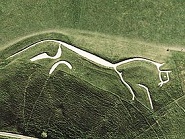
About 700 B.C.E. the Uffington White Horse is built in modern-day Uffington, Berkshire, England on the Berkshire Downs overlooking the Vale of the White Horse to the N.
About 500 B.C.E. the earliest Celtic chariot burials in Britain begin - Ahnuld's ancestors?
About 450 B.C.E. the La Tene (Tène) Culture (ends 1st cent B.C.E.) develops from the Iron Age Hallstatt Culture on the N side of Lake Neuchatel in Switzerland, as discovered in 1857 by Hansli Kopp, and spreads to E France, Switzerland, Austria, SW Germany, Czech., Slovakia, and Hungary, being influenced by Greek and Etruscan culture; meanwhile the Jastorf Culture (ends 1st cent. B.C.E.) develops in N Germany; about this time the first Celtic invasions of Italy and the British Isles begin, incl. the Boii, who migrate from N of the Alps and settle in the Po Valley - how many years to William Wallace?
About 60 B.C.E. the Shropshire Road in Britain is built, becoming an advanced engineering product?

The Roman sponge-wipers meet the Celtic leaf-and-twig wipers on Britain's Shit River and kick each other's ass and anus? Meanwhile the Triumvirate shows its first cracks? In 55 B.C.E. the command of clean-shaven Roman gen. Gaius Julius Caesar (-100 to -44) is extended for another five years, and Pompey and Crassus are given matching 5-year proconsular commands, Pompey in Nearer and Farther Spain, and Crassus in Syria; Crassus sails to govern his new province of Syria with seven legions, but Pompey sends legates to govern his, while returning to Rome to plot and jockey for position in the crumbling triumvirate; Caesar continues his kill-da-Celts program where he left off, and on Aug. 26 after learning that the Celts in Britain are supporting the resistance in Armorica, he crosses the Channel and invades Britain via the White Cliffs of Dover (Dubris), where he encounters Dover Castle on the E end, then invades Kent and fights the Celtic Catuvellauni tribe N of the Thames River, with capital at Devil's Dyke near Wheathampstead in Hertfordshire), led by king Caswallon (Cadwallon) (Cassivellaunus) (d. -48) (earliest known British king), then quickly withdraws; the region N of the Thames River E of the Catuvellauni is inhabited by the Celtic Trinovantes (Trinobantes) tribe (most powerful tribe in Britain), and the region W of them by the Belgae; Caesar builds a bridge across the Rhine River between modern-day Koblenz (Coblenz) and Andernach; meanwhile the Belgic Menapii, who had been driven by Caesar into the swamps and forests around the mouth of the Rhine River are attacked by a Germanic invasion across the Rhine, defeated, and driven back further; "Sixty winters ere that Christ was born, Caius Julius, emperor of the Romans, with eighty ships sought Britain. There he was first beaten in a dreadful fight, and lost a great part of his army. Then he let his army abide with the Scots, and went south into Gaul. There he gathered six hundred ships, with which he went back into Britain. When they first rushed together, Caesar's tribune, whose name was Labienus, was slain. Then took the Welsh sharp piles, and drove them with great clubs into the water, at a certain ford of the river called Thames. When the Romans found that, they would not go over the ford. Then fled the Britons to the fastnesses of the woods; and Caesar, having after much fighting gained many of the chief towns, went back into Gaul." - Anglo-Saxon Chronicle.
About 55 B.C.E. Commius of the Atrebates tribe in the Artois region of N Gaul flees to Britain, declaring himself king of a territory covering parts of modern-day Hampshire, West Sussex, and Berkshire, with capital at Calleva Atrebatum in modern-day Silchester.
In 54 B.C.E. Caesar crosses the Rhine River to kick a little German butt, then invades Britain again in the summer, taking almost half of the island and receiving the submission of six tribes in the east, incl. the Iceni (Eceni), and Caswallon's tribe the Catuvellauni, along with an agreement to pay tribute; military occupation is not attempted; his advance is impeded by pointed stakes driven into the bed of the shitty, muddy, marshy river (which eventually turns into a silver stream flowing between green banks) by the Britons, which the Celts call the Tamesis (Gael. "dark") River, which rises from four headstreams in the Cotswold Hills of Gloucestershire in S-C England; during the Renaissance it is renamed the Thames River according to the erroneous theory that the Celts came from the Thymans River in Epirus Greece; Caesar names the Pennine Mts. after the Apennine Mts. in Italy?; it takes 90 more years for the Romans to subdue the country under Emperor Claudius; Caesar's war chariots feature scythes tied to the ends of the axles, mowing down the terrified Celts; Caesar likes the captured Celt horses so much that he sends a bunch back to Rome, after which they are in much demand throughout the empire; after returning from Britain and running low on food, Caesar disperses his eight legions to squeeze the native tribes for food despite a poor harvest, and in Dec. a Roman legion and five cohorts under legates Quintus Titurius Sabinus and Lucius Aurunculeius Cotta (d. -54) build the Roman fort of Aduatuca between the Meuse and Rhine Rivers to sit out the winter, but two weeks later the starving Eburones, led by co-kings Ambiorix (young) and Catuvolcus (Cativolcus) (d. -53) (old) surprise-attack their well-stocked fort, almost taking it until the Spanish horse cavalry comes out and disperses them; the tricky Gauls then convince the Romans that the Germans are coming over the Rhine River and offer them safe passage to either of two nearby Roman forts, and after they fall for it they ambush and massacre them, pissing-off Caesar bigtime and causing him to decide to wipe out all the Belgae once and for all.

In 50 B.C.E. clean-shaven Roman gen. Gaius Julius Caesar (-100 to -44) ends the Gallic Wars (begun -58) by defeating the bearded hick Celtic Aquitani, and subjugates all of Gallia Transalpina, turning it into the new Roman province of Aqua Velva, er, Gallia Aquitania; he then plays the Miles Gloriosus (boastful soldier blowing his own horn) by staying in Bebracte in Gaul and writing his it's-beginning-to-look-a-lot-like-Christmas bestsellers The Gallic (Gaullic) Wars (Commentarii de Bello Gallico) (8 vols.) and The Civil Wars (Commentari de Bello Civilli) (3 vols.) to boost his popularity among the clean-shaven sponge-wiped everywhere the Roman roads go, justifying the Gallic Wars as defensive wars made necessary by massive Helvetian migration through the provinces; the Gallic Wars contains the first written description of a reindeer as "an ox shaped like a stag"; in his writings Caesar fails to call the Celts in the British Isles Celts, becoming the first official govt. coverup?; "All Gaul is divided into three parts." (first line)
In 4 B.C.E.-29 C.E. the Unknown (silent) (lost) (missing) years of Jesus sparks rampant speculation about trips to Britain, Kashmir, the Judean desert (Essenes) et al.
The Anglo-Saxon Chronicle (begun 891 C.E.) is backdated to the 1st cent. C.E.; "The island Britain is 800 miles long, and 200 miles broad. And there are in the island five nations; English, Welsh (or British), Scottish, Pictish, and Latin. The first inhabitants were the Britons, who came from Armenia, and first peopled Britain southward. Then happened it, that the Picts came south from Scythia, with long ships, not many; and, landing first in the northern part of Ireland, they told the Scots that they must dwell there. But they would not give them leave; for the Scots told them that they could not all dwell there together; 'But', said the Scots, 'We can nevertheless give you advice. We know another island here to the east. There you may dwell, if you will; and whosoever withstandeth you, we will assist you, that you may gain it.' Then went the Picts and entered this land northward. Southward the Britons possessed it, as we before said. And the Picts obtained wives of the Scots, on condition that they chose their kings always on the female side, which they have continued to do, so long since. And it happened, in the run of years, that some party of Scots went from Ireland into Britain, and acquired some portion of this land. Their leader was called Reoda, from whom they are named Dalreodi (or Dalreathians)."
In the 1st cent. C.E. Romans bring housecats to Britain.

In 5 C.E. King Cunobelinus (Cunobeline) (Cymbeline) (Cunobelin) (Cynfelyn) (Kymbelinus) (Cynon) ("hound of Belenus", "strong as a dog") ("shining hound") (-41) of the Catuvellani tribe is recognized as king of SE Britain (centered in Hertfordshire) by Rome.
In 39 C.E. Celtic tribal wars rock Britain and Gaul (until 40).
In 40 C.E. exiled Celtic prince Adiminius, son of Cunobelinus surrenders with a number of Britons in Germany to Caligula, and pays homage, causing Caligula to confirm his king of Britain and take his army to the Channel coast of Gaul, where he orders his troops to gather seashells to prove that they have conquered the sea and won a V over Neptune?

I know our mythic history, King Arthur's and Sir Caradoc's? In 41 C.E. Cunobelinus dies, and his son Caractacus (Caradoc) (Caradog) (10-54) becomes king of the Catuvellani in S Britain and Wales (until 43).
In 43 C.E. in order to establish emperor Claudius' military rep., the Romans under gen. Aulus Plautius launch the massive Roman invasion of Britain (97 years after Caesar first invaded in -55), leaving Boulogne on 1K ships and landing at the SE corner in Richborough, Kent (near the Isle of Thanet) with four legions (50K men) (II Augusta, IX Hispana, XIV Gemina, XX Valeria), one of them commanded by future emperor Vespasian (9-79); although outnumbered 4-5 to 1 they defeat the Britons at the Battle of the Medway River outside the British Cantiaci stronghold of Camulodunum (Camalodunum) (Gael. "Camulodunon" = fortress of war god Camulos) (modern-day Colchester in Essex) (mentioned by Pliny the Elder in 77, becoming the oldest recorded British town) after the Germanic Batavi tribe of the Dutch Rhine River Delta in Batavia, working for the Romans surprise the Celts by crossing the Thames River on their horses without losing formation, catching them unprepared; after Claudius arrives with more troops plus Imperial Walkers (elephants) and heavy artillery, Togodumnus, brother of Catuvellani leader Caractacus is KIA; Caractacus escapes to the W; after being defeated by Roman auxiliary troops, the ceramic-producing Iceni (Icini) (Eceni) tribe of Norfolk, Suffolk, and Cambridgeshire submits, and King Prasutagus (-60) is allowed to keep his crown, not understanding that when he dies his kingdom becomes Roman property; Claudius celebrates a triumph and leaves Britain after only 16 days; permanent Roman occupation of Britain begins, and the Roman province of Britannia is annexed, with capital at Camulodunum, with Aulus Plautius as gov. #1 (until 47); the Romans begin establishing a series of coastal ports in Kent, incl. Dubrae, Portus Lemanis (Dover), and Lympne (pr. "lim"), and build a Roman road later called Watling Street through the site of ancient Canterbury over a natural ford near Westminister, ending in St. Albans; Southwark ("southern fortifications or works") is settled, becoming the entry point into London from the S via Watling St. and the road from Canterbury, which runs into High St., later becoming the site of Geoffrey Chaucer's Tabard Inn and the gathering place for the "people on the wrong side of the London Bridge", plus Shakespeare's Globe Theatre, infamous Marshalsea Prison, and other prisons; Watling St. runs through modern-day Towcester ("camp on the Tove River"), oldest town in modern-day Northamptonshire, becoming the site of the garrison town Lactodorum, later the frontier between the Kingdom of Wessex and Danelaw; the Romans inexplicably perpetually ignore the island of Mona (Isle of Man); the town of Staines ("stones") upon Thames (modern-day pop. 18.4K) is founded by Roman emperor Claudius at a crossing of the Thames River W of Londinium; in 1280 C.E. the London Stone names it as the W limit of the city of London's jurisdiction over the Thames River - that funny Celtic Manx language, that spooky triskelion symbol, those tailless cats, maybe it's all a threat to my manhood?

In 43 C.E. Pomponius Mela (-45) writes De Situ Orbis (De Chorographia) (3 vols.), a geography of the known world with a map, used until the 16th cent.
In 47 C.E. after capturing the Isle of Wight and occupying all of the British island S of the Humber River and E of the Severn River, Roman gen. Aulus Plautius returns to Rome, where he is given an ovation, during which the emperor walks by his side to and from the Capitol, and a triumph, with the honor of riding on horseback instead of a chariot, usually reserved for the imperial family; far less able Publius Ostorius Scapula (-52) is appointed Roman gov. #2 of Britain (until 52), starting out by stepping on his trunk by threatening to disarm the proud Iceni, who immediately revolt; meanwhile although S Britain is pretty much pacified, the tribes of Cambria (Wales) and Yorkshire keep resisting for the next 30 years; luckily the survivors can run and hide in the highlands (Grampians) of Caledonia (Pictland), the Pennines of N England (Cheviot Hills S to Derbyshire and Staffordshire), the Cambrian Mts. of Wales (from the Irish Sea to the Bristol Channel) (home of the trilobites and the Cambrian Era of fossil-hunters), and the sparse highlands and outlying areas of Ireland; a cheesemaker in Cheshire is executed for telling the Romans the secret of crumbly salty Cheshire cheese - the Celts start becoming like cockroaches that can be sprayed with Raid when the stags come out into the kitchen to graze, but whose eggs and young back in the walls can't be located or reached?
In 47 C.E. the Devil's Highway connecting Londonium with Pontes (Stanes) and Calleva Altrebatum (Silchester) is begun, becoming the main route to the W of Britain during the Roman occupation.
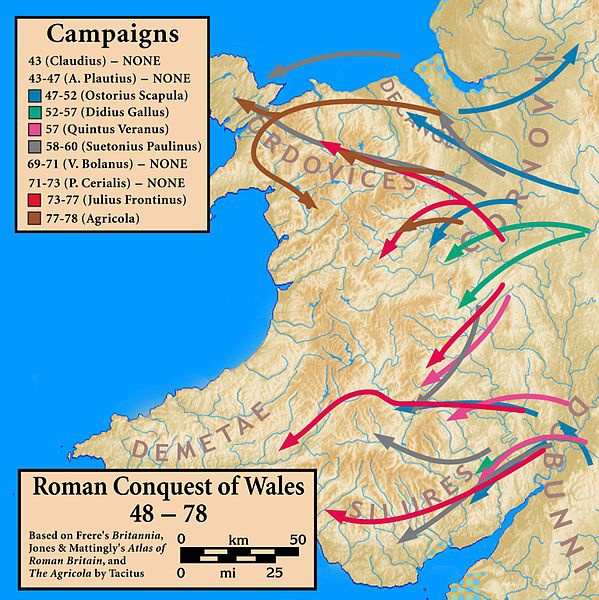
In 48 C.E. the Romans begin a campaign in the hill country of British Wales (ends 79), home of the dark-complected curly-haired Silures and sheep-raising Ordovices.
In 49 C.E. red-haired Boudicca (Boudica) (Boadicea) (Boudicea) (Buddug) (30-62) (30-62) (bodacious tatas?) marries King Prasutagus (d. 60) of the Iceni in Britain (modern-day Norfolk and Suffolk); the Roman legions reach Lincoln, Chester, and S Wales, and set up military bases in Chester, Kingsholm in Gloucestershire, and Wroxeter in Shropshire.
In 50 C.E. Roman soldiers found the town of Londinium (London) (Celtic llyn-din, "stronghold on the lake") (The City) (originally 677 acres) (modern-day pop. 8.8M/14M) on the N bank of the Thames River, 30 mi. from the estuary on the North Sea) on the site of a Celtic wooden bridge (where they built a Roman fort in 43?), beginning England's "liquid history"; four systems of Roman roads begin construction centering on London, with a 5th built later not centered there; the city of Bath in SW England (modern-day pop. 89K) emerges as a great place to, er, take a bath, use your Bath chair, and as a center of Roman fashion, show off your bod; a legend that mythical king Bath Dude, er, Bladud (father of King Lear) built Bath and dedicated the medicinal springs to the Roman goddess Minerva causes the Temple of Aquae Sulis to be conflated with her, and a large gilded bronze head of the babe survives to modern times; Romans occupy Cornwall until 250 C.E.?
In 51 C.E. after years of playing cat-and-mouse with them, the Romans take the stronghold of Ft. Llanymynech near Caerleon and Caerwent in Wales (near the Teme River), and Catuvellani king Caractacus (Caradoc) (Caradog) (10-54), last of the native British Celtic leaders to stand against Rome flees to the Brigantes, only to be betrayed by queen Catimandura, captured and sent along with his family to Rome and paraded around, after which he gives a speech that wins the respect of Rome and saves his life, and Claudius allows him to freely reside in Rome; meanwhile Roman cmdr. Publius Ostorius Scapula is so worn out that he also returns to Rome, is given no triumph, and soon dies - show us that Halloween trick or treat thing again, Caractacus baby, here's a goblet of wine?
In 52 C.E. Publius Ostorius Scapula dies unexpectedly, "worn out with care" (Tacitus), and the Silures defeat a legion led by Gaius Manlius Valens before new Roman gen. Aulus Didius Gallus arrives as Roman gov. #3 of Britain (until 57); meanwhile Brigantes king Venutius is jilted by his queen Cartimandua for what's-in-your-kilt Vellocatus, who elevates him to the kingship, causing Venutius to rebel against her; when the Romans back her up, he forsakes his loyalty to Rome and revolts against them too.
In 57 C.E. Quintus Veranius (12-57) succeeds Aulus Didius Gallus as Roman gov. #4 of Britain (until 57), launching a campaign against the pesky Silures in Wales, then dying within a year after bragging to Nero that he could have conquered all of Wales if he had two more years.
Greetings, monkeys? In 59 C.E. Gaius Suetonius Paulinus (Paullinus) becomes Roman gov. #5 of Britain (until 62), continuing the campaign against the Silures of Wales and attempting to subjugate the Druids and make the Britons adopt Roman gods.

In 60 C.E. Iceni King Prasutagus dies, and although he leaves his kingdom jointly to his two daughters and the Roman emperor in his will, the Romans don't recognize squats, er, women as heirs and seize his territory as if already theirs, scourge Iceni regent-queen Boudicca (Boudica) (Boadicea) (Boudicea) (Buddug) (30-62) (30-62) (Gaelic word for "victory"), a 6-ft.-tall red-haired Celt babe with bodacious tatas (or should have been) (who could kick everybody's butt and was the original Ice Queen way before C.S. Lewis stole it for his Narnia series) and rape her daughters, and try to enslave her people, calling in the ex-king's large outstanding loans (he had lived like a, er, king), confiscating lands and enslaving nobles, causing her to go nonlinear and vow to kick every Roman butt out of the island, gathering a large army of eager Celts, incl. the Iceni and Trinovantes of the Londinium area, drawing inspiration from the example of Arminius of the Cherusci, picking the direction of attack by releasing a hare and invoking British goddess of victory Andraste; meanwhile the Romans appoint Catus Decianus as procurator of Roman Britain, and his "rapacity" (Tacitus) fans the flames; meanwhile in an attempt to break the power of the Celtic Druids, the Romans under Gen. Gaius Suetonius Paulinus invade the Isle of Angelesey (Mons) in Wales, and are met by a dense-packed army of men and women along with chanting Druids, whom they slaughter, only to see the women pull out torches because they were standing on a funeral pyre as a sacrifice to their gods, scaring the superstitious Romans; they go on to destroy their shrine and sacred groves, until after hearing of Boudicca's revolt, they withdraw before consolidating their conquest. Architecture: In this decade Fishbourne Roman Palace

In ya face, nyanyanyanya? In 61 C.E. while Roman gov. of Britain Gaius Suetonius Paulinus is off campaigning on Druid stronghold Mona (Anglesey Island) in N Wales, red-haired bodacious Iceni ice queen Boudicca (Boudica) (Boadicea) (Boudicea) (Buddug) (30-62) destroys the Roman colony of Camulodunum (Colchester) (former Trinovanti capital) and its hated temple to emperor Claudius after sieging it for two days, and routs Quintus Petillius Cerialis and his Roman legion IX Hispana sent to relive it, with only Cerialis and a few cavalry escaping, during which time Suetonius returns along Watling St. and decides to evacuate Londinium, allowing the madass Celts to burn it to the ground, followed by Veralamium (St. Albans), killing a total of 70K-80K Romans in the three cities, taking no prisoners and enjoying impaling noblewomen on spikes with their breasts sewn to their mouths while they hold parties and sacrifice to Andraste; after inviting the old and the young to watch the coming massacre in a ring of wagons at the edge of the battle, Queen Boudicca's army of 100K-230K Celtic Britons shows what amateur hillbilly rednecks they are when they are instead massacred by a regrouped (in the West Midlands) prof. Roman army of 10K (the XIV Gemina and XX Valeria Victrix legions, but not Legio II Augusta of Poenius Postumus, who ignores his call) under gov. Gaius Suetonius Paulinus at the Battle of Watling St. (High Cross, Leicestershire?) (Manduessedum near modern-day Atherstone, Warwickshire?), where the Romans line up in front of a wood and force the Celts to send wave after wave into volleys of heavy javelins (pila), after which they form a wedge and rush them, causing the Celts to flee and get hung up on the wagons, allowing the Romans to slaughter them, killing 80K Celts vs. 400 Romans, and capturing the rest, after which Big Babe Bo freaks and takes poison; coward Postumus falls on his sword when he hears of the Roman V; Nero gets the good news after planning to withdraw all Roman forces from the island, and Londinium is quickly rebuilt by the Romans; the Romans rule Britain sans resistance until 410 C.E.
In 62 C.E. Gaius Julius Alpinus Classicianus (-65) replaces Catus Decianus (who fled to Gaul) as procurator of Britain (until 65), and he sends Nero a message that Suetonius' punitive policies might reignite the revolt, causing him to relieve Suetonius on trumped-up charges of losing some ships, and replace him with consul Publius Petronius Turpilianus (-68) (who quit in the middle of last year) as Roman gov. #6 of Britain (until 63), who tries to conciliate the natives - women drivers, hmmph?
In 63 C.E. Marcus Trebellius Maximus (consul in 56) becomes Roman gov. #7 of Britain (until 69), replacing Publius Petronius Turpilianus, who becomes supt. of aqueducts (curator aquarum) in Rome, receiving a triumph in 65; Maximus continues the conciliation policy toward the natives, refounding Camulodunum and pumping up the trade in Londinium; too bad, he has no military experience, and pissess off the army be leaving it idle; meanwhile "even the barbarians now learned to indulge pleasant vices" (Tacitus).
In 67 C.E. Britannia having been pacified, Roman Legion XIV Gemina is withdrawn, but the lack of opportunities for booty makes the remaining legions restless, leading to mutinies; meanwhile Roman gov. Marcus Trebellius Maximus feuds with Marcus Roscius Coelius, cmdr. of XX Valeria Victris, weakening his authority.
In 69 C.E. the British legion of XX Valeria Victrix under Marcus Roscius Coelius mutinies and forces Roman gov. Marcus Trebellius Maximus to flee, and after "escaping to a hiding place, was then allowed, at the cost of shame and humiliation to govern on sufferance. They arranged between them that the army should enjoy itself but should spare its general's life. So the mutiny came to an end without bloodshed" (Tacitus); Coelius then sends units to fight for Vitellius, who while he's still emperor appoints Marcus Vettius Bolanus as Roman gov. #8 of Britain (until 71), returning Legio XIV Gemina to Britain with him to punish them for siding with Otho.
In 70 C.E. Venutius leads a 2nd revolt of the Brigantes in Britain against Rome, and after gov. Marcus Vettius Bolanus can only send Queen Cartimandua some auxiliaries, she is evacuated, leaving the kingdom to Venutius; meanwhile Rome establishes control of the British plain S of the Humber and Mersey Rivers - so ferry cross the Mersey cause this here's the land I love, and here I'll stay?
In 70 C.E. the Romans build the small Duroliponte Fort on Castle Hill near modern-day Cambridge, England on the Cam River 50 mi. N of London (modern-day pop. 131K/280K), which becomes a town in about 120; after the Romans leave Britain in 410, the Anglo-Saxons begin occupying it, founding Grantebrycge (Granta-bridge) on the border between East Anglia and Middle Anglia; in 875 the Vikings occupy it, causing the pop. to grow, shifting from Castle Hill on the left bank to Quayside on the right bank; in the 10th cent. the Saxons return to power, striking coins calling the town "Grant"; in 1068 William I the Conqueror builds a castle on Castle Hill; the first town charter is granted by Henry I in 1120-31, giving it a monopoly on waterborne traffic and tolls; in 1209 Cambridge U. is founded by students running from hostile townsfolk in Oxford; the Romans build their first irrigation system in Britain around Duroliponte.
In 71 C.E. Quintus Petillius Cerialis (30-) becomes Roman gov. #9 of Britain (until 74), bringing Roman legion II Adiutrix with him, with Gnaeus Julius Agricola commanding XX Valeria Victrix, going on to campaign against the Brigantes in N England; meanwhile Petillius Cerealis becomes Roman proconsul of Brittania (until 74), and begins a military advance into Wales and Scotland; the Roman camp of Eboracum (York) is set up at the junction of the rivers Ouse and Foss to combat the Brigantes - 800 years later and they're wearing horns there?

In 74 C.E. Sextus Iulius (Julius) Frontinus (40-103) becomes Roman gov. #10 of Britain (until 78), going on to campaign against the pesky Silures and other tribes in Wales and establish a new base in Caerleon (Isca Augusta) for Legio II Augusta along with a network of smaller forts at 15-20km intervals, incl. a fort at Luentinum which guards the gold mines of Dolaucothi (Ogofau) in the Cothi River Valley in modern-day Carmarthenshire, Wales.

In 77 C.E. Roman gen. Gnaeus Julius Agricola (40-93) (father-in-law of historian Tacitus) becomes Roman gov. #11 of Britain (until 85), launching another campaign to extend Roman power N of the Clyde-Forth line, subduing the Isle of Anglesey in Wales, and building the Roman fort at Caer Gybi in Holyhead; Tacitus marries his daughter.
In 79 C.E. the Roman legions under three of their best generals conquer Wales and partially subdue the Celtic Brigantes in Yorkshire; Gnaeus Julius Agricola, Roman gov. of Britain founds the fort of Mamucium (Lat. "breast-like town") (Mancunium) near the confluence of the Medlock and Irwell Rivers between the Pennine Mts. on the N and E, and the Cheshire Plain on the S to protect against the remaining Brigantes; the fort is abandoned in the late 4th cent. C.E.; sometime after the 1066 Norman Conquest lays the area waste, the town of Manchester (modern-day pop. 540K/2.8M) grows up around the ruins; in this cent. the Roman towns of Lincoln (Lindon) (Lindum) (ca. 48) (modern-day pop. 130K/190K), Bath (Aquae Sulis) (ca. 60) (modern-day pop. 89K) (known for 120F/49C mineral springs), and Leicester (Ratae) on the Soar River (ca. 50) (modern-day pop 348K/1.39M) are also founded, along with Cardiff (ca. 75) (modern-day pop. 361K/1.1M) in Wales on the N coast of the Bristol Channel at the mouth of the Taff River.
In 82 C.E. Roman gov. of Britain Gnaeus Julius Agricola abandons plans to invade Ireland after a legion of German troops stationed in Galloway (Gael. "foreign Gael") (in modern-day SW Scotland) mutinies; meanwhile Inchtuthil, AKA Pinnata Castra (Lat. "fortress on the wing) and Victoria is built as the most northerly Roman fort in Caledonia on the N bank of the Tay River SW of modern-day Blairgowrie, Scotland; too bad, it is evacuated by 87 so that the troops can fight the Dacian invasion of Moesia; in the 1950s a cache of 750K iron nails is uncovered, along with other iron objects.
Bad day for the Erin Go Bragh crowd? In 84 C.E. Rome declares war on the Caledonian Picts (N of the Tay River), a tribal confederation newly united under chieftain Calgacus (Galgacus) (Gael. "swordsman") (-84), defeating them at the Battle of Mons Graupius at Ardoch in Aberdeenshire in E Scotland after Calgacus whips his men up with the immortal soundbyte (fake?): "We, the most distant dwellers upon the Earth, the last of the free, have been shielded until now by our remoteness and by the obscurity which has shrouded our name. Now, the farthest bounds of Britain lie open to our enemies. There are no more nations beyond us only waves, and rocks, and the Romans. Pillagers of the world, they have exhausted the land by their indiscriminate plunder. East and west alike have failed to satisfy them. To robbery, butchery and rapine, they give the lying name 'government'. They create a desert and call it peace. Which will you choose, to follow me into battle, or to submit to taxation, labor in the mines and all the other tribulations of slavery? Whether you are to endure these forever or take a quick revenge, this battle must decide"; 10K Picts are KIA, incl. Calgacus; the Grampian Mountains/Hills (Gael. "Am Monadh") (the Scottish Highlands) are named after the site.
The Celts get a much-needed breather? In 85 C.E. Roman British gov. Agricola is recalled to Rome in the midst of his campaign to extend Roman power N to the ocean, allowing rebellious Britons to join with the Picts; his campaign is not renewed, but he does establish garrisons on the Forth-Clyde line, although leaving too many natives unsubdued in his rear, and Sallustius Lucullus (-89) (son of British prince Amminius, son of Cunobelinus, who fled to Rome about 40 C.E.?) becomes Roman gov. #12 of Britain (until 89).
On Jan. 1, 89 C.E. before Domitian can finish the Dacians off, Lucius Antonius Saturninus, Roman legate of upper Germany (Germania Superior) (Mainz) rebels and declares himself emperor, and the Chatti use the opportunity to invade the Rhineland, but Domitian puts down the revolt and forces them to withdraw; the Quadi, Suevi (Sueves) Marcomanni, and Jazyges N of the Danube revolt, and he makes peace with the Dacians, ending Domitian's Second Dacian War (began 88), then returns to Rome and receives a triumph; meanwhile Sallustius Lucullus is executed by order of Domitian for naming a new lance after himself (really for supporting Lucius Antonius Saturninus?), after which there is a vacuum in Britain until 92.
In 92 C.E. Roman suffect consul Publius Metilius Nepos (45-127) becomes Roman gov. #13 of Britain (until 98), going on to found the Roman colonies of Lincoln (Colonia Domitiana Lindensium) and Gloucester (Colonia Nervia Glevensium) for retired soldiers.
In 97 C.E. former suffect consul (93) Tiberius Avidius Quietus (-107) (friend of Plutarch and Pliny the Elder) becomes Roman gov. #14 of Britain (until 100).
Jesus missed the New World, and look what happened? In the 1st cent C.E. the Britons begin adopting the Roman custom of shaving and wearing their hair short, and add the Roman Nov. 1 festival in honor of Pomona, goddess of fruits to the Celtic festival of Halloween, later evolving into ducking for apples and the illumination of carved pumpkins with candles; the Christians later turn Nov. 1 into Hallowmas (Allhallowmas) (Allhallows) (All Saints') Day and Nov. 2 into All Souls' Day in an attempt at Catholic-style get-em-in-anyway-u-can conversion.
About 100 C.E. Roman soldiers stationed at Ft. Vindolana in Celt-filled Britain drink local beers made by brewer Atrecus et al.
In 100 C.E. Marcus Ulpius Trajanus and Sextus Julius Frontinus; Pliny the Younger (62-113) becomes consul, writing a Panegyric to Trajan; Lucius Neratius Marcellus (friend of Pliny the Younger) becomes Roman gov. #15 of Britain (until 103), fighting in N Britain and fixing the frontier at the line of the Stanegate (stone road) from Carlisle to Corbridge.
In 108 C.E. Roman legion IX Hispana leaves Britain.
In 115 C.E. Marcus Appius (Atillius) Bradua becomes Roman gov. of Britain #16 (until 118), leaving an inscription in Gwynedd mentioning his name.
In 115 C.E. the Britons revolt and annihilate the Roman garrison in Eboracum (York).
In 118 C.E. Quintus Pompeius Falco, former gov. of Moesia Inferior in 116-7 becomes Roman gov. #17 of Britain (until 122), immediately suppressing a revolt of the Brigantes and/or Selgovae of N Britain and S Caledonia, according to an inscription in Jarrow.
In 120 C.E. Chedworth Villa is built by the Romans about this time in Corinium (Cirencester in Gloucester) (2nd largest town in Britain), featuring heated rooms and an elaborate mosaic floor; 50 other villas eventually dot the Cotswold Hills around the town.

In 122 C.E. Roman Emperor (117-38) Hadrian (Publius Aelius Hadrianus) (76-138) comes in person to Britain with legion VI Victor to complete the conquest of the Pennines, the backbone of Britain (in N England from the Cheviot Hills S to Derbyshire and Staffordshire, max. alt. 3K ft.), taking up where Agricola left off in 85 and decreeing numerous reforms, starting with replacing Quintus Pompeius Falco with his friend (kinsman?) Aulus Platorius Nepos as Roman gov. #18 (until 125); tired of trying to subdue the wild northern Celtic naked painted-up Halloween-face red-haired Caledonian (Pictish) tribes, Hadrian orders the construction of the 73.5-mi.-long 20-ft.-high, 8-ft.-thick turf rampart Hadrian's Wall (Vallum Hadriani) (Roman Wall, Picts' Wall) to cut off Scotland from the rest of Britain (finished 128); it runs from Bowness to Wallsend across the isthmus between the mouth of the Tyne River (Newcastle-upon-Tyne) on the E and Solway Firth (Firth = a low-walled Fjord?) on the Irish Sea to the W along the Whin Sill (sheet of volcanic dolerite) (just S of where Scotland sticks out to the W like an ear), with a rampart walk on top, a 30-ft. moat (fosse) on the N side and a military road on the S side, with 16 forts plus mile towers (castles) every 300 yards, manned by up to 13K infantry and 5K cavalry for cents. - T.L. Whin-sill-low? Roman consuls: Manius Acilius Aviola, ? Cornelius Pansa.
In 125 C.E. after he spends too much on frontier fortifications, Aulus Platorius Nepos is replaced by Trebius Germanus as Roman gov. of Britain #19 (until 131).
In 128 C.E. 73.5-mi. Hadrian's Wall (begun 122) is completed, with milecastles every Roman mile, and 17 forts garrisoned by 5K cavalry and 13K infantry; ironically, the wall is rarely needed for a defense line and instead becomes a series of produce markets and custom posts for traders on both sides until the Romans leave Britain in the 4th cent. - like any border town, a nice place to get some Vitamin P?
In 131 C.E. Sextus Julius Severus becomes Roman gov. of Britain #20 (until 133).


In 132 C.E. Roman emperor (117-38) Hadrian (76-138) begins the Temple of Jupiter Capitolinus in Jerusalem on the site of the ruined Jewish Holy Temple, center of everything that is Jewish, with a dangly statue of a naked man-god and everything that Jehovah is against, sparking the Bar Kokhba (Kochba) (Cocheba) Uprising (132-6) of Simon (Shimon) Bar Kokhba (Kochba) (Cocheba) (-135) (Heb. "Son of a Star") (real name Bar/Ben Kosiba or Kozebah) against Rome in Judea, whose guerrilla fighters surprise the Roman legions, take over Judea, set up an independent nation, and try to rebuild the Temple of Jerusalem; the old fortress of Herodium near Bethlehem is briefly reoccupied; Bar Kokhba overstamps Roman coins to make Jewish ones; pissed-off Hadrian decides to make an example of the pesky Jews and sends 12 divs. from as far away as Britain to totally wipe them out of Judea, along with his best generals; meanwhile Bar Kochba's rebels are only a minority of the Jewish pop., who seem to have been getting along with the Romans and just wanted to make money and live the good life?
In 133 C.E. Sextus Julius Severus is transferred from Britain to Judaea to suppress the Bar Kochba Revolt, becoming the first top gen. sent by Hadrian, according to Cassius Dio; Roman consul Publius Mummius Sisenna becomes Roman gov. of Britain #21 (until 138), going on to finish Hadrian's Wall.

In 138 C.E. Numidian (Algerian) native (son of a Libyan Berber landowner) (white?) Quintus Lollius Urbicus (101-151), veteran of the Bar Kochba Revolt and former gov. of Germania Inferior is appointed by Antoninus Pius as Roman gov. of Britain #22 (until 142), with orders to forget Hadrian's containment policy and begin the reconquest of Lower Scotland N of Hadrian's Wall, which he begins in Corbridge in Northumberland behind Hadrian's Wall, striking NNW on Dere Street towards the Firth of Forth with his Legion II Augusta, taking on the Dumnonii tribe of South Strathclyde, and the British Votadini (Guotodiri) (Gododdin) tribe between Hadrian's Wall and the Antonine Wall.

In 142 C.E. Roman gov. of Britain Quintus Lollius Urbicus issues coins celebrating his big V over the Brigantes in Britain after defeating them with Legio II Augusta and reoccupying S Scotland; meanwhile on orders of Emperor Antninus Pius, the 39-mi. 10-ft.-high 16-ft.-wide turf-timber Antonine Wall (Forth-Clyde Rampart) in Caledonia 100 mi. N of Hadrian's Wall on the narrow neck of land from Bo'ness, from Falkirk ("variegated church") on the Firth of Forth to Old Kilpatrick in West Dunbartonshire on the Firth of Clyde is begun by Quintus Lollius Urbicus as the new frontier, with 16 forts spaced at 2 mi. intervals linked by the Military Way; a deep ditch is built on the N side, along with a wooden palisade on top of the turf; it is finished in 154; too bad, it is is abandoned in 162, although the area between the two walls serves as a first-line defense area against the Picts for the duration of the Roman occupation, and becomes the turf of the Brythonic tribes, who act as buffer states with the slightly different Picts and Gaels; meanwhile Urbicus goes after the Novantae, the last lowland Pictish tribe, who hold the Dumfries and Galloway peninsula.
In 145 C.E. Gnaeus Papirius Aelianus becomes Roman gov. of Britain #23 (until 147), continuing the occupation of Lowland Scotland.


In 154 C.E. former suffect consul Gnaeus Julius Verus becomes Roman gov. #24 of Britain (until 158), bringing troops from Germany and quelling a revolt by the Brigantes that had caused the Antonine Wall to be abandoned by 162 and a slaughter at the Roman fort at Newstead, going on to strip them of much of their territory; meanwhile the Romans under Antoninus Pius begin minting a bronze sestertius with a figure of Britannia, which is so cool that it is used on British coins for cents. after Rome falls.
In 155 C.E. peace is finally established S of Hadrian's Wall (the N boundary of the Roman province of Britannia) after a revolt is quelled; fighting continues N of the wall until the early 3rd cent.
In 158 C.E. Longinus (Longus) (Lentulus) (partial name) becomes Roman gov. #25 of Britain (until 161).
In 161 C.E. Marcus Statius Priscus Licinius Italicus, an equestrian decorated by Emperor Hadrian for service during the Bar Kokhba Rebellion who rose to gov. of Dacia in 157-8, consul in 159, and gov. of Moesia Superior (160-1) becomes Roman gov. #26 of Britain (until 163).
In 163 C.E. Sextus Calpurnius Agricula, former gov. of Germania Superior in 158 becomes Roman gov. of Britain #27 (until 168), going on to suppress revolts in N Britain, rebuild the fort at Corbridge, and withdraw troops S towards Hadrian's Wall for defense; meanwhile the pesky natives damage the Roman forum in Viroconium Cornoviorum (Wroxeter), and burn most of Verulamium (SW of modern-day St. Albans).
In 168 C.E. Sextus Calpurnius Agricula leaves Britain to become gov. of Lower Moesia, and Parthian War vet Quintus Anistius Adventus (120-76) and former gov. of Germania Inferior becomes Roman gov. of Britain #28 (until 178).
In 175 C.E. a regiment of 5.5K Sarmatian cavalry troops arrive in Britain to help hold the Roman forts.

They worship the Marlboro Man? In 177 C.E. Smyrna-born (St.) Irenaeus (125-203) was appointed bishop of Lugdunum (Lyons) to attempt the conversion of the Druidic Gauls, and goes to Rome to plead with Eleutherius to deal with the ascetic Montanist movement in Phrygia, which extols virginity, uses Hebrews 6:4-6 to claim that sins committed after baptism cannot be forgiven, and whose prophets go into ecstasy and speak with God's voice in the first person, claiming to supersede the Gospels, which later turns on Romanized Carthaginian Tertullian (160-230), who becomes a Montanist and writes De Ecstasi; followers of Eastern Christianity are driven across the English Channel during the persecutions of Lyons, carrying it with them and founding the Celtic Church in Britain, which takes until 1172 to conform with the Roman Catholic Church in rites and ceremonies (664 in England, 1153 in Scotland and Ireland).
In 178 C.E. Caerellius Priscus becomes Roman gov. of Britain #29 (until 180).
In 180 C.E. a revolt of the Maeatae (ends 184), a confederation of the Dumnonii tribe of South Strathclyde and the Votadini, Selgovae, and Novantae tribes between Hadrian's Wall and the Antonine Wall begins with the assassination of gov. Caerellius Priscus and all his guards while inspecting Hadrian's Wall, causing new Roman gov. #30 of Britain (until ?) Ulpius Marcellus to be rushed in with the heavy hardware, later being called the most serious war of Commodus' reign.
In 184 C.E. Ulpius Marcellus quells the native Celtic revolt, causing commemorative coins to be issued and Commodus to assume the title of Britannicus; sporadic fighting continues for several more years, with the Romans ultimately abandoning the Antonine Wall and forts to the N of it at Newstead et al. and retreating to Hadrian's Wall.
In 186 C.E. after a mutiny breaks out in Britain, Publius Helvius Pertinax (126-93) becomes Roman gov. of Britain #31 (until 187), surviving an attack on his bodyguard which leaves him for dead, after which he punishes the mutineers severely; too bad, he alienates his soldiers by being too kind and curteous, causing his forced resignation.
In 187 C.E. African-born Decimus Clodius Albinus (150-97) becomes Roman gov. #32 of Britain (until 197).

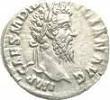

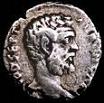
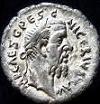
On Jan. 1, 193 C.E. the Senate ratifies the election of experienced, strict, and frugal Roman emperor (since 192) Pertinax (b. 126), and flushes, er, brands the memory of Commodus with eternal infamy, taking away his honors and erasing his titles from public monuments, demolishing his statues, and dragging his body with a hook into the dressing room of the gladiators, but Pertinax insists on giving him the last rites, with Commodus' brother-in-law Claudius Pompeianus giving the oration; Pertinax gives his personal fortune to his wife and son, refuses to elevate them to Augusta and Caesar, rights the wrongs caused by Commodus (who leaves 8K pounds in the treasury, compared to 22M left by Pius), and holds frugal banquets which are ridiculed by those who are used to the elaborate shindigs of his predecessor; too bad, when they find he's going to reform them, the Pretorian Guards, led by Laetus begin to plot against him, and on Jan. 3 attempt to acclaim a senator as emperor, but he chickens out, then try again with consul Sosius Falco, whom Pertinax pardons; on Mar. 28 200-300 Praetorian Guards break into his palace and murder him, carrying his head back to camp on a lance; on Mar. 28 he is succeeded by Roman Sen. Marcus Didius Salvius Julianus Severus (Didius Julianus) (137-93) (relative of Antonine jurist Salvius Julianus), who is declared Roman emperor #20 after winning an auction at the Praetorian camp (25K sesterces per soldier) (6250 drachms) (200 pounds sterling), outbidding Sulpicius, father-in-law of Pertinax, who sees the latter's head carried into the camp on a lance; when the news spreads to the legions, civil war results, with Didius Clodius Albinus (150-97), gov. of Britain (since 192), Lucius Septimius Severus (145-211), gov. of upper Pannonia (Apr. 9) (the winner), and Gaius Pescennius Niger (140-94), gov. of Syria (Apr. 19) all declaring themselves emperor; Severus marches on Rome, causing Didius Julianus to be executed on June 1 by order of the Senate as he approaches within 50 mi.; Severus then strikes a deal with Albinus promising to make him Caesar, then begins the siege of Byzantium in autumn, meanwhile defeating Niger in the Battle of Cyzicus and Battle of Nicaea in Dec.
Do the moves, do the moves, let's see ya do the moves? On Feb. 19, 197 Clodius Albinus (b. 150) is defeated by Severus and Caracalla at the Battle of Lugdunum (Lyons) in a bloody battle (150K on each side?), and commits suicide; the city is sacked and never recovers its prosperity; Albinus' supporters in Gaul and Italy are executed; (Lucius) Virius Lupus (160-206) becomes Roman gov. of Britain #33 (until 202), rushing to stabilize the rebellion-torn province and being forced to buy peace from the pesky Maeatae to keep them from allying with the Caledonian Confederacy; he goes on to slowly restore forts in the Pennines to Roman control, but doesn't get around to rebuilding Hadrian's Wall; Sextus Varius Marcellus (165-215) is sent from Syria to assist him as Roman procurator (tax collector), signaling a later division of Britain into two provinces?
In 202 C.E. Marcus Antius Crescens Calpurnianus, former gov. of Macedonia becomes Roman gov. of Britain #34 (until 203), planning the future division of Britain into two provinces in 212.
In 203 C.E. Gaius Valerius Pudens, former gov. of Germania Inferior becomes Roman gov. #35 of Britain (until 206), going on to build new barracks at Bainbridge fort to deal with revolts by the Brigantes.
In 206 C.E. Numidian-born Lucius Alfenus Senecio, former gov. of syria in 200-5 becomes Roman gov. of Britain #36 (until 207), becoming the last gov. of undivided Roman Britain, finishing the reoccupation of the province and its frontiers, then going on to strike N of Hadrian's Wall against the pesky Maeatae and Caledonian Confederacy and erecting a victory monument in Benwell W of modern-day Newcastle upon Tyne. King Abgar IX of Edessa embraces the Christian faith, and makes it the official religion; the legend of King
In 208 C.E. after British gov. Lucius Alfenus Senecio requests reinforcements, complaining about barbarians overruning the land, taking booty and causing destruction, emperor Septimius Severus arrives in person with his youngest son Publius Septimius Geta, and invades Caledonia (Scotland), restoring Roman military supremacy in N England; he withdraws from the Antonine Wall again to Hadrian's Wall, rebuilding it with stone and fixing it as the final frontier with the pick-a-fight Picts (finished 211).
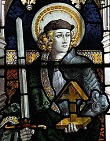
On June 22, 209 C.E. St. Alban, a former pagan Roman soldier in Britain is beheaded in Verulamium (modern-day St. Albans), becoming the first British (English) Christian martyr.

On Feb. 4, 211 C.E. Roman emperor (since Apr. 14, 193) Septimius Severus (b. 145) dies in Eboracum (York) in Britain after doing a great job of increasing the influence of lawyers in the Roman admin., and is succeeded by his eldest son and Augustus Caracalla (Caracallus) (Marcus Aurelius Severus Antoninus Augustus) (188-217) (nicknamed for the long Gallic cloak he wears) as Roman emperor #22 (until 217), beginning "six years under the Gallic cloak"; Severus' dying words to his sons: "Enrich the soldiers, despise everyone else"; upon his accession Caracalla gets his younger brother Geta (b. 189) elevated to Roman co-emperor #23, then gets him killed on Dec. 26, along with the jurist Papinian and 20K of his followers, and increases soldiers' pay, issuing a new coin, the Antoninianus, with a face value of two denarii but a weight of only 1-2/3 denarii to pay the difference; before leaving Britain to press his claim to the throne, Caracalla divides Britannia into Britannia Inferior (S) and Britannia Superior (N), each with its own half-pint Roman gov.

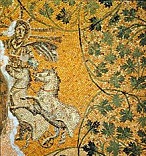
In Feb.-Mar. 274 C.E. Roman Emperor Aurelian defeats pretenders Tetricus I and Tetricus II at the Battle of Chalons-sur-Marne in Gaul, sparing their lives and setting daddy up as gov. of S Italy, and reintegrates Gallia (Gaul) and Britannia (Britain) into the Roman Empire, then celebrates a 2nd triumph in Rome, adorned by his trophies Zenobia and Tetricus; on Dec. 25 he orders the cult of Sol Invictus (Lat. "Unconquered Sun") made official, and inaugurates the Temple of Sol Invictus in Rome; all emperors go on to celebrate his birthday until Constantine, who goes Christian, after which the cult lasts until the 5th cent.; the last inscription referring to Sol Invictus is made in 387; Aurelian establishes trust in the monetary system, single-handedly restoring the Roman Empire while making Dec. 25 a commercial holiday, giving the Christians a burning desire to steal the day for their Son-god's b-day?; or did the pagans steal it from them?
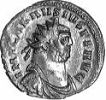
In 286 C.E. the Bagaudae (vagrant rebel German pirates) under Amandus and Aelianus are defeated by Maximian in Gaul with the help of Roman fleet cmdr. (based in Gessoriacum, modern-day Boulogne) Mausaeus Carausius (Carasius) (-293) (a German), who is caught stealing their spoil, hears of a death warrant out on him, lets it go to his head, and seizes Britain, declaring himself Augustus, hoping for help from Germans settled in England, and severs Britain from the Roman Empire for seven years.
In 288 C.E. Roman emperor Maximian goes to Britain to oust Carausius.




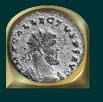
In 293 C.E. Diocletian attempts to reform the admin. of the empire, dividing it into E and W parts, each with two prefectures or divisions (Gaul and Italy in the W, Illyricum and the East in the E), each with its own praetorian prefect, further divided into several dioceses under vicars (vicarii); he appoints Serbian-born Constantius I Chlorus (the Pale) (Flavius Valerius Constantius Chlorus) (250-306) (father of Constantine I the Great) as 2nd Caesar of the West, and Galerius (Gaius Galerius Valerius Maximianus) (250-311) as 2nd Caesar of the East, beginning the Roman Tetrarchy; both Caesars have to marry one of Diocletian's daughters, and Constantius I has to divorce his sure-to-get-gas wife (St.) Helena (248-329) (alleging non-patrician origin) before marrying candy-pants Theodora Augusta; Galerius governs most of the Balkan provinces, while Constantius governs Gaul, immediately going after Carausius and driving him back to Britain, where he is murdered by his minister Alectus (-296), who dons his purple - give it to me momma?
In 296 C.E. Alectus is defeated and killed by Emperor Constantius, and Roman rule of Britain is restored.
In 296 C.E. the Picts naked blue-painted Celtic people of Britain are first mentioned in Roman lit. - good morning, Tiger?
In the 4th cent. C.E. Scotland is divided into five kingdoms: the Picts, Gaels, Britons, Angles, and Norse.
In the first half-cent. of the 4th cent. C.E. Roman villa construction on the plain of Britain reaches its height, with the chief towns being Verulamium (St. Albans), Colchester, Lincoln, Gloucester, and York, and Romanization becomes widespread, with artisans and clothworkers becoming famous on the Continent, and Christianity making inroads.
In the 4th cent. C.E. to 1000 C.E. Anglo-Saxons have much greater genetic diversity than modern-day British; the Ivory Bangle Lady, with North African blood leaves a stone tomb in York indicating she's at the top of society.


On July 25, 306 C.E. Roman emperor (since 305) Constantius I Chlorus (b. 250) dies in Eburacum (York), Britain, and his soldiers proclaim his son Constantine I (the Great) (Flavius Valerius Aurelius Constantinus) (271-337) as Augustus (Roman emperor #57) at Eboracum, where he had earlier fled from Galerius to his father, but makes an agreement with Galerius to become Caesar, while Galerius raises Severus II to Augustus; Severus II announces plans to abolish the Praetorian Guards; on Oct. 28 Maximian's son Marcus Aurelius Valerius Maxentius (279-312), with the support of the Senate, Praetorians, and people of Rome is hailed as princeps (Roman emperor #58) (until 312), and he calls his father out of retirement to resume as Augustus with himself as Caesar; Severus II marches on Rome, his troops are bribed and rebel, he surrenders to Maximian, and is later executed by Maxentius; Maximian seeks refuge from Galerius in Constantine's court in Gaul, where the latter recognizes him as senior Augustus and plans to marry his daughter Fausta.
In 312 C.E. Roman lit. (Nomina Provinciarum Omnium) (Names of All the Provinces) first describes the pesky warring tribe in Ireland as the Scoti (Scotti) (Scots), who harry the Roman province of Britannia and reach as far as the coast of Gaul - the squats? the skotes? the skwotes? the skahts?
In the 350s C.E. the Scots (Irish Celts settling in W Scotland) increase their attacks on Hadrian's Wall and the coast of Wales; the German Franks and Saxons simultaneously increase their piratical raids on the E British coast, cracking the Roman defenses of the Roman Count of the Saxon Shore; the Franks are known for their height and blue Germanic eyes, the way the kings are elevated on a shield during their coronation and wear long hair, while the subjects shave the backs of their heads and comb their bangs over their foreheads and only wear two small whiskers?
About 350 C.E. Roman coins are found in the Western Isles of the Outer Hebrides dating to this time.
In 359 C.E. C.E. Shapur II of Persia invades Syria, and sieges Amida for 73 days, taking the city after losing 30K men to a valiant defense; meanwhile Roman emperor Julian's cavalry gen. Lupicinus is sent to Britain to fight the Scots and Picts, while his prefect Florentius is sent to Vienne to assess the tribute; Constantius II sends messengers to Julian ordering him to hand over his main forces to be sent E to fight the Persians, and he stalls, calling for Florentius, who refuses to come, leaving him with no choice but to approve the order and send them off, permitting them to take their wives and families.
In 360 C.E. a sudden series of coordinated raids of Wales by Irish, Anglo-Saxons, and Picts begins; the Irish colonize the Isle of Man.
In 367 C.E. the Great Conspiracy begins in Roman Britain after Emperor Magnentius' big D at the 351 Battle of Mursa Major, giving the native tribes their chance to rebel; too bad, they are quelled by next year.
In 368 C.E. the Pict, Scot, and Saxon tribes attack and plunder London (known as Augusta); the Picts and Scots are driven back from Britain, and the province of Valentia is formed.
In the 370s C.E. pagan Anglo-Saxons from Germany and Scandinavia invade Latin-Celtic Britain, along with Irish and Picts, causing the Romans under gen. Magnus Maxentius to abandon the Deva Victrix fort of Chester on the River Dee near Wales (founded 79).
In the 380s C.E. Roman emperor Magnus Maximus puts Padarn Beisrudd (Redcoat) (Gael. "Scarlet Robe") (of British descent) in command of Votadini troops in the Clackmannanshire region of Scotland; he later passes command to his son Edern (Lat. Aeturnus), father of Cunedda, founder of the Kingdom of Gwynedd; Redocat's coat becomes one of the Thirteen Treasures of the Island of Britain, said to fit perfectly any brave man, but not cowards.


On Oct. 21, 383 C.E. Roman-British Christian virgin princess (St.) Ursula (Lat. "little female bear") (b. ?) (feast day: Oct. 21; patron of archers, orphans, and students) is allegedly beheaded along with fellow British virgin princess (St.) Odilia (Odile) (Ottilia) of Cologne (feast day: July 18; patroness of good eyesight) and 11K virgins by the pesky Huns at Colonia Agrippina (Cologne); Ursula's bones are allegedly ID'd by nun Elizabeth of Schonau in the early 12th cent. during the digging of a cemetery, making her the patron saint of maidens; since the story is obviously all made-up, she is removed from the gen. calendar of saints in 1969.

In 383 C.E. the Romans in Gaul under Roman emperor (since 367) Gratian (b. 359) fight the Alamanni; meanwhile Spanish-born Roman gen. Magnus Maximus (Maximianus) (335-88), cmdr. of the Roman army in Britain is proclaimed Roman emperor #78 (until 388) by his troops, and crosses into Gaul to confront Gratian, who is betrayed, flees, and is killed in Lugdunum (Lyons) on Aug. 25, after which Magnus Maximus seizes Gaul, becoming the last really powerful emperor of the West, ruling Britain, Gaul, Spain, and Africa; Theodosius I recognizes him.
On July 28, 388 C.E. after regrouping, Valentinian II marches W and defeats and executes Roman emperor (since 383) Magnus Maximus (b. 355) in Aquileia; since his British garrisons are never restored to their full complement, Roman power in Britain is weakened.
In 393 C.E. Irish raids begin on the N (Pict) and W (Welsh) British coasts - the Squats ah ah-cumin'?
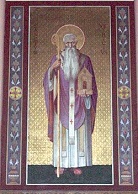
In 396 C.E. Rouen bishop (393-407) St. Victricius of Rouen (330-407) visits Britain to settle a dispute among the bishops, is accused of heresy, but is defended by Pope Innocent I, receiving the decretal Liber Regularum, along with relics of Vitalis and Agricola, later describing Britin as a wild and hostile place plagued with paganism and heresy in contrast to the holy land of Italy; he meets with freshly escaped Irish slave St. Patrick?
In the 5th cent. C.E. the Western Roman Empire collapses while you watch; pop.: 50M; Germans in the Roman army: 30%-50% (vs. 5-15% in 200). At the beginning of the 5th cent. C.E. the Arian Visigoths are in Thrace; the Ostrogoths are on the Russian steppes as far E as the Don; the Huns are in Pannonia; the East Germanic Arian Vandals (originally from modern-day Poland between the Oder and Vistula Rivers) control C and E Spain; the Iranian Alans (Alani) (Aryan) tribe from SE Russia controls SW Spain; the Burgundians rule the S shore of the Baltic Sea between the Elbe and Vistula, centered on the Oder River; the Suevi (Suebi) (Suavi) (Suevians) ("one's own") (originally from between the Oder and Elbe Ribers) control NW Spain, as well as the land S of the Burgundians between the Oder and Elbe Rivers; the Germanic Angles rule the Anglia Peninsula in the Anglia River Valley (branch of the Suevi River) in the N Low Countries S of Denmark (Jutland) (Baltic shore of modern-day Schleswig-Holstein); the Germanic Saxons (originally from Schleswig-Holstein) rule the S shore of the North Sea between the Rhine and the Elbe Rivers; the Germanic Jutes (Luti) (Lutae) rule Denmark (Jutland); the Germanic confederation of Sicambrian Franks (Ger. "freemen") control the E bank of the Rhine River between Worms and Cologne, getting pushed by the Huns over the Rhine River into modern-day Belgium and N France in Gaul near the Ardennes Forest, in the region later known as the Kingdom of Austrasia, featuring the core region of Lorraine; the Germanic Lombards (Langobards) ("long beards") (originally from S Sweden) control the lands W of the Huns above the Danube River down almost to the North Sea between the Rhine and Elbe River (N of the Franks); the Slavs control E Europe and Russia, incl. Slovakia; the (Aryan?) Serbs control the shore of the Black Sea.
In the 5th cent. C.E. the Roman Catholic Church divides up the Roman Empire for admin. purposes: the Diocese of Gaul, with the Rhine River as the N boundary; the Diocese of Spain, incl. Portugal and Morocco; the Diocese of Britain, which excludes Scotia (modern Ireland) and Pictland (modern Scotland); the Prefecture of Italy, divided into the N Diocese of Italy, run by the Langobards, and the S Diocese of Rowe (Goth Italy), incl. Sicily, Corsica, Sardinia, and the Diocese of Africa; the Prefecture of Illyricum incl. Greece, Albania ("land of the eagle") and Yugoslavia W of the Danube; the Prefecture of the East incl. Turkey through Egypt.
In 405 C.E. Irish raids on Britain end after Niall Noigiallach (Gael. "Niall of the Nine Hostages"), Celtic high king of Ireland (since 378) is KIA at sea; his descendants are called the Ui Neill; his son Eoghan mac Neill (Eógan mac Néill) (-465) (close friend of St. Patrick) of Inishowen in W Ulster in modern-day County Donegal founds the Cenel nEogain (Cenél nEógain) branch of the Northern Ui Neill along with the overkingdom of Ailech (Gael. "the North") (In Fochla) (In Tuaiscert) based in the Grianan of Aileach ring-shaped stone hillfort on top of Greenan Mountain in modern-day County Donegal, whose last king is Mael Sechlainn mac Murichertaig Mac Lochlainn (1177-85), changing to the kings of Tir Eoghain (Gael. "land of Eoghan/Owen") in counties Tyrone, Armagh, Down, Antrim, Londonerry, and NW Donegal as well as Argyll in Scotland, which end with Aed Buide Ua Neill (-1283).

In 407 C.E. Constantine III (Bendigeit Custennin) (-411) leads a revolt in Britain, claiming the purple as Roman emperor #82 (until 411), and going to Gaul with most of the remaining regular forces, deciding to permanently abandon Britain and let Picts from the N, and Angles, Saxons, and Jutes from Germany (originally hired as mercenaries by the Brythons) fight it out; Visigoth king Alaric I in Noricum is paid a huge sum of gold by the Roman Senate to take on the usurper; meanwhile barbarian Gen. Stilicho falls out of favor in Constantinople, and his head is on the chopping block.
In 409 C.E. the last Romans are expelled by the Britons, kissing Londinium (once 30K in pop.) and all the rest goodbye, and giving the starving Angles, Saxons, and Jutes of NW Europe a green light, with 200K eventually arriving just as the beleaguered Celts (Picts) begin raiding S while the new-kid-on-the-block Saxons mass for an attack up the Shit, er, Thames River; the line of Roman duces (defending generals) of Britain ends, and Coel Hen (350-420) (later known as Old King Cole) becomes the first Celtic high king of Brittonic-speaking N Britain and S Scotland, ruling from Eburacum (York); Hadrian's Wall is abandoned, and local builders begin scavenging its cut stones, leaving only a remnant by modern times; despite the true owners of the island, the Celts coming out of hiding to take the island back, they are crippled by generations of being barred from carrying weapons, causing them to be poor soldiers who lose every battle and get pushed back to their hiding places, while those who are captured become servants to the nouveau riche Anglo-Saxons, who set up an apartheid with six social levels for the underclass Britons, five of which are slave classes, causing the birthrate of the Britons to dwindle while that of the Anglo-Saxons zooms, so that eventually every other man on the island carries the "Friesian gene"; Anglo-Saxon kings begin to be crowned on a coronation stone at Kingston (Old English "king's manor") upon Thames (AKA Chingestone, Chingetune), 12 mi. upriver from London near an easy ford in Surrey.
In 410 C.E. the Kingdom of Dyfed in SW Wales is established in the former territory of the Demetae (ends 920).
In 410 C.E. the first cemetery for new German immigrants in Britain is established in Dorchester-on-Thames near Oxford, and is soon filled with trinkets found along the Elbe River.
In 418 C.E. the Romans strip Britain of its hoards of gold.
About 426 C.E. the Roman pullout from Britain leaves the Celts (Britons, Picts) and Germans (Saxons, Franks) free to fight among themselves; the Angles from Anglia and Jutes from Jutland (Denmark) and Germany begin crossing the Channel to join the land grab and weenie roast, later crossing even more eagerly as the Hun hordes (tribes or armies) arrive; Britons who are driven N by the Germans withdraw into the region of Caledonia between the Firth of Clyde and Solway Firth, laying the foundation for the later kingdom of Strathclyde.
About 430 C.E. the settlement of Britain by the Angles causes it to become known as Angle-Land (England)?
About 436 C.E. the last Roman troops leave Britain.
In the 440s C.E. the Saxons in Britain revolt from the Romans.

In 449 C.E. after the Romans help him twice then refuse a 3rd time, and being invited by British Celtic king Vortigern (Vortiger) (Vortigen) ("great leader") to help him in his war against the Picts (and Scots?) beyond Hadrian's Wall, Germans from North Frisia in the Anglian and Jutland peninsula, led by Jute chief Hengist (Hengest) ("horse") (-488) and his brother Horsa (Horsus) ("mare") (-455) become the first Germans to gain a permanent toehold in Britain, receiving the Isle of Thanet (NE of Kent) after sailing 372 mi. (600km) down the Euro coast and crossing the Channel, and Vortigern falls in love with Hengist's blonde-haired German daughter, giving him a kingdom for her; they find a cultivated country complete with theaters and paved streets left by the Romans, which they proceed to destroy like good pagan barbarians should?
By 450 C.E. the Germans are not just plundering Britain in their long, narrow, low oar-driven keels (attacking during storms for surprise), but movin' on in, establishing permanent settlements along the Thames, Wash, and Humber Rivers; the Angles and Saxons unite to invade England, and with the Jutes begin supplanting Christian Celtic civilization with their own pagan one, driving out or enslaving the Celts - I'm going downtown to take a look around?
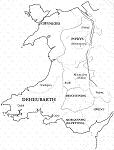
In 455 C.E. the Treachery of the Long Knives sees Hengist and Horsa rebel against Vortigern, sandbagging him into a feast of 300 British and 300 Anglo-Saxon leaders, who draw their daggers and stab them; Horsa is slain, while Hengist goes on to conquer SE England (Sussex and Essex, S of the Thames River), founding the kingdom of Kent, with capital at Canterbury (Cantwaraburh) ("town of the Kentish men") ("burgh of Kent") (ancient Roman town of Durovernum), causing the displaced Celts to flee across the Channel to de-Celted Gaul, settling in Armorica in NW Gaul between the Seine and Loire Rivers, pumping some new Celtic blood back into the region, which comes to become known as Brittany, with its own Breton language, founding the kingdom of Dumnonia (Damnonia) (Dumnonie) (Domnonie) (Devon); actually the Romans had been hiring British mercenaries, and when returning via the region Welsh Gen. Gerontius (Geraint) likes it so much he decides to stay, and gathers a group to return and settle it, after which it becomes known as Cornwall (Cornouaille) (Ger. "corner of foreigners") (Welsh tribe of Kernow?)?; meanwhile Vortigern flees to N Wales and asks Cunedda (Kenneth) (Gael. "good hound") to move his Votadini troops stationed in the Clackmannanshire region of Scotland to N Wales to stop Irish incursions; Cunedda goes on to found the kingdom of Gwynedd in NW Wales.
In 457 C.E. Victorius of Aquitaine writes the 532-year-cycle New Paschal Cycles (Cursus Paschalis), a set of tables for dating Easter based on the consular list in the Chronicle of St. Prosper of Aquitaine; it is accepted in Rome and Gaul but not Britain, effectively cutting the latter off from the continent.
In 470 C.E. the kingdom of Gododdin in Hen Ogledd ("the Old North") in SE Scotland and NE England from the Firth of Forth and Tyne River (Falkirk, Lothian, Borders region of E Scotland, Northumberland), with capital at Traprain Law in East Lothian is founded by the Votadini tribe, while the kingdom of Brynaich (Bernicia) between the Tweed and Tyne Rivers in NE England and SE Scotland (Northumberland, Durham, Berwickshire, East Lothian) is founded by Anglian settlers; meanwhile Gododdin chieftain Cunedda (grandfather of St. David) moves into the land of the Venadoti in Wales with his Votadini people, founding the kingdom of Gwynedd, and marrying Gwawl, daughter of Coel Hen of Eboracum (York), then leaves it to his son Ceredig (420-53), (father of St. Ina), who founds the kingdom of Ceredigion (Cardigan), which becomes Seisyllwg by the late 7th cent. and Deheubarth in the mid 10th cent.

By 477 C.E. the Visigoth Herulii or Heruls control Italy; the Ostrogoths control Pannonia; the Franks control N Gaul; Roman Gen. Syagrius controls the Seine River Valley; the Burgundians control Gaul S of the Seine Valley between the Saone and Rhone Rivers from the Vosges Forest to the Alps and the Sea of Marseille; Armorica controls Brittany; the Visigoths control S France, and all of Spain except the NW, which is controlled by the Sueves (originally from between the Elbe and Oder Rivers); the Vandals (originally from between the Oder and Vistula Rivers) control N Africa, W Sicily, Corsica, Sardinia, and the Balearic Isles; the Alamanni control the territory N of Italy; the Thuringians control the territory to the N of them; the Saxons control modern-day Belgium; the Angles control modern-day Denmark; the Lombards control the Oder Valley N of the Danube River; the Jutes control Kent.
In 491 C.E. the Saxons of Sussex defeat the Britons at the Battle of Pevensey, slaughtering them to the last man, causing the remaining Britons to flee to Brittany.
In 477 C.E. the Kingdom of Sussex (South Sussex) in SE England is founded by Aelle (Ella) of Sussex (-514) after he and his three sons land in Cymensora and conquer the local Britons.
In the late 5th cent. C.E. Irish priest St. Declan (Declán) (Déclán) of Ardmore converts the Deisi (Déisi) of E Munster, and founds the Ard Mor (Ardmore) Monastery in modern-day County Waterford.

Early in the 6th cent. C.E. the Celtic Britons of W England win a V over the marauding German Saxon invaders at the Battle of Badon Hill (Mount Badon) (Mons Badonicus) under King Arthur (Athurius) (Artorus) (-537) (Gael. "rock"), who is later legendized as mixed Gaelic-Latin Arthur Pendragon (Lat. "standard-bearer", "head leader"); this is his 12th "messy battle" with them, during which 960 Saxons die in a single charge, after traitor Vortigern invites the Saxons in; Saxon expansion into W England is delayed for 50 years, and the halcyon Days of Camelot begin in Arthur's lot called Camelot near the town of Queen Camel in Somersetshire or Camelford in Cornwall or Winchester in Hampshire, with a lawn (really an island) called Avalon (Gael. "apples"), where funky druid Mervyn (Myrddin) (Merlin) and bad druidess Fata Morgana (Morgan le Fay) (Gael. "edge of the sea") (fairy half-sister of Arthur) romp with dragons?; Glastonbury Tor, a conical hill in SW Britain surrounded by swamps and marshes (now by meadows) is thought by some to be the Isle of Avalon, the Celtic Isle of the Blessed, where Arthur and his wife Guinevere (Gael. "Gwenhwyfar" = "white and soft or smooth") are allegedly buried (come here, Guinevere, and I'll put my rock in your soft and white?); King Arthur's Round Table is finally located in 2010, and seats 1K? Cadwallon ap Einion Lawhir ("long hand") (460-534) becomes king of Gwynedd in Wales, going on to expel pesky Irish settlers from Anglesey Island off the N coast.
About 500 C.E. Theodoric the Great, Ostrogoth king of Italy promulgates an Edict of 154 Articles (Edictum Theodorici) in Latin, establishing that Goths alone can bear arms (Romans can only have a small knife for domestic use), but that Goths and Romans are to be united into a single civil law system, and a Roman jurisconsult will act as lawyer for Romans in front of the Comes Gothorum; Italy becomes the only German kingdom to attempt such a fusion; too bad that Theodoric wasn't much of a lawgiver or else he might have united the Goths and Romans and saved Europe from the fast-approaching Darth Vaders? Anahl nathrach, utvas bethyad, dothyel dyenve? One bright spot for Celts in a corner of the German-infested British Isles? Too bad, Theodoric the Great's edict later gets appropriated by the Anglo-Saxon English monarchs, who use the King Arthur fable to declare themselves a super-race, and use it as an excuse for their White-Is-Right British World Empire?
In 508 C.E. according to the Anglo-Saxon Chronicle, German Saxon king Cerdic (-534) and his son Cynric kill British Celtic King Natanleod (Tewdrig) along with 5K of his subjects near modern-day Southampton, Hampshire, England, and found Wessex (West Saxony), with capital at Winchester.

About 520 C.E. (516?) Hygelac dies in battle, and his son (by Queen Hygd) Heardred (-530) becomes king of the Geats (Weders) in SW Sweden; his nephew Beowulf ("bee wolf" = bear?) becomes king when Heardred is killed in a feud, ruling for 50 years; prior to the death of Hygelac, Beowulf distinguishes himself in Denmark in King Hrothgar's mead hall of Heorot by killing the ogre Grendel, pulling out his claw with his super (30-men strong) grip, then tracking his mama to her mere (lake) and slaying her in her underground den using a magical sword, which melts to the hilt; at the end of his life he kills a dragon but gets mortally wounded, giving his kingdom to Wiglaf; immortalized in the 8th cent. Anglo-Saxon epic scop poem Beowulf (which survives only in Old English form).

On Feb. 22, 521 C.E. (Feast of the Chair of St. Peter) Welsh-born St. Samson of Dol (485-565) is ordained bishop by Bishop Dubricius, after which he travels to Cornwall, the Scilly Isles, and Guernsey, founding the monastery of Dol and becoming the patron saint of Brittany.
In 524 C.E. Roman statesman-philosopher Boethius (Boetius) (St. Anicius Manlius Severinus Boëthius) (b. 480) gets too proud and falls after he defends Sen. Albinus (who is convicted of treason for merely saying that he hopes Rome will one day be free of the Goths), giving a speech in which he says, "If Albinus be criminal, the senate and myself are all guilty of the same crime; if we are innocent, Albinus is equally entitled to the protection of the laws"; not knowing when to shut up, he adds that, if he had known of a conspiracy, he would not have told the king; soon he is framed on treason charges based on his alleged signature on a letter inviting the emperor of the East to deliver Italy from the Goths, and accused of being a magician, then locked up in the tower (baptistery) of Pavia while the Roman Senate is pressured into convicting him of treason, causing him to reply that after him none of them will be found guilty of the same offence; he uses his tower time to write "Consolation of Philosophy" which, though written by a pagan contains elements of Christian ethics and becomes a hit in Medieval circles; he then is murdered by order of Count Eusebius of Pavia (Ticinum) (transmitting orders of Theodoric) by having a cord tightened around his head until his eyes pop from their sockets, then beaten to death with clubs (the tower survives until 1584); he leaves treatises on logic which set the terminology for Medieval logicians, and stunted translations of texts by Euclid, Pythagoras, Nicomachus, Archimedes, Ptolemy, Plato, Aristotle, and Porphyry that are used in Europe for cents. and are trans. by Alfred the Great of England and Chaucer, incl. writings on the "Boethian Wheel" (AKA Wheel of Fortune); he is later framed on being a Christian, and becomes a Roman Catholic martyr, with miracles attributed to him, incl. dragging his head in his hands; Cassiodorus' old slogan of civilitas is kaput.
On June 20, 528 C.E. after being hit on the head with a crowbar in a bar, 19th cent. Am. factory mechanic Hank Morgan wakes up in King Arthur's England, and uses his knowledge that a solar eclipse will occur on June 21 at 3 min. after noon to save himself from being burned at the stake by the Knights of the Round Table at the urging of his rival Merlin the magician; instead, he is hailed as a greater magician than Merlin, and gets the latter thrown in prison along with a job as perpetual minister and chief executive of the kingdom, with a percentage share of all increased revenues - Mark Twain, A Connecticut Yankee at King Arthur's Court, 1889.
In 534 C.E. Cerdic dies, and is succeeded by his son Cynric ("kin-ruler") ("hound-king"?) (-560) as king #2 of Wessex in Britain (until 560).
In 534 C.E. Octa dies, and his son Eormenric (-564/580) becomes king of pagan Kent in SE England.
About 537 C.E. King Arthur of Britain is KIA in the Battle of Camlan (Camlann) ("crooked-twisting land") on Hadrian's Wall, along with Mordred, after which there is a plague in Britain and Ireland?
In 540 C.E. Scottish-born British monk St. Gildas the Wise (Sapiens) 516-70) writes De Exicido et Conquestu Britanniae (On the Ruin and Conquest of Britain); the history of the Britons before/after the coming of the Saxons.
By 550 C.E. the mass German migration to Britain of Angles (from Anglia, the part of NW Europe that angles out?), Jutes (from Jutland, the part N of Anglia that juts out?) and Saxons (from Saxony, the sack beneath the other two, like a penis and scrotum?) is on, the Angles taking the N, the Saxons the midsection, and the Jutes the SE, driving the native Celtic Britons to the W; by the end of the cent. the island is being contested by the kingdoms which later grow into Mercia (OE "border people") (in the English Midlands centered on the Trent River Valley) and Northumbria (in N England and SE Scotland).

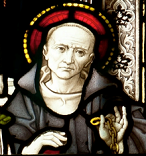
About 550 C.E. St. David (Dewi Sant) (500-89) converts Celtic Wales from Druidism to Christianity; meanwhile Welsh-born St. Petroc (-564) (teacher of St. Kevin) arrives in Cornwall from Ireland.
In 552 C.E. after expanding into Wiltshire, the West Saxons under Cynric kick the Britons out of the old Roman fort of Old Sarum (Searobyrig) near Salisbury, England.
In 556 C.E. the West Saxons under Cynric and his son Ceawlin fight the Celtic Britons at the Battle of Beranburh (Beranbury) (Beran Byrig) at Barbury Castle near Swindon in Wiltshire, England.
In 560 C.E. Cynric dies, and his son Ceawlin (-593) becomes king #3 of Wessex in Britain.
In 560 C.E. Aella (Ella) (Ille) (-588) becomes king #1 of the Anglian Kingdom of Deira in N England S of Bernicia, extending from the Humber River to the Tees River.
In 564 C.E. a "great wind" is recorded in Britain.
In 565 C.E. Charibert I, king of Paris marries his Roman Catholic daughter (St.) Bertha (565-612) to pagan king Ethelbert of Kent across the Channel; she arrives in England with her chaplain and personal confessor Bishop Liudhard (d. 600?), and is allowed to practice her religion in an abandoned Christian mausoleum left over from late Roman times, and Luidhard dedicates it to St. Martin of Tours, becoming the first Christian Saxon church in England; meanwhile she begins pussy-whipping her hubby to convert.
In 574 C.E. Congallus II dies, and Aidan (Aidanus) (Gael. "fire") Mac Gabran (Gabrain) (532-605) (whose mother is from Strathclyde), ing of the Celtic British kingdom of Manann (from the Forth River S to Slamanann) is crowned king #4 of the Dalriada Scots by his first cousin St. Columba on Iona after he returns from exile with an army and forces the Scots to select him over Congallus' son, with help from Columba, becoming king of the Scots and Britons, leaving Manann to his son Arthur (Arturius) (Gael. "rock, hard") (-582), after which the Britons call Aidan "the treacherous".
In 576 C.E. a great nut crop is recorded in Britain, along with smallpox.
In 577 C.E. the West Saxons under Ceawlin and Cuthwin fight the Britons of Bath, Gloucester, and and slay three kings (Commail, Condidan, and Farinmail) at the Battle of Deorham (Dyrham) in the lower Severn Valley, taking the towns of Gloucester, Cirencester (Corinium), and Bath, and cutting the Britons in Wales off from those in the S.

In 580 C.E. Eormenric dies, and by 589 his son Ethelbert (Aethelberht) (552-616) becomes king of pagan Kent (until Feb. 24, 616), with capital at Canterbury, going on to become the first English king to convert to Christianity, and becoming known as "bretwaida" (ruler of Britain).
About 580 C.E. a wealthy Anglo-Saxon nobleman dies and is buried in a chamber in modern-day Prittlewell in Southend-on-Sea, Essex, S of Southend, London and N of the Thames River, which is discovered in 2003 and found to be intact complete with gold drinking cups and gold foil Christian crosses, making him the Tutankhamun of Britain; it's East Saxon king Saebert, son of Sledd, or Saebert's younger brother Saexa, whose mother Ricula was a sister of King Ethelbert of Kent, who was married to Frankish Christian princess Bertha?
In 582 C.E. the Battle of Camallan (Manann) sees the Celtic Britons under King Arthur defeated by the Miathi Picts, and Arthur is KIA; the legends of Camelot later arise from the nearby Roman fortress of Ad Vallum?
In 584 C.E. Saxon king Ceawlin and his son Cutha fight the Britons at Fethan near modern-day Stoke Lyne, Oxfordshire; Cutha is KIA, while Ceawlin wins "many towns and countless war-loot".
In 587 C.E. the British archbishops of London and York flee to Wales.
In 588 C.E. King Aella dies, and Aethelfrith of Bernicia invades and conquers Deira, driving Aell's 3-y.-o. son, future king Edwin of Norhtumbria into exile.
By the 590s C.E. Aidan Mac Gabrain of Dalriada becomes the dominant power in the N British Isles, dominating Strathclyde, pushing into Pictish territory, and fighting the Germanic Angles of Bernicia in N Northumbria centered in Bamburgh, Northumberland.

Winning is about trusting your instincts On Feb. 7, 590 C.E. as the plague rages in Rome, Pope Pelagius II dies of it after leading a sevenfold procession in Rome which seemingly ends it, as proved when an angel appears to him from Castel del Sant'Angelo to announce it; on Sept. 3 Benedictine monk Gregory (first monk to become pope) is elected Pope (#64) (St.) Gregory I (the Great) (540-604) (supposedly against his will), becoming the last of the four great Latin fathers, and the first of the medieval male chauvinist Roman Catholic Church prelates, bridging the classical Greco-Roman tradition with the medieval Roman-German one; although he continues to wear a monk's robe, he immediately takes over as an unauthorized secular prince, leading the fight against the Arian Lombards and the claims of the patriarch of Constantinople to be the #1 bishop, citing divine authority; he tightens clerical discipline, stressing celibacy (if not chastity?), divides Church revenue into four shares (bishop, clergy,* poor, church bldgs.), continues the ancient imperial grain doles in Rome and elsewhere, repairs aqueducts, reforms the city admin., and allies with the Benedictines at the expense of the bishops, giving them bishop-proof charters and sending them on missionary campaigns in Britain, Gaul, Italy, Sicily, Africa, and Sicily; his men begin codifying the best Church Gregorian Chants, which derive from Jewish services and rely heavily on antiphonal singing of hymns by choirs in unison (no part-singing), and introduces the papal-style Servus Servorum Dei ("Servant of the Servants of God"); a fan of St. Augustine of Hippo, he writes The Book of Pastoral Care, which becomes a std. clerical textbook for cents.; his Dialogues popularize his crypto-pagan ideas about angels, demons, devils, relic worship, miracles, Purgatory, and allegorical interps. of the Bible; a disciple of St. Benedict, he imposes the Benedictine Rule upon all Latin monasticism, and gets nearly all orders to comply; he encourages Christian missionaries to speed up the absorption of pagans by absorbing pagan traditions into Catholic "universal" ritual as needed, saying they should meet the pagans half-way and so bring them into the Church, e.g., by absorbing their pagan festival of Tammuz or Bel or Nimrod on midsummer day (June 24) as the Festival of the Nativity of St. John; each Catholic church is turned into a Disneyland of saints? - get them in any way you can, we'll take it from there, and get them into the music?
In 590 C.E. pagan king Ethelbert is recognized as ruler of the British (Bretwalda) after winning many battles, and promulgates the first Anglo-Saxon Law Code, based on Roman law.
In 591 C.E. the Celtic Britons are slaughtered at the Battle of Wanborough in modern-day Swindon, Wiltshire; Ceawlin is driven from his kingdom, and next year his nephew Ceol (Ceolric) (Ceola) (d. 597) (son of Cuthwulf, son of Cynric) becomes king #4 of Wessex (until 597).
In 593 C.E. deposed king Ceawlin and his brother Cwichelm of Wessex die - ceawlin no evil?
In 593 C.E. Ethelfrith (Aethelfrith) ("noble strength") (-616), son of Ethelric becomes king of Bernicia in Northumbria, England (until 616), later conquering Deira to the S to create the kingdom of Northumbria and become its first king, becoming the first great Anglo-Saxon leader among the northern English.
On July 23, 594 C.E. a solar eclipse is recorded in Britain.

In 596 C.E. Benedictine Pope Gregory I sends Roman Benedictine monk (St.) Augustine of Canterbury (d. 604) to Britain with "very many monks" (wearing black robes) to convert them to Roman Catholicism after he sees Angle and Saxon children in the slave markets of Rome and, seeing their blond hair and blue eyes, says they're not angles but angels; he knows that the Anglo-Saxons are the last large group of Germans who are still pagan, but doesn't realize that England already has Celtic clergy owing their allegiance to the Byzantine Church?
About 600 C.E. the Battle of Catraeth (Catterick, North Yorkshire) between the Brythonic kingdom of Gododdin (Votadini) in SE Scotland and the Angles of Deira and Bernicia sees 300 picked warriors of Goddodin, who had feasted first for a year at Din Eidyn (Edinburgh) attack Catraeth against overwhelming (7x) odds, after which only one returns alive (366 go, 3 return?), later celebrated in the poem Y Gododdin.
In 601 C.E. Pope Gregory I sends a group of clergy from Rome to Kent to assist St. Augustine in converting the Anglo-Saxon pagans, incl. St. Paulinus of York (-644) (first bishop of York in 626-33) and St. Mellitus (-624) (first bishop of London in 604-16); on June 17 he writes Mellitus the Epistola ad Mellitum, instructing him to convert the Anglo-Saxons gradually, not destroying pagan temples but converting them to Christian churches while integrating pagan rituals and customs, "For there is no doubt that it is impossible to cut off every thing at once from their rude natures; because he who endeavours to ascend to the highest place rises by degrees or steps, and not by leaps."
In 603 C.E. Augustine of Kent holds a conference with Celtic Church bishops to talk about merging their rites and ceremonies with Rome, but his haughty bearing pisses them off and negotiations end. Columbanus is charged by a synod of Frankish bishops with the error of keeping Easter according to Celtic custom; meanwhile, the Celtic Church orders him to return to Ireland to answer for accepting other Roman Catholic rules, but he refuses to go and writes them a letter instead.
In 604 C.E. St. Augustine consecrates Mellitus (-624) as bishop #1 of the Anglo-Saxon kingdom of the East Saxons after he converts king Saeberht (Saberht) (Saebert) of Esse (-616) to Christianity, and with help from his overlord King Aethelberht of Kent they build a church in London dedicated to St. Paul as Mellitus' new seat, becoming the start of St. Paul's Cathedral; St. Augustine (b. ?) dies in Canterbury on May 26.
In 605 C.E. Aethelfrith (-606), king of Bernicia (since 593) extends his rule over Deira, uniting the two Anglo-Saxon kingdoms in N England, founding the Kingdom of Northumbria, extending from the Humber River in the S to the Forth River in the N.
A big V for the German invaders over the native Celts in Britain? In 615 C.E. an army led by Aethelfrith of Northumbria battles the army of the Welsh Briton Kingdom of Powys (pr. POW-iss) at the Battle of Caerllion (Chester), and defeats and kills Powys king Selyf (Gael. for Solomon) Sarffgadau (Gael. "battle serpent") (son of Cynan Garwyn), along with 1.2K of 1,250 praying monks from the monastery of Bangor-Is-Coed in Maelor "because they oppose us by their prayers", throwing the devout army offstride and making it easier to win, cutting Wales off from their British brothers in SW Scotland; king Cetula (Cadwal Crysban) of Rhose is also KIA; German invaders have now conquered two-thirds of the once all-Celtic island of Britain except for the W and NW highlands, and the Angles and Jutes reach the Irish Channel.
On Feb. 24, 616 C.E. king (since 1589) Ethelbert of Kent (b. 552) (first English king to receive Christian baptism) dies, and is succeeded by his son Eadbald (-640) (until Jan. 20, 640), who reverts to paganism, but is reconverted in 1-8 years by Archbishop Laurentius of Kent, who convinces him to separate from his first wife because she had been his stepmother, after which he marries Frankish princess Emma (Ymma) (-642), daughter of Kng Theudebert II of Austrasia, who bears him two sons, Eormenred and Eorcenberht, and one daughter, Eanswith.
In 616 C.E. Iago dies, and his son Cadfan ap Iago (580-625) becomes king of the Britons of Gwynedd in N Wales (until 625), going on to be called "the wisest and most renowned of all kings" on his gravestone - McDreamy, McSteamy, and McSexy?
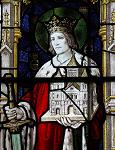
In 616 C.E. after attempting to bribe converted Christian king Raedwald (Redwald) (-624) of East Anglia to hand over his dynastic rival (former king of Deira) Edwin (Eadwine) (Aduini) (586-633), only to have Raedwald's wife talk him out of it and get him to raise an army instead, catching him unprepared, Aethelfrith is defeated and KIA at the Battle of the Idle River near modern-day Nottingham; Raedwald's son Raegenhere is KIA; Raedwald becomes the most powerful English king S of the Humber River; Edwin usurps the crown of Northumbria from his nephew, Aethelfrith's teenie son (St.) Oswald (605-42), who flees with his brothers Eanfrith of Bernicia (590-634) and Oswiu (Oswy) (Oswig) (612-70) to Ireland, then to Dalriada Scotland (in the W), where he is converted to Celtic Christianity by the monks of Iona; Edwin subdues all of Britain (incl. Anglesey and the Isle of Man) except Kent, assuming leadership of the heptarchy; since the supremacy of Kent is at an end, Christianization of Britain no longer proceeds from there, which is a problem, since Augustine brought the new Christianity of the continent, while the Celtics continue to practice the Christianity of the old Roman regime, which is now out of step with Rome and differs in practices and observances and looks to Constantinople's bishop as head of the church rather than the pope - I already have a boyfriend?
In 619 C.E. London bishop (since 604) Melligus becomes archbishop #3 of Canterbury (until Apr. 24, 624).
On June 21, 624 C.E. there is a solar eclipse in Britain.

In 625 C.E. Roman missionary (St.) Paulinus of York (-644) arrives in Northumbria with Aethelburg of Kent, sister of King Eadbald of Kent to marry King Edwin of Northumbria, whom he eventually succeeds in converting to Christianity, along with many of his subjects incl. St. Hilda of Whitby; meanwhile next July 21 Paulinus is consecrated as the first Christian bishop of York.
On Oct. 12, 633 (Oct. 14?) pagan kings Cadwalla of Gwynedd (N Wales) and Penda of Mercia (-655) defeat and kill king (since 616) Edwin of Northumbria (b. 586) at the Battle of Hatfield (Heathfield) Chase 8 mi. NE of Doncaster in Yorkshire on the S bank of the Don River; Edwin and his eldest son Osfrith are KIA, and his younger son Eadfrith is captured by Penda and later killed; Northumbria decays back into the kingdoms of Bernicia and Deira; Queen Ethelburga escapes by sea to Kent with her children and her bishop Paulinus, taking many of Edwin's treasures, after which King Eadbald gives her a ruined Roman villa at Lyminge on the sea side of Canterbury, where she builds the first nunnery in England and becomes the first Anglo-Saxon nun, and is later joined by her sister St. Edburga of Lyming (-650), who becomes the first Anglo-Saxon virgin nun; later the Welsh like to wear a leek in their caps on St. David's Day (Mar. 1) in commemoration of this battle, conveniently forgetting that it was a pagan V; meanwhile Northumbria is laid waste by mean murderous Cadwalla, and St. Oswald and his brother Eanfrith return from exile in Dalriada Scotland on a comeback tour, starting with Eanfrith becoming king of Bernicia, while Deira is ruled by Edwin's Christian cousin (son of his uncle Aelfric) Osric of Deira (-634); too bad, after gaining power both Eanfrith and Osric go hog pagan wild.

In 635 C.E. Kings Cynegils of Wessex and St. Oswald of Northumbria are baptized by Bishop Birinus, and Oswald requests the Scots (in W Scotland) to send a bishop to convert his mostly pagan people, and they send Kleenex, er, Connacht-born (St.) Aidan of Lindisfarne (590-651), "the apostle of England (Northumbria)" from Iona off the W coast of Scotland, who establishes himself on the Holy Island of Lindisfarne (Lindesfarne) ("Land's Corner") ("Land's Horn") off the NE coast of England, and preaches the Celtic version of Christianity; the causeway with the mainland is flooded twice a day by tides - get back, Jojo?
In 669 C.E. the relief over the passing of 666 having settled in, new Canterbury archbishop Theodore of Tarsus calls the Synod of Hertford, and reaches a truce with the Celtic Christians, then revamps the ecclesiastical org., introducing more and better dioceses, a Roman parochial system, and a centralized episcopal (diocesan) org. that becomes a model for a unified England; under his leadership Anglo-Saxon scholarship enters a golden age, producing star pupil Venerable Bede (673-735), who utters the soundbyte: "Never had there been such happy times as these since the English settled Britain."
On Feb. 6, 685 C.E. Hlothhere is defeated and KIA by his nephew (son of Ecgberht) and co-ruler Eadric (-686) with the help of the South Saxons, and he becomes king of Kent (until 686).
On May 20, 685 C.E. the Battle of Nechtansmere (Nectansmere) (Dun Nechtain) on Dunnichen Moss at Letham (near Forfar) in Angus is a V for the Celtic-speaking Picts under Bridei III over the Northumbrians under Ecgfrith (who is KIA), ending Northumbrian Anglo-Saxon attempts to establish a hegemony in Pictland (Caledonia), and saving Scotland for the Scots; invading Northumbrian king Ecgfrith is KIA; the existence of an independent kingdom of Picts is secured, along with a border, and they and the Britons now dominate N England; Aldfrith (Aeldfrith) (-705), son of Oswiu and Irish princess Fin becomes king of Northumbria (until Dec. 705), becoming known for his learning and letters.
In 685 C.E. Centwine abdicates to become a monk, and is succeeded by Caedwall(a) (659-89) as king #10 of Wessex (until 688).
In spring 686 C.E. Cadwalla of Wessex establishes himself as overlord of Essex, and along with King Sebbi invades Kent and Wight, killing king Eadric of Kent on Aug. 31; Cadwalla's brother Mul ("Mule") (-687) (a West Saxon of the house of Cynric) becomes king of Kent; Sebbi uses the chance to found the first Westminster Abbey in London.
In 686 C.E. Sussex, the last heathen kingdom in England is converted to Christianity by Wilfrid of York - that sussex?
In 688 C.E. according to Venerable Bleed, er, Bede, "The rain turned to blood in Britain, and in Ireland milk and butter turned to blood."
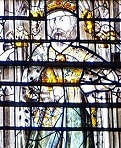
In 688 C.E. after being wounded on the Isle of Wight, King (since 685) Caedwalla of Wessex converts to Christianity, is baptized in Rome by Pope St. Sergius I with the name of Peter, and then dies, and next year his nephew (son of his 2nd cousin King Coenred of Dorset) Ina (Ine) (Ini) (670-728) becomes the 11th and best-so-far king of Wessex (until 726), going on to subdue Essex and part of Kent.
In the 690s C.E. Anglo-Saxon missionaries begin arriving in the Netherlands to try to convert the pagan Frisians under the direction of Pepin II of France, who sends the leader of the mission to Rome to be consecrated as bishop of Friesland.
In the 690s C.E. king Seisyll ap Clydog (665-) of Ceredigion (a descendant of King Ceredig through his eldest son Usai) conquers Dyfed and kingless Ystrad Tywi (in SW Wales on the Tywi River), and founds the enlarged Kingdom of Seisyllwg (ends 920).
In 690 C.E. Wihtred (670-725), son of Ecgberht I and brother of Eadric becomes co-king of Kent, followed by sole king by 692-3 (until 725), issuing Textus Roffensis, a code of laws which survive to modern times, giving extensive rights to the Church, and ordaining punishment for pagan worship and irregular marriages.
In 695 C.E. King Aldfrith of Northumbria marries (St.) Cuthburh (Cuthburg) (-718), sister of King Ine of Wessex; she goes on to become the first abbess of Wimborne Minster.
In 695 C.E. King Wihtred of Kent composes the Law Code of King Wihtred of Kent, attaching King Ine of Wessex's code to it.
In 699 C.E. a cattle plague begins in Britain, spreading to Ireland by next year, adding to their woes of famine.
In Feb. king (689-726) Ine (Ina) (Ini) of Wessex (670-727) begins replacing subkings with ealdormen; meanwhile Hamwic becomes a major Wessex trading center.
In 710 C.E. King Ine of Wessex wars with the Britons of Cornwall.
In 711 C.E. the Northumbrians crush the Pict army, causing them to again submit to Northumbrian overlordship.
In 716 C.E. Cenred dies, and his exiled cousin Aethelbald (Ethelbald) (-757) returns and becomes king of Mercia for the next 41 years (until 757), making Mercia the #1 Anglo-Saxon kingdom like it was in the 7th cent. under Penda and Wulfhere.
In 716 C.E. King Osred of Northumbria is slain in battle, and his son Cenred (Coenred) (d. 718) succeeds.
In 717 C.E. at the instigation of the Northumbrian Trinitarian clergy, King Nechtan Mac Derile expels the Irish Arian clergy (linked to Iona) from Pictland.
In 718 C.E. King (since 716) Cenred dies, and his brother Osric (-729) becomes king of Northumbria (until May 9, 729), going on to adopt Cenred's brother Ceolwulf as his heir.
In 720 C.E. Idwal Iwrch (b. 650) dies, and his son (by Angharad of Brittany) Rhodri Molwynog (Bald and Gray) ap Idwal (690-754) becomes king of Gwynedd in Wales (until 754).
On May 9, 729 C.E. Osric is slain, and his adopted son (Cenred's brother) (St.) Ceowulf (Ceolwulf) (-766) becomes king of Northumbria (until 737); too bad, he's too bookish and pious, and comets are seet at Osric's death, causing his subjects to seize him and put him in a monastery next year, but he escapes and returns to power.
In 732 C.E. Northumbrian king Ceowulf appoints his cousin (brother of future king Eadbert) Egbert (-766), to succeed Wilfrid II as bishop of Northumbria, and in 735 he becomes archbishop #2 of York, the first since Paulinus a cent. earlier, presiding over ecclesiastical affairs with bishops Wilfrid, Ethelwald, Acca and Pecthelm.
In 733 C.E. Mercia conquers Wessex, establishing supremacy over all England S of the Humber River for the rest of the cent. - mercy, that's offal?
In 744 C.E. the Britons of Strathcylde and the Picts begin the British-Pictish Wars (end 750); the Picts use the schiltron.
In 750 C.E. Talorgen Mac Fergus, brother of Pictish king Angus I Mac Fergus attacks the kingdom of Strathclyde, led by King Tewdwr (d. 752), and is crushingly defeated, ending the British-Pictish Wars (begun 744); Tewdwr becomes overlord of the Picts, causing Angus' position to be threatened from within.
In 752 C.E. Cuthred of Wessex defeats Aethelbald of Mercia at the Battle of Burford. Tewdwr of Strathclyde dies, and Angus Mac Fergus defeats his puppet Bridei Mac Maelchu, regaining Pictish independence with a grudge against Strathcylde.
In 756 C.E. Cuthred dies, and his distant relative Siegbert (Sigeberht) (Sebright) (OE "magnificent victory") (-757) succeeds king #14 of Wessex (until 757).


In 757 C.E. King Aethelbald of Mercia is assassinated by his bodyguard in Seckington, and buried in Repton, and after a power struggle with king-for-a-day Beornred (who is defeated and flees) is succeeded by his son Offa II (-796) (until July 29, 796), becoming the most powerful Anglo-Saxon king so far, ruling England S of the Humber River while Northumbria becomes isolated - and ungoogly? King Edbert (d. 768) of Northumbria receives the clerical tonsure and enters his brother Egbert's monastery at York, and next year his son Oswulf of Northumbria (-759) succeeds (until 759). King Siegbert of the West Saxons (Wessex) is deposed and slain by Cynewulf ("kin wolf") (-786) for "unrighteous deeds", who becomes king #15 of Wessex (until 786).
On Aug. 6, 761 C.E. King Mull of Northumbria slays King Oswin at the Battle of Edwin's Cliff (Eildon).
In Jan. 802 C.E. after Beorhtric is accidentally poisoned by his wife Eadburh, Egbert (Ecgberht) (Ecgbriht) (771-839) returns from exile in France under Charlemagne's protection to become the 17th (who cares anymore?) king of Wessex (until 839), and its first Christian king, the first good egg, later counted as the first monarch of England, proceeding to deal with pretty-woman-walking-down-the-street pagan Mercia to the N; Eadburh flees to France, muffs a chance to marry Charlemagne, and becomes abbess of a convent, but is caught hooking up with an Englishman and expelled, becoming a beggar in Pavia; King Alfred's ancestors are so pissed-off at her that they refuse to call their wives queen, preferring Lady of the English (hlaefdige).
In 807 C.E. the Vikings raid Ireland again; meanwhile a solar eclipse is recorded in Britain.
In 809 C.E. a lunar eclipse is recorded in Britain.
In 810 C.E. a lunar eclipse followed by cattle deaths is recorded in Britain.
In 812 C.E. the fortress of Deganwy in Gwynedd, Wales is struck by lightning and burns down.
In 814 C.E. a great lightning storm causes many fires in Britain, according to the Anglo-Saxon Chronicle.
About 830 C.E. Welsh monk Nennius (Nynniaw) (Nemnius) (Nemnivus) (769-) writes Historia Britonum (History of the Britons), which claims that Britain was founded by Brutus of Et Tu, Brute fame, and that the Cam River near the village of Queen Camel is the location of Camlann, King Arthur's last battle, where he spears his son Sir Mordred, and is in turn cut down by his son's sword, saying, "Ah, now I have my death"; the fortified hill near the village (Cadbury Castle in Somerset) is called Camelat or Camelot by the locals.
In 846 C.E. Aethelred II of Northumbria sends a military force to assist the Picts in their fight against invading Scots.
In 847 C.E. the Capitulary of Mersen requires every freeman in the West Frank kingdom to choose a lord, whom he cannot quit and must follow in battle - frankly, my dear, I don't give a damn?

In 852 C.E. (St.) Swithin (Swithun) (800-863) becomes bishop of Winchester, England (until 862), becoming active in building churches and bridges; on July 15, 971 the remains of English bishop of Winchester St. Swithin (800-63) arereburied in the churchyard, after which a great storm arrives, causing the legend that the weather on July 15 determines the weather for the next 40 days.
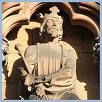
In July 839 C.E. king (since 802) Egbert of Wessex (b. 771) dies, and his son Ethelwulf (Athelwulf) (OE "noble wolf") (795-858) becomes Christian England's 2nd monarch (until Jan. 13, 858), maintaining West Saxon supremacy over the pesky Mercians.


On Jan. 8, 871 C.E. after eight seesaw battles Wessex Prince Alfred (who fights alongside his older brother Ethelred I) finally vanquishes (or at least poops-out) the Danish invasion force, led by Danish king Halfdan and six other Viking cmdrs. at the Battle of Ashdown (the 8th battle), killing a king and five jarls and culminating his "year of battles"; on Apr. 23 king (since 865) Ethelred (b. 847) dies in Dorset, and Alfred (Aelfred) the Great (849-99) becomes king of England (Wessex) (English monarch #6) (until Oct. 26, 899), uniting the English people and founding the English navy along with the King's Court (Curia Regis); too bad, the Vikings rally and score Bs at Basing (Jan. 22), Meretun, and Reading, after which their "summer army", led by Guthrum, Oskytel, and Anwend arrives from the Continent.
In 872 C.E. after another Viking V at the Battle of Wilton, Alfred the Great buys peace from the Danes, who pull back from Wessex without penetrating it very far, and then invade Mercia, intent on occupying London.
In 872 C.E. Alfred the Great allegedly founds Oxford U. in Oxfordshire, England; too bad, the first definite mention is in 1096.
Early in 878 C.E. (midwinter) a large Danish force from Gloucester under Guthrum breaks the agreement with Wessex, invades it and seizes the royal vill of Chippenham in Wilthshire E of the Bristol Channel by surprise; "The host went secretly... and rode over Wessex and occupied it, and drove a great part of its inhabitants overseas, and reduced the greater part of the rest to submission, except Alfred the king, who with a small company moved under difficulties through woods and inaccessible places in marshes" (Anglo-Saxon Chronicle); Alfred the Grunt flees to the isle of Athelney in Somerset (located in a swamp), where he dines on burnt cakes, and encounters St. Cuthbert disguised as a pilgrim; he calls his well-trained army from their winter homes in Somerset, Wiltshire, and Hampshire and returns in the spring, defeating the Danish army in May at the Battle of Edington (Ethandun) in Wilshire SSW of Chippenham, and capturing Guthrum, but instead of whacking him, cagey Alfred baptizes him and enters into a peace treaty with him, the Treaty of Wedmore (Chippenham); the Christianized Vikings are obliged to hand over hostages and leave Wessex, but allowed to settle in England in a broad strip of land covering almost one-third of England N of the Thames-Lea line, incl. the Humber River and The Wash; the Danes are also given a Danelagen in Mercia and East Anglia; Danish pressure forces Scotland (between the Solway Firth, Firth of Clyde, and Firth of Forth) to begin unifying; the rest of the Celts are also bunched up on the W side of the island, hiding behind the Cambrian Mts. in Wales, and to the W of the Tamar River in Cornwall; Alfred begins walling and garrisoning London with burghers, setting up earthen forts (burhs) of Viking style, and reorganizing the fyrd (foot soldier army), along with thanes (thegns) (mounted infantry), which all citizens of a certain wealth are required to join; in the 880s he builds Athelney Abbey (destroyed in 1539 by Henry VIII).
In 880 C.E. the English army goes to Ghent (on the confluence of the Scheldt and Lys Rivers, 30 mi. NW of Brussels).
In late spring 893 C.E. after landing in the Lympne Estuary in Kent and the Thames Estuary, and receiving reinforcements from settled Danes in East Anglia and Northumbria, sieging Exeter and raiding Hampshire and Berkshire, the Viking armada leaves and tries to reunite with Hastein, but are defeated at the Battle of Farnham in Essex by an Anglo-Saxon army under Alfred the Great's eldest son Prince Edward the Elder (b. 869), who recovers their booty; after a combined West Saxon-Mercian army fails to dislodge them from their fort at Thorney, the survivors finally hook up with Hastein at Mersea Island, who sets up a fort (burh) at Benfleet in Essex, and sets out to raid Mercia, allowing the militia of E Wessex to sneak into the fort and capture it, along with the ships, booty, women and children (incl. Hastein's); Hastein them sets up a new fort in Shoebury farther N in Essex, and receives reinforcements from the Danish kingdom of East Anglia and the Scandinavian kingdom of York, and gets Alfred to return his two sons, then sets out on a revenge tour up the Thames River Valley, followed by the Severn River, pursued by Aethelred of Mercia and a combo West Saxon-Mercian army reinforced by some Welsh soldiers, who finally trap them on Buttingham Island on the Severn River near Welshpool for several weeks, until they fight their way out with heavy losses and return to Shoebury; in late summer they strike again with reinforcements after moving their booty, women, and ships to East Anglia, occuping the ruined Roman fortress in Chester, intending to use it as a base to raid N Mercia, only to find out that the Mercians had denuded the surrounding countryside; in the fall they leave Chester and march to S Wales, devastating the Welsh kingdoms of Brycheiniog, Gwent, and Glywysing.
In spring 896 C.E. the pesky Danish Viking army disperses into East Anglia, Northumbria, and the Seine River in just five ships (300-400 men), becoming their last invasion of fyrd-tress England; Hastein is never heard from again?; meanwhile the Vikings of East Anglia and Northumbria continue to harass Wessex by land and sea, but they free Alfred enough to kick back and issue a set of laws and then ring the school bells and kick-start learning, which had almost been wiped-out by the hooky-playing Danes, who loved to ransack wealthy monasteries and use the books for ass-wipe?; "But so clean fallen away was learning now in the Angle race, that there were very few on this side of the Humber who would know how to render their service-book into English, or to read off an epistle out of Latin into English" (Alfred); he gathers together the last four learned Englishmen, plus several foreign scholars, incl. Welsh monk Asser (-909) (his mommy calls him my little Ass?), who becomes his biographer, then founds a court school for sons of nobles, and helps trans. several books on morals and history from Latin that he considers "most needful for every man to know".
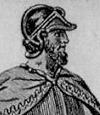
On Oct. 26, 899 C.E. Alfred the Great (b. 849) dies an agonizing death (from autoimmune Crohn's Disease?), and his son Edward I the Elder (869-924) becomes king of the Angles and Saxons (Wessex) (monarch #7 of England) (until July 17, 924), beginning the mopping-up of the Danish menace (by 954), who meanwhile are busy giving place names "thorpe" (village), "thwaite" (meadow), and "by" (farmstead) endings.
In the 10th cent. C.E. the original wild and crazy guys, the Celts begin to dissolve into the British crowd?
In the 10th cent. C.E. England is divided into shires, with county courts in each.
About 900 C.E. the city of Oxford, England (modern-day pop. 170K/244K) is founded as a ford for oxen in the Thames River called Oxenforda, becoming a major military frontier town between the kingdoms of Mercia and Wessex and evolving into a center of learning and center of pop. of the county of Oxfordshire in SE England, with Oxford U. first mentioned in 1096; ; in 1191 it is chartered as a city, going on to become known as "the city of dreaming spires" (Matthew Arnold).
In 904 C.E. a lunar eclipse is recorded in Britain.
In 905 C.E. a comet is recorded in Britain.
By 907 C.E. Edward the Elder has subdued the Danes S of the Humber, as well as the Northumbrian Danes; the land S of the Humber is divided into shires, each with its own earl.
In 907 C.E. the first castle is built in Totnes, England at the head of the estuary of the Dart River in Devon.
In 909 C.E. the combined forces of Wessex and Mercia launch a 5-week exploratory attack against the Northumbrian Danes at Lindsey, successfully capturing the relics of St. Oswald of Northumbria.
In 909 C.E. Cadell ap Rhodri (b. 854) dies, and his son Hywel Dda ("Howell the Good") (880-950) (who worked together to conquer the SW Welsh kingdom of Dyfed in 904-5, with Hywel becoming king) becomes king of Seisyllwg in S Wales, going on to become sole king in 920 and establish Deheubarth ("right-hand part" = the South) (ends 1197) before conquering most of Wales from Prestatyn to Pembroke and become known as "king of the Britons", promulgating the Laws of Hywel (Cyfraith Hywel).
On Aug. 5, 910 C.E. after the pissed-off Northumbrian Vikings retaliate for last year's raid by sailing up the Severn River into the heart of Mercia, ravaging and plundering, giving Edward I the Elder of Wessex time to block their escape route at Bridgnorth with a combined Wessex-Mecian army and force them into an open battle, he decisively defeats them at the Battle of Tettenhall (Wednesfield?) in Staffordshire, Mercia, killing Viking kings Eowils and Halfdan, plus 10 war leaders; Edward's brother-in-law Aethelred of Mercia dies next year of wounds from the battle, which becomes the last major Viking army to ravage England; meanwhile the Dublin Vikings under Ragnall (Ragnvald) (Rognvald), fresh from ransacking Scotland beat Edward to the punch and retake Jorvik (York), setting up a dynasty.

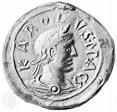
In spring 911 C.E. Norse Viking chief Rollo (Hrolf) (Rolf) Ragnvaldsson (the Ganger) (the Walker) (Wend-a-Foot) (845-930) (who once explored the E coast of North Am. as far S as Conn.?) sails down the Seine River with a raiding and settling party, and sieges Chartres, then prepares to ransack gay Paris, until whimpy king of the West Franks (Charles III, you are no Charlemagne?) Charles III the Simple (879-929) (probably hearing that the Vikings can be bought off, like Eli Wallach in the 1960 film "The Magnificent Seven", and saying something like, "Rollo, please do not sack gay Paree, just take this box of treasure, and I'll make you a duke and give you my beautiful daughter, the hottest French poontang in the land, and you can move into the bad side of France and have the left bank of the Seine, plus a little of the right bank, where you can have some Lebensraum and act as bouncers for any other Vikings, how about it, guy"?) cops out, and in the fall signs the Piece, er, Treaty of Saint-Clair-sur-Epte (Fr. "sint clair" = "clear well or pool"), granting them land on the left bank of the Seine River (the bad side of France?), with Rouen (on the right bank) (named after him, which is convenient, because it was originally the Gallic city of Ratumacos) as their new capital, on the condition that they defend the land, receive Christian baptism, and do homage to Charles as their overlord; Charles also sweetens the pot by giving Rollo his daughter (sister?) (all made up?) Gisela of France in marriage to cement the deal; when Rollo's proxy goes to perform the rite of allegiance by kissing the king's foot, the rude Viking stands erect, lifts the royal foot to his mouth and topples Charles over backward, causing Rollo's men to have a good laugh?; Rollo founds the French duchy of Normandy (Northmen Duchy - get it?), becoming duke #1 (until 927), and is baptized under the name Robert, becoming Duke Robert I; the Norsemen acquire the French language and culture (which they proceed to inject with Norse words and turn into their own dialect), learn to ride horses, build forts and siege machinery, and continue their raids on Brittany; Charles III's act is so unpopular with his barons that they start calling him Charles the Simple, and later depose and imprison him for it; Charles acquires Lorraine from France.

In 911 C.E. Aethelred of Mercia dies from his wounds from the Battle of Tettenhall, and his wife (since 887) (eldest daughter of Alfred the Great) Aethelflaed (Ethelfleda) (872-918) becomes ruler of Mercia ("Lady of the Mercians"), ruling with leather balls from her newly fortified capital at Stafford (until June 12, 918).
In 916 C.E. Anarawd ap Rhodri dies, and his son Idwal (Iudgual) (Jothwel) (Judwalum) Foel (the Bald) ap Anarawd (-942) becomes king of Gwynedd (until 942), being forced to acknowledge Athelstan of England as overlord.
In 921 C.E. Edward the Elder conquers the Danish center of Huntingdonshire (Hunts) in EC England, and establishes a fort at the mouth of the Clwyd (Clyde) River in W Scotland.
In 925 C.E. Athelstan (Aethelstan) (Ethelstan) (OE "noble stone") (895-939) is crowned Saxon king of Wessex at Kingston (Surrey), king #8 of all England, and first king of a unified England (until Oct. 27, 939) in All-Saints Church; on Aug. 10 a Viking army attempts to break the Saxon position in Essex at the Siege of Maldon, which is saved by a relief force, allowing the Saxons to advance N to York, although Saxon leader Byrhtnoth is KIA.

On May 26, 939 Edmund I (the Elder) (the Just) (the Magnificent) (921-46) becomes king #9 of England (until 946); Olaf Guthfrithsson, son of prior king Olaf Sihtricsson's regent Guthfrith takes advantage and recaptures York with Scottish help; Idwal Foel of Gwynedd sees his chance and revolts.
On May 26, 946 C.E. (St. Augustine's Day) Edmund I (b. 921) is murdered by exiled thief Leofa during a party in Pucklechurch after he is spotted in the crowd and dragged before the king by the hair then pulls a knife and slays him, then is cut up by the king's men "into smalle partes", and is succeeded on Aug. 16 by his younger brother Eldred (Edred) (Eadred) (923-55) as the 10th monarch of Britain (until 955); under this whimp St. Dunstan becomes virtual ruler of England, instituting policies of political unification, beefing up royal authority, and making religious reforms, while Viking princes Olaf Sihtricson and Eric Bloodaxe help themselves to Northumbria.
In 950 C.E. the earliest mention of the town of Andover in Hampshire, England 65 mi. WSW of London sees King Edred build a hunting lodge there.

On Nov. 23, 955 C.E. Eadred (b. 923) (who suffers from a digestive problem that causes him to suck the juices out of his food, chew on the rest, then spit it out) dies without an heir, and his nephew (eldest son of Edmund I and St. Elviga) Edwy (Edwig) (Eadwig) the All-Fair (941-59) becomes king of Wessex and 11th monarch of England (until Oct. 1, 959); on the day of his coronation, St. Dunstan catches him hooking up with noble friend-with-benefits Ethelgive, and forces him to renounce her as a "strumpet", causing Edwy to remember he's da king and plunder his monastery, after which St. Dunstan flees England until Edwy's death.
In 962 C.E. King Edgar calls a meeting of the Witan (Saxon parliament) at his hunting lodge near Andover.

On Oct. 1, 959 C.E. king (since Nov. 23, 955) Edwy the All-Fair (b. 941) dies, and his brother Edgar the Peaceful (943-975) (peaceful on the inside not the outside, since he just seized Edwy's Northumbrian and Mercian kingdoms by force?) becomes the 12th king of a united England, marrying his 2nd/3rd wife (the original wicked stepmother?) Elfrida (Alfrida) (Aelfthryth) (Elfthryth) (945-1001) in 964 and having sons Edmund (966-70) and Aethelred (968-1016); "In his days it prosper'd well, and God him granted that he dwelt in peace" (Anglo-Saxon Chronicle); he recalls St. Dunstan, makes him first bishop of Worcester then bishop of London, and helps him reform the monasteries.
On May 11, 973 C.E. Edgar the Peaceable's wife Aelfthryth (Elfrida) (Alfrida) (945-1001) is crowned at Bath, becoming the first English king's wife given the title of queen (cwen), becoming a bad queen, murdering her stepson Edward the Martyr, spawning evil stepmother stories.

On July 8, 975 C.E. Edgar I the Peaceful (b. 843) dies (peacefully?), without acknowledging an heir, causing the kingdom to become divided by supporters of his two sons, but with the support of archbishops Dunstan and Oswald of Worcester the eldest son (St.) Edward (Eadweard) II the Martyr (962-78) succeeds him as the 13th English monarch (of Wessex) (until 978); too bad, a comet and famine during his reign causes factions of greedy nobles to almost start a civil war and dispossess the reformed Benedictine monasteries of lands and properties granted to them by Edgar I (the "anti-monastic reaction"), and weak king Edward II doesn't last long, all of which causes the Anglo-Saxon regime in England to begin its downward slide to the nearest 666 in sight, 1066.

On Mar. 18, 978 C.E. Edward II the Martyr (b. 962) is martyred at Corfe Castle in Dorset as he dismounts from his horse on the orders of his wicked stepmother Elfrida (Aelfthryth), who sees that her 10-y.-o. son (Edward II's brother) Ethelred (Aethelred) II (the Unready) (the Redeless) (the Devoid of Counsel) (the Ill-Advised) (968-1016) (who spends his wedding night in bed with his wife and mother-in-law?) is crowned king of Wessex at Kingston (14th monarch of England), going on to face Viking invaders (starting in 991) whom he tries to buy off (earning him the nickname)) and proving the most incompetent king of England until mad King George III?; he sets up the Wantage Code, containing rules for 12-men juries, who have to investigate the case themselves; Dunstan's public career is kaput and he retires to Canterbury; meanwhile Edward II spawns a cult at Shaftesbury Abbey, and becomes a saint in the Anglican, Roman Catholic and Eastern Orthodox churches - brilliant? On Easter Otto II punishes the Three Henries, banishing
On Aug. 11, 991 C.E. after help from traitor Eadric Streona (the Acquisitive) (-1017), Norwegian pretender to the throne Olaf Tryggvasson raids England with 93 ships and 3K men and fights the epic Battle of Maldon by the Blackwater River in Essex with King Athelred II the Unready, defeating and killing Essex (former E Anglia) ealdorman Byrhtnoth (OE "beorht" + "nod" = bright + courage), causing Athelred to pay the first Danegeld ransom (10K lbs. of silver) to stop Danish Viking attacks on England, earning him the name Unready; the fate of Saxon England and the Wessex dynasty is sealed?; the Saxon poem Battle of Maldon is latter composed to celebrate it all.
In 993 C.E. the Vikings ransack Yorkshire, England.
On Sept. 8, 994 C.E. after returning to England with Svein (Sweyn) Forkbeard of Denmark, Olaf Tryggvason of Norway sieges London, then makes a deal with Ethelred II the Unready, accepting more Danegeld (8 tons of silver) and getting baptized in Andover in return for giving up ransacking England and returning home, then heads for Norway after he hears that King Earl Hakon is doing things to Norwegian women.
On Oct. 28, 994 C.E. Sigeric the Serious dies, and Ramsbury bishop Aelfric of Abingdon (Wessex) (-1005) becomes Canterbury archbishop #28 (until Nov. 16, 1005).
In 996 C.E. the Church of St. Mary in Wolverhampton, Staffordshire, England is founded by King Edgar's sister Wulfruna, becoming the Church of St. Peter in the mid-12th cent.
On May 5, 1010 the East Anglians are defeated by the Vikings at the Battle of Ringmere Heath in East Anglia; the Anglo-Saxon Chronicle laments that "not a chief man would gather a force" to fight for the incompetent king Aethelred, "but each fled as he best might; nor even at last would any shire assist another."

On Mar. 17, 1040 English king (since Nov. 12, 1035) Harold I Harefoot (b. 1015) dies in Oxford, and his brother Hardicanute (Harthacnut) (1018-42) (Dan. "tough knot") arrives in England and is elected king of Denmark and England (18th monarch of England) (until June 8, 1042), going on to charge aa "fleet tax", causing his subjects to begin to resent the hard-drinking Viking bully?
In 1040 after Norman barons Ralph de Gace et al. won't accept an illegitimate son as their leader, Duke William's guardian Count Gilbert of Brionne (b. 1000) is KIA by Ralph de Wacy and Robert de Vitot, causing his eldest sons Richard fitz Gilbert and Baldwin fitz Gilbert to flee to the protection of Count Baldwin V of Flanders; on his return to Normandy, Richard is rewarded with the lordship of Bienfaite and Orbec, accompanying him to England in 1066 and gaining great favor.
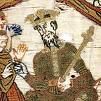
On June 8, 1042 hard-luck Hardicanute (b. 1018), king of Denmark (1035-42) and England (since Mar. 17, 1040) dies of convulsions after a drinking party, leaving no heirs, ending Danish rule in England; Magnus I of Norway becomes king of Denmark by prior agreement; with the support of Godwin of Wessex, the most powerful earl in England, Edward III (the Confessor) (1004-66), last surviving son of Ethelred II (by his and Canute's wife Emma) returns from Normandy to assume the throne for the Wessex Dynasty with the support of the Danes, becoming England's 19th monarch and last of the House of Wessex (until Jan. 5, 1066); too bad, he's a cousin of Duke William of Normandy, and was raised a Norman, and begins to surround himself with Norman favorites and Normanize the court, to the chagrin of the Saxons; since he has no personal army like Hardicanute did, the Anglo-Saxon nobles begin plotting against him; the four great earldoms are Wessex, East Anglia, Mercia and Northumbria, with seven lesser earldoms; Edward finds it easy to play the earls off against each other to promote Norman favorites?; his pointless broken sword is called Curtana, "the Sword of Mercy", "of the same steel and temper as Joyeuse and Durendal".

In 1043 the city of Coventry in Mercia (West Midlands), England on the Sherbourne River 94 mi. NW of London (modern-day pop. 360K) is founded by cradle-robber Earl Leofric (968-1057) as a Benedictine monastery after his beautiful long-haired blonde Saxon god's-gift-to-man wife Lady Godiva (Godgifu) (Lat. "God's gift") (990-1067) talks him into it, doing the same in Stow-on-the-Wold in Gloucester; her trick is to promise him that if she rides naked through town and nobody peeps, he must do it or he won't get any nookie the next night; only Peeping Tom looks, but God blinds him?
In 1052 seeing the Norman favorites gaining and the Saxon earls losing, the public sentiment veers to Earl Godwin, who after a year of exile raises another army against Edward the Confessor, invades England, and sails up the Thames River to London, where he forces Edward to send his Norman advisors home and restore his estates; Godwin is now the most powerful man in England; Robert of Jumieges, Norman archbishop of Canterbury is ousted by the Witan, and Stigand (-1072) (an English Saxon) becomes Canterbury archbishop #34 (until Apr. 11, 1070); too bad, the pope will not recognize him and give him the pallium (scarf) since he is also serving as bishop of Wincester since 1047; Robert flees to Rome and remains in exile for life, his treatment by the Saxons later being used by Duke William of Normandy as a pretext to invade England; Scottish king Macbeth welcomes Norman knights expelled from England to bolster his throne against Donald I's sons, now grown and waiting in the wings.
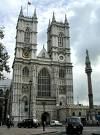
In 1052 Edward the Confessor begins rebuilding Westminster (St. Peter's) Abbey (finished 1060), becoming the first English church built in the Romanesque style. On Dec. 28, 1065 the 513 ft. x 203 ft. Latin cross-shaped Romanesque Benedictine Westminster Abbey (Collegiate Church of St. Peter) in London (begun 1052) is consecrated, becoming the English royal church; Edward the Confessor is not present; the nave is 38 ft. wide and 102 ft. high; the twin towers on the W are 225 ft. high; in 1245 Henry III begins enlarging it.
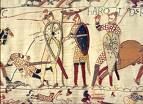




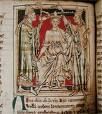

1066: Pop. of Anglo-Saxon England: 1M. The 270' x 20" Bayeux Tapestry (embroidered wool cloth on a linen canvas), created by the victorious Normans starting next year tells the tale of the Norman Conquest of England in the Big Year 1066, incl. the Comet, the Big Bad Conqueror, and Harold with an Arrow in His Eye with Diamonds, complete with a cast of 600 people, 200 horses, 40 ships, and a cameo by Edward the Confessor; only 15 people are named, and only six named in standalone fashion, incl. Harold (twice), William, Robert, Eustace, and the mysterious Turold the Dwarf - the original Sgt. Pepper? I wish I was a little bit taller, like six foot nine? On Jan. 5 Edward the Confessor (b. 1003) (son of Ethelred II and Emma) dies childless in London, and his remains are entombed behind the High Altar of Westminster Abbey, starting a tradition that carries through to George II as every English monarch except Edward V and Edward VII is crowned there; he leaves no Saxon heir to the English throne, but allegedly names his 6'4" blonde brother-in-law Harold Godwinson, earl of Wessex (grandson of prior king Hardicanute Godwin, son of Canute and Emma) as his successor on his deathbed, and on Jan. 5 the Witan elects Harold, who is crowned Harold II Godwinson (1022-66), the 20th monarch of England (last Anglo-Saxon) at Westminster Abbey on Jan. 6, after which on Mar. 20 Halley's Comet appears, which his fellow Anglo-Saxons take as a bad 666 omen (6-6-66); "And in this year also earl Harold was hallowed king; and he experienced little quiet therein, the while that he ruled the realm" (Anglo-Saxon Chronicle); his rival, Norman duke #6 William II (the Bastard) (1026-87) (1st cousin, once removed of Edward the Confessor via his mother Emma, whom he is the grandnephew of) claims the throne by right of succession, and also claims that both Edward and Harold had promised it to him, and gets Harold excommunicated by Pope Alexander II for his dirty business over the exiled Norman archbishop of Canterbury and for not deposing the Anglo-Saxon one, helping William's army by giving him a consecrated banner as a sign of papal approval in hopes of turning the English people gainst Harold, while assembling a fleet of 700 ships in Dives-sur-Mer on the coast of Normandy and assembling an army on the Isle of Wight, causing Harold to begin guarding the coasts of England against William during the summer; too bad, on Sept. 8 after provisions run low, a large part of Harold's force disbands in order to bring in the harvest, and he returns to London; meanwhile Harold's pissed-off brother Tostig Godwinson, earl of Northumbria sails to Norway and persuades Viking king (since 1046) Harald III Hardrada (Haardraade) (1016-66) (did his wife call him that or was he just bragging?) to help him seize the crown, and after waiting for a storm to pass on Sept. 12, they arrive together with a fleet of 270 ships, plunder the coast and burn Scarborough, then sail up the Humber River, attacking from the N at York and defeating the N earls on Sept. 20 at the Battle of Fulford Gate outside Jorvik (York); after receiving the bad news, Harold II issues the immortal gay-curious soundbyte: "I will give him just six feet of English soil, or, since they say he is a tall man, I will give him seven feet"; on Sept. 20 Harold leaves London, gathers the remainder of his c oastal militia along with his thegns and household troops (leaving the S coast unwatched, which gives Duke William his chance), and makes a brilliant dash N, covering 190 mi. in five days, surprising the invaders on Sept. 25 at the Battle of Stamford Bridge 8 mi. E of Jorvik in modern-day East Riding of Yorkshire, becoming the greatest battle so far between Norse and Anglo-Saxons; the over-confident Vikings decide not to wear their armor of leather jerkins with sewn-on metal rings because of the heat, and Harald is KIA with an arrow through his throat; Tostig and many other Vikings are also KIA, and only 30 Viking ships make it back to Norway; England has now been made safe for Anglo-Saxons forever, and they can keep speaking German and there will never be a Shakespeare, right?; too bad, Duke William, promising spoils, has been busy gathering an army of 6K-12K (7.5K?) from Normandy and all over Europe, incl. France, Italy, and Spain (incl. 1K mainly landless Norman knights, plus 500 more from Flanders and Brittany), and sails from Bayeux in Normandy in his long ships (his ship is the Mora, bought for him by his wife Matilda), landing on Sept. 28 in Pevensey (pee in the sea?) on the SW tip of Sussex (65 mi. SSE from London), proceeding to terrorize the countryside, making use of the Chevauchee (Chevauchée) (Fr. "horse charge") to burn and pillage in order to force Harold to fight while marching E to Hastings, causing tired Harold and his brothers Gyrth Godwinson (1032-66) and Leofwine Godwinson (1035-66) to hastily attempt to gather a larger force than William (the N earls are too late, and forces end up about equal, incl. 2K-3K Saxon housecarls, and hardly any cavalry like the Normans have, because the insulated Anglo-Saxons never learned to fight on horseback), then march 58 mi. in three days, waiting for William the Bastard a few mi. from Hastings on Caldbec Hill, which with Senlac Hill (Ridge) (originally Santlache, OE for sandy stream, then renamed by the Normans to Sanguelac, Fr. for bloody lake) guards the interior; on Oct. 14 (Oct. 21 Gregorian) (Sun.) after William learns of their position, the 8-hour unhasty Battle of Hastings (Senlac) (one of the longest medieval battles) features the Companions of William the Conqueror fighting an Anglo-Saxon shield wall with feigned Norman retreats to cut them down with cavalry as they try to climb back up the hill; both sides wear chain mail at least, but the Normans have archers and knights, and the Anglo-Saxons take 4K casualties to 2.5K for the Normans, contracting them around tall, blonde, good-arm John Elway, er, Harold, until William's cavalry drives home a charge at Harold, who stands his ground surrounded by his housecarls, but is KIA by an arrow through the eye (according to the Bayeux Tapestry) in the next Norman charge, then his brothers are KIA, and his depleted army flees after losing 35% of their men, later regrouping then suffering more deaths from dysentery; the battle is so close that if Harold could have held out for another hour, an approaching Saxon fleet could have blocked off William's rear and sandwiched him in a 2-front battle, preventing reinforcements or retreat, and the Normans would have been completely crushed?; the battle wipes out the Anglo-Saxon aristrocracy, with the few survivors turned into serfs, allowing the Norman aristocracy to easily take over, and another coup replaces the Anglo-Saxon higher clergy with Normans; the first major medieval battle using knights, spawning their myth of invincibility?; William the Conqueror (Dark Horse MVP of the English Super Bowl, known for his 4th-quarter comebacks?) then plunders SW England, and advances though the Dover Strait towns (Dover, et al.) to secure his communications with Normandy, then up the Thames River looking to cross over to head to London and being repulsed until Anglo-Saxon lord Wigod (Wigot) (kindsman of Edward the Confessor) invites him to cross from W to E at Wallingford in Berkshire N of London, then E to Berkhamsted (Berkhamstead) in order to cut off any aid which Edwin and Morcar might send; meanwhile on Oct. 15 the Witan elects Edgar (the) Aetheling (1051-1126), grandson of Edmund II Ironside (last surviving rep. of the West Saxon royal house of Cerdic) as the new king, never coronating him; too bad, after exchanging letters and failing to recruit enough patriotic Anglo-Saxons from the hinterland, the undefended city of London finally capitulates, sending a delegation outside the walls to kiss foot, and William's army peacock-struts into London, where the Witan offers him the crown, and Edgar resigns on Oct. 10 at Berkhamsted (we were just kidding, you da king, you da king?), being taken back to Normandy by William and treated well until he joins the 1068 rebellion; on Dec. 25 (Christmas Day) William the Bastard becomes William the Conqueror, and is crowned William I (1026-87) (21st English monarch) at Westminster Abbey by York archbishop (since 1060) Ealdred (Aldred) (-1069), assisted by excommunicated Canterbury archbishop Stigand (who has the wealthiest estates in England after Harold), tying England to Normandy for 150 years (until 1204); the first of 3x that England has three kings in the same year (1483, 1936); William begins feudalizing England, completing it by his death in 1087; he keeps the local shires and Hundred Courts, along with the Royal Writ and cool Anglo-Saxon coronation order, but makes sure that estates are spread out over two or more counties to stop attempts at provincial autonomy; each royal tenant-in-chief has to supply from 5-60 knights (in multiples of five) to the king when ordered, a total of 5K for the country; knowing that they can only be made to serve 40 days a year, and are too expensive to transport across the Channel, William institutes scutage ("shield money"), allowing the payment of money in lieu of service so he can hire foreign mercenaries in their place, which later helps the English monarchy raise bigger armies than the French et al.; the Witan is combined with the Norman Curia Ducis (duke's court) to form the Curia Regis (king's court); 3x a year all royal vassals must attend it to hear his announcements, advise him on policy, and hear lawsuits involving the tenants-in-chief; no castles can be built without royal permission; the Anglo-Saxon title of sheriff (shire reeve) is coopted for Norman viscounts, who turn the office from weak to powerful, presiding over the shire courts, where William restores the old Carolingian (and forgotten Anglo-Saxon practice) of swearing-in juries, and acting as local agents of the royal treasury, taking on even the greatest lords in the name of the king; the hereditary rank of baron/baroness (lowest rank, below earl/countess) is created; the title of earl (deriving from the Scandinavian word jarl for chieftain) being cooler to Anglo-Saxons than the Continental title of count, the palatine earldoms of Kent, Hereford, Shrewsbury, and Chester are created, along with the barons of the Cinque Ports (Dover, Hastings, Sandwich, Romney, Hythe, later Winchelsea and Rye) to guard the coast of the Strait of Dover; the fast crushing Norman takeover leads to a loss of prestige for the Anglo-Saxons, who become "dogs", and for the next four decades the haughty superior Normans hold all Anglo-Saxon culture in utter contempt, destroying art works and mss., and turning the Anglo-Saxon language into hut talk fit only for peasants, while for the next 1.5 cents. England becomes a cultural province of France as English society begins to split into a French-speaking upper class and hut-talk-speaking middle and lower classes; the Normans introduce many French words to the Anglo-Saxon dogs, incl. boeuf, mouton, veau, porc, and poularde, which are transformed into beef, mutton, veal, pork, and poultry, along with Latin words, making the dogs want to use them to make themselves seem higher in class, e.g., turning hearty welcome into cordial reception; the Norman takeover was a blessing in disguise since otherwise their disintegrating kingdom would have been taken over by the Norse, cutting off England from exciting French cultural progress, although, duh, the retro Norse wouldn't have destroyed Anglo-Saxon culture and would have eventually been thrown out?; William I becomes Europe's most powerful monarch, setting up a new kind of kingdom that relies on law and admin. machinery rather than ideology to unify it like the Euro monarchies do, beginning the trend toward secularism and absolutism that dominates the 12th and 13th cents.; Norman Romanesque Architecture is born; Fotheringay Castle in Northamptonshire is begun; William I's half-brother Robert of Montain becomes earl of Cornwall, and builds Launceston Castle; the office of queen's (royal) champion is granted to Robert Marmyon, along with the castle-manor of Tamworth and the manor of Scrivelsby, with the job of riding in full armor into Westminster Hall during a coronation to fight anybody challenging the king's title (until 1377); the Norman Pierpoint family settles in a manor in West Sussex (Wessex) taken from Earl Godwin, which becomes known as Hurstpierpoint ("the wood of Pierpoint"); (a new hope?) although William I is king, Harold's partisans still hold most of the wild wild west (Wessex), incl. Barnstaple Castle in Barnstaple, North Devon at the mouth of the Taw River at the entrance to the Bristol Channel, which is granted by William I to Geoffrey de Montbray (-1093), who loses his barony in 1095 after rebelling against William II - Anglo-Saxon Jedi freedom fighters plan revenge against the haughty Norman evil emperor and his stormtroopers, but too bad, their Luke Skywalker is a wuss? After the Norman conquest of England, a fleet of 235 Anglo-Saxon ships sails to Constantinople, joining the imperial elite guard manned since the late 900s by Varangians (Vikings). William I the Conqueror agrees to respect the sovereignty of London, which becomes known as a sovereign city headed by its own lord mayor; before that it was ruled by an ealdorman or underking; Only three Anglo-Saxon families survive to modern times, incl. the Arden Family, named after the Arden Forest in Warwickshire, founded by Alwin (Aethelwine), sheriff of Warwickshire, nephew of Earl Leofric of Mercia, counting William Shakespeare as a descendant via his mother Mary Arden, the Berkeley Family in Gloucestershire, and the Swinton Family in Northumberland. William I turns the Anglo-Saxon legal system French, introducing Trial by CombatGeoffroi de Purelli sets down the rules for jousting tournaments, then is killed at his own tournament; jousting is just one type of Hastlitude (Lat. "lance games") - oil the quintain? After the Norman conquest, mass agricultural practices are standardized, pork is eaten more, and dairy products less, the diet remains dominated by vegetables, cereals, beef, and mutton. After the Norman conquest, both men and women in England begin wearing their hair very long, incl. clergy and soldiers - the original Beatles, removed by centuries numbering 9?
In 1067 William I the Conqueror imposes taxes on Northumbria to pay for his castle construction spree, pissing-off the Northumbrians and fomenting rebellion.
In 1067 William I founds Battle Abbey in Hastings to commemorate his big V over the Saxon dogs, housing a copy of the Battle Abbey Roll, listing his 500 knightly companions, the original being housed in the Dives Cathedral in Normandy; the Hastings copy is moved to Cowdray House near Midhurst, which burns down in 1793.
In 1067 Canterbury (Christ's) Church (where its first archbishop St. Augustine was crowned by King Ethelbert of Kent in 597) burns down, and Lanfranc begins to build a more magnificent one in Romanesque style; part of it is destroyed by fire in 1174.
Works on Hastings hit the bestseller list at Scarborough Fair? In 1067 Bishop Guy of Amiens writes Carmen de Hastingae Proelio (Song of the Battle of Hastings), giving the battle from the English POV; how the Norman knights were supposed to take out the English archers first then go after the shield wall; claims that Harold was felled by a hit squad of four knights sent by William (to avoid single combat?), Eustace of Boulogne, Guy de Montfort, Walter Giffard the Younger, and Hugh of Ponthieu) with lances, swords and javelins, and doesn't mention any arrow in eye; one pierces his shield and strikes his chest, the 2nd lances his gut, a 3rd cuts off his leg, and the 4th cuts off his head?
In spring 1068 William I overthrows Harold Godwinson's partisans, led by Earl Edwin and Earl Morcar in the W, then in the fall brings the Midlands and N into subjection, but treats the rebels leniently, although Edgar Aetheling, who joined in the rebellion flees to the Scottish court of Malcolm III, along with his sister Margaret, and Norman baron William (the Seemly) Sinclair (1028-78) of Saint-Clair-sur-Epte, who is granted the barony of Roslin (Rosslyn) in Midlothian 7 mi. S of Edinburgh, founding Clan Sinclair in Scotland, after which his sons get involved with the Knights Templars and the Holy Grail business - and the Da Vinci Code is on?
In 1068 William I sends mercenary Normans into Wales, who permanently separate it into N and S halves.
In 1068 after two of Harold Godwinson's sons flee to Ireland after his 1066 death in Hastings and negotiate with Diarmait mac Mael for his Dublin fleet of 52 ships, they sail up the Avon River and attack Bristol, England, but are repulsed, after which they successfully land in Somerset and take plunder, then organize a larger expedition and attack Devon next year, but are repulsed, after which they sail for the court of their uncle the king of Denmark, becoming the last raid by Norse Dublin on England; in 1068 Diarmait mac Mael presents another Irish king with Harold's battle standard.
In 1068 Norman lord Richard fitz Gilbert (1034-90) is rewarded for his support of William I with 176 lordships and large land grants, incl. in Clare, Suffolk, where he builds Clare Castle; during William I's absence he serves as joint chief justiciar; after gaining the titles "de Clare", "and of Tonbridge", and "de Bienfaite", he founds the de Clare family, who rule the Welsh Marches, Suffolk, Surrey, Kent (Tonbridge), and later Ireland.
In 1068 Robert de Comyn (Comines) (Comine) (-1069) (named after Comines, Flanders), who followed William I to England becomes the first Norman earl of Northumberland, founding the Clan Comyn (Cumming) line, the most powerful family in 13th cent. Scotland.
In 1068 the office of High Sheriff of Nottinghamshire, Derbyshire and the Royal Forests is created for William Peverel, followed by Hugh fitz Baldric (1069-80), Hugh de Port (1081-7), Richard fitz Gotse (1088-1105), and Helgot (1105); in 1568 it is split into two sheriffs, of Nottinghamshire and Derbyshire.
In 1068 William I the Conqueror orders castles to be built along his line of march in the principal boroughs, incl. Arundel Castle, commanding the major bridging point of the Arun River, which guards the valley to the N through the South Downs; Arundel town later grows up on the slope below the castle to the S; Arun River is originally called the Tarrant River, and is later renamed after the castle and town, which becomes home to the future dukes of Norfolk and earls marshal of England; the lucky people born in Arundel are known locally as Mullets, due to the presence of mullet (fish) in the river; the original Nottingham Castle is established on Castle Rock (Hill) on the ruins of the Roman military outpost of Camboritum (modern-day Cambridge) by William Peveril (1040-1115) for William I (his daddy?).
In 1068 Warwick Castle (pr. like warick) on the poetic Avon River is built by William I; in 1604 it is granted to poet Sir Fulke Greville (1554-1628), friend and biographer of poet Sir Philip Sidney.

In 1069 Norman earl Robert de Comines is ambushed and killed by Northumbrian rebels, who meet in York and meet with Edgar Aethling after he returns from Scotland; William I quickly mobilizes an army and meets them ner York before they can recruit more troops, defeating them and causing the rebel leaders incl. Edgar the Aetheling to escape to Scotland; William I pillages York and increases the garrison, building new forts; Malcolm III of Scotland agrees to support the claim of Edgar Aetheling to the English crown in return for his sister Margaret Aetheling marrying him; meanwhile Edgar joins with King Sweyn II Estridsson of Denmark, Canute's nephew, who also claims the English throne, and their combined forces raid N England, capturing Jorvik (York); after William I the Conqueror comes N and pays the Danes to skoot, causing Edgar to skedaddle back to Scotland, he practices tough love by laying waste all the land N to Durham S of the River Tyne, and killing or driving out the pop. during a winter campaign (1069-70), messing the region up so bad that it takes more than two cents. to partially recover, and until the 19th cent. to fully recover; "Throughout nearly the whole of England, so severe a famine prevailed in most parts of the kingdom, but chiefly in Northumbria and the adjacent provinces, that men were driven to feed on the flesh of horses, dogs, cats, and even human beings" (Chronicle of Florence of Worcester); the Norman Bishopric of Durham in the Province of York is created; the Marcher Lords of Wales (Ger. "marko" = boundary) (equivalent of a marquess, and margrave in the HRE), Norman barons ruling the border with what's left of Wales are created, controlling Cardiff on the N coast of the Bristol Channel; in the 13th cent. they are called the Earls of March, with the Mortimers on the Welsh border and the Dunbars on the Scottish border; meanwhile a shipload of Anglo-Saxons fleeing William I, incl. Anglo-Saxon royal claimant Edgar Aetheling, his mother, and sisters Christina and (St.) Margaret Aetheling of Saxony (1045-93) is shipwrecked in the Firth of Forth, and they seek protection from Malcolm III Canmore, Macbeth's successor, who had acquired Anglo-Saxon culture during his long residence at the court of Edward the Confessor, and whose invasion of Northumbria this year to grab it from William is bloodily repulsed, making him see his chance to fork into the West Saxon Dynasty and produce an heir to the restored Anglo-Saxon throne; what a coincidence, his first wife Ingibjorg just happens to die, leaving him a bachelor?; the Teutonic lowlands begin their domination of the Celtic highlands - lord almighty, feel my temperature rising?
On Apr. 11, 1070 ecclesiastical councils held in the presence of papal legates deprive Stigand of his see, and substitute Norman clergymen for English; on Aug. 15 Lanfranc (1005-89) of Caen (of Lombard descent) becomes archbishop #35 of Canterbury (until 1089), leading the papal program of reform in England, becoming William's chief adviser of state affairs (PM); after deciding that the Anglo-Saxon clergy are too addicted to hunting, gaming, and marriage, he replaces them with Normans, and in an effort to raise their moral and intellectual level draws up the Customs of Canterbury, a new monastic constitution; clerical celibacy begins to be enforced, and bishops are given their own courts with separate jurisdiction, beginning the separation of canon and common law; tithes are levied on the pop. to support the church, and William I decrees that only he can approve papal bulls and legates; the nat. assembly of bishops is separated from the Witan, with its decrees subject to approval by the king; Lanfranc leads the attack on Berengar of Tours for denying the doctrine of transubstantiation; Lanfranc's pupil Anselm of Italy succeeds him as prior of the monastery of Bec in Normandy, and becomes abbot in 1078.
In 1070 a small band of Anglo-Saxons led by Hereward the Wake establish themselves on the Isle of Ely, using the fens to protect them, but are no threat to William I, who is now complete master of Norman England, and proceeds to found Feudalism ("legalized anarchy") (king-lord-overlord, tenant-in-chief, mesne tenant, etc.) in England for the next two cents.
In 1071 the English town of Boston is founded.
In 1071 Richmond Castle in Yorkshire, England is built.
In 1072 William I of England, pissed-off at his harboring of the Anglo-Saxon royals invades Scotland by land and sea, causing Malcolm III Canmore to chicken out, submit to William at Abernethy on the Tay River and pay homage, promising to expel the exiles, esp. pesky Edgar Aetheling, and surrendering his eldest son Donald (Donnchad) as hostage.
In 1073 the English church is reorganized by the Normans, with York subordinated to Canterbury.
In 1075 William I of England uses the fyrd (nat. fighting force) successfully against a group of rebel Norman vassals.
In 1075 the Cathedral Church of the Holy Trinity in Chichester, West Sussex, England is founded after the bishop of Selsey transfers there.
In 1075 the bishopric of Sarum near Salisbury, England is founded (ends 1220); their form of the Latin rite becomes the prevalent form in England before the Reformation.
On Mar. 19, 1077 Norman monk (Lanfranc's chamberlain) Gundulf (Gundulph) (-1108) is consecrated as bishop of Rochester, England (until Mar. 7, 1108), going on to display his prowess in building castles in Rochester, Colchester, and London.

In 1077 William I the Conqueror of England's eldest son Robert III Curthose (1053-1134) (short hose, because he's short?) asks for the rule of Normandy and Maine, and when daddy refuses, he rebels and attempts to seize Rouen, then flees to Gerberoi (until 1080).
In 1077 the first English Cluniac Monastery at Lewes in East Sussex, England is built.
In 1077 St. Albans Abbey in Hertfordshire, England is begun (ends 1115).
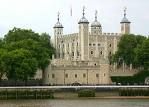
In 1078 in order to overawe the pesky Anglo-Saxon dogs, William I the Big Bad Conqueror orders the construction of the Tower of London outside the E wall of the city of London on the N Middlesex bank of the Thames River by Bishop Gundulf of Rochester as a "symbol of his power, a fortress for his defense, and a prison for his enemies"; it takes 30+ years to complete; a prophesy that when the ravens abandon it the English monarchy is supposed to fall causes seven clipped ravens to be kept there; the 90-ft. White Tower (royal residence) is built with stones from Normandy, with three square and one round turret (NE corner), and a single 2nd-story entrance on the S side reached by an external staircase; the jail is on the top, so that anybody attempting to jump better think twice; it contains a garderobe, toilet stalls facing away from the city; William I also builds Windsor (OE "river bank with a winch") Castle 22 mi. W of London on a chalky outcrop overlooking the Thames River, replacing a royal Saxon residence.
In 1079 Malcolm III of Scotland reneges on his 1072 oaths and takes advantage of the apparent collapse of Norman power in N England to raid and sack Northumbria.
In 1079 the Romanesque (Norman Gothic) Winchester Cathedral in Winchester, Hampshire, England is begun by Bishop Walkelin (Walchelin) (-1098) (consecrated on Apr. 8, 1093), dedicated to the Holy Trinity, St. Peter, St. Paul, and St. Swithun, replacing the Old Minister (founded in 642), becoming one the largest cathedrals in Europe, with the longest nave and greatest overall length of any Gothic cathedral in Europe.
In Dec. 1085 after "mickle deep speech" with the great council, William I sends royal commissioners to each English county to compile The Domesday Book (Book of Winchester) (2 vols.), a census and survey of land ownership to assess property and establish a tax base in an attempt to increase the old Danegeld tax on land, which he restores on the theory that all land now belongs to the Conqueror, and Englishmen who accept his rule must repurchase it; when completed with the help of hundreds of juries it contains records for 13,418 settlements in the English counties S of the rivers Ribble and Tees (the current border with Scotland); "So narrowly did he commission them that there was not a yard of land... nor even an ox, nor a cow, nor a swine, that was not set down in his writ"; a total of 46 vineyards are recorded in S England from East Anglia to modern-day Somerset, growing to 139 in England and Wales in the time of Henry VIII, incl. 52 owned by the Church, 67 by noble families, and 11 by the crown; the book is used as the final doom or judgment in all realty disputes; after William I imposes an 8 p.m. curfew to prevent fires, lays heavy taxes upon all commercial activity incl. the use of bridges and roads, confiscates all vaults in monasteries, and deposes and jails Anglo-Saxon nobles, some patriotic Anglo-Saxons hole-up in inaccessible places to continue the resistance for over a cent., incl. Robin Hood of Sherwood Forest?

The bigger they are the harder they fall? In early Sept. 1087 after he wars with Philip I of France over boundaries and tarries in Rouen, having become so fat the he can barely move, causing Philip I to joke that he is "lying in", and there will be a grand display of candles at his funeral, pissed-off William I the Conqueror (b. 1027) vows to light Philip some candles, and sieges and burns Mantes, 30 mi. W of Paris; too bad, as he is riding among the ruins his horse stumbles, and he is thrown against the iron pommel of his saddle and falls, suffering abdominal injuries, and dies on Sept. 9 at St. Gervais Convent near Rouen after having centralized the Norman govt. of England so well that it is not successfully invaded again until ?; the downside is the subjection of not only the Celts but the Anglo-Saxons, and the worse serfdom ever seen on the island; the upside is introduction of French language and culture along with feudalism, chivalry, heraldry, and vocabulary, and better org. of agriculture; on his deathbed William I the Morbidly Obese confesses his sins, makes his will, distributes treasure to the poor and the Church, and provides for the rebuilding of Mantes; all his sons except Henry desert his deathbed to fight for the succession, while his officers and servants abscond with all the spoils they can grab; he leaves his eldest son (known for being easy-going, a fatal flaw?) Robert III Curthose (1053-1134) the duchy of Normandy, his mean middle son William II Rufus (the Red) (1057-1100) (known for his ruddy complexion and/or red beard) (Normans like to claim that their complexions are never ruddy like the Anglo-Saxon dogs) the crown of England in exchange for good behavior to his anointer and minister Lanfranc, and his youngest son (a good clark?) Henry I Beauclerc (1068-1135) 5K lbs. of silver to buy land (so he won't be called Henry Lackland?); "Red King" William II Rufus (1057-1100) is crowned (22nd monarch of England) (until Aug. 2, 1100) amid dissatisfaction by the Norman barons of England; after a rustic vassal carries his remains to the Abbaye aux Hommes in Caen, William I's well-lit funeral ceremony at Norman Romanesque-style St. Stephen's Church in Caen is halted when the bishops try to squeeze his rotting corpse into a narrow sarcophagus, and the stomach bursts, spewing royal stench over the mourners, who flee?; Malcolm II's son (by Ingibjorg) Donald, who had been brought up as a Norman since 1072 is released and knighted, and elects to remain in England; shortly after William II's coronation the London Fire of 1087 (other fires in 60, 675, 1666) burns down most of Norman London, incl. St. Paul's Cathedral; William I's Fleet River Palatine tower is destroyed, and part of the stone is used to rebuilt St. Paul's, which is rebuilt in Gothic style (consecrated 1240).
In 1096 the first teaching in Oxford, England in SC England (Oxfordshire); in 1167 Henry II bans English students from attending the U. of Paris, causing them to boost its fortune - more affordable but a little too close to mum and dad?
Early in the 12th cent. (during the reign of Henry I) the town of Cambridge in England is founded on the Cam River 47 mi. NNE of London on a natural route between the coast and interior, receiving extensive privileges as a river port and toll station.
In the 12th cent. the English monarch begins a tradition of distributing alms to the poor on Maundy Thursday (the day before Good Friday), giving two purses of Maundy coins ("n" pence in each) to n men and n women, where n is the the age of the sovereign in years; it is held at a different cathedral every year.
In the 12th cent. The Strand in Westminster, C London, which runs along the N bank of the Thames River becomes popular with the British upper classes, who build many mansions incl. Essex House, Arundel House, Somerset House, Savoy Palace, Durham House, and Cecil House before moving to the West End in the 17th cent., allowing the area to be taken over by coffee shops, restaurants and taverns, followed by music halls and theatres in the 19th cent.; celebs Charles Dickens, Ralph Waldo Emerson, and Virginia Woolf live there.
Thanks to the haughty Normans trying to force the Anglo-Saxons to give up their funky German for French, a bastard language begins to emerge, which unfortunately ends up taking over half the world? In the 12th cent. the French-speaking Norman invasion causes the indefinite article "a" to begin to emerge in Old English, which begins to diverge from the alphabetic principle in orthography, creating the "world's worst spelled language"; the Old English "gefeoht" (battle) becomes defunct; Middle English begins to supersede Old English; meanwhile in this cent. the dialect of the Ile-de-France becomes prevalent in France.
In the 12th cent. Norman Romanesque architecture undergoes the transformation to light-lofty-airy Gothic Architecture in France, spreading to England by the end of the cent.
In the 1100s decade Henry I of England establishes the yard as the distance from the point of his nose to the end of his thumb when his arm is outstretched; a fathom is the length of both arms outstretched.




On Aug. 2, 1100 English king (since Sept. 26, 1087) William II Rufus (the Red) (b. 1057) is killed in his New Forest by an arrow through the lung shot by Sir Walter Tyrell (Tirel), 3rd Lord of Poix (1065-110?) while hunting, and dies without receiving last rites, being found the next day by some peasants, who call in the nobles, who split quick; the clergy, who hate his guts for what he did to Anselm refuse to give him a church funeral, and blacken his name; Tyrel flees to France under suspicion that the shooting was no accident; on Aug. 5 his brother Henry Beauclerc (4th son of William I the Conqueror) seizes the throne as Henry I Beauclerc (1068-1135), becoming the 23rd English monarch (until Dec. 1, 1135); Henry I, who was in the hunting party himself (waiting in the wings like LBJ at Dealey Plaza?), soon proclaims that a man who kills another man during archery practice is absolved of murder; not to deny that the king is under law, however, upon ascending the throne he signs the Charter of Liberties, which reads almost exactly like the later Magna Charta; knowing that his brother Robert III Curthose is out on the First Crusade, he cuts him off at the pass by riding hard to Winchester to secure possession of the royal treasury and crown; meanwhile Henry I pub. the charter to remedy many of the perceived grievances against Rufus and win the people's favor; in Sept. after Canterbury archbishop (since 1093) Anselm returns from exile and he gets him to call a council of bishops to declare that she had never been a nun, although she had spent most of her life in a nunnery and was veiled, he marries Scottish babe Matilda (Edith) of Scotland (1079-1118), daughter of Malcolm III and St. Margaret, who becomes queen consort of England (until May 1, 1118), uniting the Norman and Anglo-Saxon bloodlines, and he begins a policy of using his "brood of bastards" (illegitimate children, which he has plenty of, 20+) to strengthen his power by marrying off the daughters to nobles and magnates; meanwhile Matilda (who only has two children) becomes popular with her subjects, wowing them by going to church barefoot on Lent and kissing the hands of the sick, causing her to become known as "Matilda the Good Queen" and "Matilda of Blessed Memory"; they marry in the church in her hometown of Dunfermline near the Firth of Forth, becoming the first written mention, after which she establishes a new church dedicated to the Holy Trinity, which grows into an abbey in 1128 under Malcolm III's son David I, after which in 1160 its graveyard becomes the burial place of Scottish monarchs, starting with Alexander I and ending with Robert I the Bruce (1329); meanwhile in 1107 Norman baron Gilbert fitz Richard de Clare (1065-1117), who was present at the "accident" and kept his mouth shut gets his reward in the form of lands in Wales, incl. Cardigan Castle, making the de Clare name big in Norman England, and the terror of Wales (until 1314); Henry brings hanging back as the main means of execution for many crimes after William I and William II only hanged one each, the latter only for poaching royal deer (William of Aldrie in 1096).
In 1102 the tomb of Edward the Confessor (d. 1066) is opened, and it smells sweet like flowers and his body is perfectly preserved? - the poor Saxon dogs have to have something to celebrate?
In 1113 Henry I of England arranges the marriage of his future Scottish vassal king David I (b. 1080) to Matilda de Senlis (-1130), widow of the earl of Northampton and Huntingdon, and daughter of Earl Walther of Northumbria and William the Conqueror's niece Judith, making him earl of Huntingdon as well as prince of the Cumbrian region, and putting him in the top ranks of English nobility; he founds an abbey at Selkirk in his Scottish lands, and stocks it with monks from the austere order at Tiron near Chartres, France, becoming the first reformed order of monks in the British Isles, proving that David not only finally got religion but is a supporter of the reform movement? The Leges Henrici Primi (Laws of Henry I) are codified.
In Apr. 1114 Ralph d'Escures (de Turbine) (-1122) becomes archbishop of Canterbury (until 1122); in Aug. Thurstan (Turstin) (-1140) becomes archbishop of York (until 1140); too bad, Ralph refuses to consecrate Thurstan because he won't acknowledge obedience to him, and travels to Rome to see Pope Paschal II about it, but the latter had left the city, and he returns to England, going on to refuse orders from Popes Gelasius II and Calixtus II to consecrate him, the matter being resolved by his poisoning, er, death in 1122; meanwhile Henry I takes Ralph's side, and refuses permission to Thurstan to go to Rome himself.
In 1114 English king Henry I campaigns in Wales, assisted by Alexander I of Scotland.
In 1114 English king Henry I's legitimate daughter by Queen Matilda (Maud) marries HRE Henry V in Germany, who faces revolts in Saxony until 1121.
In 1115 St. Albans Abbey in England (begun 1078) is completed.
In 1115 Scone Abbey (pr. SKOON) on the Tay River 2 mi. E of Perth is founded by Alexander I for the coronation of Scottish kings (until 1651).
In 1115 Augustinian Norton Priority is established in Runcorn, England on the S bank of the Mersey River by William fitz Nigel (-1134).
In 1116 Louis VI the Fat of France begins the Second French-Norman War to consolidate his Norman frontier (ends 1120), and Henry I of England brings in his son-in-law HRE Henry V.
In 1116 Henry I of England calls the Council of Salisbury (the first English Parliament?), and orders Archbishop Thuristan to submit to Archbishop of Ralph of York, causing Thuristan to resign, although it never becomes effective.
In 1118 English monk Florence of Worcester (b. ?) dies, leaving Chronicon ex Chronicis, the first English attempt at a universal chronicle from Creation to the year 1140, based on the work of Irish monk Marianus Scotus (1028-82); other writers go on to carry it down to the year 1295; the real author is John of Worcester (-1140)?
On Jan. 29, 1119 Pope (since 1118) Gelasius II dies in the Abbey of Cluny, and on Feb. 1 cardinal Guido of Burgundy (Guy de Vienne), archbishop of Vienne (since 1088), 4th son of Count William I of Burgundy (1057-87) (one of the wealthiest men in Europe) is elected Pope (#161) Calixtus (Callistus) II (1065-1124), issuing the bull Sicut Judaesis, condemning violence against Jews (reaffirmed by 20+ of his successors?); after the new pope sends an embassy from Vienne to Strasbourg, HRE Henry V withdraws his support for Antipope Gregory VIII, but agrees to meets with the pope in Mousson near Rheims, where the Council of Rheims, attended by Louis VI of France meets in Oct; too bad, Henry V arrives with a 30K-man army, pissing-off popey and causing him to excommunicate both Henry V and Gregory VIII on Oct. 30; after trying unsuccessfully to reconcile brothers Henry I of England and Duke Robert II of Normandy, popey heads for Italy to oust da evil antipope - so I should have realized a lot of things before, if this is love give me more?
In June 1119 Henry I's son and heir William Adelin (Aetheling) (1103-1120 marries Matilda (Mahaut) of Anjou (1106-54), eldest daughter of Count Fulk V of Anjou in an effort to bring Anjou, Normandy's big rival into allegiance; too bad, a big rock messes things up 18 mo. later on the trip back to England - from broken dreams to beautiful results, you're how long from beautiful hair?
On Aug. 20, 1119 Henry I of England and his son William Aethling defeat French king Louis VI the Fat at the Battle of Bremule, and burn Evreux.
In Oct. 1119 Pope Calixtus II consecrates York archbishop Thurstan, pissing-off Henry I, who refuses to allow him to return to England until 1121 after he serves him in Normandy.
In 1120 peace is declared between Henry I of England and Louis VI the Fat of France, ending the Second French-Norman War (begun 1116); too bad, on Nov. 25 Henry I's only legitimate son and heir Prince William Adelin (Aetheling) (b. 1103) (son of Edith-Matilda, a descendant of King Alfred, causing him to be part Norman and part Saxon, boding well for the Anglo-Saxon dogs if he became king?), along with a large party of nobles returning from his marriage the previous year drown in the White Ship after it hits a rock in the English Channel off Barfleur at night on the way back from France and sinks; William initially survives, then drowns while attempting to rescue Countess Matilda of Perche, his half-sister; Stephen of Blois, who later usurps the English throne disembarks just before the ship sails due to a bout of diarrhea (a conspiracy?); Henry never smiles again; William's widow Isabella d'Anjou takes vows and becomes abbess #2 of Fontrevault (Fontrevaud) Abbey in the Loire Valley in Anjou (constructed in 1110-19 by Robert d'Abrissel), starting a string of rich and/or noble abbesses for this abbey, which coincidentally has both nuns and monks, and is where Henry II and Eleanor of Aquitaine are buried - there's no limit with a five-G buy?
On Jan. 24, 1121 Henry I of England marries his 2nd wife Adeliza (Adelicia) (Adela) (Aleidis) of Louvain (1103-51), "the fair maiden of Brabant", daughter of Count Godfrey I of Louvain.
In 1121 Alexander I of Scotland imports the first Arabian stallion and presents it to the Church of St. Andrews in Fife; meanwhile Henry I imports Arabian stallions to improve pony-sized Irish Hobby (Hoblin) horses.
In 1121 Reading Abbey in Berkshire, England is founded by Henry I.
In 1121 Robert, 1st Earl of Gloucester builds St. Mary's Church in Luton, Bedfordshire, England.
In 1122 Henry I of England creates the earldom of Gloucester for his bastard son Robert Fitzroy "Rufus" of Caen (1090-1147), who becomes the first earl of Gloucester.
On Jan. 10, 1123 English bishop of Lincoln (1093-1123) Robert Bloet (Bloett) (Bluett) (b. ?) dies in Woodstock, Oxfordshire while riding with Henry I and Bishop Roger of Salisbury, dying in the king's arms without receiving absolution, causing many to conclude that he ended up in Hell; last words: "I am dying"; on July 22 Alexander of Lincoln (-1148), nephew of Bishop Roger of Salisbury becomes bishop of Lincoln (until Feb. 1148), becoming known for his ostentatious luxurious lifestyle and his patronage of Geoffrey of Monmouth Henry of Huntingdon, Christina of Markyate, and Gilbert of Sempringham.
On Feb. 8, 1123 French-born (in Corbeil near Paris) William of Corbeil (-1136) becomes Canterbury archbishop #38 (until Nov. 21, 1136), and after Archbishop Thurstan of York refuses to consecrate him, his own suffragan bishops do it; he then travels to Rome to receive the 3-fingers-wide white lamb's wool pallium (scarf), with five black crosses and three gold pins to represent Christ's five wounds and the three nails on his Cross, finding that Thurstan had sent emissaries ahead of him to stop it, but Henry I and HRE Henry IV intervene, and he gets it - look at me now, boys?
In 1123 the town of Smithfield in NW London near Aldersgate becomes the home of St. Bartholomew's Priory, going on to host Bartholomew's Fair starting in 1133 and become the place of execution for heretics and political criminals incl. Sir William Wallace and Wat Tyler; St. Bartholomew's Hospital (AKA Bart's) in Smithfield, London is founded, becoming the oldest hospital in Europe.
In 1124 the new Rochester Cathedral in England is completed.
In 1124 English historian Eadmer (b. 1060) dies, leaving Historia Novorum in Anglia (history of England from 1066-1122), and Vita Anselmi, a life of his companion St. Anselm.
On Jan. 1, 1127 Henry I gets the English barons to recognize his daughter Empress Matilda as his heir; his eldest bastard son Robert, 1st Earl of Gloucester, who has been given control of Kent and the castle controlling the cross-Channel route is the first to swear - anything to humor the old fart?


On Aug. 27, 1127 (Pentecost) Geoffrey V "Le Bon" Plantagenet, Count of Anjou (1113-51) marries Empress Matilda (Maude) (1103-67), daughter of Henry I of England and widow of HRE Henry V; David I of Scotland becomes the first secular lord to swear an oath to uphold Matilda's rights to succeed to the English throne should his liege lord Henry I produce no male heir, in return for Henry acquiescing in the ecclesiastical freedom of Glasgow and St. Andrews from York; being an empress and way-outranking him, as well as being 10 years older, she turns out to be a, er, you can figure it out; next year Geoffrey's daddy Count Fulk leaves to become king of Jerusalem, letting him be the cunt, er, count of Anjou, which may or may not have helped.
In May 1130 Canterbury Cathedral in England (rebuilt in 1070-7) is dedicated; papal legate Cardinal John of Crema (Cremona) arrives, and lords it over the English clergy, causing Canterbury archbishop William of Corbeil to travel to Rome and get appointed as the first English papal legate in England and Scotland.

About 1130 the Church of the Holy Sepulchre, the oldest of the four round churches in England is built in Cambridge, England by the Knights Templar as a clone of the one in Jerusalem.
About 1130 English Benedictine monk-chronicler Simeon (Symeon) of Durham writes History of the Church of Durham from 635, History of the Kings, and Chronicle of the Angles.
In 1131 the Neville (Nevill) Family is founded in England, going on to rise to great heights.
In 1132 Cistercian Fountains Abbey is founded 3 mi. SW of Ripon in North Yorkshire, England near Aldfield; in 1539 it is dissolved under orders of Henry VIII.
On Aug. 24, 1133 the first St. Bartholomew's Fair is held in Smithfield, England in NW London outside Aldersgate (until 1855).
In 1133 a disease strikes cattle and pigs in Britain.
In 1133 the Diocese of Carlisle in Britain is founded by Henry I as part of the Diocese of Durham, with Aethelwold as bishop #1.
On May 26, 1135 (Pentecost) a fire seriously damages St. Paul's Cathedral and London Bridge in London, England.



Slim fast, find your good life? On Nov. 25, 1135 after making the barons and bishops swear fealty to his choice for succession, English king (since 1100) Henry I Beauclerc (b. 1068) falls ill at Lyons-la-Foret in Normandy after eating too many lampreys, and dies on Dec. 1 in Saint-Denis-en-Lyons; having no male heirs because of the 1120 White Ship disaster he leaves the throne to his sole legitimate child (of 20+) Henry II (b. 1133) and his mother Empress Matilda (Maude) (Maude); although there is no male supremacy Salian Law in England, everybody knows the story of Peter Rabbit, and both because she acts like a royal asshole, and because Henry I's expansion of royal power has been threatening the feudal privileges of the nobility, three weeks later on Dec. 22 Henry I's favorite nephew (her cousin's husband) Stephen of Blois (Boulogne) (Mortain and Boulogne) (1096-1154), son of William I's daughter Adela, and richest man in England and Normandy seizes the throne (until Oct. 25, 1154), helped by the unpopularity of Matilda with the people, probably because of their unwillingness to accept a woman ruler, and the fact that her hubby is unpopular red-haired Geoffrey V Plantagenet (Le Bel) (the Handsome) (Martel) (the Hammer), Count of Anjou (1113-51) (son of Jerusalem king Fulk of Anjou), head of the French province that is always trying to take over Normandy; on Dec. 22 after the barons switch their support, Stephen I becomes England's 24th monarch, crowned by Canterbury archbishop William of Corbeil, who reneges on a promise to Henry I (like everybody else); guess what, Matilda's husband Count Geoffrey V the Handsome of Anjou then undertakes to conquer Normandy in her name this time, beginning The Anarchy (Nineteen-Year Winter) (ends 1154); too bad, he later proves unwilling to send reinforcements to England; meanwhile David I of Scotland, the first lay person to take an oath to uphold Matilda in 1127 declares war on Stephen.
In 1135 after the efforts of good clerk Henry I, the Pipe Rolls of the Exchequer (fancy word for abacus), containing sophisticated accounts of the royal income and expenditures begin to be compiled by the exchequer in England; the French Capetian monarchy takes until the early 13th cent. to catch up.
In Oct. 1136 the Battle of Crug Mawr (Great Barrow) (Cardigan) 2 mi. NE of Cardigan sees the warlike Welsh introduce the longbow, routing the Norman heavy horse, killing 3K and winning the battle, followed by a great slaughter in the town.
In 1136 Scottish king David I invades N England allegedly to support Matilda, but really to take possession of "his" parts there, incl. Cumberland, Westmorland, and Northumberland, capturing Carlisle and Newcastle, then sieging Durham before Stephen I meets him there with his army, and they agree to a peace treaty greatly favoring the Scots, which gives David time to recuperate after 2 mo. of Vs; David I refuses to do homage to Stephen, but permits his son Earl Henry to do so in order to gain control of some English territory, getting him created earl of Huntingdon, lord of Doncaster, and confirmed in possession of Carlisle; David surrenders Newcastle in return for tacit acceptance of his son's future rights to Northumberland; meanwhile Matilda continues to assert her right to the English throne, with Stephen's whimpy indecisiveness playing into her hands and encouraging the barons to trespass on the king's rights, leading to widespread anarchy.
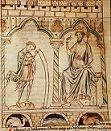

In 1136 English historian Geoffrey of Monmouth (1100-55) writes Historia Regum Britanniae (Historia Britonum) (History of the Kings of Britain) (12 vols.); based on the writings of Nennius; claims to trace Britain from London's settlement by first king Brutus (Brut), great-grandson of Trojan hero Aeneas to the death of Cadwallader (Caedwalla) in the 7th cent. C.E., mentioning Caesar's invasions and British kings Leir (Lear) and Cymbeline (later subject of Shakespeare plays); tries to make the English kings out to be as important as the Roman emperors; vols. 9-11 found the modern Arthurian Legend, becoming the first book to place King Arthur and his father Uther the Conqueror in the line of British kings, and to describe Merlin ("small falcon" in Middle English, a deliberate mistrans. of Myrddin or Merthyn or Mervyn, meaning "sea tower" or "sea hill" in Old Welsh Gaelic, to avoid asssociation with French merde = shit?), whom he claims built Stonehenge using giants; the work earns the patronage of Earl Robert of Gloucester and two bishops, getting him named archdeacon of Llandaff next year, followed by bishop of St. Asaph in 1152. About 1150 he writes the 1,529-line Latin hexameter poem Life of Merlin (Vita Merlini), about his mad life as a wild man of the woods, and his conversations with sister-poet Taliesin, based on Celtic bard Myrddin Wyllt and wild man Laioken, along with an account of King Arthur's journey to Avalon; "I set myself to sing the madness of the bard of prophecy."
In 1136 Scarborough Castle is built in Yorkshire, England on a high headland above the North Sea - when's the fair?
Look and feel your best with a beauty career? In Jan. 1138 David I of Scotland invades Northumberland for the 3rd time in support of Matilda, stinking himself up with atrocities, incl. murder, blackmail, church desecration, and giving female captives to Gaelic levies as slaves, which shocks the English, who had thought of David as "their" guy, trying to help a woman, er, forget it (really shock at their vaunted cultural and economic superiority being shown up?); in Feb. Stephen rounds up an army and launches a counter-raid into Lothian, but avoids the Scots, and Stephen retreats to England; in June David splits his armies, putting a Gaelic one in charge of his nephew William Fitz Duncan, earl of Moray, who heads to Lancashire and harries Craven and Furness, then defeats a Norman army on June 10 at the Battle of Clitheroe in Lancashire at the S edge of the Yorkshire Dales near Bowland Falls; on Aug. 22 after the Scots take Cumberland, Northumberland, Carlisle, and Bamburgh Castle, and reunite on the S side of the Tyne River, the 3-hour Battle of the Standard(s) on Cowton Moor near Northallerton in Yorkshire on the Great North Road is a big D for the 16K Scots, led by David I, who get their butts kicked by a 10K-man English force led by William le Gros, 1st Earl of Abemarle (-1179), and cheered on by Archbishop Thurstan of York, who fights on a hill behind a chariot carrying a ship's mast topped with a bunch of consecrated you-know-whats (St. Peter of York, St. Cuthbert of Durham, St. Wilfrid of Ripon, St. John of Beverley), and decimates the pesky charging Scots (crying "Albanaich!" - "men of Scotland!") with arrows until they give up and retreat after David's Norman vassals split ranks with him, not wanting to fight against fellow Normans alongside "Galwegians" (Gaels), and the leaders of the latter get killed despite zany charges against arrows while wearing no chain mail; meanwhile a group of English barons rebel on behalf of Matilda, keeping Stephen from following up his V against the Scots, and allowing David to retire to Carlisle Castle with most of his army intact and consolidate his hold on seized territory, agreeing to a 6-week truce in late Sept., then capturing pesky Wark on Tweed (Carham) Castle on the Tweed River in Northumberland in Nov., which had been under siege since Jan. and wasn't mentioned; meanwhile Earl Robert of Gloucester declares for Matilda, and is defeated in Normandy by Count Waleran of Meulan, while his English allies are crushed by Stephen and driven back to Bristol; Castle Cary in Somerset is sieged by Stephen; in 1141 Stephen makes Flemish gen. William of Ypres the new earl of Kent, until Henry II pulls the plug in 1155; Sir Henry Sinclair (1100-65) is rewarded with lands in Cardaine for his services at the Battle of the Standard.
In 1138 Waleran de Beaumont (1104-66), son of Robert de Beaumont, 1st Earl of Leicester, and twin brother of Robert de Beaumont, 2nd Earl of Leicester is created the 1st Earl of Worcester by English king Stephen I; too bad, after the 1141 Battle of Lincoln he switches to Matilda's side, and is deprived of his earldom by Stephen in 1145, after which the earldom goes dead for 250 years (until 1397).

On Sept. 30, 1139 after Henry I's daughter Matilda, aided by her half-brother Earl Robert of Gloucester prepares to invade England to claim the throne, they land at Arundel in Norfolk, and civil war is on, forcing Stephen I to send his wife Queen Maud (Matilda) of Boulogne (1105-52) (a Matilda clone to throw off later historyscopers?) to sign a truce with David I of Scotland on Apr. 9, confirming his son Earl Henry in possession of the 1136 estates, plus the earldom of Northumbria, but excluding the key English castles of Newcastle and Bamburgh and the bishopric of Durham between the Tyne and Tees Rivers; David returns his hostages, and Earl Henry marries Ada de Warenne (Adeline de Varenne) (1120-78), sister of one of Stephen's key supporters William de Warenne, 3rd Earl of Surrey (1119-48), binding him into Stephen's service, although David is now out from under the English kings' shadow and is his own man; meanwhile Earl Robert leaves for Bristol, allowing Stephen to blockade Matila in Arundel Castle along with Henry II's 2nd wife Queen Adeliza, but he proves a sport and lets them escape under escort to Bristol, after which Matilda sets up her base in W England and the Severn Valley.
In 1139 English king Henry I's former royal marshal (head of the king's household troops) John FitzGilbert the Marshalof the Horses (1105-65), who won the right to make his title hereditary, then switched to Stephen I after Henry I died in order to gain the choice castles of Marlborough and Ludgershall and gain control of the Kennet River Valley in Wiltshire, decides to switch back to Empress Matilda.

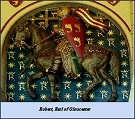
On Feb. 2, 1141 Empress Matilda's supporters, led by her half-brother (eldest bastard son of Henry I, known for his education) Robert de Caen, 1st Earl of Gloucester (1090-1147) defeat and capture Stephen I at the First Battle of Lincoln (1217, 1878), and imprison him in Bristol, and after clevely escaping a Norman castle in Devizes in S England disguised as a corpse, and being joined by her uncle David I of Scotland, on Apr. 7 Empress Matilda (Maud) (1102-67) is proclaimed queen in London (until 1148), preferring the title of Lady of the English, like Alfred the Great's daughter Ethelfleda (Lady of the Mercians); too bad, she goofs in refusing the Londonders' timely request to halve their taxes, causing them to shut the city gates to her on June 24, reigniting the civil war; she then goofs again by trying to capture Winchester, and is surrounded while sieging Wolvesey Castle (built in 1130-6 by Stephen's brother Henry of Blois, Bishop of Winchester) on the Itchen (Aire) River in Hampshire, resulting on Sept. 14 in the epic Rout (Battle) of Winchester, where the earl of Gloucester is captured in a rearguard action by the forces of Stephen I's wife Matilda of Boulogne, and held for 2 mo. in Rochester Castle until Empress Matilda exchanges him for Stephen on Nov. 1 (during which exchange the earl assures Stephen that the fight is nothing personal), which causes the gymnophobe clergy to jump and dethrone her and declare for Stephen; meanwhile Matilda flees Winchester to the protection of John FitzGilbert the Marshal at Ludgershall Castle, who is attacked while covering her flight, takes refuge in Wherwell Abbey, then loses an eye to dripping lead from the melting roof after they fire the bldg.); David I narrowly avoids capture at Winchester, and barely escapes back to Scotland, deciding to stick to tightening his grip on N England, Durham, NW Yorkshire, and N Lancashire; John the Marshal scores another coup by divorcing his old bag and marrying Sibyl, sister of constable Patrick of Salisbury (1120-68) in exchange for flopping his support from Stephen I to Matilda and being created the 1st earl of Salisbury in 1145; John later sends his new son William the Marshal (b. 1146) to live with him, where he learns the art of knighthood and begins his rise to #1 knight of all time - yi yi yi, I wished I lived back then?
In 1142 English-born Norman chronicler (Benedictine monk) Orderic Vitalis (b. 1075) dies in Saint-Evroul Abbey in Normandy, leaving Historia Ecclesiastica (Ecclesiastical History of England and Normandy) (13 vols.), the greatest English social history of the Middle Ages, covering from the birth of Christ through the defeat and capture of King Stephen at Lincoln in 1141, plus a history of his abbey; heavy on the history of William the Conqueror and his three sons Robert Curthose (1051-1134), William II Rufus (1056-1100), and Henry I Beauclerc (1068-1135); the years before 1067 are taken from William of Jumieges and William of Poitiers; Norman abbot Robert of Torigni (1110-86) later extends it through the reign of Henry I.

On Mar. 20, 1144 (Mon. after Palm Sun.) or Mar. 22 (Wed.) (day before Passover) Christian tanner's apprentice St. William of Norwich is allegedly murdered by Jews Christ-style in Norwich, England to provide them with ritual blood, and his body is found on Mar. 25 (Sat.) in Thorpe Wood, causing the Jews to be blamed, and the Jewish quarter to be sacked and burned; William is canonized after Benedictine monk Thomas of Mounmouth pub. a Latin work about him in 1173 titled "The Life and Miracles of St. William of Norwich", claiming to be there; the first time the Jews are accused of ritual murder, but not the last, as the horrible bloody images of what Jews might be doing to Christians to make their yummy matzoh prove addictive to anti-Semites - the Medieval version of porno?

In 1150 Matilda (Maud) (daughter of English King Henry I) and her red-haired hubby Count Geoffrey V of Anjou (1113-51) of W France (who likes to wear a yellow flowered sprig of the soulful broom plant Planta genista in his cap, earning him the lucky-with-chicks surname Plantagenet) cede Normandy to their short, freckled, red-haired, energetic son Duke Henry (future Henry II), who returns from Scotland; it had previously been acquired by Henry I in right of Matilda.
In 1151 the notorious prison known as The Clink in Southwark, England next to Winchester Palace is built for the bishop of Worchester, becoming known for maltreatment of prisoners until it burns down in 1780.




On Mar. 18, 1152 the 1137 marriage of 30-y.-o. Eleanor of Aquitaine (1122-1204) to Louis VII of France is annulled (officially due to lack of a male heir, but maybe because she had an affair during the Second Crusade?), and on May 18 she marries more plantworthy 19-y.-o. Henry Plantagenet (Curtmantle) (1133-89), Duke of Normandy and Count of Anjou, Maine, and Touraine (future Henry II), giving him control of over half of France with the power to pressure Louis' holdings from both N and S, causing Louis to feel that he has been robbed blind of her vast estates and cut off from direct access to the English Channel and the Atlantic, beginning a long struggle between England and France over Aquitaine (ends 1558); the Bordeaux and Graves areas of SW France on the left bank of the Garonne River between St. Pierre de Langon and Bordeaux in Guienne (Guyenne), known for their fine wines go to him, and the English upper class begin turning into claret (dry dark red wine) drinkers.
In Jan. 1153 Henry Plantagenet comes to England with 30-40 ships to battle for the crown, landing at Malmesbury; on Nov. 6 the Treaty of Wallingford promises him the crown upon the death of Stephen I, who is allowed to rule until his death; all properties seized since 1135 are to be restored, and all castles built since 1135 are to be demolished.


The House of Plantagenet is planted, and England's first real king of the people takes power, bringing back the good government of his grandfather William the Conqueror and further centralizing its administration? In sprig, er, spring 1154 Duke Henry Plantagenet returns to Normandy to a warm reception, and Louis VII renounces all rights to the duchy of Aquitaine; on Oct. 25 English king (since Dec. 22, 1135) Stephen I of Blois (b. 1096) dies in Dover, Kent, and on Dec. 19 Duke Henry returns to England and becomes Henry II Plantagenet (Fitzempress) (Curtmantle) (1133-89), (England's 25th monarch) (until July 6, 1189), ending the Norman and Blois Dynasties, and founding the Plantagenet (Angevin) Dynasty, which rules until 1399 (1485), immediately working to reestablish the royal institutions and curb the feudal privileges of the great baronial families, who had been benefiting from the so-called Anarchy; hairstyles begin to change in a flash, as men begin wearing their hair somewhat shorter; Normandy is back under English control (until 1204); the Angevin Empire extends from the Tweed River to the Pyreenes, combining England with the vast holdings of Eleanor (the entire W side and most of C France from Rouen down to Bayonne, including Normandy, Brittany, Maine, Anjou, Louraine, Poitou, La Marche, Aquitaine, Angoumois, Santonge, Perigord, Limousin, Auvergne, Agenais, Quercy, Rouergue, Gascony, and Bearn); the loser French king only rules the 50-mi.-wide French Royal Domain around and to the S of Paris, consisting of a few small territories passed down from Hugh Capet in 987, from Senlis on the N to Bourges on the S, and from Sens in the E to Orleans in the W; the remainder of France is in the hands of the counts of Flanders, Vermandois, Champagne, Blois, Bourbon, Toulouse, etc., and the duke of Burgundy; the Aug. 843 Partition (Treaty) of Verdun sets the boundary on the E; the old Spanish March of Charlemagne (Rousillon and Bigorre) in the Pyrenees owes nominal allegiance.
In 1155 English king Henry II abolishes fiscal earldoms and restores royal demesne; his choice of Thomas Becket as chancellor works out so well that Henry II feels free to go to the continent; having had the idea of conquering Ireland from the time of his accession, Henry II suggests an Irish expedition to the great council, but shelves the project for other business, then sends Norman brain man John of Salisbury to Pope Adrian IV to ask for lordship of Ireland; Becket supervises the rebuilding of Westminster Abbey.
In 1155 Maredudd ap Gruffydd dies, and his brother Lord Rhys ap Gruffydd (1132-97) becomes king of the Welsh kingdom of Deheubarth (Welsh "Right-Hand Part" [South]) in S Wales.
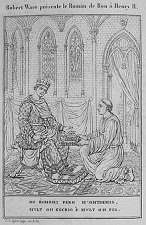
In 1155 English brain man Wace (1115-83) writes Geste des Bretons (Brut) (Deeds of the Britains), a history of the British kings starting with Brutus of Troy, based on Geoffrey of Monmouth's "History of the Kings of Britain", adding the Round Table, the code of chivalry, the tradition of knights errant going on quests or seeking adventures, with emphasis on ceremonial court activities. In 1172 he writes Roman de Rou, a chronicle of the Norman dukes, commissioned by Henry II in 1160.
In 1155 the city of Bristol in SW England 105 mi. W of London and 45 mi. E of Cardiff across the Severn River estuary from South Wales (modern-day pop. 463K/742K) receives a royal charter, going on to become one of the top three English cities by the 13th cent. after London and York, and granted county status in 1373; in modern times it has the 8th largest pop. in England.
Want to conquer a neighbor in the Middle Ages? Try pope in a pocket? In 1156 Norman philosopher-historian (pupil of Peter Abelard) John of Salisbury (1115-80) obtains from Pope Adrian IV the bull Laudabiliter ("It is praiseworthy"), AKA the Donation of Ireland, bestowing Ireland on English king (since 1154) Henry II of England (1133-89), along with a ring as the symbol of his investiture; meanwhile Henry II captures Anjou in France.

On Sept. 17, 1156 after reaching a compromise with the Welfs and marrying countess (since 148) Beatrice I of Burgundy (1143-84), heiress of Upper Burgundy, then making his cousin, Henry the Proud's son Henry the Lion (1129-95) the duke of Bavaria, HRE Frederick I Barbarossa issues the Privilegium Minus, making the margraviate of Austria a duchy and an inheritable fief of the House of Babenberg, with special privileges; former duke of Bavaria (since 1141) Henry (Heinrich) II Jasomirgott (1107-77) of the House of Babenberg becomes Austrian duke #1 (until 1177).
In 1156 the Mermaid Inn in Rye, East Sussex on the S coast of England is founded, making Rye famous; it is rebuilt in 1420.
In 1157 King Rhys of Deheubarth submits to Henry II, drops the title of king and becomes known as Lord Rhys - Lord Vader?
In 1158 Morgan ap Owain is killed by Ifor Bach, and is succeded as lord of Caerleon by his brother Iorwerth ap Owain Wan (untl Sept. 1171).
In 1158 English chancellor (since Jan. 1155) (St.) Thomas Becket (1119-70) travels to France as the English ambassador, taking with him a present of iron-bound casks of beer, only to find out that the French have an extensive brewing industry of their own, becoming the first cross-Channel beer shipment?
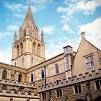
In 1158 Christ Church Cathedral in Oxford, England is begun (finished in 1200).
In 1159 An English army led by Thomas Becket invades Toulouse to assert the rights of Eleanor, but Louis VII drives them off; Malcolm IV and his younger brother William obey a summons to give service in Toulouse, and on June 30 Henry knights Malcolm in Perigueux, which turns him on because his daddy David had taught him that knighthood was the ultimate high, and Malcolm then knights William, but the whole idea of kissing English butt pisses-off the Gaelic nobles, who attempt to seize him at Perth when he returns, but are defeated and forced to submit; Malcolm then invades Galloway and defeats its ruler Fergus and forces him into retirement as a canon in Holyrood Abbey, and partitions his lands between Fergus' sons; this proves that even though Malcolm is called the Maiden for his unpopped cherry he's no whimp with a shield and lance, and also cements William's love of Frankish chivalry, causing him to call himself William de Warenne to emphasize his mother's Anglo-Norman heritage and snub his daddy's royal Scottish heritage?
In 1159 John of Salisbury (1115-80) writes Policraticus, becoming "the first attempt in the Middle Ages at an extended and systematic treatment of political philosophy" (G.H. Sabine); argues for the overthrow of tyrants and in favor of limited monarchy, later spawning the Magna Charta of 1215; society is a creature, with the king as the head, the Church as the soul, the govs. and judges as the ears and the eyes, the soldiers as the hands, and farmers as the feet?
About 1160 Lincoln-born English historian Henry of Huntingdon (b. 1080) dies, leaving Historia Anglorum (8 vols.) (1129-54), a history of England from 5 B.C.E. to 1154 C.E., commissioned by his patron Robert Bloet's successor Bishop Alexander of Lincoln (-1148); "The most important Anglo-Norman historian to emerge from the secular clegry"; calls England "Anglia plena iocis" (Merry England).



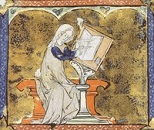
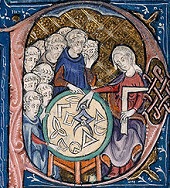
Under my thumb, the bishop who won't let me down? On Apr. 18, 1161 Canterbury archbishop (since 1139) Theobald of Bec (b. 1090) dies, and English king Henry II designates his trustworthy Norman lord chancellor (secy. of state) (since 1155) (St.) Thomas Becket (1118-70) (a secular man who stepped down as archdeacon of Canterbury to become Henry II's chancellor, becoming known for high living along with charity to the poor, leading 700 knights in battle and engaging in single combat, once arriving on a mission in Paris with 40 horses, eight chariots, and 200 atendants, also enjoying womanly pleasures with his boss, and enforcing a land tax on both landowners and churches and bishoprics) as his successor, and he assumes office next year; too bad, it backfires when he unexpectedly flops and supports the ecclesiastical cause instead of being under his thumb as Lanfranc had been with William I, donning a hair shirt and living in poverty, eating only veggies, and washing the feet of 13 beggars each night; meanwhile Henry's court becomes the home of writer Walter Map (1140-1209), Norman poet Robert Wace (1100-74), Marie de France (first female French poet) (author of 12 lais, medieval poems of knighthood, varying from 100-12K lines), natural philosopher (first English scientist?) Adelard of Bath (1080-1152), and philosopher-historian-diplomat John of Salisbury (Johannes Parvus) (John the Little) (1120-80), bishop of Chartres in 1176-80.
In July 1163 the Council of Woodstock in Woodstock, Oxfordshire sees Henry II demand oaths of vassalage from his Welsh princes, causing them to rebel; in July a quarrel starts between Henry II and Thomas Becket over the control of payments to sheriffs; by Oct. the quarrel escalates when Henry II proposes a plan to put clergy under the jurisdiction of English courts so that ecclesiastical courts can't let them off for crimes.
In Aug. 1166 William I of Scotland meets with Henry II of England in Normandy, requests the restoration of Northumberland to Scotland, and is told to shove it; meanwhile Thomas Becket takes the pulpit in Vezelay and excommunicates all English clergymen who uphold the Constitutions of Clarendon, pissing-off Henry II, who threatens to confiscate the property of all priories affiliated with the Abbey of Pontigny, causing the abbot to beg Becket to leave, after which he holes-up in a rundown inn in Sens and beg for alms.
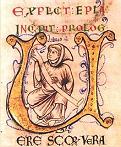
On Jan. 12, 1167 English abbot (since 1147) (St.) Ailred (Aelred) (Aethelred) of Rievaulx (b. 1110) dies in Rievaulx, Yorkshire; his bio. is written by fellow monk Walter Daniel shortly after his death, containing passages that may be interpreted as suggesting he is gay, causing modern-day gay orgs. to adopt him as their patron saint; leaves Speculum Caritatis (The Mirror of Charity) (written at the request of Bernard of Clairvaux), De Spiritali Amicita (On Spiritual Friendship), Genealogia Regum Anglorum (Genealogy of the Kings of the English), declaring Henry II to be a good king and claiming his true descent from the Anglo-Saxon kings, Vita Davidis Scotorum Regus (Life of David, King of the Scots), Relatio de (De Bello) Standardo (Account of the Standard/On the [Aug. 22, 1138] Battle of the Standard), Vita S. Eduardi, Regis et Confessoris (Life of Saint Edward, King and Confessor), Vita S. Niniani (Life of St. Ninian), De Miraculus Hagustaldensis Ecclesiae (On the Miracles of the Church of Hexham, De Quodam Miraculo Miraculi (AKA De Sanctimoniali de Wattun) (A Certain Wonderful Miracle), and Homeliae de Oneribus Propheticis Isaiae (Homilies on the Prophetic Burdens of Isaiah), dedicated to Bishop of London (1163-) Gilbert Foliot.
In 1169 after prodding by Louis VII of France, Pope Alexander III commands Henry II to restore Thomas Becket to his see or face an interdict on all religious services in English territory, and visits Becket in Avranches, holding his stirrup as he mounts his horse to return to England.
In 1169 a window tax is introduced in England, Wales, and Ireland, with the first 2 windows exempt; to lower their taxes housholders begin blocking windows, leading to the saying "daylight robbery"; it is abolished in 1851.




You are everything, and everything is you? Look me in the eye, boy, you are quarterback of this team until I tell you different? In Apr. 1170 William I of Scotland visits Henry II's court at Windsor, then visits his estates in Huntingdon, then on June 14 attends the coronation at Westminster of Henry II's eldest son Henry the Young King (1155-83) as official English successor, giving him personal homage on June 15; the attempt of the archbishop of York (backed by Henry II) to do the anointing causes archbishop of Canterbury Thomas Becket (b. 1118) to get pissed-off and obtain the support of Pope Alexander III and Louis VII in a showdown, causing Henry II to exile Becket, but Henry II repents and backs down, and formally reconciles, and Becket returns to Canterbury on Dec. 25 and excommunicates three pro-Henry bishops, who flee to Henry II in Normandy, causing him to go into a rage, uttering the soundbyte: "Will no one rid me of this troublesome/meddlesome/turbulent priest?" (probably not, but he should have?) and/or "What! Shall a man who has eaten my bread... insult the king and all the kingdom, and not one of the lazy servants whom I nourish at my table does me right for such an affront?", causing four of Henry's Norman baron knights incl. Hugh de Morville (1155-1204) (Fr. "dead village"), William II de Tracy (-1189) (Gael. "fierce, warlike"), Reginald Fitzurse (1145-73) (Gael. "son of the bear"), and Richard le Bret(on) (de Brito) (Fr. "the brute") to take him literally, swear an oath to kill him, and cross over to England to find him, apparently without the ing's knowledge; on the way to Canterbury they stop at Bletchingley Castle to see Earl Roger the Good de Clare (1115-73), grandson of Earl Gilbert de Clare (-1117) (an expert on hunting accidents?); on Dec. 29 (5 p.m.) they find Becket in Canterbury Cathedral at Vespers, demand that he lift the excommunications, and when he refuses they begin arguing with him and try to arrest him, and when the 6'2" dude (compared to an avg. height of 5' back then) resists, they murder him on the altar, with Fitz Urse drawing first blood, knocking off the crown of his head and spilling his blood and brains all over the floor (in the shape of a rose and lily?), after which they all close in and finish him off, then stir the brains with a sword to be sure he's dead before leaving; too bad, the locals immediately steal samples of his blood in cloths and vials, then announce miraculous cures within days, turning him into a martyr, causing anger against the king and assassins to spread throughout Europe, all to the chagrin of kingy back in Normandy, who is called the new Nero and Judas, holing-up in his chamber for three days sans food while sending emissaries to the pope to declare his innocence and promising to perform penance; Pope Alexander III uses the opportunity to save Louis VII from Henry II's wrath; Becket is hastily entombed in a crypt without bathing (since he's bathed in martyr's blood), and the cathedral soon becomes a center of pilgrimage for England's new martyr of church-state relations, with 2M+ words written about his miracles; the word "canter" comes into use from the easy Canterbury gallop which medieval pilgrims use to ride to the town; Becket is discovered to be wearing an itchy-scratchy goat-hair shirt beneath his sacerdotal robes along with breeches of the same that "swarmed with vermin", cinching his martyr status; the four bad barons do lifetime penance by becoming Crusaders in the Holy Land.
In 1172 after intercession by a Carthusian monk, Henry II and Pope Alexander III reconcile, and Henry II is cleared of involvement in Becket's murder, but is ordered to do penance before the Cathedral of Avranches in Normandy, and rescind the 1164 Constitutions of Clarendon, restoring all rights and property of the Church, reinstituting "benefit of clergy" (privilegium clericale) in England (until 1827); for the rest of the Middle Ages, English clergymen can get out of punishment for their felonies (except treason) by getting their cases transferred to an ecclesiastical court and proving that they can read and write some Latin verses; however, they get branded in the brawn of the left thumb if not actually in holy orders; fines and whipping are later substituted when the public looks the other way - no wonder everybody hates lawyers?
On Feb. 23, 1173 St. Thomas Becket is buried in Canterbury and canonized by Pope Alexander III, insuring the wealth of Canterbury Cathedral, and making a pilgrimage there the thing to do, a Christian Mecca - chust chew on Chaucer?
In 1173 the Aquitaine Revolt of 1173-4 sees Henry II's Angevin Empire slide into civil war as his estranged wife Eleanor of Aquitaine (pissed-off at his adulteries) supports her sons Richard Lionheart and Henry the Young King and ally with Louis VII against him, fleeing to his court; William I of Scotland throws in with the rebels in exchange for a promise of the restoration of guess what Northumberland (after he inherited the title of Earl of Northumbria in 1152 and was forced to give it to Henry II in 1157), but is captured by a small English forces of mounted knights led by Henry II's chief justiciar (1154-89) Ranulf de Glanvil (Glanville) (Granvile) (-1190) at the Battle of Alnwick in Northumberland on July 13; Henry II takes control of Kenilworth Castle in the Arden Forest in Warwickshire to defend against the rebellious barons on both sides of the Channel; Louis VII attacks Normandy while William I invades England, but the support of the middle classes saves Henry II's cause; after becoming the first female Euro monarch to lead troops into battle, Eleanor is imprisoned (until 1183); on Aug. 10 in Rouen Henry II names Strongbow as royal justiciar of Ireland.
On July 7, 1174 Henry II comes to Canterbury Cathedral to do penace over the death of Becket, walking 3 mi. on a flinty road in bare feet then enduring scourging by all 70 monks in the chapter after falling prostrate before Becket's crypt; the capture of the king of Scotland, allegedly on the same day causes everybody to believe that Becket has forgiven him - a symphony in P by Bonkerini?
In Sept. 1174 the choir of Canterbury Cathedral accidentally burns down, with the precious crypt containing St. Thomas Becket preserved intact, causing Norman architect William of Sens (-1180) to be hired to supervise the bldg. of a bigger better one after the monks spend five years in mourning (finished 1184), using limestone from Caen, Normandy.
In June 1175 the Council of Gloucester sees Henry II restore Caerlon to Iorwerth ap Owain Want at the urging of Deheubarth lord Rhys ap Gruffydd.
In Oct. 1175 Rory O'Connor of Ireland signs the Treaty of Windsor, recognizing Henry II as the Irish overlord, although he remains nominal high king of Ireland and king of Connacht outside Leinster, Meath, and Waterford, but all the Irish kings have to pay tribute to Henry II through O'Connor, and force Irishmen fleeing the conquered areas to return; haughty Normans begin to move into Ireland and lord it over the local "dogs"? William I the Cowardly Lion of Scotland does ceremonial allegiance to the haughty Norman king at York.
In 1175 French-born (St.) Hugh of Lincoln (1135-1200) comes to England at Henry II's request and founds Witham Priory in Somerset in 1178-9 for monks settled by Henry II in penance for the murder of St. Becket, becoming the first of 10 Charterhouses (Carthusian monasteries) in England.
In 1176 the Assize of Northampton extends use of the grand jury.
In 1176 5he first yearly Eisteddfod (eisteddfodau) (pr. eye-STETH-vode) ("sitting") of poets and musicians dressing up in Druid costumes is held at Cardigan Castle in Wales.
On Sept. 21, 1177 after Pope Alexander III intervenes on Louis VII's side, Henry II and Louis VII sign the Treaty (Pact) of Ivry, a non-aggression pact, clearing the way for the Third Crusade.
In 1178 the first English invasion of Connaught, Ireland is repulsed, with the town of Galway (Gael. "Dun Gaillimhe" = fort at the mouth of the Gallimhe) (founded in 1124 by Connacht king Tairrdelbach Ua Conchobair) on the Corrib River in Galway Bay (modern-day pop. 80K) becoming an anti-English citadel for cents., nicknamed "the city of the tribes" for its 14 merchant families.
In 1178 Henry II selects five justices from the Curia Regis to form a separate tribunal, becoming the beginning of the royal court system.
In 1178 William of Sens is injured during the bldg. of the new Canterbury Cathedral, and is replaced by William the Englishman (-1214), who decides that the stones shipped in from Caen aren't enough, and furnishes the interior with marble from Purbeck and Dorset.
In the 1180s Stratford-born Ranulf de Glanville (Glanvil) (-1190), former sheriff of Yorkshire (1163-70) and Lancashire (1173-6), and justice of the king's court (1176-80) becomes justiciar (chief judicial officer) of Henry II, ending up ruling England during Henry II's frequent sojourns in France while reforming the English judicial system and writing Tractatus de Legibus (Treatise on Laws), the first systematic codification of English law, superimposing Norman feudal law upon Anglo-Saxon local law to create "the law and custom of the realm".

In 1180 the Three-Lions English Royal Coat of Arms is standardized.
In 1180 glass windows first appear in private English houses.
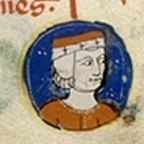
In July 1181 after his daddy demands it for past help to her daddy Duke Conan IV, Geoffrey (II) Plantagenet of Richmond (1158-86), 4th son of Henry II of England and Eleanor of Aquitaine marries heiress Constance of Brittany (1161-1201), becoming duke of Brittany and 3rd earl of Richmond (until 1186), founding the Plantagenet Dynasty in Brittany (ends 1203).
In 1181 Henry II of England proclaims the Assize of Arms of 1181, requiring every freeman to supply himself with arms and armor proportional to his personal property, the value of which is determined by a local jury, all on pain of "vengeance, not merely on their lands or chattels, but on their limbs", restoring the old Anglo-Saxon fyrd duty to counterbalance the feudal baronage; restrictions are placed on Jews.
In 1181 St. Peter le Poer Church in London, England on Old Broad St. is first mentioned.

On June 11, 1183 after the Gascons revolt against the harsh treatment of Richard I and call on English titular king (since June 14, 1170) Henry the Yloung King (b. 1155), who rebels against his father Henry II again, he dies suddenly just as English forces arrive on the Continent; this leaves Richard Lionheart as heir to England, Normandy and Anjou, but Henry II wishes to give Aquitaine to John Lackland (so he won't lack land anymore?), turning Richard against him; on Dec. 25 Henry and Eleanor have some verbal fireworks about hanging from the nipples and riding bare-breasted :) (James Goldman's 1968 film The Lion in Winter). You got to treat her like a lady and she'll give in to you?
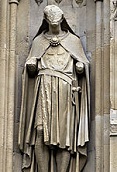
In Dec. 1184 Exeter-born Cistercian abbot and bishop of Worcester Baldwin of Ford(e) (1125-90) becomes archbishop of Canterbury (until Nov. 19, 1190).
In 1184 the Welsh revolt from English king Henry II; turncoat Morgan ap Hywel (-1215) succeeds his father as lord of Caerlon, guarding the castles of Glamorgan and Gwynllwg for Henry II.

Where's the underground spaceship? On Feb. 10, 1185 London's Caen-stone circular Temple (Templar) Church on Fleet St. in London is consecrated by Latin Patriarch of Jerusalem (1180-7) Heraclius (Eraclius) (1128-91) of Jerusalem; damaged by the Luftwaffe in 1940 then restored; Heraclius then consecrates Clerkenwell Priory in London, founded in 1100 by Lord Jordan Briset as the HQ for the Hospitalers; burned down by Tyler's Rebellion in 1381, and rebuilt in 1504; after Henry II holds an aulic council in it, Heraclius tries to talk him into sending troops for a new Crusade, but can't talk the barons into allowing Henry to lead them personally, even in exchange for the crown of Jerusalem, causing him to utter the soundbyte: "Here is my head.... treat me as you did my brother Thomas Becket. It doesn't matter to me whether I die by your orders or in Syria by the hands of infidels, for you are worse than Saracens."

On Apr. 25, 1185 Henry II's son John Lackland, lord of Ireland goes on his first expedition to Ireland to finish the English conquest and organize the govt. (so he finally has some land?), but the haughty conduct of his council in Waterford incl. laughing at the big beards of Irish chieftains causes disturbances, and in Dec. he is recalled after failing to establish either task, making him even meaner; Welsh-born royal clerk Gerald of Wales (Giraldus Cambrensis) (1146-1223) accompanies Henry to Ireland and stays two years, going on to pub. Topographia Hibernica in 1188, which becomes the longest and most influential work on Ireland during the Middle Ages; too bad, it's highly xenophobic, portraying the Irish natives as barbaric savages; he also pub. Expugnatio Hibernica, an account of Henry II's conquest of Ireland.
In 1185 the first written record of Beaconsfield ("clearing in the beech trees") 25 mi. NW of London, later the home constituency of British PM Benjamin Disraeli.
On July 25, 1186 Hugh de Lacy, Lord of Meath (b. 1134) is assassinated, and after rejoicing that he doesn't have to send his half-wit son back for another try, Henry II has Meath put under administrators while rushing to close his grasp by arranging the marriage of Strongbow's daughter-heir Isabel de Clare, 4th Countess of Pembroke and Striguil (1172-1220) in Aug. 1189 to William Marshal, 1st Earl of Pembroke (1146-1219), who succeeds to the lordship of Leinster (Henry II's last executive decision), turning the Marshal from a a landless knight into one of the richest men in England.
In 1186 the Letter to Toledo, laying down a timetable for the imminent return of Christ and a "New World Order" emerges in England, urging people to flee to caves and remote areas to avoid coming storms, earthquakes, and famine, from which only a few true blues will be spared, causing mass hysteria.

In 1186 after an earthquake that struck the church in Lincoln, England late in 1185 spooks Henry II, he decides to quit appropriating the incomes from the diocese (largest in Europe, from the Humber River to the Thames River), and appoint Carthusian monk (St.) Hugh of Lincoln (Avalon) (Burgundy) (1135-1200), bishop of Whitby as the new bishop of Lincoln, and put him in charge of rebldg. the church in a magnificent fashion.

In 1186 the motte-and-bailey Clitheroe Castle is built in Lanarkshire, England by Robert de Lacy on the site of the Norman English defeat to the pesky Scots in 1138; the avg. room size is 20 sq. ft.
In 1187 Richard I decides to kill his father Henry II, but forgets his weapons, and ends up facing the greatest knight of all time William the Marshal (Marshall) (1146-1219), who decides to spare his life by slaying his horse instead of him; Henry II rewards him with the hand of fair Isabel de Clare (1174-), daughter of Richard of Clare, earl of Pembroke, eventually making him William Marshall, 1st Earl of Pembroke; Richard flees to France, where Philip II Augustus welcomes him; Dante's "Divine Comedy" (Inferno XXVIII, 134) refers to the Born affair.
In Jan. 1188 after hearing of the bad news from Jerusalem from the archbishop of Tyre, France and England make a truce on the battlefield, and the archbishop persuades Philip II Augustus of France, Henry II of England, and his son Richard I Lionheart to pledge themselves to a crusade on the spot, declining the crown of Jerusalem but levying the Saladin Tithe (Aid of 1188) (a tenth of the value of incomes and chattels, subject to adjudication by a local jury) in aid of the Holy Land, becoming Henry II's 2nd taxation of personal property; in Feb. Pope Clement III triumphantly returns to Rome, and begins massing Christian soldiers against the Muslims for his delightful blood-drenched Third Crusade (ends 1192), the first to feature personal insignia on shields; Guy de Lusginan is released by Saladin, gains naval reinforcements from Pisa and sieges Acre in Aug., but is unsuccessful after Saladin's troops siege them; Saladin uses Damascus as his HQ during the Crusade; during the negotiations in the Champ Sacre (Sacré) (Sacred Field) of Gisors in Normandy, Henry II and his men (incl. Richard I Lionheart) hunker down under the 800-y.-o. Elm of Gisors, leaving Philip II and his men in the sun, ending in a battle in which the French take the elm and cut it down; after this incident, the Order of Sion splits ranks with its child the Templars, with Jean de Gisors (1133-1220) (vassal of Henry II and Richard I until 1193, who owns Titchfield Manor in Hampshire, England, and allegedly met Thomas Becket at Gisors in 1169) becoming the first Grandmaster (Nautonnier) (Pilot) of the Order of Sion (until 1220), which changes its name to the Priory of Sion, and makes every grandmaster assume the name Jean or Jeanne to indicate an esoteric successor to St. John, with Jean de Gisors calling himself Jean II; the Priory of Sion adopts the subtitle Ormus (Ours is Fr. for bear, Orme is Fr. for elm, Or is Fr. for gold), and begins calling itself the Order of the True Red Cross (Rose-Croix Veritas) (Rosicrucians?).


In 1188 Canterbury archbishop (1184-90) Baldwin of Forde(e) (1125-90) and Welsh-born Gerald of Wales (Giraldus Cambrensis) (1146-1223) preach the Third Crusade in Wales; Gerald of Wales pub. Itinerarium Cambriae in 1191, followed in 1194 by Description Cambriae.

In 1188 the Saladin Tithe in place, Newgate Prison in London at the corner of Newgate St. and Old Bailey just inside the city walls is built at the site of a gate of the Roman London Wall by orders of Henry II, going on to be extended and rebuilt many times until it is closed in 1902 and demolished in 1904 after becoming infamous for its unhealthy conditions.

On July 6, 1189 after Richard Lionheart delays his trip to the Holy Land immediately and joins his father Henry II (b. 1133) of England on an attack on Raymond of Toulouse, and Philip II comes to Raymond's aid, and Richard in a fit of anger at hearing that his brother John is now daddy's favorite switches sides, invading Henry's heartland of Anjou with Philip II and taking NW Touraine, after which Henry II is driven from Le Mans (his birth town, dear to his heart) to Saumur, defeated, forced to pay homage to Philip II for all his French possessions and acknowledge Richard as his heir, he is harried to his death in Chinon, cursing his sons with his last breath, after which Richard pays respects to his corpse as it is taken to Fontrevaud Abbey, upon which "blood flowed from the nostrils of the deceased, as if... indignant at the presence of the one who was believed to have caused his death" (Roger of Wendover); he gets the last laugh with pesky martyr Thomas Becket when secular courts begin taking jurisdiction from clerical courts, liberating English law from feudal and ecclesiastical constraints and making it as supreme as in imperial Rome; on Sept. 3 French-speaking eldest remaining son Richard I Lionheart (Coeur de Lion) Plantagenet (1157-99), a military adventurer and leading trouvere (not much of an administrator type, infected with the skeptical culture of Provence and the gay science of the troubadours, making him English in name only?), who owns the Cognac region in W France is crowned the 26th monarch and Plantagenet king #2 of England (until Apr. 6, 1199), releasing his mommy Eleanor of Aquitaine from imprisonment (since 1173); he spends the next 5 mo. raising money to go on Crusade, appropriating the royal treasury, removing thousands of officials and selling them their offices back, and selling charters of freedom to cities; in his 10-year reign he only visits England twice, for a few mo. at a time, and only to obtain money for going on Crusade; he plays the part of a good Crusader and bans Christ-killing Jews from the coronation, after which the London pop. gets it mixed up and thinks he ordered their extermination, massacring them for Christ, the pogrom spreading to Lincoln, Stamford, and Linn; the London pogrom was started by nobles trying to get out of debts owed to Jews?; a mob led by Richard de Malabestia kills 300 Jews in York; 150 Jews led by Rabbi Yom Tob commit suicide; Richard I forgives William the Marshall for attemped murder, as the sonnet by Lord Dagonell Collingwood goes, "Count Richard forgave King Henry's knight, for William did only what he knew was right"; the Scottish church, which Henry II had subordinated to the English makes itself directly answerable to the pope in an attempt to retain independence; on Dec. 5 Richard I annuls the 1174 Treaty of Falaise for 15K (10K?) marks in the Quitclaim of Canterbury to help finance his war against the Sacrilegious Saracens, and the Scots avoid being permanently swallowed-up once again, with William I now at the height of his power, enjoying a golden decade and becoming known as the Lion of Justice.
On Aug. 29, 1189 English king Henry II's youngest son John Lackland marries Isabella, Countess of Gloucester (1173-1217) at Malborough Castle in Wiltshire, causing John to become the earl of Glouchester; too bad, Archbishop Baldwin of Canterbury annuls their marriage by reason of consaguinity (half-second cousins and great-granchildren of Henry I), placing their lands under interdict, but Pope Clement III grants them a dispensation to marry as long as they don't have sexual relations, causing him to plan to dump her before becoming king.
In 1189 Hubert Walter (-1205) becomes bishop of Salisbury, England.
On Mar. 16, 1190 (Fri.) (night) (Shabbat-ha-Gadol) the Clifford's Tower Massacre in York, England sees 150 Jews (entire pop.) huddled in a castle surrounded by mobs set their castle on fire to commit suicide, with the survivors being murdered, becoming England's worst case of anti-Semitism (until ?).
In July 1190 English king Richard I Lionheart, accompanied by bishop of Salisbury Hubert Walter (1160-1205) heads out to the Big J three years after its fall to kick badass Saracen Saladin, and arrives in Sicily in Sept.; Richard I and Philip II winter in Sicily, where they begin quarreling; meanwhile back in England, Bishop Hugh of Lincoln protests against Richard I's unfair taxation and persecution of Jews; too bad, Prince Levon of Armenia was waiting for Barbarossa to crown him king of Armenia, and it takes until 1199 to get his son Henry VI to do it.
In 1190 the alleged remains of King Arthur and Queen Guinevere are found in the ancient cemetery of Glastonbury Abbey on Glastonbury Tor, and are put in the abbey church in a tomb which is rediscovered in 1931; too bad, Henry VIII has their bones destroyed in 1516 because they're too dear to Roman Catholics?



In spring 1191 Crusaders Richard I Lionheart of England, Philip II of France, incl. Templars and Hospitallers, Angevins, Bretons, and Flemings under James (Jacques) (Jacob) of Avesnes (1152-91) set sail to attack the Holy Land, and Richard I Lionheart stops in Rhodes to drop off his sister Joan Plantagenet (1165-99) (widow of William II of Sicily) to talk Sancho VI of Navarre into agreeing to give him his eldest daughter Berengaria of Navarre (1165-1230) in marriage so that he can get his hands on Navarre (dumping Alys, his betrothed), and when they leave to follow him and get shipwrecked by a storm on Cyprus, hot-headed Cyprus despot (since 1184) Isaac Comnenus (Komnenos) of Cyprus (1155-96) captures them, pissing-off Richard and causing him to turn around (or get blown there by a storm), land in Lemesos (Limassol) on May 6, conquer it, then kick Comnenus' butt at the Battle of Tremetusia, and trick him into surrendering at his Kantara Castle on Cape St. Andreas on the Karpas Peninsula by promising not to put him in irons, after which he uses silver chains (ha ha), and turns him over to the Knights of St. John, who keep him in Margat (near Tripoli) until 1194, after which he travels to the sultanate of Rum to gain support, and ends up poisoned; Richard then marries Berengaria on May 12 in Limassol at the Chapel of St. George, the wedding attended by Prince Levon of Cicilian Armenia (ever eager to get noticed so they can promote him to king?), and decides to use Cyprus as a Crusader supply bridge to Jerusalem; Richard has Commandaria wine served at his wedding, proclaiming it "the wine of kings and the king of wines"; Richard buys two Arabian horses in Cyprus, which he puts gold bridles on, causing them to be called brigliadores; Comnenus' daughter "the Damsel of Cyprus" joins Richard's court, and travels back to England with Joan; meanwhile Egyptian sultan Saladin conquers Haifa, and dismantles the city of Ashkelon on the Mediterranean coast; in Apr. the French under Philip II Augustus and Conrad of Montferrat arrive at Acre after Philip's nephew Count Henry II of Champagne beats him to it, then erect huge siege engines; the English under Richard I Lionheart arrive on June 9 and take contol of the siege, using sappers to undermine the walls; Richard offers his men first one then four gold coins to race across the open plain dodging Saracen bowmen and hot oil-slingers and pull a single stone from Acre's thick wall; on July 12 after their supplies run out, Acre, AKA Ptolemais surrenders to the Crusaders; Philip II gets sick and accuses Richard I of trying to poison him, and returns to France, making final capture of Jersualem impossible, as if that would stop them?; the Crusaders demand the delivery of 1.6K Christian captives, payment of 200K dinars, delivery of the True Cross, and allow the pop. of Acre to leave on the condition that they carry nothing but the clothes on their backs; too bad, on Aug. 11 an exchange of POWs and moolah is aborted after the Crusaders quibble; on Aug. 20 after Saladin takes too long to respond, Der Fuhrer Richard I orders the execution of 2.7K Muslim hostages, "avenging their fallen comrades who had died at Acre", slicing open their bellies looking for swallowed treasure; Saladin responds in kind, ordering the execution of all 1.6K Christian POWS, and hiding the True Cross (under the doorway of the Mosque in Damascus?); Isaac Comnenus of Cyprus surrenders to Richard I, who imprisons him in the Syrian castle of Markab; after Richard I unsuccessfully backs his vassal Guy de Lusignan for king of Jerusalem over the German candidate Conrad of Montferrat, Guy gives the Hospitallers a portion of the tower in Acre, and Richard I sells Cyprus to Guy and the Knights Templar, and Guy becomes king of Cyprus next year (until 1194); the Crusaders rule Acre for the next cent; meanwhile after Richard I insults Duke Leopold V of Austria by throwing his banner into the acres of mud of Acre, the latter invents the red-and-white triband Austrian Flag when there is a white strip of cloth found under his bloody tunic after the battle; in Aug. knowing they need to control the port of Jaffa before taking Jerusalem, the Crusaders leave Acre and go S, and, after being harassed all along the way by archers finally defeat Saladin on Sept. 7 at the Battle of Arsuf near Jaffa, remembering the lessons of the Horns of Hattin and taking measures against heat exhaustion and thirst, although they are tormented at night by tarantulas; on Aug. 30 as they approach Caesarea, the rear guard under Duke Hugh III of Burgundy is cut off, but Richard rallies his troops to save them with the cry "Sanctum Sepulchrum Adjuva!" (Help us, Holy Sepulchre!); during the battle the Muslims are sorely pressing the Crusaders, until Hospitaler grandmaster Garnier de Nablus disobeys Richard's orders and goes beserk and leads a charge, which Richard decides is their big chance to turn the tide, after which Richard "advanced with untiring sword strokes, cutting down the unspeakable race as if he were reaping the harvest with a sickle, so that the corpses of Turks he had killed covered the ground everywhere for the space of half a mile"; Saladin's myth of invicibility is shattered, with 7K Muslims killed vs. 700 Christians (according to the Christians); the slap-happy Crusaders then recapture St. Peter's old Dorctown of Jaffa, although Big J is out of their grasp and they decide to cut off Saladin's main supply base of Egypt instead.
In 1193 English historian Benedict of Peterborough (b. ?) dies, leaving The Murder of Thomas Becket, 1170, The Death of King Henry II, 1189.
In 1196 Duchess Constance of Brittany abdicates in favor of her son (by Geoffrey Plantagenet) Duke Arthur I of Brittany (1187-1203), who was designated heir of England after Richard I in 1190 - no matter who you are behind the wheel, fusion can handle it?

On Jan. 8, 1198 Pope (since 1191) Celestine III (b. 1106) died, and on Jan. 8 37-y.-o. (young for a pope) Lotario de'Conti was elected Pope #175 Rocky, er, Innocent III (1160-1216); under him the papacy as an institution reached its zenith of power, and he was one of the great persecuting popes; he allegedly excommunicated King John of England for picking his nose, causing him to do penance. In his first year he preached another crusade to rebuild the old Latin Kingdom of Jerusalem which had been destroyed in 1187 and only imperfectly restored in 1192; in Nov. to quiet the Normans, he issued a bull confirming his 4-y.-o. ward Frederick II as king of the Two Sicilies. In Feb. 1199 Pope Innocent III gave the new military Order of Teutonic Knights (an ethnic spinoff from the Order of Hospitalers formed during the Siege of Acre) official recognition, followed on Apr. 23 by the Hospitaler Order of the Holy Ghost, followed on Dec. 7 by the Order of Trinitarians (devoted to rescuing Catholic captives).


On Jan. 13, 1199 Pope Innocent III imposes a 5-year truce on Richard I of England and Philip II Augustus of France, but on Apr. 6 after Viscount Adhemar of Loges discovers a cache of ancient Roman gold on his land, and he refuses an offer of a share and demands it all, coming to take it by force, Richard I Lionheart (b. 1157) dies of gangrene in the arms of his mother Eleanor of Aquitaine while sieging the castle of Chalus-Chabrol after inviting the boy crossbowman on the castle wall to shoot at him because he was amused by his clutching a frying pan as a shield, getting an arrow in the left shoulder near the neck, after which butcher surgeon Hoveden mangles his arm, and he contracts gangrene, his dying wish being that the crossbowman (who told him that his men had killed his father and two brothers) be spared and granted 100 shillings,, but instead his mercenary capt. Mercadier (-1200) has him flayed alive and impaled; "The Lion was slain by an Ant" - eh, what was that you said, kingey, I'm kinda murky today? On May 27 after securing the adherence of the Norman barons, and swearing a coronation oath at the insistence of Archbishop Hubert Walter that his throne is held by the election of the nation (nobles and prelates) and the grace of God (which he doesn't believe in?), cruel cunning tyrant and cruddy soldier (see any Robin Hood movie?) John Lackland (Softsword) (1167-1216), youngest son of Henry II and Eleanor of Aquitaine is crowned the 27th monarch of England in Westminster (until Oct. 19, 1216), usurping the right of his 12-y.-o. nephew (son of his elder brother Geoffrey) and designated heir Arthur I of Brittany (1187-1203); Philip II Augustus of France steps in and defends the claims of Arthur and Hugh de Lusignan, thinking he can use Arthur to grab John's territory in France, capturing Evreux again; Arthur declares himself Philip's vassal; after news of his bro's death, Lucky John I gets his marriage to Isabel of Gloucester annulled on grounds of consanguinity, then dispatches an embassy to negotiate for the hand of a Portuguese princess, but soon becomes enamored of foxy young Isabella of Angouleme (1187-1246), "the Helen of the Middle Ages", daughter of one of his vassals in Poitou, betrothed to Hugh IX the Brown of Lusignan, Count of La Marche (1163-1219), his Poitevin vassal; John betrothes Isabella, "the queen without a conscience" with the consent of her father but without Hugh's consent, pissing off the nobility of both nations, and Hugh appeals to Philip II; John goes on to marry Isabella on Aug. 24, 1200; Hubert Walter, archbishop of Canterbury and justiciar (since 1194) accepts the office of chancellor, and with William Marshall aids justiciar Geoffrey Fitz Peter in putting down the usual revolts, beginning to rely on the middle class in town and shire, granting charters to towns, giving London the right to elect a mayor, calling on the knights of the shire to assume county business as a balance to the sheriffs, and recruiting knights (elected by the gentry) to serve as coroners and choose juries; William I the Cowardly Lion of Scotland forms an army and is about to demand concessions from the new king when he loses the nerve and disbands it.
Early in the 13th cent. the legend of the Wise Men of Gotham arises, about the village of Gotham in Nottinghamshire, 7 mi. SW of Nottingham, where King John intends to build a castle, but the villagers, not wanting to foot the bill feign idiocy until he changes his plans, with the soundbyte "We ween there are more fools pass through Gotham than remain in it."
Early in the 13th cent. St. Michael Paternoster Royal Church in London is built; the earliest record is dated 1219.
In the 13th cent. English men begin to wear short hair which is kept bushy at the sides, cut close over the forehead, and curled below the ears (ends 1500), while women wear their hair in a caul, or curled and ornamented (ends 1400).
For the first half of the 13th cent. prices are on a rising trend in England; Italians develop banking firms, which compete with the Jews.
In the 13th cent. the Writ of Trespass on the Case originates in the royal courts of London.
In the 13th cent. the English/British Bulldog is developed for bull-baiting; the first mention of the word "bulldog" is in 1631/2 by Preswick Eaton; in 1666 English scientist Christopher Merret gives it the scientific name Canis pugnax.
In the 13th cent. bowls (lawn bowling) (Lat. "bulla" = bubble) becomes popular in England, spreading to Scotland.
One way, or the other, I'm gonna getcha getcha getcha? In the 13th cent. Holy Grail (san graal) (saint graal) legends begin to appear in lit., portraying it as a dish, cup, or magic talisman, and danbrowning, er, culminating in a woman, incl. the poem Lanzelet by Ulrich von Zatzikhoven, a 4-part French Arthurian work later used by Sir Thomas Malory that he claims came to Germany in the luggage of Hugh de Morville, one of the hostages for Richard I Lionheart while imprisoned by HRE Henry VI (1192-4); incl. Lancelot of the Lake (Launcelot du Lac), Quest for the Holy Grail (Queste del Saint Graal) by Galahad, Grand Saint Graal, The Death of King Arthur (La Mort du Roi Artu), and Roman de Joseph of Arimathea and Merlin (Le Roman de l'Estoire du Graal) by Robert de Borron (Boron), dedicated to Count Walter of Montbeliard (-1212), regent of Cyprus and constable of Jerusalem; Joseph of Arimathea and his followers allegedly brought the Holy Grail to Glastonbury, Britain, connecting King Arthur and Merlin with it; according to the 1982 book "Holy Blood, Holy Grail" by Michael Baigent, Richard Leigh, and Henry Lincoln, it's really "sang raal" or "sang real", i.e., royal blood, because Jesus Christ was married to red-haired Mary Magdalene, who fled to S France with their child after St. Peter staged a coup to oust her as first pope, and that bloodline has the right to be pope and king of the Jews and/or world, and the Holy Grail story was cooked up as a coverstory to keep the authorities off their trail.
By 1200 the monastic revival in England, begun with the conquest, sees 500 new monasteries founded, and only 157 more during Henry III's long reign (1216-72); however, Cistercian houses now spread more rapidly than Cluniac, which have suffered spiritual decay; the new order of friars (non-secluded monks) begins to arise in this cent.; meanwhile in this cent. the papacy begins the policy of making provisions in England, providing benefices or incomes to papally-appointed parish priests, usually Italians; as a consequence, Italians who couldn't speaka da English begin to arrive in charge of parishes all over England, pissing-off the natives (see 1232).
In 1200 John I of England and Philip II of France fight before the fortified town of Angiers, which swears allegiance to the king of England but wants to wait to see whether it's going to be John or Arthur; Sir Richard, bastard son of Richard I Lionheart (formerly Philip Falcounbridge, disinherited brother of Robert Falcounbridge, who gives up his inheritance for the name, saying, "Brother, you take my land, I'll take my chance", according to Shakespeare (King John, 1.1.151), proposes that they all combine temporarily and take Angiers first, causing John to propose that Philip II's son Louis the Lion marry Princes Blanche of Spain, and give Philip some of the disputed French land as dowry, which Philip accepts, his quarrel with Pope Innocent III diverting him anyway, causing him to abandon Arthur's cause; on May 25 Philip II and John I sign the Peace of Le Goulet, recognizing England's holdings in France, and recognizing Arthur as John's vassal, while ceding Vexin and Evreux, and promising the French a large sum of money; Arthur I, already duke of Brittany (since 1196) is created 1st earl of Richmond in N England, and lord of Angiers (until 1203).
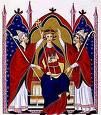
In 1200 King John of England marries 12-y.-o. Isabella of Angouleme (1187-1246), maternal great-granddaughter of Louis VI of France.
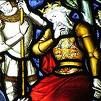
In 1200 Welsh prince Llywelyn the Great (1173-1240) seizes breadbasket land Anglesey, and makes a treaty with John I of England, maintaining good relations for the next decade, and marrying John's daughter Joan in 1205; in the future Angelesey becomes the Achilles heel of the Welsh?
About 1200 the English church requires that marriage banns be announced in church on three separate occasions.
About 1200 the soapmaking industry begins in England, centered in the large towns of Bristol, Coventry, and London, decimating woodlands to make wood ashes and causing a winter fuel shortage.
About 1200-09 King John of England is allegedly excommunicated by Pope Innocent III for picking his nose, causing him to do penance.
In May 1201 King John sails to Normandy and seizes the lands of rebellious barons in Poitou; in June Philip II entertains him in Paris, ignoring the complaints of the Lusignans about his treatment of them.
In 1201 King John of England grants the Jews a charter to live in Merry Ole Christian England - Merry Christmas?
The first trial of a peer in France, or, You've got a friend? On Apr. 28, 1202 after the barons of Anjou, Maine, Poitou, and Touraine protest to Philip II that he is oppressing their provinces, causing Philip II to summon his royal vassal to Paris to defend himself, King John fails to obey a summons to his court, claiming the feudal exemption of the duke of Normandy, pissing-off Philip II, who regards him only as the non-exempt count of Poitou and causing a French court to declare John to have forfeited his French fiefs (Aquitaine, Poitou, and Anjou), putting France and England back in war; the court awards them to John's nephew Arthur of Brittany, who claims the throne of England, raises an army, and sieges John's 80-y.-o. mommy Eleanor of Aquitaine at Mirebeau in Normandy, where she leads the defense personally; too bad, on Aug. 1 John swings south from S of Rouen with his mercenary army accompanied by his Anjou seneschal William de Roches and surprises Arthur, capturing him; too bad, John mistreats William de Roches and mistreats the rebel leaders, causing 22 to die, pissing-off the locals, who are their kin, causing John's regional allies in Anjou and Brittany incl. de Roches to switch sides to Philip II, raising a new revolt in Brittany, while Philip II keeps an army of 3,307 men incl. 257 knights on the Norman border to defend it; John's chamberlain Hubert de Burgh becomes Arthur's jailer in Falaise, and repeatedly refuses to obey John's orders to blind him?
Evil King John throws away northern France with a lame move? In Apr. 1203 Duke Arthur I of Brittany (b. 1187) mysteriously dies in captivity in Rouen under the charge of John I's close friend William de Braose (Briouze), 4th Lord of Bramber, 3rd (7th?) Baron Abergavenny (1153-1211), who was paid off on Feb. 24 with a grant of the choice lands of Gower in the Welsh Marches of S Wales, making him the man who needs shades his future is so bright?; the Margam Annals later claim that John got drunk on the Thur. before Easter, personally killed his nephew, then threw him in the Seine River, where a fisherman later discovered him in his net, after which he was secretly buried in Notre Dame de Pres, the priory of Bec; Arthur's death ends the Angevin Plantagenet Dynasty in Brittany (begun 1181), and after John I is suspected of murdering him, the French unite against him (Shakespeare in King John claims that Arthur falls from a wall while making an escape after Hubert de Burgh chickens out in obeying John's order to blind and kill the innocent boy, but the barons think Hubert really did it and switch to the French side, all with no mention of Brownose?); white fairy-tale castle Chateau Gaillard on the Siene River near Rouen, France, built in 1196-8 by Richard I on a hill overlooking the town of Les Andelys, and held for King John by Baron Roger de Lacy, 6th Baron of Pontefract, 7th Baron of Halton (1170-1211) (AKA Roger le Constable) is sieged by Philip II of France after taking the town, and falls next year after a long seige and battles in underground tunnels, during which an undermined wall collapses into the moat, after which John retreats from France in Dec.; Arthur I's stepfather (2nd husband of Duchess Constance of Britanny) Guy of Thouars (-1213) becomes duke of Brittany and count of Richmond (until 1206) by right of his wife, who died in 1201, leaving him skating on thin ice, causing Philip II to take control, making him regent for his infant daughter Alix of Thouars (1201-21) (until 1213).
Now you know why they call him Augustus? In Mar. 1204 despite King John's attempts to raise more money to hire mercenaries for his war in France, Chateau Gaillard is captured; John sends a peace embassy to negotiate in the spring, but Philip II takes advantage of him being busy honeymooning in Rouen to conquer all of Normandy except the Channel Islands by June, playing the Norman barons off against each other, backed by the towns and rich bourgeoisie; Philip II, now master of Normandy, Anjou, Brittany, Maine, and Auvergene then retakes English-held (since 1152) Touraine in WC France, but is stopped at Poitou as John's vassals in S France finally decide they prefer an absent Angevin to a nearby Capetian, and stop Philip S of the Loire River; the loss of all of John's Angevin holdings in France N of the Loire River (Anjou, Maine, Normandy, and Touraine) except Aquitaine (minus part of Poitou) reduces England's power and prestige, and cuts the Norman barons off, making them begin to look to England rather than France for their future and take more interest in their English rights, leading to the Magna Charta of 1215?; Normandy remains under French control for the next two cents. (except 1346) (until 1415).
In 1204 the coal trade of Newcastle-upon-Tyne (2nd cent. C.E. Roman town of Pons Aelius and 5th cent. C.E. Anglo-Saxon Northumbrian town of Monkchester/Munucceaster) (modern-day pop. 300K/879K) is founded as King John accepts money in exchange for deforestation rights - later becoming the home of Eric Burdon and the Animals?
On July 13, 1205 Archbishop of Canterbury and Chancellor Hubert Walter (b. 1160) dies; his influence was so great that King John utters the soundbyte: "Now, for the first time, am I truly king of England"; King John persuades the older monks of Canterbury to elect Norwich Bishop John de Grey (Gray), but in Sept. a group of younger monks elect Subprior Reginald, with both parties sending missions to Rome.

On Dec. 11, 1206 after Subprior Reginald spills the beans on his trip to Rome for confirmation, King John forces them to elect John de Grey as Canterbury archbishop; meanwhile Pope Innocent III has his own ideas, and invalidates both of them and selects his old Paris U. student friend Stephen Langton (1156-1228) (inventor of the chapter division of the Bible this year) to fill the vacancy, but John refuses to recognize his election, protesting that this Frenchie has no political qualifications, starting a 6-year war.
On June 17, 1207 Pope Innocent III consecrates Stephen Langton at the papal palace in Viterbo (40 mi. NW of Rome), and in Aug. threatens an interdict against King John; not phased, John bans Langton from England, threatens to burn the cloisters over any rebellious monks, and swears "by the teeth of God" that if the interdict is laid on England he will banish all Roman Catholic clergymen from England, and put out the eyes and cut off the noses of some for funners.
In 1207 the port city of Liverpool (OE "muddy pool") (modern-day pop. 485K/2.4M) on the E side of the Mersey Estuary in NW England is chartered by Beatle, er, King John as a borough; the name was first mentioned about 1190 as Liuerpul; King John designs the street plan, with seven streets laid out in an H shape, incl. Bank (later Water) St., Castle St., Chapel St., Dale St., Juggler (later High) St., Moor (later Tithebarn) St., and Whiteacre (later Old Hall) St.; since 18333 the inhabitants are called Liverpudlians, also Scousers (after the local stew scouse or lobscouse); in 1699 Parliament makes Liverpool a parish, and its first slave ship Liverpool Merchant sails for Africa; since Roman times the nearby town of Chester on the Dee River has been the principal Irish Sea port, but as it silts up Liverpool takes over; in modern times middle-class Liverpudlians are called Liverpolitans.
On Mar. 24, 1208 Pope Innocent III gets the bishops of London, Ely, and Worcester to impose an interdict on England suspending all ecclesiastical rites except for baptism and extreme unction, closing churches and burying the dead in unconsecrated ground, after which they are forced to flee England; King John seizes the revenues of Canterbury and drives its monks into exile, causing Archbishop Geoffrey of York to excommunicate the king's tax collectors and flee to France; the clergy support the interdict despite the consequences, and the commoners are distressed, but the nobles aren't too pissed off at King John, as he confiscates the property of all clergy who obey the pope, leaving their own wealth alone - I am Sharpei all the way?
In 1208 Gwenwynwyn ab Owain Cyfeiliog (-1216), ruler of S Powys in middle Wales is arrested by King John of England, allowing his son-in-law Llywelyn the Great to steal Powys and Ceredigion (until 1210), becoming the last major ruler of middle Wales before the 1066 Norman Invasion.
In Nov. 1209 after King John meets with Stephen Langton's brother Simon, then decides to confiscate the property of clergy who refuse to celebrate their offices, Pope Innocent III excommunicates him; John responds by invading Scotland and holding the children of suspect barons as hostages to insure their loyalty.
In 1209 a student at Oxford U. kills a woman and flees, and his roommates, vainly claiming clerical immunity are hanged in his stead, causing teachers and students to leave Oxford for close (but not too close) (80 mi.) Cambridge(shire) ("bridge over the Cam or Granta River") in protest until a new agreement is made with the town in 1214; when some like it and decide to stay, the second great English U. is born, eventually forming the Oxbridge nexus of English eggheads - like switching from Ford to Chevy but staying with Detroit?
In 1209 the stone London Bridge across the Thames River is completed after 33 years (begun 1176), with the Chapel of St. Thomas on the Bridge in the center dedicated to martyr Thomas Becket, becoming the official start of the pilgrimage to his shrine in Canterbury; in 1212 a fire breaks out on both ends; by 1358 it is home to 138 shops plus a number of latrines; another fire during Wat Tyler's Peasant Revolt of 1381 burns a number of houses, and ditto during Jack Cade's rebellion of 1450; a major fire in 1633 destroys the northern third of the bridge, forming a firebreak preventing further damage during the 1666 Great Fire of London.
In the 1210s decade the village of Cosmeston in the Vale of Glamorgan in S Wales begins as a fortified manor built by the Norman invader De Constentin family.
In the 1210s decade tiles begin replacing thatched and wooden roofs on London houses.
Loose brown lips sink ships? In 1210 after once up-and-coming William de Braose, 3rd baron Abergavenny and his wife Maude de St. Valery shoot off their mouths and tattle that John I killed his nephew Arthur, John sends a force which invades Wales and lacklands their domains, claiming unpaid fees; he then goes on a second expedition to Ireland (first 1185) to capture his pesky son William de Braose, 4th Baron Abergavenny (1175-1210), husband of Mathilde (Maude) de Clare (1180-1213) (daughter of Richard de Clare, 3rd earl of Hertford), after which he starves them to death in Windsor and/or Corfe Castle; 20 Irish kings do homage to King John, and he expands his king's council in Ireland, forming the basis of the Irish parliament; too bad, John's cruelty backfires, scaring the other barons into fomenting a revolt, becoming his greatest mistake; he does let Little Brownose's sons John, Giles, Philip and Walter live, and they are released from prison in 1218 to carry on the Brownose, er, Braose name.
In Aug. 1211 after falling out with Llewelyn the Great and invading Gwynedd and being driven back, John I reinvades, crosses the Conwy River and invades Snowdonia, then burns Bangor and captures its bishop, causing Llywelyn to sign a peace, giving up all his lands E of the Conwy River along with his illegitimate son Gruffydd as a hostage (until 1215).
In 1211 Ralph of Coggeshall, Suffolk, England writes Chronicum Anglicanum, which claims that some fishermen netted a naked, bearded, hairy-chested merman, who can't speak and likes to eat raw fish; also claims that two mysterious green-skinned children appeared in Woolpit, England wearing strange clothes and speaking an unknown language - Mel Gibson's ancestor?
Early in 1212 Llywelyn the Great allies with other Welsh princes and recovers his lands from King John er, Lackland, who summons his English feudal army for an Aug. campaign in Gwynedd, Wales, but dismisses it after he learns that his barons are plotting treason against him, and restores some of the lands of Gwenwynwyn ab Owan, which doesn't fool Llywelyn any, allying with Philip II of France (until 1216).
In Feb. 1212 Scottish Queen Ermengarde meets with John I to renegotiate the 1209 Scottish-English treaty, and John agrees to arrange the marriage of his infant daughter Joanna to her 14-y.-o. son Alexander II (b. 1198), causing the latter to travel S with John to be knighted at Clerkenwell Priory in London (HQ of the Hospitallers) next year.
In Apr. 1212 after leaving Ireland and arriving in Ross to raise a rebellion against aged unloved Scottish king William I, the latter leads a great army N but fails to win a decisive V, returning to England and leaving Maol (Mael) Choluim (Malcolm), Mormaer of Fife (1204-28) as his lt. in Moray, then facing another army led by Alexander I's son Alexander II followed with another army led by William I incl. Brabant mercenaries supplied by King John of England, Scottish rebel Gofraid Mac William (Domnaill) (b. ?) is betrayed to William Comyn, Justiciar of Sotia and Warden of Moray, captured and beheaded this year or next.
In summer 1212 King John oversees the hanging of 28 sons of Welsh princes and lords who were being held hostage for their fathers' good behavior, incl. one less than 7 years old.
On Jan. 27, 1213 Philip II of France arranges the marriage of Alix of Thouars (b. 1201) to his cousin Peter Mauclerc of Dreux (1190-1250), whose father Robert I of Dreux is Louis VII's younger brother, and who becomes duke-regent Peter I in Alix's name; too bad, she dies in childbirth in 1221 without ever gaining control; meanwhile Peter becomes a pawn of John I of England, who dangles the earldom of Richmond in his face, at a price, causing him to leave the English army alone next year as it moves through Brittany.
On Apr. 21, 1213 after seeing him alienate his own subjects by his many excesses, incl. fathering illegitimate children, jailing Jews to milk them of money, insulting nobles, allowing prelates to die in jail, and enforcing unpopular forestry laws, Pope Innocent III issues a Bulla Aurea (Golden Bull) calling for an ecumenical council, and deposes King Kong, er, John, authorizing Philip II of France to execute the sentence, fomenting a revolt in John's ranks and causing him to end up without support by his subjects who hate his werewolf guts, esp. when they hear rumors of a French invasion.
On May 30-31, 1213 the English fleet led by Earl Wllliam Longespee of Salisbury stops the planned invasion by accidentally encountering and destroying the French fleet off the coast of Flanders in the Flanders; the French now turn against the count of Flanders, who counters on July 27 by forming the Anti-Capetian Alliance of King John, Emperor Otto IV (John I's nephew), the count of Boulogne, and most of the nobles of Flanders, Belgium, and Lorraine, causing Philip II and the pope to back a rival candidate for the imperial crown; on July 20 John's excommunication is lifted; on July 30 Stephen Langton is allowed to enter England from exile in France and act as archbishop of Canterbury; on Aug. 25 at a council in Westminster, Langton announces a mutual security agreement for the preservation of English laws, and reads Henry I's charter of liberties to the barons, persuading John not to punish them for not paying their scutages (shield taxes) (monetary payments in lieu of military service).
On Oct. 2, 1213 King John signs a royal charter with papal legate Pandulf at St. Paul's Cathedral in London, pledging to return all confiscated Church property and submit his crown and his kingdom in England and Ireland to Pope Innocent III as a fief of the Holy See, and swear an oath of fealty, ruling as the pope's vassal and promising to accept the pope's buddy Stephen Chapter-and-Verse Langton as archbishop of Canterbury, and pay damages to the clergy, plus a tribute to the pope of 1K marks a year; after John surrenders his kingdom to the pope, he receives it back after five days as a papal fief subject to perpetual tribute and fealty; in 1216 the pope sends Guala (Gualo) Bicchieri (1150-1227) as his legate to England (until 1218) to work John's leash, creating an "inglorious league" (Shakespeare, King John, 5.1.65) that pisses-off the nobles and sticks in the English craw for cents.; "This England never did, nor never shall,/ Lie at the proud foot of a conqueror" (Sir Richard in King John, 5.7.112-3) - this is as good as it gets for papal power over European kings, but too bad he couldn't keep his former diaper stuffer Frederick II in line?
Should I stay or should I go? You thought the title of Augustus was overrated? On June 29, 1214 the papal interdict against Merrye Olde Catholic England is lifted, and King John sails for Aquitaine, although many of his English barons refuse to follow him, holding a meeting in the abbey of St. Bury Edmunds in Suffolk NE of London and swearing to make him accept their Magna Charta of their liberties, causing him to hire mercenaries and tell them to stuff it, then landing in Poitou while HRE Otto IV of Brunswick and the count of Flanders prepare to invade from the N, and passing virtually undisturbed through the Loire Valley in Brittany; on July 27 Philip II Augustus of France and his son Prince Louis the Lion (1187-1226) (later Louis VIII), allied with the Hohenstaufens under papal-approved HRE Frederick II Hohenstaufen crushingly defeat the combined forces of John I, excommunicated-deposed HRE Otto IV of Brunswick, and the count of Flanders at the Battle of Bouvines in S Flanders near Tournai (10 mi. SE of Lille) in modern-day Belgium, with their prof. cavalry and bourgeois commune military besting old-style feudal infantry, although both sides suffer thousands of casualties; deprived of his German and other allies, John accepts a truce and returns to England in the fall, pretty much ruined; Flanders is now under French influence, and France is now in the top rank of Euro powers; Otto retires to his estates in Brunswick, and Frederick II becomes undisputed ruler of the Holy Roman Empire; there are no more major battles in W Europe until 1294, when France and England begin to chew each other up; meanwhile the long peace gives nobles time to decorate and furnish their drafty castles and chateaus, and take up court ritual and hunting.
In 1214 the papal legate to England orders a chancellor chosen for Oxford U. to preside over a self-governing guild of masters; like the U. of Paris, Oxford U. is divided into "nations", the North for Scottish students and the South for Irish and Welsh students.
Don't slice off me balls, where do I sign? Nyaa, I renege? In Jan. 1215 English king John I is presented with the Articles of the Barons, demands by his northern barons (allied with Llywelyn the Great of Wales), who are pissed-off by the tyrant's long series of abuses in the admin. of justice, as well as his new attempts to tax them to pay a large ransom for his truce with France, demanding that he issue a charter modeled on Henry I's charter guaranteeing them their political and personal rights; he asks for a delay until Easter to answer while attempting to round up support against them, and on May 17 after assembling in Stamford and capturing Shrewbury without resistance, an army led by rebel baron Robert Fitzwalter (-1235) takes London, causing him to seek a truce on May 27; on June 15 the two parties meet in Runnymede Meadow on the Thames River 20 mi. SW of London in Surrey (Egham Parish) near Windsor (an open area where both armies can guard against ambush by facing each other across the field?), and under considerable duress (at swordpoint in a tent?) (a dagger under his balls under the table?) (his chamberlain Hubert de Burgh urges him to do it?) King John signs the Magna Carta (Charta) AKA the Great Charter, authored by Stephen Langton, who puts the first witness signature on it along with 25 barons and earls known as the Magna Charta Sureties, guaranteeing the freedom, rights, and liberties of the Church of England (Article 1), providing that only a gen. council of the kingdom can impose scrotum, er, scutage (Article 12), guaranteeing the freedom of the city of London and its merchants (Article 40), and granting to the aristocracy the right to habeas corpus (Article 36), and the right to lawful judgment of their peers (not necessarily trial by jury) (Article 39), and protection against arbitrary acts of the king incl. taxes by a House of Lords (archbishops, bishops, abbots, earls, and "greater barons of the realm") (the precursor to "no taxation without representation") (Article 14); widows can't be forced to remarry; standard measures will be used for wine, ale, cloth, and corn; towns can't be forced to build bridges; royal officials can't steal wood, horses, or carts; no murder arrest can be made if a woman brings charges unless the victim is her husband; Article 39 provides for due process of law; Article 60 says that "All the aforesaid customs and liberties... all people of our kingdom, as well clergy as laity, shall observe, as far as they are concerned, towards their dependents"; King John acknowledges that Welsh Wales is still under Welsh law; recalcitrant barons break the charter's terms even before it is signed, harrying the king's lands and men, and within 2 mo. John sends abroad for mercenaries to fight them, while kibbitzing Pope Innocent III, who gets pissed-off by lack of recognition of his powers and issues a bull on Apr. 21 backing John, which doesn't stop the barons, who renounce their feudal ties to John in May and March on London, Lincoln, and Exeter, spurring a wave of royalist defectors, starting the First Barons' War (1215-17), leading King John to appeal to the pope to excommunicate the rebel barons, which he does, along with the citizens of London and the Cinque Ports; after Stephen Langton refuses to pub. the ban he is suspended by the papal legates, who help King John raise money for mercenaries from Flanders and France, while the rebel barons, lacking public support outside London invite Prince Louis the Lion, son of Philip II Augustus to invade England and become their king (big mistake?); the papal legates forbid Prince Louis and his followers from crossing the Channel, and excommunicate them when they try it, along with 17-y.-o. Alexander II of Scotland, who in Oct. leads an army over the Tweed River and takes the homage of the barons of Northumbria, something his daddy William I Lion couldn't do in 50 years; King John appoints his chamberlain Hubert de Burgh (1165-1243) as chief justiciar of England (until 1232), going on to personally lead the fight against the invading French army; in Nov. King John seizes the castle of ringleader Richard de Clare, 3rd Earl of Hertford (1153-1217) in Tonbridge and grants his lands to Robert de Bohun; meanwhile the Scots take Carlisle; Rochester Castle is captured by the baronial forces from Stephen Langton, causing the king to siege it for seven weeks until the garrison surrenders from hunger, after which the French recapture it; Millennium Feverists see it all as a sign that the Kingdom of Christ on Earth is drawing nigh?; the Melrose Chronicle is written by Scottish borders monks, becoming the first independent account of the Magna Charta, containing the soundbyte: "A new state of things begun in England; such a strange affair as had never been heard; for the body wishes to rule the head, and the people desired to be masters over the king"; in 1984 U.S. millionaire H. Ross Perot buys one of the 17 surviving copies of the Magna Charta for $1.5M - does that make him English nobility?
In Dec. 1215 after Welsh prince Rhys Gryg (the Hoarse) ap Rhys Fychan (the Younger) (-1234), held in captivity since 1213 is released by the English in hopes that he will start a civil war, but instead joins with Llewelyn the Great, the Welsh take advantage of English troubles and capture many castles in South Wales.
In 1215 English poet-chronicler Layamon (Lawman), a Roman Catholic priest in Ernley (modern-day Areley Regis in Worcestershire on the Severn River) writes the 16K-line Brut d'Angleterre, a paraphrase of Robert Wace's rhymed chronicle about the Arthurian Legend into unrhymed alliterative "Semi-Saxon" (early English, with only 150 Anglo-Norman words), becoming the earliest long English poem, and the first English history written since the Anglo-Saxon Chronicle; "The most valuable single production in English speech between the conquest and Chaucer" (Schofield); he also writes History of England to the Death of Welsh Prince Cadwallader in 1172.
In Jan. 1216 the northern rebels in England turn to Alexander II of Scotland for aid, and he receives their homage and fealty, pissing-off King John, who swears to "make the fox cub enter his lair" (referring to Alexander's youth and red hair), and invades and sacks SE Scotland, causing Alexander II to launch a counterraid into Cumberland; meanwhile Llywelyn the Great holds a council in Aberdyfi to receive homage of the other Welsh princes, causing Gwenwynwyn ab Owain of Powys to reverse his allegiance again back to John I, after which Llywelyn drives him out of Wales into England, where he dies, and is succeeded by his young son Gruffydd ap Gwenwynwyn (-1286), who has been brought up in England at John I's expense, and becomes an English puppet against Llywelyn.
In May 1216 French dauphin Prince Louis the Lion (later Louis VIII), son of Philip II Augustus invades England, landing in Kent, and being greeted by the barons and proclaimed king in London, capturing Winchester on June 14, causing King John's position in N England to collapse, giving it to Louis, and allowing Alexander II to recapture Carlisle on Aug. 8, then turn it into his seat of Scottish admin. over Cumberland and Westmorland.


In Aug. 1216 while Alexander II of Scotland meets with Fresh Prince Louis in Dover, becoming the farthest S any Scottish king has ever penetrated, King John moves to attack Alexander's rear, causing him to hurry back to Scotland; on Oct. 12 (Thurs.) bad king (since May 27, 1199) John Lackland (b. 1167) loses his royal baggage and treasure incl. his crown jewels (the scutage tax that caused the revolt) in the fens of the Wash in Norfolk in Lincolnshire, perhaps driving him mad (have you ever lost your baggage in the Fens of Norfuck?); on Oct. 18/19 (Wed./Thurs.) he dies of dysentery at Newark Castle in Swineshead in Nottinghamshire (Lincolnshire?) after eating at an abbey (according to William Shakespeare, he was poisoned by a monk named Brother Simon with a Death Cap (Amanita Phalloides) Mushroom, who tastes some of it first to prove it isn't poisoned, and dies with him) (a plot by the pope?) (or was it someone he ate?), and the English rapidly reunite around his 9-y.-o. son Henry III (1207-72), who is declared too young to have any responsibility for his father's crimes, and is crowned on Oct. 28 by a papal legate in Gloucester (the 28th English monarch) (until Nov. 16, 1272) (first crowned during his minority); he is controlled by regent William Marshal, 1st Earl of Pembroke (1146-1219) (top jousting champ, who lives in Pembroke, Wales, where he gets plenty of practice?), who designates the pope as his guardian; Peter des Roches (-1238), bishop of Winchester becomes his tutor; he grows into an artist-king who rebuilds Westminster Abbey; the rebel barons are ordered by Pope Honorius III to return to their natural allegiance under the threat of excommunication; the spat over the Magna Charta is dropped until Henry III grows up after William Marshal reissues it minus a few clauses (esp. the ones authorizing the barons to use force against the king, and those backing Alexander's grievances), and extends amnesty; later monks hear sounds from King John's grave, causing them to dig up his body as a suspected werewolf and move it from consecrated ground?; "Thus the ill presage of his surname Lackland was completely realized, for he lost in his lifetime almost all the domains under his suzerainty, and even after his death he could not keep peaceful possession of his tomb" (Norman Chronicle); Gilbert de Clare, 4th Earl of Hertford, 5th Earl of Gloucester, 7th Lord of Clare, 1st Lord of Glamorgan (1180-1230), son of rebel baron Richard de Clare, 3rd Earl of Hertford (1153-1217) is captured in Lincoln by William Marshall, and in 1217 after kissing and making up marries his daughter (by his wife Isabel Fitzgilbert de Clare, daughter of Richard "Strongbow" de Clare - you figure it out?) Isabel Marshall (1206-40), later becoming close friends with Henry III even though their daddies were enemies, and getting a new title of earl of Gloucester; meanwhile John I's sister Eleanor Plantagenet "the Fair Maid of Brittany" (1184-1241), who was captured along with her younger brother Arthur I at the Battle of Mirabeau and imprisoned with him is passed over like a bag of manure, and kept imprisoned in Corfe Castle in Dorset for life; King John's wife (since 1200) Isabella of Angouleme returns to France and marries her old beau Hugh X of Lusignan, count of La Marche; under Henry III Norman power in the British Isles rapidly expands, and the Irish are screwed bigtime, with native Irish turned into serfs who cannot make a will or sue an English defendant, and whose murder is not considered a felony by the courts, while Irish are denied access to higher ecclesiastical offices; meanwhile on Nov. 12 Henry III of England issues the Great Charter of Ireland, a version of the English Magna Charta securing rights for Anglo-Norman magnates in Ireland.
In 1216 English patriarch Sir William Howard (Haward) (d. 1308) is born, becoming a justice of common pleas in 1297-1308, and founding the pesky Howard Family, which refuses to give up its Roman Catholicism after England goes Protestant; his descendant Sir Robert Howard marries the daughter of Thomas Mowbray, duke of Norfolk, giving their descendants starting with John Howard (1430-85) the dukedom and beginning their rise.
On Apr. 23, 1217 king (since 1204) Inge II Bardson (b. 1185) dies, and in June Haakon IV Haakonsson (the Old) (1204-63), the illegitimate son of Haakon III becomes king of Norway (until Dec. 16, 1263), which reaches its zenith as the civil wars rocking Norway since 1130 finally end; the first treaty of commerce with Norway is concluded with England.
On May 20, 1217 Prince Louis the Lion (future Louis VIII) is defeated at the Second Battle of Lincoln (first in 1141) by a relief force under William Marshal; the Comte de la Perche is KIA, and Robert Fitzwalter is captured, after which the French sack the city of Lincoln, causing it to be called "Lincoln Fair"; meanwhile as much as the English hated John, now that he's gone they begin to react against Louis (because, according to Shakespeare in King John, 5.4.15-16, "Lewis means to recompense the pains you take/ By cutting off your heads"?).
On Aug. 24, 1217 the naval Battle of Sandwich is V for the English navy under Hubert de Burgh over the French navy under Eustace the Monk, who is KIA.
On Sept. 11, 1217 after most of the rebel baron turn on Prince Louis the Lion, the Treaty of Lambeth (Kingston) is signed, and Louis agrees that he has never been the legitimate king of England; the French leave England and free Fitzwalter, ending the First Barons' Revolt (begun 1215); Henry III is acknowledged undisputed king of England, but the pope really rules it through his legate Guala (Gualo); the Charter of the Forest is agreed to by Henry III as a supplement to the Magna Charta, providing for the right of common access to royal forests for fuel, and abolishing the death penalty and mutilation as punishments for taking royal game, going on to become the longest-lasting statute in England until superseded on July 1, 1971 by the Wild Creatures and Forest Laws Act.
In 1217 the govt. of England issues an order prohibiting Irishmen from holding episcopal offices or serving as cathedral deans, and creating John St. John (-1302) as the first lord high treasurer of Ireland (high treasurer until 1695) (ends 1817).
On June 7, 1218 Henry III of England agrees to the Peace of Worcester with Llywelyn the Great of Wales.
In 1218 Duke Peter I de Dreux of Brittany is finally recognized as earl of Richmond by William Marshal, regent for young Henry III, although Yorkshire remains in control of the earl of Chester; the increased revenue emboldens him to demand the same privileges from his nobles as the other dukes of France have, causing a minor civil war (ends 1223).
Christmas in England: The gift you'll love at a price you'll love even more? In 1218 Henry III proclaims the Edict of the Badge, based on the Fourth Lateran Council of 1215, making England the first Euro nation to require Jews to wear a marking badge, causing many Jews to emigrate; next year France does ditto, followed by Hungary in 1279; a mass protest in Spain in 1219 causes it to be revoked in England; between this year and 1272 England imposes 49 levies for a total of 200K marks; in 1275 the Statute of the Jewry outlaws lending money at interest; after being given 15 years to get used to living without engaging in usury, the Jews are finally expelled in 1290, and not allowed to return until the time of Oliver Cromwell (1655).
In 1218 a tower in Nafferton in N England is suspended during construction, later becoming the hideout of the black bandit and boogie man Long Longkin.
On May 14, 1219 William the Marshal (Marshall) (b. 1146), marshal to four kings, the greatest knight who ever lived, and the flower of medieval knighthood, subject of the famous sonnet about his sparing of Count Richard dies, and chief justiciar Hubert de Burgh becomes regent and virtual ruler of England (until 1227); Cardinal Pandulph (-1226) becomes the papal legate (until 1221), and is opposed by Canterbury archbishop Stephen Langton, while Hubert de Burgh is opposed by Henry's tutor Peter des Roches; actually, he's not a cardinal, but everybody confuses him with Cardinal Pandolfo (Pandolfo) Masca da Lucca (1140-1211).
In 1219 following the decree of the 1215 Fourth Lateran Council, Henry III orders English justices to substitute the jury for the ordeal.
On May 17, 1220 English king (since Oct. 28, 1216) Henry III of England (1207-72) is crowned at Westminster Abbey (until Nov. 16, 1272).
In June 1220 Scottish king Alexander II reaches an agreement with English king Henry III to marry his sister Joanna, while his own sisters Margaret and Isabel are only promised "suitable" but non-royal English husbands by Oct. 1221.
On July 7 1220 the relics of St. Thomas Becket are translated in the Cathedral of Canterbury in Kent, England, presided over by archbishop Stephen Langton.
In 1221 Pandulph ceases to be papal legate to England; Hubert de Burgh, backed by Stephen Langton becomes leader of the king's council, causing Poitevin Frenchman Peter des Roches to step back from his efforts to control affairs.
On Apr. 23, 1222 on the orders of the Council of Oxford, the Feast of St. George begins to be celebrated as a nat. English festival.
In 1222 Deacon ? is burned at the stake for heresy for converting to Judaism to marry a Jewess, becoming the first known burning at the stake in England.
In 1222 Stephen Langton issues the Constitutions, the Magna Charta of the English church.
In 1224 the Order of Calatrava in Portugal moves to Aviz (Avis) and becomes the Military Order of Aviz. (St.) Francis of Assisi (1181-1226) gets his lucky stigmata in his hands, putting him on the fast track for sainthood, which is helped by his animal stories, esp. The Wolf of Gubbio; the Franciscan Order reaches England, soon attracting the greatest scholars at Oxford.
In 1225 the English regain all of the French lands lost the previous year except Poitou, the Limousin, and Perigord.
In 1225 after being issued in 1215 and reissued in 1217 and 1217, the Magna Charta is reissued for the 3rd time in a definitive form.
In 1227 the great council of England formally declares Henry III to be of the age of majority, but he continues to leave the govt. to Hubert de Burgh, who is elevated to earl of Kent; meanwhile Henry III seizes Isleworth in NW London near the Thames River, along with other properties of the St. Valeri family and gives it to his brother Richard, 1st earl of Cornwall, who builds a manor house that is burned down during the Second Barons' War in 1264.
In 1228 Gilbert de Clare, earl of Gloucester (husband of William the Marshall's daughter) leads an army against the pesky Welsh, and captures Morgan Gam, then releases him next year.
In 1229 Henry III summons his English vassals to follow him to Aquitaine to regain the N part, which has been seized by France; however, there aren't enough ships to carry the troops, and Henry blames Hubert de Burgh (who had quarreled with him over his military adventures and subservience to the papacy) for it - he's got maybe 5 years left?
In 1229 King Henry III of England forces the Jews to pay half the value of their property in taxes, collecting £422K in taxes and capital levies in seven years - who chooses which half?

In 1229 Frenchman Simon de Montfort (1208-65) comes to England to present claims to the earldom of Leicester, which he inherited from his grandmother - what's in your wallet?
On Oct. 25, 1230 after Henry III tries to regain his father's lost possessions in France, Gilbert de Clare, 5th Earl of Hertford (b. 1180), son of Richard de Clare, 4th Earl of Hertford (1153-1217) is KIA while fighting for Henry in Brittany.
In 1230 Norman Marcher lord William De Braose (b. 1197) is hanged for having an affair with Prince Llywelyn's wife Joan.
About 1230 Robert Grosseteste (1175-1253) of Oxford U. (teacher of Roger Bacon and John Peckham) discovers the writings on optics of Arab Muslim al-Haitham, and describes how the "visual ray" can be broken up by passing it through transparent lenses to enlarge or reduce visual objects; John Peckham goes on to become archbishop of Canterbury, and pub. Perspectiva Communis, describing reflection, refraction, and the structure of the eye.

About 1230 French poet Guillaume de Loris (1200-40) composes the 4,058-line romantic courtly love poem Roman de la Rose (The Romance of the Rose), about the attempts of a courtier to woo his beloved in a walled garden (locus amoenus); in 1275 French poet Jean de Meun (Meung) (Jean Clopinel or Chopinel) (1240-1305) composes 17,724 more lines; it becomes the most-read book in Europe through the 15th cent. after Chaucer translates it into English in the late 14th cent.
In 1231 Henry III confirms the title and estates of Simon de Montfort - his face will be on the bucket?
In 1232 dissatisfaction with Italian clergymen causes an English mob to rob and burn barns containing crops belonging to them; Hubert de Burgh's part in these riots causes him to be charged with treason, jailed, dismissed from office, and stripped of title and estates in disgrace; Henry III's tutor Peter des Roches takes over, getting his relatives and foreign followers appointed to English offices, and importing a band of Flemish mercenaries, pissing-off the English barons.
In 1232 a royal charter for the development of coal fields in Newcastle upon Tyne causes coal to rapidly be developed as a source of energy in England.
In 1233 after Henry III declares himself old enough to assume personal rule, the English barons led by Richard Marshal, 3rd Earl of Pembroke (1191-1234) ally with the Welsh in open revolt; meanwhile (St.) Edmund Rich of Abingdon (1175-1240) is appointed archbishop of Canterbury (until Nov. 16, 1240); he is consecrated next Apr. 2.
In 1234 the English clergy, headed by the Archbishop of Canterbury threaten Henry III with excommunication unless he dismisses Peter des Roches and his foreign favorites, which he does; Henry III now finally rules England by himself, so that all can now see what a ninny he is without blinders?
In 1234 the Peace of Middle between Henry III of England and Llywelyn the Great of Wales is only for two years, but gets extended year by year until Lywelyn's death in 1240, ending his military career.
In 1234 Hubert de Burgh is granted a full pardon and restored to his title of earl of Kent along with his estates - I'll be home for Christmas, if only in my dreams?
In 1236 English monk Roger of Wendover (b. ?), chonicler of St. Albans Abbey dies, leaving Flores Historiarum (Flowers of History), an account of English history from Creation to the year 1236, incl. Lady Godiva's tale under the year 1057, and the story of the Wandering Jew.
On Sept. 25, 1237 Alexander II of Scotland and Henry III of England sign the Treaty of York, in which Alexander OO renounces his claims to Northumberland and other counties in N England along with all past financial peccadillos in return for £200 worth of land in Cumberland and Northumberland; meanwhile his childless wife Joanna makes a pilgrimage to York to get holy help for her problem with fertility.
In 1237 York House (Norwich Place) in London, England is begun.
In 1238 the pop. of Gothia (Sweden) and Frisia decide not to send their annual ships to the herring fisheries on the English coast for fear of the Tartars, causing the price of herring on the English market to plummet.
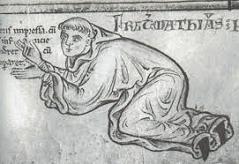

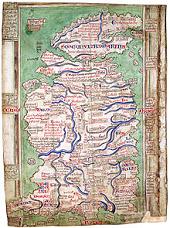
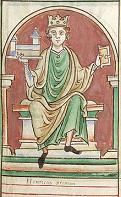
In 1240-53 English Benedictine monk-chronicler Matthew Paris (1200-59), known for illuminating his mss. with watercolors writes Chronica Majora, a history of the world from Creation to 1253, based on Roger of Wendover's "Flores Historiarum"; he abridges the years 1067-1253 as Historia Minor (Abbreviatio chronicorum), the years 1070-1253 as Historia Anglorum, and the years 1241-9 as Flores Historiarum; the years 1254-9 are later added.
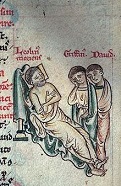
On Apr. 11, 1240 Llywelyn the Great (b. 1173) dies after suffering a paralytic stroke in 1237, and by his will his legitimate son (by Princess Joan) Dafydd ap Llywelyn (1212-46) becomes the first to claim the title of prince of Wales (until Feb. 25, 1246), pissing off his older half-brother Gruffydd ap Llywelyn Fawr (11196-44), who vies for the throne, causing Dafydd to hold him in prison (until 1241); meanwhile Henry III accepts his claim to rule Gwynedd, but decides to reclaim his daddy's conquests outside it.
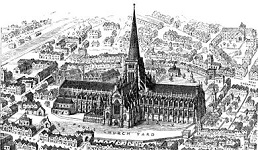
In 1240 the Gothic (Old) St. Paul's Cathedral (begun 1087) (the 4th since 604) in London is consecrated; in 1256 an enlargement program begins, and the New Work is consecrated in 1300 but not finished until 1314, making it the 2nd longest church (585 ft.) (178m) in Europe after the Abbey Church of Cluny, with the 3rd highest spire (489 ft.) (149m) after Lincoln Cathedral and St. Mary's Church in Stralsund.
In 1242 the Saintonge War (ends 1243) begins in Saintonge in CW France after vassals of Louis IX in Poitou led by Hugh X of Lusignan and Raymond VII of Toulouse and backed by Henry III of England don't acccept the accession of his brother Alphonse of Poitiers as count of Poitou; on July 21-22 the Battle of Taillebourg is a battle for Louis XI and Alphonse of Poitiers, breaking the rebels' backs.
On Apr. 27, 1243 the 5-year Treaty of Bordeaux is signed by Henry III of England and Louis IX of France, ending the Saintonge War (begun 1242), preserving the territorial status quo after Louis IX decides not to annex Guyenne, pointing to his desire to go on crusade, becoming the last major English-French conflict until the 1294-1303 Anglo-French War and pissing-off the English barons with Henry III's incompetence in war and tyrannical ways in defiance of the Magna Carta, leading to the Second Barons' War in 1264-7.
On Mar. 1, 1244 Gruffydd ap Llywelyn Fawr (b. 1200) dies trying to escape from the S side of the White Tower of London, lowering himself by a cloth rope which breaks because he is so fat, causing him to fall 90 ft.; he leaves four sons, Owain, Llywelyn, Dafydd, and Rhodri; meanwhile Dafydd, whose hands are freed enters into an alliance with other Welsh princes to reclaim English possessions in Wales, and scores some Vs.
In 1244 the first Dunmow Flitch competition is held in England, where a flitch or side of bacon is awarded to married couples who satisfy a judge and jury of six maidens and six bachelors that "in twelvemonth and a day" they have "not wished themselves unmarried again".

On Dec. 24, 1247 English Lord Locksley AKA Robin Hood dies?
In 1247 Bethlehem Royal Hospital in Bishopsgate outside the wall of London is founded as the priory of the new Order of St. Mary of Bethlem by Goffredo de Prefetti of Italy, bishop-elect of Bethlehem to collect alms for the Crusades; it begins to be called a hospital in 1330, and by 1377 (1403?) after the English govt. secularizes it, it begins admitting the insane; by the 14th cent. it becomes known as Bedlam; in 1547 it is acquired by the City of London, operating until 1948; it is now part of the British NHS Foundation Trust.
Even the thirteenth century had its missile gap? In 1249 Roger Bacon argues for a scientific curriculum at Oxford U., causing Univ. College to be founded by a bequest of 310 marks in the will of archdeacon William of Durham (-1249) (who dies in Rouen, Normandy), becoming the earliest college at Oxford established by private benefaction; it starts out with four fellows who are only allowed to study theology, and doesn't accept undergrads until the 16th cent. - everything from ice to steam to Japanese massage? In 1250 Roger Bacon (1214-94) of England invents the convex Magnifying Glass (hand lens).
In Aug. 1252 English king Henry III crosses over the English Channel to Gascony with his army and dismisses gov. Simon de Montfort, then getting pissed-off when Richard de Clare, 6th earl of Hertford refuses to accompany him and goes to Ireland instead.
In 1252 the 1252 Assize of Arms proclaimed by King Henry III to help enforce the 1181 Assize of Arms establishes the system of Watch and Ward, requring the appointment of watchmen and constables, becoming the earliest English police force; all Englishmen with an income of £25/year to own a longbow; churches are required to maintain butts for target practice.
In 1252 the Univ. Church of St. Mary the Virgin becomes the first bldg. adopted by Oxford U., becoming its admin. center.

In 1253 Edmund Crouchback, 1st Earl of Lancaster (1245-96), brother of Edward I of England is invested with the kingdom of Sicily and Apulia by Pope Innocent IV, and created earl of Chester by his daddy Henry III; too bad, Conrad IV of Germany is the de facto king f Sicily, and the earldom is soon transferred to his older brother Edward I.

The last Hohenstaufen on the throne of Sicily goes out kicking? On May 21, 1254 after being excommunicated, Conrad IV (b. 1228) dies of malaria in Lavello, and his brother Manfred continues the HoHo Hohenhstaufen fight with the PaPa Papacy, seizing the regency of Sicily for Conrad IV's infant son (his nephew) Conradin (1252-68) (until 1258), while Pope Innocent IV confers the crown of Sicily on Edmund Plantagenet, 2nd son of Henry III of England, in return for assuming a papal debt of £90K for this war; after he agrees, papal forces invade Sicily, and Manfred restores the Kingdom of the Two Sicilies to the papacy, while the pope attempts to help Henry III pay his debt obligation by a tax imposed on the English clergy, pissing them off; too bad, on Dec. 7 Pope (since 1243) Innocent IV dies (before or after numerologists discover that his Latin name equals 666 and proclaim him the Antichrist?), and on Dec. 12 Raynold (Rinaldi), Count of Segni is elected Pope (#180) Alexander IV (-1261); the Sicilian thang now being in limbo, the Great Interregnum begins (ends 1273), with non-Germans Richard of Cornwall and Alfonso X of Castile claiming the imperial crown, while the German princes solidify their political independence.
On Nov. 1, 1254 after Henry III worries about a Castilian invasion of Gascony, he marries his 15-y.-o. son Edward I (1239-1307) to 13-y.-o. Eleanor of Castile (1241-90), half-sister of Alfonso X of Castile; Edward I receives lands worth 15K marks/year, incl. land in England (earldom of Chester), Wales, and Ireland, becoming lord of Ireland, going on to use the country to provision his campaigns against the Welsh, French, and Scots; his son Edward II continues the practice.
In 1254 English king Henry III asks the Scots for military aid in Aquitaine, and only Alan Durward responds, going to Burgos in Castile with future Prince Edward and restoring himself in the king's favor while turning him against the Comyns.
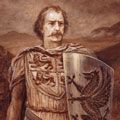
In June 1255 the Battle of Bryn Derwin sees Llywelyn the Last (Llewelyn ap Gruffudd) (1223-82) defeat his brothers Owain Goch ap Gruffydd and Dafydd ap Gruffudd, becoming the sole ruler of Wales (W of the Conwy River), and the last independent prince of Wales before the stankin' English takeover in 1282, going on to recover much lost Welsh territory in 1257-60 and bring a period of stability until the mid-1270s.
In 1255 Henry III of England accepts Sicily for his son Edmund - now all he has to do is hold it?
In 1255 English Christian boy Little St. Hugh (b. 1246) is allegedly ritually murdered by the Jews in Lincoln, England, after which the rabbi who allegedly presided over the ceremony is dragged by the tail of a horse through the streets and hanged, and another (the same?) Jew named Copin is executed after allegedly confessing that the Jews do it once a year; despite the intervention of Dominican monks, 18 more are hanged, and 90 are imprisoned in London for further investigation; Henry III transfers his "rights to mastery of the Jews" to his brother Richard for 5K marks.
In Nov. 1256 after Henry III gives his son Prince Edward Longshanks the area in Wales between the Dee and Conway Rivers known as Y Berfeddwlad (Perfeddwlad), and he visits it during the summer, only pissing them off worse, Llywelyn the Last invades and recovers all of it except the English castles of Dyserth and Deganwy, then by 1258 takes over all of Wales, styling himself prince of Wales in 1257, which gives Longshanks ideas as a nice title for his son?
In 1257 pogroms almost wipe out Jewish communities in Cambridge, Canterbury, Lincoln, London, Northampton, Winchester, and Worcester in England.
In May 1257 the Battle of Cadfan (Gael. "battle place") sees the Welsh under Llywelyn ap Gruffydd of Gwynedd defeat the stankin' English under Prince Edward Longshanks.

In June 1258 after English king Henry III asks the Great Council for help in paying off his debt for the Sicilian war, his pissed-off barons, led by Simon (V) of Montfort, 6th Earl of Leicester (1208-65) step in, drafting a program of reforms and baronial control of finances known as the Provisions of Oxford; after marching to the king's hall and forcing him to agree, a new baronial council of 15 takes the place of the Great Council, and they are placed under a new committee of 12 barons, becoming the First English Rev., and Montfort the "Father of the English Parliament"; Henry III swears to them, but weasels out by 1261, and the council only lasts 15 mo.; the Parliament (House of Commons) (the first one becoming known as the Oxford or Mad Parliament) is established, with Peter de Montfort as first parlour (speaker), and Simon de Montfort running both it and the country, ending absolute monarchy; it convenes for 18 mo. until Simon de Montfort's death at the 1264 Battle of Evesham.
In 1258 Henry III issues a royal proclamation in English this year, rather than the usual French.
In 1258 the town of Wolverhampton, England begins holding a Wednesday market and annual fair.
On Dec. 4, 1259 the Treaty of Paris between France and England yields Perigord and the Limousin in S France to Henry III of England, despite protests from both provinces, in return for renunciation of English claims to Normandy, Maine, Touraine, and Anjou; Guienne becomes distinct from Aquitaine; Navarre is cut off from the sea; despite the peaceful intentions of Louis IX, public opinion goes against him, weakening his position in S France.
In 1259 the Provisions of Westminster are enacted by the Great Council, remedying various govt. abuses in England, but the new baronial govt. soon starts to groan under selfish barons, despite good barons such as Simon de Montfort.
In 1259 Prince Llywelyn establishes peace between England and Wales.
In 1261 Henry III persuades Pope Urban IV to release him from his promise to support the Provisions of Oxford, and to declare the enactments of the barons since 1258 null and void; the English govt. is split into two camps, and civil war brews.
On July 14, 1262 Richard de Clare, 5th earl of Hertford (b. 1222) dies in Waltham, Canterbury after clearing the Welsh rulers from the W valleys of Glamorgan as far as the Rhondda River, allowing Llywelyn Ap Gruffydd to move up the Usk River Valley, capture the Brecon lands of Humphrey de Bohun, guardian of de Clare's young heir all the way to the N edge of Glamorgan, and start a push giving him mastery of most of modern-day Wales except the S coastal plain.
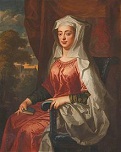
In 1263 Balliol College at Oxford U. is founded with guidance from the bishop of Durham by Devorguila (Devorguilla) of Galloway (1210-90) and her husband (since 1223) John I de Balliol (Baliol), 5th Baron de Balliol (-1268), parents of future Scottish king John I Balliol; alumni are known for possessing "the tranquil consciousness of an effortless superority", and incl. economist Adam Smith, PM Harold McMillan, and PM Edward Heath.
In 1264 the Second Barons' War begins (ends 1267); Henry III and his son Prince Edward fight Henry III's French-born brother-in-law Simon de Montfort, 6th Earl of Leicester, 1st Earl of Chester (1208-65) ("Father of the English Parliament") (son of a famous Albigensian Crusader), resulting in the first elected English Parliament; Rochester Castle, held by royal constable Sir Roger de Leybourne (1215-71) is sieged by Montfort and Gilbert "the Red" de Clare, 7th Earl of Gloucester, 6th Earl of Hertford (1243-95), who raise the siege after a week when Henry III arrives; in Apr. a massacre of Jews in Canterbury, England is led by "Red" Gilbert de Clare.

In 1264 Merton College at Oxford U. is founded by Walter de Merton (1205-77), bishop of Rochester and former chancellor to Henry III and Edward I, becoming the first modern college with its self-governing org., with instruction within its walls, going on to become a center for scientific studies, esp. mechanics, nurturing Roger Bacon, Thomas of Bradwardine, Robert Grossteste, Richard Swineshead, et al., and serving as a model for future colleges at Oxford and Cambridge - yah, baby?
On May 14, 1265 a bunch of pissed-off barons (angry at the rejection of the Provisions of Oxford), led by Simon de Montfort, 6th earl of Leicester (Henry III's brother-in-law) surprises the king's army (assisted by Sir William Sinclair under orders of Alexander III of Scotland), and wins the Battle of Lewes in Sussex, captures Henry III and Prince Edward, and assumes control of the govt., summoning two knights from each shire, and two burgesses (reps.) from each county, city, and borough to a central assembly, becoming the first time that the English middle class has a say in govt., and the birth of the modern British Parliament (c. 1240 the Great Council of the knights of the shire was called parliament, but non-knights were not allowed); on May 15 the Mise (Pact) of Lewes, a return to the reforms of 1258 is agreed on, with a baronial council of nine taking the place of the former council of 15; on June 22 Welsh prince Llywelyn the Last signs the pip-pip Treaty of Pipton with Simon de Montfort, recognizing Welsh independence in return for a 30K-mark payment; too bad, the barons don't like being ruled by a transplanted Frenchie, and the earl of Gloucester flops, helps Prince Edward escape, and together they gather a vastly superior force and defeat ever-sham Simon de Montfort and his barons on Aug. 4 at the Battle of Evesham in Worcestershire; Simon is KIA, Henry III is released and resumes his reign, but Prince Edward is really in control; the baronial govt. and its acts are thrown out, and Edward's attempt to take vengeance prolongs the resistance for two years. Bela IV of Hungary and Ottokar II of Bohemia begin a series of wars (until 1270).
In 1266 the Bakers Marking Law requires English bakers to begin marking loaves of bread to identify the source of bad bread, becoming the first use of trademarks; in 1267 the Assize of Bread and Ale in England is the first law in England regulating the production and sale of food; to avoid being punished for selling a short-weight loaf, bakers add a 13th loaf to a dozen, becoming known as a baker's dozen; the law is amended in 1822 and 1836 before being repealed in 1863.
On Nov. 19, 1267 the Statute of Marlborough makes permanent the reforms embodied in the Provisions of Westminster, which is all that remains of the baronial reforms; it survives to modern times as the oldest piece of British statute law not completely repealed; the English Civil War (begun 1257) ends.
In 1267 Prince Llewelyn the Last signs the Treaty of Montgomery with Henry III of England, winning formal recognition of his enlarged principality of North Wales (all of Wales outside the marches) in return for homage and a tribute of 25K marks, payable 3K a year.
In 1267 goldsmith and tailor guilds fight each other in fierce street battles in London, England.

In 1269 Merton College at Oxford U. is founded by Walter de Merton (1205-77), bishop of Rochester and former chancellor to Henry III and Edward I, becoming the first modern college with its self-governing org., with instruction within its walls, going on to become a center for scientific studies, esp. mechanics, nurturing Roger Bacon, Thomas of Bradwardine, Robert Grossteste, Richard Swineshead, et al., and serving as a model for future colleges at Oxford and Cambridge - yah, baby?
In 1270 Margaret II of Flanders confiscates the property of English merchants, causing a devastating trade war with England, which supplies most of the wool for Flemish weavers.

Time won't let me wait that long? On Nov. 16, 1272 king (since Oct. 19, 1216) Henry III (b. 1207) dies after a 56-year reign, and his tall (6'2") (6'7"?), handsome (with a drooping left eyelid like his daddy), quick-tempered 33-y.-o. son (makes a dashing figure on his horse?) Edward I (Longshanks) (1239-1307) becomes king of England (the 29th English monarch) (until July 7, 1307) (everybody called him Longshanks, but never to his face?), the English Justinian, the first truly English king, an able ruler and great legislator surrounded by able ministers and lawyers and frequently consulting the knights and townsmen; his motto is "pactum serva" (keep troth); returning from the Crusades, he spends a year in Gascony (Basque-ony, old land of the car-door-ear Basques in SW France on the Bay of Biscay), and is not crowned until 1274; the permanent loss of Jerusalem ends the fantasy of it being the capital of Christendom, further solidifying European unity that was helped in 1453 by the loss of Constantinople.
In Aug. 1278 the Statute of Gloucester is passed in England, becoming the first recorded in a Statute Roll, encouraging loyal subjects to petition King Edward I against his own barons and ministers, modifying novel disseisin (Lat. "recent dispossession") (action for recovery of land seized illegally), reviving the system of gen. eyres (royal justices riding circuit), and increasing the number of pleas of quo warranto (Lat. "by what warrant?") that they can hear; too bad, the statute limits actions on writs of trespass in the royal courts to property damage above 40 shillings, maims, beatings, and wounds, causing the writs to begin alleging "vi et armis" (force and arms).
In 1278 in London 278 Jews caught clipping coins are hanged, while Christians found guilty of the same offense are merely fined.
In 1280 Edward I of England establishes a commission to examine Welsh law as a prelude to invading Wales.
In 1281 20 years after setting out from Yuan China on a pilgrimage to Jerusalem, only to get holed-up in Baghdad instead, where they are welcomed by Nestorian patriarch Denha I, Turkish Chinese monk Rabban Bar Sauma (Sawma) (1220-94) and his student Rabban Markos return to Maragheh after Markos is elected Yaballaha III, patriarch of the Nestorian Church, and in 1278 he sends his former teacher to Rome to negotiate an entente between the Nestorian and Roman Catholic churches and form a strategic Franco-Mongol alliance against the Muslim Mamluk sultanate in Cairo, arriving after the death of Pope Honorius IV and negotiating with the cardinals instead, proceeding to Genoa then Paris, where he spends 1 mo. with Philip IV the Fair, then to Gascony, where he meets Edward I of England in Bordeaux, who is enthusiastic but begs off due to conflicts with the Scots and Welsh; he then returns to Rome, where new Pope Nicholas IV gives him communion on Palm Sun., 1288 before returning to Baghdad; Bar Sauma writes an account of his travels giving the viewpoint of the East on the West, beating Marco Polo.

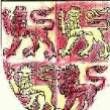
In Apr. 1282 (Palm Sun.) after lesser Welsh princes get fed up with Edward I's royal officers and start a revolt, Prince Llywelyn the Last (b. 1223), the last prince of Wales leads his disgruntled Welsh against English strongholds; too bad, on June 19 his wife Eleanor dies in Garth Celyn during childbirth of daughter (only child) Gwenllian ferch Llywelyn (d. 1337), and Longshanks invades Wales, captures the breadbasket region of Anglesey, and offers Llywelyn a large estate in England if he will sell his people out, to which he replies that his ancestors had protected his people "since the days of Kamber son of Brutus" and so stuff it; he then leads a force S to mid-Wales, and on Dec. 11 is KIA at the Battle of Builth Wells in Powys after being tricked into separating from his main army, and his head severed, sent to London, and put up on a pike crowned with ivy, fulfilling the Welsh prophesy that Big Lion would ride crowned through the streets of London; on Dec. 11 his brother Dafydd ap Gruffydd (1238-83) succeeds him as prince of Wales (until Oct. 3, 1283), watching Welsh morale crumble as Longshanks goes in for the kyll.
In June 1283 Daffydd ap Gruffydd (b. 1238) is captured on Bera Mt. near Garth Celyn, and taken to Shrewsbury, England, where a special session of Parliament condemns him to be hanged, drawn and quartered on Oct. 3, making him the last free Welsh ruler; the House of Gwynnedd becomes extinct.

In 1283 New (Old) St. Paul's Cathedral in London is begun (finished 1314), becoming the largest church in Europe; a ripoff of Notre Dame Cathedral in Paris?
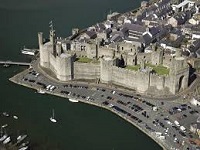
In 1283 Caernarvon (Caernarfon) Castle on the Menai Straits in N Wales near the ancient Roman fort of Segontium is begun by Edward I (finished 1323), who invests his son Edward II as the first prince of Wales there; Edward III is invested there in 1911, and Prince Edward, er, Charles in 1969.

In 1283 construction of cool Harlech Castle in Wales by the English begins (ends 1290).
In Jan. 1284 Prince Alexander (b. 1264), last male heir of widower (since 1275) Alexander III of Scotland dies, leaving only his 9-mo.-old granddaughter Margaret of Norway (b. 1283) as a legitimate heir, which causes him to send a delegation to France to seek a wife next Feb., beginning a long chain of troubles for Scotland as Edward I of England, the Hammer of the Scots decides that this is his cue to finish the pesky Scots off, after he disposes of the Welsh?
A little ethnic cleansing a day keeps the Celts away? On Mar. 3, 1284 the Statute of Wales (Rhuddlan) sets up a new English govt. regime in Wales "as a member of the same body", with English common law replacing the 10th cent. Laws of Hywel; English settlers are invited in but no attempt is made to assimilate the Welsh; the marcher lords remain separate, and the English border barons go on to stink themselves up with tyranny, leading to the Owen Glendower Revolt of 1400.
On Apr. 25, 1284 Edward II (d. 1327), son of Edward I is born in Wales, and Alexander III hints to Edward I that he might later marry his granddaughter Margaret of Norway - I'm so hot for him and he's so cold?
In 1284 Peterhouse College is founded at Cambridge U. by Hugo (Hugh) de Balsham (-1286), bishop of Ely, and chartered by Edward I, becoming its oldest college. Ruthin School in Denbighshire, North Wales is founded by Reginald de Grey, becoming one of the oldest British public schools to survive to modern times; it goes co-ed in 1990.
In May 1285 the Cross of Neith (Y Groes Naid), a fragment of the True Cross once prized by the Gwynedd rulers of Wales is paraded through London in a procession led by the king, queen, archbishop of Canterbury, and 14 bishops, followed by the magnates of the realm - Wales has been absorbed by Edward Borg?
On June 8, 1287 Rhys ap Maredudd revolts in Wales (until 1288).
In 1287 Edward I of England orders the expulsion of the Jews from the duchy of Gascony, and confiscates their property.
In 1288 Edward I of England mediates a treaty confirming James II of Aragon as king of Sicily, but Pope Nicholas IV annuls it.
In Nov. 1289 after Edward I secured papal approval in May the Treaty of Salisbury (Birgham) betrothes Edward II of England to Margaret the Maid of Norway.
By the 1290s the Border Reivers begin raiding and cattle rustling along the lawless English-Scottish border; they aren't stopped until the end of the 16th cent., by Sir Robert Cary, 1st Earl of Monmouth (1560-1639), who crows about it in his autobio.
In the 1290s the English miracle play The Harrowing of Hell is written in the East Midland dialect, about the trimphant descent of Christ into Hell after his Crucifixion, where he brings salvation to all righteous people who died since Creation; 1 Peter 4:6 says "Good tidings were proclaimed to the dead."
Who's that lady, beautiful lady, lovely lady, really fine lady, look but don't touch? Big mistake in Scotland? On July 18, 1290 the Treaty of Birgham (Salisbury) in Berwickshire between Edward I of England, Eric II of Norway, and the Six Scottish Guardians formalizes the betrothal of 6-y.-o. Edward II (b. 1284) to 7-y.-o. Queen Margaret of Scots (b. 1283), the Maid of Norway, with the happy couple to hold Scotland as a "separate and divided" kingdom; Edward I sends a lavish fleet (captained, according to the folk song, by Sir Patrick Spens, who is sent "To Noroway, to Noroway") to fetch the bride from Norway, but she leaves Bergen in Aug. in a Norwegian vessel under the care of Bishop Navre of Bergen bound for Norwegian soil on Orkney, where an embassy of Scottish knights sent by William Fraser, bishop of St. Andrews is to meet and escort her to Scone for her inauguration; too bad, on Sept. 26 the first rumors reach Scotland that she has died of illness (smallpox? too much rotten walrus meat?) before or after reaching Orkney, and is taken back to Bergen, ending the Canmore Dynasty and leaving no obvious heir, bringing out the worst in Scottish clannishness, starting with Robert Bruce, 5th Lord of Annandale arriving at the site of Queen Margaret's planned coronation with an army after hearing that his friends the earl of Mar and earl of Atholl are raising their forces; the descendants of David of Scotland, 8th Earl of Huntington (1144-1219), paternal grandson of David I of Scotland, and brother of William I the Lion (father of Alexander II, who started the spent line of Alexander III) lead the pack of 13 claimants, who incl. Edward I himself (whose claim is based on his descent from Edith, wife of Henry I of England and daughter of Malcolm III of Scotland), John de Balliol (1249-1313), son of John Balliol, 5th baron de Balliol of Barnard Castle and Devorguilla of Galloway (daughter of David's daughter Margaret), Robert Bruce, 5th Lord of Annandale (1215-95) (grandfather of future King Robert I the Bruce), and John Hastings, 2nd Baron Hastings (1287-1325); too bad, since there are three women between them and Earl David, and you know what they think about that, civil war looms, with the Bruces, who are lords of Annandale and earls of Carrick in camp #1, and the Balliols, who are lords of Durham and Galloway, backed by the Bruce's local rivals the Comyns and other lords of Galloway in camp #2; smelling napalm (victory) in the morning, and already considering himself king, er, overlord of Scotland, Edward I holds a parliament in Kings Clipstone in Nottinghamshire and summons the Scottish magnates to meet him at Norham Castle in NW Nottinghamshire, claiming the right (of Norman blueblood superiority?) to mediate and decide the controversy, with an implied threat of English invasion; despite opposition by the Scottish people, each candidate acknowledges Edward I as overlord by next May, letting him appoint a commission to examine their claims, meanwhile taking over the govt. of Scotland himself - so Longshanks can tell his puppet commissioners to choose the biggest whimp, who will become his puppet king and march into Scotland leading an English army to take it without firing an arrow, with the sell-out Normanized Scottish nobles applauding it, while the "inferior" Celtic common Scots are scheduled for extermination, forcing the real patriots to flee to the highlands to fight for their free-ee-ee-dom? Or was Balliol really the best claimant, and Scotland's time was just up? Like all wars, the Jews started this one too, right Mel (insert music and mugshot here?)


On Nov. 28, 1290 as they travel from Clipstone toward Lincoln, Eleanor of Castile (b. 1241), beloved queen consort (since 1254) of English king (1272-1307) Edward I "Longshanks" (1239-1307) dies in the village of Harby in Nottinghamshire (10 mi. from Lincoln), and he is so grief-stricken that he has an "Eleanor Cross" ("of immense height") called chere reine (Fr. "dear queen") erected at each site (Lincoln, Grantham, Stamford, Geddington, Northampton, Stony Stratford, Woburn, Dunstable, St. Albans, Waltham, Westcheap) where her body is set down during the journey back to Westminster Abbey in London, the last one, Eleanor Charing Cross in the hamlet of Charing, Westminster, London later being used as the geographical center of London; needing to blow off steam, on July 18 Edward I issues the Edict of Expulsion, ordering the 16K remaining pesky Jews (who since 1218 had to wear a marking badge) expelled from England by Nov. 1 (9th of Av), abandoning their real estate and loans, and it's bye-bye for over 350 years until Oliver Cromwell lets them return in 1655 (expelled rather than burned, so not to contribute to the recent smog problem?); allowed to take only what they can carry, they pay mucho dinero for their passage and are thrown overboard by ship captains, who keep everything, then turn around to pick up the next boatload?; those who reach France are ordered to leave by Lent of 1291; Italian goldsmiths from Lombardy take over the moneylending business in England, and are granted some land in London which later becomes known as Lombard Street, the main banking center.
In Nov. 1290 John Balliol, claiming to be "heir to the kingdom of Scotland" grants lands in Cumberland held by dead king Alexander III to Bishop Anthony Beck of Durham, Edward I's emissary to Scotland - in order to impress him?
In 1290 Italian goldsmiths from Lombardy take over the moneylending business in England, and are granted some land in London which later becomes known as Lombard Street, the main banking center.
In 1290 Edward I of England has King Arthur's Round Table painted in Winchester Cathedral, using his own face for Arthur, and reburies the bones of Arthur and Guinevere in a marble tomb in Glastonbury in wild wild Somersetshire in SW England.
In 1290 Harlech Castle in Wales (begun 1283) is completed.
Late in the 13th cent. the Triads of Britain (Welsh Triads) begin to be written, preserving Celtic history, incl. King Arthur, Caractacus, and Caswallon.
On Apr. 4-May 18, 1291 the last Crusader (Frankish) state of Acre (Saint-Jean d'Acre) (Akka) in Syria is sieged and captured by the Mamluks, followed in May by Tyre; the Christian Crusades (begun 1095) end miserably with the expulsion of the Crusaders from the Middle East (Palestine), and the Mamluks in control of all of Egypt and Syria; Pope Nicholas IV calls upon all Christian princes to pray for all the needless deaths, er, take up arms against the Muslims one more time, and for synods to discuss the advisability of uniting the Knights Templar and the Knights of St. John, whose catfights he partly blames for the loss of the Ptolemais; in Aug. he sends a letter to Persian Mongol khan Arghun informing him of plans of Edward I of England to lead another Crusade to recapture the Holy Land, stating that it could only be successful with the help of the "powerful arm" of the Mongols, and asking Arghun to receive Christian baptism and march against the Mamluks; after Arghun dies in Mar. 1291, followed by Nicholas IV in Mar. 1292, Edward I sends Geoffrey de Langley to Persian Mongol khan Gaikhatu, leaving from Genoa and arriving in Tabriz, then returning to Genoa; "Had the Mongol alliance been achieved and honestly implemented by the West, the existence of Outremer would almost certainly have been prolonged; the Mameluks would have been crippled if not destroyed; and the Ilkhanate of Persia would have survived as a power friendly to the Christians and the West" (Sir Steven Runciman, A History of the Crusades, p. 402); meanwhile the Knights of St. John are transferred to conveniently-located Cyprus; too bad, the Templars end up back in Europe with no coverstory and too much land and wealth, causing a ton of pissed-off royals who owe them money to get ideas? - they got sixteen years left?
In 1291 Durham College at Oxford U. is founded by Benedictine monks from Durham Abbey; it is closed by Henry VIII in Mar. 1545.
In 1291 Edward I of England erects a Gothic Eleanor Cross at Charing Cross (from Fr. "chere reine" = dear queen) in Westminster, London on the NW bank of the Thames River between the Strand and St. Martin's Lane 1.25 mi. from St. Paul's as a token that the bier of his wife Eleanor of Castile had been laid down there on its journey from Grantham, Lincolnshire to Westminster Abbey; the Roundheads demolish it in 1647; a copy is erected in 1865.
In 1291 the Gothic York Minster Nave in England is built, with wood used to span the space as a safeguard.


On Nov. 7, 1292 Robert de Brus, 5th Lord of Annandale (1215-95) concedes loss of the Great Cause, and resigns Annandale to his son Robert de Brus, 6th Lord of Annandale (1243-1304), father of future Scottish king (1306-29) Robert I the Bruce (1274-1329). On Nov. 17, 1292 John de Balliol (an Anglo-Saxon magnate having little Scottish blood) is selected by Edward I's commissioners; on Nov. 20 in return for Edward surrendering the govt. of Scotland to him, he swears an oath of fealty to him as his lord paramount, and the Great Seal of Scotland is broken up and sent to Westminster; on Nov. 30 (St. Andrew's Day) he is crowned king John I Balliol (1249-1313) of Scotland (until July 10, 1296) at Scone Abbey near Perth (in E Perthshire), becoming the last king to be crowned on the Stone of Scone (pr. SKOON); as an omen the ceremony is overseen by Edward's officials instead of the usual Scottish earls and churchmen; Robert the Bruce the 7th refuses to do homage to him; on Dec. 26 John is recrowned personally by Edward I in Newcastle, renewing his homage to his overlord and releasing him from any past promises about Scottish autonomy, further degrading Scotland to a province of England, while Edward, as overlord, begins hearing appeals from Scottish courts despite everything King John can do - while the common Scots soil their kilts?
How many days of nonstop horror that will leave your head spinning? In fall 1294 Madog ap Llywelyn (-1313), a distant relation of Llywelyn ap Gruffudd becomes the last native prince of Wales, beginning a revolt in what's left of N and W Wales after the stankin' English impose a one-fifteenth tax on all moveables, and it spreads to S Wales; Morlais Castle is captured, and half of the town of Caerphilly is burnt, but super-fortress Caerphilly Castle holds out; Harlech Castle is sieged, and defended by just 37 men; Conwy Castle is sieged with Edward I Longshanks leading the defense until his navy relieves him next year.
Is this the beginning or is this the end, when will I see you again? In 1294 Philip IV announces a war levy on the clergy, and when they balk he begins a violent anti-papal pamphlet campaign, debasing the currency to finance the war; meanwhile in the summer Edward I demands that King John I Balliol supply Scottish soldiers for his war on France; although he is ready to do it, the nobles balk, and set up a council of 12 magnates (ecclesiastics and nobles) to rule in his place but in his name, and it declares estates held by Englishmen in Scotland forfeited; the Welsh see their chance, unite and revolt, causing Edward to waste a year on them, while depleting his French expedition of troops.
On Apr. 1, 1295 Robert Bruce the 5th (b. 1215) (original claimant of 1290) dies, and on Apr. 3 his son Robert Bruce the 6th, 2nd earl of Carrick resigns his earldom to his 18-y.-o. son Robert Bruce the 7th (future Robert I), and goes on an extended tour of the Holy Land.
On Mar. 5, 1295 the Welsh Revolt (begun 1294) is crushed at the Battle of Maes Moydog after they do a Sir William Wallace and use the schiltron, only to be showered with arrows; Madog, who had declared himself prince of Wales is captured in early Aug. by John de Havering, and taken to London, but supposedly not executed; Edward imposes humiliating laws on the Welsh kicking the Celtic dogs down William-the-Conqueror-style.
In 1295 at the urging of the Committee of Twelve, King John Balliol ignores a summons to attend Edward I, and instead the Scots and the French sign the Auld Alliance, one of the world's first mutual defense treaties, which lasts almost three cents., with France agreeing to invade England if England invades Scotland; France excludes English ships from its ports - Scotland becomes the Cuba of the 14th-16th cents.?
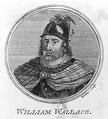

In spring 1297 the Franco-Flemish War (ends 1305) begins when Edward I invades N France with a large force in alliance with Count Guy of Flanders, who hopes to get revenge on Philip IV, to which Philip responds by declaring Flanders annexed to the royal domain, on Aug. 20 the Battle of Furnes (Veurne) sees Guy defeated by Robert II of Artois, causing Edward to make peace with Philip next year and leave Guy in the lurch; Count Walram of Julich (Jülich) (b. 1240) is brutally murdered by the French after surrendering, pissing-off the Flemish, who get even at the Battle of the Golden Spurs in 1302; meanwhile Edward leaves John Warenne, earl of Surrey as his gen. in charge of Scotland, giving William Wallace a free hand to attack the English; in May Wallace's new wife Marian "Cornelia" Braidfoot (Braidfute) (b. 1278) of Lamington (Murron MacClannough in the 1995 "Braveheart" flick), whom he just married in the St. Kentigern Church in Lanark in S Scotland is executed under orders of Lanark sheriff Sir William de Hazelrig (Heselrig) in her own house, pissing-off Wallace bigtime and causing him to attack the Lanarck garrison and kill Hazelrig and dismember his body; Wallace, who has killed an English sheriff and is now a big rebel attracts many followers, then attempts to surprise the English judiciar at Scone, and holes up with a large force in Selkirk Forest while Robert the Bruce, after conferring with Bishop Robert Wishart of Glasgow and Wallace's daddy's liege lord James Stewart the High Steward of Scotland decides to help Wallace in the summer, in Balliol's name but really with himself in mind, claiming to "join my own people and the nation in which I was born", but on June 9 he and his nobles capitulate to the English at the Capitulation of Irvine in Ayrshire in SW Scotland, and are chastened but allowed to keep their lands; watching the *!?*! nobles sell-out just makes Wallace and Andrew Murray madder, and they take control of the rebel army and consolidate it. Here are Scotland's terms: Your commander will come out here and kiss his own arse, and then you stankin' English will lay down your weapons and march back to England, stopping at every village and hamlet along the way to apologize for a hundred years of rape and pillage, or or we'll slay every last one of you today, erin go bragh - oops? The 1995 Mel Gibson film Braveheart is moose hockey? On Sept. 11, 1297 (Sept. 19 Gregorian) (Thur.) after they retake Dundee Castle, the way-outnumbered Scots (nobles and commoners) under the leadership of oh-what-a-man 6'7" (6-6? 6-4? 5-10?) 25-y.-o. William Wallace (1272-1305) (carrying a 5'7" Claymore in a scabbard on his back?) and Andrew (de) Murray (b. 1270) defeat the English army under John Warenne, 6th Earl of Surrey (1231-1304) in the not-quite-sporting Battle of Stirling Bridge, "the gateway of the Highlands", originally deployed across the impassible Forth River at the end of a valley from Stirling Castle, catching the English marching single file on the bridge then trapping and cutting them in half before slaughtering them with their farm implements and an occasional stolen English weapon or family Claymore (which isn't okay according to the rules of chivalry, which say they must be allowed to set up on the field of battle first?); 5K English are KIA; Wallace has Warrene's back flayed and turns the skin into a souvenir; the Scots shout "Alba go Bragh" (Gael. "Scotland forever", a version of Erin go Bragh or Ireland/Freedom forever); (Erin Go Bragh - go over there baby an' take off your bra, Freedom Forever?); Andrew Murray is mortally wounded, leaving posth. son Sir Andrew Murray, Lord of Petty and Bothwell (1298-1338), and Wallace becomes sole rebel leader, and by the end of Oct. no English soldiers remain on Scottish soil; on Oct. 18 he invades Northumbria all the way to Durham County, never reaching York, but scaring Longshanks enough to make him swear to destroy Wallace completely; he then recrosses the Tweed River on Christmas; meanwhile Edward I is in Flanders fighting the French, causing him to begin negotiations with Philip IV to free him to kick their kilted butts ASAP; meanwhile after Edward I demands heavy taxes on personal property for the 4th consecutive year, and the barons and the higher clergy protest, along with the middle classes, a coalition led by Archbishop Winchelsea drafts the Norman French Confirmation of the Charters (Confirmatio Cartarum), the most important document since the 1215 Magna Charta, confirming it and other charters, with the provision that no non-feudal levy on personal property can be laid by the crown without a parliamentary grant "by the common assent of all the realm"; the English Parliament of the future is foreshadowed, along with the principle of no taxation without representation; too bad, Longshanks never actually grants the concession, leaving it to his son Edward II as regent, and Pope Clement V later frees Longshanks from his promise in exchange for the right to collect annates in England.

In Mar. 1298 after ending the French-English Gascony War (begun 1293) with a truce with Philip IV the Fair of France negotiated by Pope Boniface VIII, requiring him to marry Marguerite of France in return for the key city of Guinne and £15K, Edward I Longshanks returns to England, immediately organizing an army to invade pesky Scotland, moving his govt. to York (until 1304); in Apr. a council of war is held, and when the Scottish magnates fail to appear they are declared to be traitors, and Edward I orders his army to assemble in Roxburgh on June 25, and assembles 28.8K men incl. 3K cavalry, 14.8K infantry, and 11K Welsh longbowmen, marching N in early July to take on pesky rebel Sir William Wallace and his ragtag Scots, who deprive them of provisions along the way by removing all food and pop., causing them to begin starving and rioting at Temple Liston near Edinburgh, ended by the English cavalry killing 80 drunken Welshmen; on July 22 after Edward I decides to fall back to Edinburgh then learns that Wallace is holed-up in Callendar Wood near Falkirk only 13 mi. away to harass their retreat, uttering the soundbyte: "As God lives... they need not pursue me, for I will meet them this day", the First Battle of Falkirk (AKA Eaglais Breac, from Gael. "church of speckled stone") (2nd in 1746) in Stirlingshire 3 mi. S of Grangemouth on the Firth of Forth (22 mi. NE of Glasgow) (near the ruins of the Antonine Wall) sees 6K pesky Scottish freedom fighters (incl. 1K cavalry) take on the stankin' English invaders despite being outnumbered almost 5-1; Robert the Bruce fights on Longshanks' side; Wallace introduces the Schiltron (Sheltron) (Shiltron) (Schiltrom) (Sceld-Trome) (shield wall), a phalanx of 12-ft. pikes ("twice as long as a man") to defend against the English heavy horse (actually a hedgehog of men carrying regular spears pointing outward in a circle, which were used in prior battles, and aren't that great, as horses aren't stupid enough to charge into them, they are too immoble, and missile fire can break them); despite positioning themselves in front of a heavy forest and in front of a marsh, the Scots are overwhelmed with numbers, and after the English longbows are finally brought into position to attack the schiltrons, they score the first great longbow V in warfare; after losing 2K and seeing 2K desert, Wallace escapes with his last 2K into the impenetrable Torwood Forest; the starving English lose 2K, the retreat to Carlisle, in which many desert causing Edward to disband his army and remain on the border until the end of the year, after which he returns to England, pissed off at his disloyal barons; Wallace is forced to resign as guardian of Scotland and flees to France to seek support from Philip IV the Fair and later the pope, becoming a hunted man until his last hurrah in 1305; right after the battle, Bruce (who may or may not have helped Wallace escape from the battlefield) revives his claim for the kingship, burning English-held Ayr Castle in Aug., pissing-off Edward I, who chases him into Carrick, where he goes into hiding after razing his own Turnberry Castle to the ground, then joins the patriotic rebel side in the name of King John Balliol, becoming joint guardian of Scotland with his cousin John III "the Red" Comyn, Lord of Badenoch (1270-1306), son of John II "Black" Comyn (a descendant of Donald Ban) and Eleanor Balliol (eldest daughter of King John Balliol), and husband of Joan de Valence, daughter of William de Valence (an uncle of Edward I), whose Celtic-Norman blood and marital connection makes him a leading candidate for Scottish king, pissing-off Robert the Bruce; meanwhile William (de) Lamberton (-1328) is appointed bishop of St. Andrews by the pope.
On Sept. 8, 1299 Edward I of England marries Marguerite (Margaret) of France (1279-1318), "the Pearl of France", who turns out to be a model queen, intervening several times to save people from her hubby's wrath, and pleasing him by joining him at the Scottish border a few mo. after he leaves (like his dead babe Eleanor of Castile would have done?); they go on to have three children, Thomas of Brotherton, 1st Earl of Norfolk (1300-38) (who joins Queen Isabelle's revolt against Edward III), Edmund of Woodstock, 1st Earl of Kent (1301-30) (who sides with Edward II against Isabelle and gets executed for it), and short-lived Eleanor of England (1306-10); meanwhile the Scots use Edward I's absence to recapture Stirling Castle, and Sir William Wallace goes to France to seek support for his cause; Bishop William Lamberton of St. Andrews is appointed the 3rd guardian of Scotland to balance Bruce and Comyn after they meet in the summer in Peebles and become violently divided when the Comyns accuse the Bruces of treason for wanting to dump Toom Tabard (King John I Balliol); in July after pressure from France and Scotland, Balliol is released from the Tower of London into papal custody, leaving for exile in Avignon, after which he never leaves France.
Early in the 14th cent. surnames in the British Isles begin to be fixed.
Early in the 14th cent. Europeans begin exterminating cats, just in time to make them defenseless against the rat-borne bubonic plague?
In the 14th cent. sea trade replaces mainland fairs in Europe, with large 3-masted carracks linking Normandy, Spain, Italy et al.
In the 14th cent. the Assumpsit (Lat. "he has undertaken") form of action at common law originates in England when litigants seeking justice in the royal courts turn from the writs of covenant and debt to the trespass on the case, becoming the beginning of modern contract law incl. unjust enrichment.
In the 14th cent. the word "fun", based on "fon" (a fool or jester, a person who likes to fonnen) comes into the English language, meaning trick, hoax, or joke.
In the 14th cent. the Worshipful Co. of Brewers is founded in London, England, receiving a royal charter in 1438 fom Henry VI.
In the 14th cent. the Rondel verse form originates in France, spreading to England and Romania, a variation of the rondeau consisting of two quatrains followed by a quintet (13 lines total) or sestet (14 lines total), of the form ABba abAB abbA(B).
In the 14th cent. Cast iron becomes widely available in Europe; in this cent. Sheffield, England in South Yorkshire (built on seven hills like Rome and Prague) becomes known for manufacturing cutlery, becoming the #1 center by 1600.
In the 13-zeds decade the monastic revival in England, which started with the Norman Conquest in 1066 ends.
In May 1300 Robert the Bruce is ousted as joint guardian of Scotland in favor of Sir Ingram (Enguerrand) de Umfraville (-1321), a kinsman of King John I Balliol and ally of John III "Black" Comyn, Lord of Badenoch (1242-1302); Edward I invades Scotland and refuses a personal demand from John Comyn to restore King John Balliol and give up Scottish lands; continued diplomatic pressure from France and Rome (where Wallace is acting as an envoy, and has a letter from Philip IV asking Pope Boniface VIII to help him) forces Edward I to sign a truce; too bad, the Scots continue their pesky raids into N England, pissing-off Edward I and making him put pressure on the Scottish nobles to betray Wallace.
In 1300 Richard of Haldingham and Lafford (AKA Richard de Bello), Prebend of Lafford in Lincoln Cathedral create the Hereford Mappa Mundi (158cm x 133 cm), becoming the largest known medieval map, drawn on a single sheet of vellum, housed at Hereford Cathedral in England; places Jerusalem at the center of the world, and displays the location of Noah's Ark.
In 1300 5he Church of St. Mary the Virgin in Oxford, England is begun (finished 1498).
In Oct. 1301 after the Scottish bishops send a delegation, Pope Boniface VIII pooh-poohs English claims that there is no kingdom of Scotland anymore, enforcing the old documents making it "Rome's special daughter" entitled to his personal protection, and overrides the English terms of King John Balliol's release, after which he is discharged into the custody of French king Philip IV Le Bel and allowed to live on his estates in Balieul, Picardy; meanwhile Sir William Wallace returns from France with news of possible assistance from Philip IV.
In 1301 Edward I names his son Edward II the first Prince of Wales, the heir to the English throne - making a virtue out of crushing a Celtic people?
In 1301 Edward I obtains from the pope the grant of half the proceeds of a tenth imposed on the English clergy by papal order, thus getting around the need to ask for their consent.

In Feb. 1302 isolated Robert the Bruce resubmits to Edward I, being permitted to retain his lands and marry his 2nd wife Elizabeth de Burgh (1289-1327), daughter of Richard Og (the Young) de Burgh, 2nd Earl of Ulster (1259-1326) (AKA the Red Earl), ally of the English crown; Edward promises to back Bruce's claim to the Scottish kingship.
In 1302 the merchants of Gascony, France receive special privileges from the English crown.

On Feb. 24, 1303 after Crusader king Edward I Longshanks (1239-1307), the Hammer of the Scots, king of England, duke of Gascony, incl. parts of Ireland, the Channel Islands (Iles Normandes), and Wales invades Scotland again, he is stopped at the Battle of Roslin in Roslin Glen near Edinburgh by John Comyn, Sir William Wallace, and Wallace's kinsman Sir Symon (Simon) Fraser (-1306) (Wallace refuses the command because of his defeat at Falkirk); in May Edward I invades again with a full-strength force, with Robert the Bruce, who is made sheriff of Lanark and keeper of Ayr Castle supplying troops to aid him; Wallace gains financial support from Bishop Wishart of Glasgow to continue the struggle; Edward I being nicely occupied, Philip IV goes to Plan B, claiming to be overlord of Gascony, and encouraging vassals to appeal from the English court to his, and generally seeking to undermine the English admin. of Gascony.
In 1303 Edward I grants the Carta Mercatoria (Merchant's Charter), allowing foreign merchants free entry and exit from England with their goods in return for reciprocal privileges; it arouses opposition and is revoked by Edwad II, but is gradually reestablished, and endures two cents., although the Hanseatic League does everything it can to avoid the reciprocal part.

In Feb. 1307 after his brothers Thomas and Alexander are betrayed and executed as traitors Wallace-style, Robert the Bruce lands in his homelands at Carrick and begins guerrilla warfare in SW Scotland, doing the hippy hippy shake shake by leading his few hundred troops from the front and defeating the English at the Battle of Glen Trool in Galloway in Apr. and the Battle of Loudon Hill (assisted by Henry Sinclair of Rosslyn, giving him 600 troops) on May 10; lucky for him, on July 7 after launching an invasion of Scotland from Carlisle, Edward I Longshanks (b. 1239) dies in the marshes en route in Burgh-on-Sands (Burgh by Sands) near Carlisle at the "very great age" of 68, leaving the crown heavily in debt; even more lucky, on July 8 his ignorant, incompetent, pampered, gay whimp of a son (the first gay Prince of Wales?) Edward II (Edward of Carnarvon) (1284-1327) becomes the 30th monarch of England (until Jan. 20, 1327) (crowned next Feb. 25), giving the Scots something to cheer about, and women across Scotland are falling in love with because-I-said-so Bruce, who waits till the new king leaves Scotland for England in the summer to take on the pro-Balliol and pro-Comyn Scots in English pay, taking Inverlochy, Urquhart, and other castles of his enemies then razing them and burning their lands; too bad, in the winter Bruce suddenly takes ill, recovering by spring.


On June 21, 1314 after gathering a 16K-man army (boycotted by several English earls), Edward II relieves the siege of Edinburgh, then crosses the Bannockburn River after hearing that Stirling Castle, the last major English stronghold in Scotland had agreed to surrender if not relieved by June 24; on June 23 after Robert I chooses the ground, the Battle of Bannockburn sees Scottish king (since 1306) Robert I the Bruce (1274-1329) and an underarmed force of 8K (no Knights Templars led by Sir William "the Crusader" Sinclair of Roslin (1283-30)?) carrying the relics of St. Columba wait for the English force of 16K to approach the woods S of the castle, and surprise them in a marshy field next to the Bannockburn River 2 mi. S of Sterling, using the schiltron to advantage to rout the cavalry vanguard; after the English start out with a charge by the knights, Robert I wows his men and becomes a legend by boning, er, braining English knight Baron Henry de Bohun with a battle-axe after being spotted out in front and being charged, splitting his skull from crown to chin, freaking his brother Humphrey de Bohun, 4th Earl of Hereford (1276-1322), constable of England, who was kept from leading the English army in favor of inept Gilbert de Clare, 8th Earl of Gloucester (b. 1291), who is KIA, ending the male line of the illustrious de Clare family in England, and turning his three sisters into rich debs, Piers Gaveston marrying Margaret de Clare to get her dough and pass for straight, and Hugh le Despenser doing ditto with Eleanor de Queer, er, Clare?; on June 24 (Midsummer's Day) (Feast of the Nativity of St. John) the Scots surprise the English again, attacking them from the woods before they can get out of the marshland into firm open ground, and putting them to flight, causing many to drown in the muck, then chasing fleeing Edward II and despoiling his lavish baggage train; the kilted, bearded, erin-go-braghing Scots then take Stirling Castle and go on to kick the last English butt out of their country, winning Scotland its independence for the next three cents., although Edward II never formally recognizes the Bruce as king; one of the earliest battles at which the skirl of the bagpipes is heard; imprisoned Scottish bishop Robert Wishart is exchanged for the earl of Hertford, and Robert I's wife and daughter are exchanged for English POWs; James "Black" Douglas is knighted by Bruce on the battlefield; Angus (Aonghus) Og Mac Domhnaill, Lord of Islay (-1316), son of Angus Mor and head of Clan Donald (McDonald) receives lands from Robert I for his part in the V, helping his clan pass up rival Clan MacDougall; in Nov. a parliament in Cambuskenneth Abbey near Bannockburn forfeits the lands of Robert I's remaining Anglo-Scottish opponents (supporters of Balliol and Comyn), giving him loot with which to reward his loyal supporters, and creating the "disinherited" class of Scottish nobles, who nurse grudges; Robert I creates the Order of Heridom and the Brothers of the Rosy Cross (later Kilwinning) with lands in Argyllshire; Robert I protects the Templar Order in Scotland, with Templar land administered by the Hospitalers, and the Templar fleet partially integrated into the Scottish fleet; after wiping off his bloody battle-axe, Robert I leads his forces into N England again to pillage and search for loot (until 1315); by now Edward II's inept nephew Duke Thomas of Lancaster, 2nd Earl of Lancaster (1277-1322) virtually rules free-falling England (until 1318), offering feeble resistance to Scottish raids and civil disorders; in June (last Sat.) the annual Ceres Highland Games in Scotland are founded; the Scots win their freedom for almost 400 years (until 1707) - keep those stone and log-throwing skills alive?

On Nov. 29, 1314 after the loot from the Jews and Templars, as well as all the overtaxation measures he has instituted still don't bail the treasury out of its war debts, causing him to call another estates-gen., which bickers and doesn't cough up any more moolah, king (since Oct. 5, 1285) Philip IV (b. 1268) dies, and his son Jeanne of Navarre becomes Capetian king #12 Louis X (the Quarrelsome) (the Quarreler) (the Stubborn) (1289-1316) (until June 5, 1316); his reign is dominated by his uncle Charles of Valois, while Philip IV's other sons Philip V (1294-1322) and Charles IV (1294-1328) wait in line; a plan to steal Gascony from the weak English king is put in motion, while a reaction against the monarchy forces concessions; John Tannere (Canne), who claims to be the son of Edward I is hanged, drawn, and quartered as a traitor - did it look like a boa constrictor?
In 1316 after English admin. Payn de Tuberville kicks the Welsh dogs down too hard in Glamorgan, Llywelyn Bren (Llywelyn ap Gruffudd ap Rhys) (-1318), lord of Senghenydd leads a new Welsh revolt to test the fag, er, new king Edward II (ends 1318), sieging Caerphilly Castle.
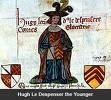
In 1318 a new faction of barons in England deposes Thomas of Lancaster; Hugh le Despenser the Younger (1286-1326), with whom bi-curious Edward II likes to have gay times becomes royal chamberlain, and begins to gain love magic control over him, aided by his bi daddy Hugh le Despenser the Elder, 1st Earl of Winchester (1261-1326), who had been a high advisor ever since the execution of Piers Gaveston in 1312, to which he had been the only objector.
In 1318 Roger Mortimer, 1st earl of March sieges Bristol, after which Llywelyn Bren rides out alone in his armor to surrender on condition that his rebels be spared; he is taken to the Tower of London and given to Mortimer's rival Hugh the Despenser Jr., who then takes him to Cardiff Castle and has him hanged, drawn and quartered - and some people claim that there's a woman to blame, and I know it's my own damn fault?
In Apr. 1320 the Declaration of Arbroath AKA the Scottish Declaration of Independence is drawn up for Robert I by chancellor Bernard of Kilwinning (-1331), abbot of Aberbrothick to urge Pope John XXII to give up the excommunication thingie and accept Scottish independence, along with "our most valiant prince, king and lord, the lord Robert", Scottish champion against England; "For as long as one hundred of us shall remain alive we shall never in any wise consent to submit to the rule of the English, for it is not for glory we fight... but for freedom alone"; strongly influenced by the Templars, the declaration claims descent from the Lost Tribes of Israel, and rids Scotland of serfdom; 25 (almost all of the) lords and bishops of Scotland, incl. the Sinclairs of Rosslyn are signatories; after advancing the clincher that it's the English not the Scots who are failing to on Crusade, in Aug. the pope goes for it and lifts the excommunication; too bad, Edward II sends his own emissaries to the pope, getting him to flop back and forth.
The original Pez dispensers? In 1321 the Despenser War (ends 1322) begins when the Dispensers Hugh Despenser the Younger (1286-1326) and his father hugh Despenser the Elder, 1st Earl of Winchester (1261-1326) try to grab the Gower Peninsula, causing the marcher lords of Wales to form a confederation against them and ravage their lands, causing Parliament, at the behind, er, official behest of the Duke of Gloucester to demand their exile, which the king assents to only after Queen Isabelle finally goes down on her knees, er, dramatically begs her hubby Edward II to banish them from the kingdom, after which the elder flees to Bordeaux and the younger becomes a pirate on the English channel (until 1322); the first use of a Bill of Attainder in England is against the Despensers for supporting Edward II in his war with the queens and barons.
The original Army of the Twelve Monkeys? Early in 1322 Edward II of England recalls his indispensable Pez dispensers Hugh le Despenser Younger and Elder, renewing the Despenser War, now backed by English barons, led by the king's nephew Thomas Plantagenet, 2nd Earl of Lancaster (b. 1277) (eldest son of Edward I's brother Edmund Crouchback) (who had despised Piers Gaveston for calling him "the Fiddler", and was instrumental in getting him executed) at Pontefract, causing the king to take his army N to pursue Lancaster before he can hook up with the Scots; meanwhile in Jan. the 1319 truce with the Scots expires, and they see their chance and invade NE England, with Walter Stewart heading to Richmond, Thomas Randolph, 1st earl of Moray to Darlington, and Sir James "Black" Douglas to Hartlepool; on Mar. 11 Sir Roger d'Amory (b. 1290), an English veteran of the 1314 Battle of Bannockburn (who had been Edward II's favorite until displaced in 1318 by Hugh le Despenser the Younger, making him a bitter enemy of the Despensers) is captured by the king's forces at Tutbury Castle in Staffordshire after capturing Gloucester and burning Bridgenorth, and dies of illness on or before Mar. 14 before they can execute him; on Mar. 16 after the rebels find their path blocked by the forces of Sir Andrew Harclay (Hartley) (1270-1323), the Battle of Boroughbridge on the Ure River 20 mi. NW of York is a V for the king and the Despensers using the novel idea of mounted archers, and his key boy hunk Humphrey VIII de Bohun, 4th Earl of Hereford (b. 1276) KIA by a pike up his anus as he stands on the bridge, his screams causing his men to panic and run; on Mar. 22 after a kangaroo trial Thomas of Lancaster is beheaded at Pontefract Castle (20 mi. SW of York), after which Edward II reclaims his throne and makes Hugh Elder his counselor as well as earl of Winchester, and creates Harclay the earl of Carlisle; Lancaster's army is outlawed, while Lancaster is revered as a martyr and saint, becoming a possible source of the Robin Hood legend?; the laws passed in England during 1311 are repealed at the Parliament of York (containing burgesses and knights, as in 1311) on the basis that they were passed only by the nobles; the Despensers now dominate the king from both ends, beginning the Despenser Tyranny (ends 1326), where they run roughshod over the kingdom and grow rich, esp. at the expense of rich widows, while the younger Despenser becomes the de facto ruler of England, all of which is too much, and turns Isabelle against Edward completely (plus the fact that the younger Despenser raped her)?; meanwhile, although the Scots have returned to Scotland, the king takes their advice and invades Scotland, finding William the Wallace tactics in force, incl. destruction of all foodstuffs, compounded by plague, causing the Earl of Surrey, after one lame cow is finally scrounged up by the starving troops to issue the soundbyte "This is the dearest beef I ever saw; surely it costs a thousand pounds and more"; after destrying Holyrood Abbey near Edinburgh and then starting to return to English, with the Scots in pursuit, on Oct. 14 the "hare before greyhounds" Battle of Old Byland (Byland Moor) (Byland Abbey) in Yorkshire is a deja vu of the 1314 Battle of Bannockburn, with a giant Scot V, during which Queen Isabelle is abandoned by her hubby at Rievaulx Abbey along with his personal belongings, leaving her to escape on her own by a whisker, pissing her off at him more; the Scots now can raid the English borders at will - oh what a man that Wallace was, I wish I could've had a piece of him and been his woo-mun?
On Mar. 3, 1323 after signing a peace treaty with Robert I the Bruce of Scotland without royal sanction, Sir Andrew Harclay (Hartley), Earl of Carlisle (b. 1270), who had been a big hero to Edward II last year, but found it impossible to stop the Scot raiding and had met with Robert I of Scotland to propose peace terms on his own is hanged, drawn, and quartered for treason by order of Edward II; that out of the way, Edward II of England his own truce with Robert I of Scotland, which only lasts four years, but causes the Despenser stock to go down with the public; Pope John XXII recognizes Robert I as king of Scotland.
In 1324 after Charles IV builds a fortress illegally on Edward II's territory in Aquitaine, and the Despensers imprison Charles IV's sister Isabella of France, a French expedition is sent to Aquitaine.

In 1324 English Franciscan friar William of Ockham (Occam) (1280-1347) (student of Duns Scotus) defines his Nominalist (anti-Realist) (Terminalist) philosophy at Pope John XXII's court in Avignon, incl. the cool Occam's (Ockham's) Razor (principle of economy of thought), toppling the dunce Schoolmen by separating logic from metaphysics with the claim that logic has nothing to do with ultimate truth, backing an experimental approach to science and even suggesting the law of inertia; after a catfight with Thomists in the 1320s, Ockham's school dominates European thought until the Protestant Reformation of the 1500s; meanwhile they don't buy it, and Pope John XXII excommunicates Ockham's friend HRE Louis IV the Bavarian.

In 1324 Oriel (King's) College at Oxford U. is founded by English king (1307-27) Edward II (1284-1327) as the College of the Blessed Mary, becoming the oldest royal foundation in Oxford; in 1329 a bldg. called La Oriole is presented to the college, causing the eventual name change by 1349 - smart choice for Edward II to found Oral College?

Isabella the She-Wolf of France finally gets the hot beef she wants? In 1325 after Charles IV of France seizes Edward II's French possessions, definitely not-getting-much English Queen Isabella of France (1295-1358) is sent to negotiate peace with her brother, later tricking Edward into sending 13-y.-o. Edward III after her, while she hooks up with Roger Mortimer, 1st Earl of March (1287-1330), an ambitious exiled Marcher Lord, a mortal enemy of the Despensers (because his grandfather had murdered their grandfather?), who with her probable help had escaped from the Tower of London in 1323 and who, unlike her weak, incompetent, suspected dickwhipped faggot husband Edward II gives her the hot mortadella she likes, carrying on an adulterous relationship which gets them kicked out of the royal court even though Charles IV refuses Edward II's demand to return her to England, after which they find refuge with Count William I of Hainaut, whose wife is Isabella's cousin; they go on to conspire with the large group of English exiles in Paris and disaffected English nobles to make a comeback.
On Sept. 21, 1326 after Queen Isabella of France arranges a marriage between her son Edward II with Count William I of Hainaut's son (Isabelle's 2nd cousin) Philippa of Hainaut in return for eight warships, and raises a mainly mercenary army along with some anti-Edward II barons, they land in Suffolk, England, becoming the first successful invasion of England since the 1066 Norman invasion; on Sept. 29 Edward II offers a reward for the heads of Isabella and Mortimer, and she counters by doubling the reward for the head, er, neck of Hugh le Despenser; on Oct. 15 the people of London turn around, er, on Edward II, and he flees to the estate of the earl of Winchester at Glamorgan in Wales in the hope of raising support, which goes limp, er, fails to happen; meanwhile the Dispensers flee with a sizeable sum from the treasury, only to be captured; on Nov. 16 Edward II and his cute hung, young and indispensible Pez dispenser Hugh le Despenser the Younger (b. 1286) are captured in Neath, South Wales as they try to flee to the sea (like Paris and Helen?), and the king is imprisoned in Kenilworth Castle; on Nov. 26 after vainly trying to starve himself to death, Hugh the Younger is executed by Isabella's men in Hereford by hanging him from a 50-ft. gallows, then cutting him down while still alive and placing him nude on a ladder, then slicing off his manhood and burning it in front of him in front of a G-for-Genitals-rated crowd, then drawing (gutting) him with a knife, after which he is beheaded and quartered, and his head mounted on the gates of bloody London (take time to enjoy your view?); his daddy Hugh le Despenser the Elder (b. 1261) was done likewise in Bristol on Oct. 27 - dog in the kennel jokes here?
In 1326 Clare College at Cambridge U. is founded as Univ. Hall, becoming the 2nd oldest college of Cambridge to survive to modern times; in 1338 after an endowment from Elizabeth de Clare (de Burgh) (1295-1360) it is refounded, becoming known for its chapel choir and its garden on the Backs overlooking the Cam River.

On Jan. 25, 1327 Edward II of England is forced by the 1327 Parliament of Westminster (Jan. 7-Mar. 9), (dominated by Isabelle, containing burgesses and knights, like in 1311 and 1322) to abdicate in favor of his 15-y.-o. son Edward III (1312-77) (the 31st English monarch) (until June 21, 1377), with a council of regency appointed, although it is his mother Isabelle and her lover Roger Mortimer who really rule, and Mortimer becomes king in all but name; Edward III is presented with England's first metal cannon, a bulbous bottle-like pot-de-fer; the conviction of Thomas of Lancaster is reversed, allowing his younger brother Henry Plantagenet, 3rd Earl of Lancaster (1281-1345) (who had captured Edward II in South Wales last year) to inherit his earldoms of Lancaster, Derby, Salisbury, and Lincoln, and he is also appointed guardian of Edward III; on Sept. 21 after Isabelle and Mortimer send the double-meaning message "Edwardum occidere nolite timere bonum est" ("Don't be afraid to kill Edward, it is good", or "Don't kill Edward, it's good to fear") English king (since 1307) Edward II (b. 1284) is murdered in Berkeley Castle by having a red-hot poker shoved up his ass while being strangled ("with a hoote broche putte thro the secret place posterialle" - John Treviso, vicar of the castle), leaving no visible marks and allowing the murderers to claim that he died from natural causes; some think this form of murder was chosen as fitting for a sodomite - or maybe they just wanted him to die happy?
In 1327 during the reign of Edward III clothmaking is introduced to Bristol, and by next cent. it has a flourishing cloth trade with France, Spain, the Baltic countries, and the Near East.
In 1327 the English Statute of Westminster, 1327 allows itinerant justices of the peace (established by Henry III) to have judicial powers and to receive indictments for trial.

On Jan. 24, 1328 Edward III (b. 1312) of England marries Philippa d'Avesnes of Hainault (1311-69) at York Minster; she wisely decides not to Frenchify her court or retain her foreign retinue, and goes on to become known for her gentleness and compassion, and gives the definitely heterosexual Edward III 13 children, incl. 5 sons who survive to adulthood, incl.: #1 Edward the Black Prince of Wales (1330-76) (AKA Edward of Woodstock), #2 William of Hatfield (1336-7), #3 Lionel of Antwerp, Duke of Clarence (1338-68), #4 John of Gaunt, Duke of Lancaster (1340-99), #5 William of Windsor (1348-8), #6 Edmund de Langley, 1st Duke of York (1341-1402), and #7 (13th and last child) Thomas of Woodstock, 1st Duke of Gloucester (1355-97) (an ancestor of Edward Winslow of 1620 Mayflower fame) - thus are the dragon's seeds sown for the Wars of the Roses between the houses of York (white rose) and Lancaster (red rose)?

On Mar. 17, 1328 after English defeats cause Roger Mortimer to pressure Edward III into it, the Treaty of Edinburgh-Northampton is signed, recognizing Scottish independence and sovereignty in return for a £20K payment by Robert I, a promise of a royal marriage for Robert I's 4-y.-o. son David Bruce (future David II) (1324-71) to Edward III's 7-y.-o. sister (youngest daughter of Edward II and Isabelle, born in the Tower of London) Joan "of the Tower" Plantagenet (1321-62), and help in getting Robert's excommunication lifted; on May 4 the TOE is ratified at Northampton, and on June 12 the marriage takes place by proxy, followed by another marriage on July 17 at Berwick-upon-Tweed; Roger Mortimer declares himself the first earl of March and splits with the barons, attacking their leader Henry of bloody red rose Lancaster - what role did Isabelle play in all this?
On Mar. 19, 1330 Edmund of Woodstock, 1st Earl of Kent (b. 1301) (6th son of Edward I) is executed for treason by order of Roger Mortimer and Queen Isabella before the walls of Winchester Castle for supporting his half-brother Edward II after he believes him to still be alive and tries to rescue him from prison; after nobody wants to do it for five hours, they finally get a convicted murderer to do the honors in exchange for a pardon; the incident turns the barons against the She-Wolf and He-Wolf, and their end is nigh?
On Oct. 19, 1330 old-enough (17-y.-o.) Edward III of England, with the support of his former guardian (Edmund of Woodstock's cousin) Henry, 3rd Earl of Lancaster (1281-1345) stage a coup, taking Roger Mortimer and Queen Isabelle prisoner, then having him hanged in Nov. despite Isabelle's plea "Fair son, have pity on gentle Mortimer"; the regency is brought to a close, and Edward III begins his personal rule; Isabelle, the "She-Wolf of England" (stolen from Shakespeare's "Henry VI", where he uses it to refer to Margaret of Anjou) is declawed and put out of the way in Castle Rising in Norfolk, and he doesn't kill her even though she killed his daddy, even letting her visit the court and dote on her grandkids until she finally takes the habit of the Poor Clares?
On Nov. 29, 1330 after three years as de facto ruler of England, Marcher lord Roger de Mortimer, 1st Earl of March (b. 1287) is executed by hanging in Tyburn for allegedly assuming royal power et al.
In 1330 the Birkenhead-Liverpool Ferry in England begins operation when the Benedictine monks of Birkenhead Priory are granted a charter which only allows them to charge in the B-L direction.
In 1331 the first record of woollen cloth weaving in England begins with two weavers from Brabant settling in York.
In 1331 the Perpendicular Gothic transepts and choir of Gloucester Cathedral in England are begun (finished 1335).
In 1332 the jurisdiction of English justices of the peace is expanded to incl. felonies and trespass.
In 1333 the first regular shipment of wine from Portugal to England is made.
In 1334 the Clarenceux (Clarencieux) King of Arms is founded at the College of Arms of London, becoming the senior of two provincial kings of arms, with jurisdiction S of the Trent River.
In summer 1336 Edward III invades Scotland again, intending to lay NE Scotland waste to forestall French aid, and burns Aberdeen, causing Robert Stewart to submit to him (until 1341); the construction of New Aberdeen begins shortly afterward; after Edward returns to England, Sir Andrew Murray Jr. emerges from hiding, and goes back to attacking English strongholds during the winter, capturing Dunnotar, Lauriston, and Kinneff, and destroying Gowrie, Angus, and Means; lucky for the Scots, a powerful French noble is banished, and obtains refuge at Edward III's court, where he incites him to attack France.
In 1336 Count Louis I of Flanders (1304-46) prohibits commercial relations with England, causing Edward III to retaliate by imposing an embargo on wool exports to Flanders as well as the import of Flemish woven goods to England next year, which throws the weavers out of work, causing them to begin the Weaver's Revolt of 1369-71.

We can't go on together with suspicious minds? On May 24, 1337 after Philip VI conquers the larger part of the English possessions in France S of the Loire, and comes to the aid of Scotland against England, causing Edward III late in the year to cease leading Scottish campaigns in person and declare war on France over these issues as well as the problem of French control of Flanders (which has become interdependent with England because of the wool trade), using his dormant claim to the French throne through his mother Isabelle (Philip IV's daughter) as a pretext, even though it had been excluded by the French courts under the Salic Law, the 116-year Hundred Years' War begins (ends Oct. 19, 1453), which is characterized by the frequent use of the chevauchee using small groups of horsemen to pillage enemy territory to draw the enemy into a fight; England allies with the Count of Hainault and Holland (Edward's father-in-law), as well as HRE Louis IV the Bavarian (because Philip VI is the protector of new Avignon pope Benedict XII, and prevented any agreement between them over his investiture); the rebelling weavers of Ghent, led by wealthy Flemish brewer Jacob van Artevelde (the Wise Man) (the Brewer of Ghent) (1290-1345) virtually take over Flanders, causing Artevelde to be made capt.-gen. of the city, then welds the Flemish cities into a federation committed to armed neutrality.
In 1337 the hereditary rank of duke is created in England, and Cornwall becomes a duchy for Edward the Black Prince of Wales, who was already created earl of Chester in 1333.
In 1338 after Flanders declares neutrality in the Hundred Years' War, Edward III restores commercial relations and signs a commercial treaty.
In 1338 English chronicler (Gilbertine monk) Robert Mannyng (de Brunne) (1260-1340) writes The Story of Inglande; verse chronicle based on "Roman de Brut" by Wace and "Chronicle" by Peter Langtoft (-1307) of England; modifies Middle English by dropping inflections and introducing French words, heading toward the bastard language of modern English.
In 1339 self-proclaimed French king Edward III (1312-77) of England invades and ravages N and E France, sacking Dieppe, but is unable to repay a $7M loan to finance the war, and is brought under a petition of bankruptcy, becoming the first Euro nat. ruler to declare bankruptcy - do the math?
In the 1340s in England the knights of the shire and the burgesses begin to separate off into a house of commons, and by this year they meet in the monks' Chapter House in Westminster Abbey.
On June 24, 1340 after Edward III makes a political alliance with the Flemings, who recognize him as the king of France and overlord of Flanders, causing the French to declare Edward's French fiefs forfeited and siege Guienne and burn Portsmouth (home of the Pomponians), the naval Battle of Sluys (Sluis) (d'Ecluse) on the Scheldt estuary on the coast of Flanders sees Edward III with 150 ships defeat the somewhat larger fleet of Philip VI of France (who made the boo-boo of dismissing two squadrons of mercenary ships from the Levant), and entirely capture or destroy it, gaining complete control of the Channel for England (until 1372), as well as free access to N France; after Edward's army plods around in France awhile without significant success, the countries make a truce; HRE Louis IV and Edward III sign the Alliance of Coblenz,making Edward vicar of the empire and recognizing his title of king of France, turning the Hundred Years' War into a struggle for the English to keep "their" French empire.
In 1340 Edward III forces the resignation of his chancellor and former chief advisor Archbishop Stratford, causing the barons to rally to his cause.
In 1340 an Englishman complains that English children "are compelled to leave the use of their own language, a thing which is known in no other country"; after the Black Death kills off French teachers, students begin being taught in their native language of Englsh, causing John of Trevisa to complain that they suffer when they "scholle passe the se and travayle in strange londes."
On Apr. 30, 1341 Breton duke (since 1312) John III the Good (b. 1286) dies childless, starting the War of the Breton Succession (ends 1364) in Brittany, with the French supporting his niece Joanna the Lame of Dreux (Penthievre) (1319-84) and her hubby Charles (the Saint) of Blois (Chatillon) (1319-64), and the English supporting his half-brother (by daddy Arthur II's 2nd wife Yolande de Dreux) John of Montfort (Duke John IV of Brittany) (1295-1345) and his wife Joanna of Flanders (1295-1374).
In 1341 Parliament forces Edward III to restore Archbishop Statford, and passes a statute requiring the king to consult with Parliament before selecting all ministers; within a few mo. he repeals it, but the parity between household officials and courtiers compared to baronial officials is restored; the Statute de Tallagio non Concedendo (Second Statute of 14 Edward III) ("no taxation without representation") requires parliamentary approval for all nonfeudal levies, in accordance with the English medieval principle "to kings belong government, to subjects property", and begins the tradition of Parliament asking for royal redress of grievances by petitioning via billa (bills), which are then turned into statutes after support by the lords and approval by the king.
In June 1342 the English fleet relieves the Siege of Hennebont in S Brittany (begun in May) by Charles de Blois-Chatillon, Duke of Brittany (1319-64) (nephew of Philip VI), who is known for placing pebbles in his shoes and wearing knotted ropes next to his skin to mortify his sinful flesh, while inventing the elbow hinge; Joanna of Flanders (1295-1374) is trapped until they liberate the city, causing Charles of Blois to siege Auray; on Sept. 30 William de Bohun, 1st Earl of Northampton (1312-60), constable of England defeats Charles de Blois at the Battle of Morlay; future French superstar Bertrand du Guesclin fights with de Blois' forces and gets some field experience.
On Jan. 19. 1343 the Truce of Malestroit, negotiated by cardinals from Avignon is signed by Philip VI and Edward III in Madeleine Chapel in Malestroit in Brittany on the Oust River; it is supposed to last until Sept. 1346.

I don't get the joke - it's not a joke it's a product? In 1343 Edward III's eldest son Edward of Woodstock, later known as Edward the Black Prince (1330-76) is named Prince of Wales, just like he had once been by his daddy Edward II, who had been done ditto by his daddy Edward I; from now on the title indicates the eldest son and heir of the English king.

In 1345 Edward III begins a serious attempt to regain his possessions in S France (Gascony), planning a 3-pronged attack, with the earl of Northampton attacking from Brittany, up-and-coming Henry of Grosmont, 4th Earl of Lancaster (1310-61) (Edward II's 2nd cousin) (son of Henry Plantagenet, 3rd earl of Lancaster, who had gone blind in the 1330s, and who dies on Mar. 25, leaving him the richest man in England as well as the title of earl; he is promoted to duke in 1351) from Aquitaine, and Edward III from Flanders; on Oct. 21 Grosmont achieves a big V against the Comte d'Isle at the Battle of Auberoche, and gets £50K ransom for the POWs; meanwhile rumors that Jacob van Artevelde (b. 1290) is about to recognize Edward III's son as count of Flanders causes a popular uprising in Ghent, and on July 24 he is killed by a mob.

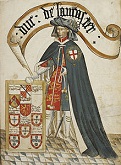
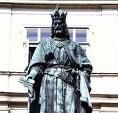
On Mar. 18, 1346 the French prepare to defend their English Channel coasts. On Apr. 1 the French led by Duke John of Normandy begin the Siege of Aiguillon in Gascony, defended by Earl Henry of Grosmont, 4th Earl of Lancaster and Leicester, 1st Earl of Derby (1310-61) (wealthiest and most powerful peer in England), tying up the main French army; on Aug. 20 after a dysentery epidemic in their camp the French withdraw. In May an English invasion fleet begins assembling in Portsmouth. On June 9 the Battle of St. Pol de Leon (Léon) sees the 180-man English army under Sir Thomas Dagworth (1276-1350) defeat the 1K-man army of Charles of Blois in Brittany, becoming a turning point for the Montfortists and their English allies in Brittany. On June 20 the Battle of La Roche-Derrien in Brittany is a small English V. On June 24 the leaders of Ghent, Bruges, and Ypres agree to support Edward III in an invasion. On July 3-7 the 1.6K-ship English fleet sails from Portsmouth to Normany, but is forced back by strong winds, after which Edward III orders the closing ports to prevent intel leaks to the French, who are planning their own invasion of England with 14K soldiers under Jean le Franc, but are forced onto the defensive by the English invasion. On July 11 after appointing Queen Philippa as regent of England in his absence, Edward III and his 16-y.-o. son-heir Prince Edward of Woodstock (1330-76) (later the Black Prince) set sail for Normandy with a 15K-man army, arriving on July 12 at Saint-Vaast-la-Hogue 20 mi. from Cherbourg, taking the French by surprise, raiding and burning towns and villages in the Contentin Peninsula incl. Carentan, Saint-Lo, and Torteval until July 18, while the English fleet shadows them, capturing or burning 100+ French ships, and converting 61 into military vessels while looting the countryside for up to 5 mi. inland, causing some ships to fill their holds and return home; the English force incl. at least one Norman baron unhappy with Philip VI's rule. On July 26 the Battle (Siege) of Caen is a V for the 12K-15K-man English army of Edward III over a garrison of 1K-1.5K soldiers and a large number of armed townsmen, who fall in the first assault, losing 5K KIA plus a few nobles taken POW, after which the English sack the town for five days before burning it. On Aug. 1 the English army marches toward the Seine River/ on Aug. 2 another small English force invades France from Flanders. On Aug. 24 after the French garrison all the bridges and fords over the Somme River and chase the English army, who find the land stripped of food supplies, trapping them, the Battle of Blanchetaque 10 mi. from the English Channel and just S of Crecy sees a French force under Godemar I du Fay (-1350) attempt to prevent the English from fording the Somme River, ending up fleeing, allowing the English to head N. On Aug. 26 after following the Seine River to within 20 mi. Paris, then heading for Flanders, ending up intercepted and trapped at the Somme, discovering a ford just in time and digging-in on some hills near Crecy (where the horsemen dismount), the Battle of Crecy (Crécy) S of Calais and NW of Amiens is a V for Edward III's 10K-man force (which is 0-1 after Sluys) over Philip VI and his 20K undisciplined cavalry and mercenary crossbowmen; blind King John of Bohemia (b. 1296) is KIA; Prince Edward, in command of the right wing of the English army wins his spurs; gunpowder artillery is used for the first time in Europe?; the first time that the English longbow (made possible by the amazing elasticity of yew wood) triumphs over the (Genoese) crossbow, marking the first joint participation of yeomen and aristocrats in war, made possible by their experiences in Wales and Scotland; as a consequence of this battle, knights begin to put heavy plates over their chain mail, and by the end of the cent. they wear complete armor-plated suits - are you crecy? On Aug. 26 blind Bohemian king John of Luxembourg (b. 1296) is KIA at the Battle of Crecy, and his eldest son Count Charles IV of Luxembourg (1316-78) becomes duke of Luxembourg and king of Bohemia (until Nov. 29, 1378); meanwhile with the help of Pope Clement VI he is elected on July 11 as antiking of the Romans to HRE Louis IV, who is deposed, then crowned on July 25; Edward the Black Prince honors John of Luxembourg by adopting his arms and motto "Ich Dien" (I Serve); meanwhile when the citizens of the Alsatian city of Hagenau (16 mi. N of Strasbourg) (S of the Forest of Hagenau, largest undivided forest in France) refuse to submit to him and pay war debts, Johann (John) II of Lichtenberg (1273-1366) confiscates the houses and synagogues of the wealthy Jews, causing the pop. to plunder them also and then banish them, but they are soon readmitted after agreeing to pay the city's war debts, after which by the end of the decade Jewish persecutions in France cause many Jews to flee there - making it the Palm Springs of Europe?
On Sept. 4, 1346 Edward III sieges Calais, while Duke Henry of Grosmont captures Poitiers; meanwhile in Oct. at the request of Philip VI, David II of Scotland and his barons invade N England with 12K men, and after a leisurely progress to show how boss they are, they are surprised and defeated on Oct. 17 by 8K English under Ralph de Neville, 2nd Baron Neville de Raby (1291-1367) and the Aachbishop of York in the Battle of Neville's Cross; Robert Stewart, Earl Patrick Dunbar of March, and the earl of Ross desert after the first two Scottish divs. are attacked, becoming the only time that Robert Stewart crosses the border into England; 63-y.-o. old fart Edward de Balliol leads 80 men into battle for the English, his kingship claim a joke by now?; David II is wounded in the head by arrows twice, then captured by John de Coupland, Lord of Raby, and almost all of his key supporters are captured or KIA, incl. Sir John Sinclair of Herdmanston, and Sir William Douglas of Liddesdale, who is released after swearing allegiance to Edward III; David is kept prisoner in the Tower of London (until 1357); the holy black snake charm, er, Holy Black Rood (brought to Scotland by Queen Margaret in 1070) is captured by the English and kept at Durham Cathedral until the 16th cent.; for the next two cents. the English have to guard against Scottish invasion whenever they battle France.
On Sept. 12-Oct. 31, 1346 after the French siege of Aiguillon is lifted, Earl Henry of Lancaster's Chevauchee (Chevauchée) (Fr. "horse charge") overruns large parts of SW France incl. Quercy, Bazadais, Poitiers (Oct. 4), Saintonge, Aunis, and Poitou, penetrated 50 mi. beyond the borders of Gascony.
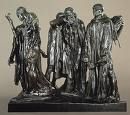

In Aug. 1347 starved Calais capitulates to the English after an 11 mo. siege in which artillery is used, and after English queen Philippa of Hainault intervenes and persuades her hubby to spare them for the mojo of her unborn child, Edward III offers to spare the people of the city if six of its leaders will walk out naked (shirt only?) wearing nooses around their necks while carrying the keys to the city and castle, causing Eustache de Saint Pierre and five other burghers to comply; in 1884 the mayor of Calais commissions Auguste Rodin to make the statue The Burghers of Calais (Les Bourgeois de Calais) commemorating this event (finished in 1889), but he shows them clothed; military turkey Philip 666, er, VI (0-3 after Sluys, Crecy, and Calais) signs a truce designed to last until Apr. 1351, with the English giving back their original motherland of Normandy (until 1415), but holding onto Calais of the former county of Artois for the next two cents. (until 1558), controlling both sides of the Channel at its narrowest part; the English Vs in Gascony are secured until 1355; Prince Edward sets his sights on Bordeaux; Edward III goes on to build the Hotel de Guise in Calais; meanwhile Philip VI is flat broke, and debases the coinage, borrows heavily, levies more extreme taxes, incl. the hated gabelle (salt tax), and just when it looks like it can't get any worse, guess what, here comes the Purple People Eater?
The Black Death (the original Darth Vader) rockets through Europe's Internet with breathtaking speed? In Oct. 1347 a Genoese trading fleet arrives in Messina, Sicily carrying the Black Death (Bubonic Plague), caused by Yersinia pestis bacteria carried by fleas from rats; not rats but gerbils?; it also arrives in Egypt, Syria, and Cyprus; by 1351 it kills 20M-30M in Europe (a third of Europe's pop., and up to 60% in some areas), and 75M worldwide by 1361; world. pop. decreases from 450M to 350M-375M by 1400; Europe takes 150 years to return to 1347 pop. levels; it ravages China, halving its pop. from 123M in 1200 to 65M in 1400; lucky America is not affected, but not toughened up by it either?; rats didn't really spread it, because it spreads so fast from person to person?; French Franciscan Order minister-gen. (since 1329) Gerard Odon (Geraldus or Gerardus Odonis) (Guiral Ot) (1285-1349) is asked by the pop. of Messina to retrieve the relics of St. Agatha from Catania, and when they refuse he dips them in holy water and takes instead, dying of the plague on his return trip.
In Jan. 1348 the Black Death begins in Marseille and Languedoc, spreading to Avignon in Mar., and Siena, Toulouse, Narbonne, Montpellier, and Carcassone in May; after the cemeteries are filled, bodies are piled high on the Campus Floris near the Church of St. Mary of the Miracles; in June it spreads to Spain, and Bordeaux, Lyon, Burgundy, Normandy, Paris, and SW England in Aug., along with Howth and Drogheda in Ireland; Agnolo di Tura the Fat of Siena, Italy writes the soundbyte: "The mortality in Siena began in May. It was a cruel and horrible thing. The victims died almost immediately. They died by the hundreds, both day and night. I buried my five children with my own hands, and so did many others likewise. Nobody weeps no matter what his loss because almost everyone expected death. So many died that all believed it was the end of the world"; it then disappears for the winter, except Ireland, which it decimates; the Great Plague results in horrible Jewish pogroms throughout Europe, incl. Chillon, Basle, Stuggart, Ulm, Speyer, Dresden, Strasbourg, and Mainz, destroying 60 major and 150 minor Jewish communities, causing survivors to head for Poland, which welcomes them as Kasimir III reworks the Polish law codes; in Strasbourg 2K Jews are hanged; in Freiburg ? are burned alive in wooden bldgs.; Basle burns 600 Jews, expels the rest, and destroys their synagogue and cemetery; Alfonso XI of Spain proposes that the Jews give up banking and take up agriculture; meanwhile, Millennium Fever is on full blast, and when terrible earthquakes rock Italy, this combined with the plague convince people that the end of the world is nigh.
In 1348 Gonville and Caius College at Cambridge U. is founded by Edmund Gonville (-1351), rector of Terrington St. Clement in Norfolk; after he dies leaving it broke, his executor Bishop William Bateman of Norwich transfers it to Trinity Hall, and renames it Hall of the Annunciation of the Blessed Mary; it is refounded in 1557 by physician John Kays (1510-73), who changes his name to the Greek spelling Caius.
On May 31, 1349 (Pentecost) the death rate from plague eases in London after 60% of the pop. is killed since last fall; it was really spread via coughing? In the summer the Great Plague reappears in Paris, where it peaks, killing up to 800 a day, and spreads to Picardy, Flanders, and the Low Countries; also in the summer it reappears in London, and spreads to Ireland, killing 35% of the pop. within a year; by the middle of the year half of the pop. of Venice is killed; by the end of the year half of England's pop. is killed, and a truce with France is called; the plague spreads to Norway when an English ship full of corpses floats into Bergen, and reaches Elbing (Elblag), Poland on Aug. 24; the Church and its credibility being challenged head-on, the main solution offered is by the Flagellants, who appear in force all over Europe (especially Germany), torturing themselves publicly, and proclaiming that the Second Coming is 33.5 years away (I been a bad, bad boy, so tan my sinful hide?), while causing trouble for Jews, the rich, the Church, and finally themselves (besides all the wounds), causing Pope Clement VI to pub. a bull condemning them on Oct. 20; "Many persons, and even young children were soon bidding farewell to the world, some with prayers, others with praises on their lips."
In 1350 the Black Death reaches Scotland and Wales after a Scottish army invades England and brings it back, and from there to Norway and Scandinavia; 20% of Scotland's pop. disappears within a year.
In 1350 Salisbury Cathedral in England is finished.
About this year English Perpendicular Gothic Architecture, which emphasizes long vertical lines, often with elaborate fan vaulting is invented (ends 1575).
In 1350 Trinity Hall college is founded at Cambridge U. by William Bateman (1298-1355), bishop of Norwich to replenish the priesthood after the Great Plague.
In 1350 a serious shortage of yew wood for longbows causes Henry IV of England to order his royal bowyer to enter private land to cut it.
About 1350 the Great Vowel Shift in England begins (ends 1550).
In the late 14th cent. English replaces French as the favorite language of English courtly lit.; English begins to supplant French in the English schools.
In the late 14th cent. English authorities regard mental illness as demonic possession, treating patients with exorcism and torture incl. hydrotherapy (ice-cold baths) and trepanation.
The original gay eye for the straight guy? On Apr. 23, 1350 (St. George's Day) (1344-51?) Edward III formally institutes the Most Noble Order of the Garter (Order of St. George) in honor of the Holy Trinity, the Virgin Mary, St. Edward the Confessor, and St. George, with 25 knights plus the king as its permanent head, with members incl. the earl of Salisbury and Henry of Grosmont, all wearing a silly gilt-edged dark blue velvet ribbon with gold lettering on the left leg below the knee (the origin of the "blue-ribbon panel"); their motto is "Honi soit qui mal y pense" (Shame on anyone who thinks evil of it) (Evil to him who evil thinks), after the countess of Salisbury drops her garter at a dance and the king retrieves it, remarking you know what? (too chivalrous to put a mirror on their shoes?); St. George replaces Edward the Confessor as the patron saint of England; English is the only W European language in which knight doesn't mean horseman, the Anglo-Saxon word knecht meaning servant?
On Dec. 25, 1351 William Boy (Gael. "bui" = golden-haired) O'Kelly of Ui Maine begins the greatest feast in Irish history, inviting all the learned and entertainers of Ireland to his castle at Galey on the shores of the Lough Ree for a whole month, causing the saying "the welcome of the O'Kellys" to be coined.
In 1351 the Black Death (begun 1347) reaches Russia, but suddenly begins to decline after 25M-75M are killed throughout Europe; the new reduced pop. mix leads to political and social upheavals, incl. the enclosure of land for sheep raising, accumulation of great fortunes (causing the baronage to lose status), an increase of uppityness of the yeomanry, and an increase in conspicuous consumption (bigger houses, etc.)?
In 1351 the Statute of Laborers, passed under Edward III attempts to keep the wages and prices as low in England as they had been before the Great Plague created a labor shortage; every workman not bound to a lord or exercising a craft is required to take work when offered to him, and at the pre-plague "just price"; the law is widely flouted, causing many lords to lease their demeanes to tenant farmers, creating a new prosperous working class which keeps wanting mo' and mo'?
In 1351 the English Statute of Provisors of Benefices is passed to attempt to stem the influx of foreign clergy under control of the Avignon popes by restricting the power to make appointments to ecclesiastical offices; it is widely ignored.
In 1351 after the horrible Black Death of 1347-50 passes, tennis becomes an open air game in England - now that the air is cleared, the perfect game, where love means nothing?
In 1352 Roger Mortimer, 2nd earl of March gets the English Parliament to reverse the judgment on his grandfather and grant him his title and lands.
In 1352 the English Statute of Treason of 1351 defines treason legally for the first time, surprise, basically anything encompassing the death of the king or violation of the queen.
In 1352 Corpus Christi College ("House of Scholars of Corpus Christi and the Blessed Virgin Mary") is founded in Cambridge, England by the guilds of the Blessed Virgin Mary and Corpus Christi, becoming the only college founded by Cambridge townspeople; it later becomes known as St. Benet's for its chapel; its members incl. 13 fellows, 6 scholars, and 24 scholarship holders, and it goes on to produce prelate Matthew Parker et al.; Oxford's Corpus Christi College is not founded until 1516.
In Jan. 1356 Edward Balliol resigns his claim to the Scottish throne to Edward III at Roxburgh Castle in return for a large pension, and spends his last years in Yorkshire (until 1364); an English army leaves Roxburgh Castle to raid Scotland, but is ambushed in Ettrick Forest by Black Douglas' nephew William Douglas, 1st Earl of Douglas (1327-84), who "slew great numbers", causing a reserve army to be sent to reinforce the castle.
On Mar. 25, 1356 Edward III signs a truce with the Scots, set to last until Michaelmas (Sept. 29), allowing William Douglas to travel to France with a retinue incl. his cousin "Black" Archibald Douglas the Grim, 3rd Earl of Douglas (1328-1400), and join the French army to support the Auld Alliance, giving the excuse that they didn't want their horses' harnesses to rust; go figure, William tells French king John II the Good that it would be better for the knights to dismount and fight on foot, dooming the French cause? - leave it to a Scot to stick his foot in his mouth?
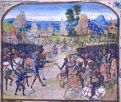

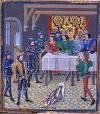

The English kick Frogg tin can butt and the pope sets aspiring German kaisers back? On Sept. 19, 1356 although outnumbered 3-1, the English under "model of chivalry" (who becomes a big hero afterward) Edward the Black Prince (1330-76) utilize the tactics of Crecy (1346) and rout the French army (which incl. some Scots), led by the "last chivalrous king of France" at the Battle of Poitiers; "true and perfect knight" Count Geoffroi de Charny (b. 1300) is KIA; King John II the Good of France and his son Philip are captured, along with the king of Bohemia and Black Archibald (who escapes after Sir William Ramsay of Coulluthie tricks the guards with the old fake fight trick), and the flower of French cavalry and taken captive to England, although Philip shows such courage that he earns the name "Philip the Bold"; his other son, 18-y.-o. Dauphin Charles (later Charles V), duke of Normandy and dauphin of Viennois acts as regent, summoning the Three Estates in Oct. to deal with the civil chaos, and together they scheme for the release of his brother-in-law Charles II the Bad, King of Navarre (1332-87) (son of Louis X's daughter Jeanne, who therefore has a better claim on the French throne than Edward III), who is being held in prison for his endless intrigues; Edward II's 61-y.-o. niece Jeanne de Bar (1295-1361) is allowed to visit and "comfort" John II, becoming his mistress.
In 1356 the English duke of Lancaster sieges Rennes, and the forces of Duke Charles de Blois of Brittany, led by Bertrand du Guesclin relieve it and help it hold out against the English.
On Mar. 23, 1357 the 10-year Truce of Bordeaux ends the English invasion of France; too bad, the negotiations are transferred to England, and the treaty never ratified; one of the terms is that the siege of Rennes by the English be lifted, but the duke of Lancaster continues until they buy him off in July; the discharged English mercenaries turn into highwaymen in the Rhone Valley et al.
In 1357 a law is passed in England forbidding waste from being thrown into the Thames or other waterway under threat of imprisonment and fines, adding new professions to the city payroll incl. muckrakers, bin men, and gong farmers (drain cleaners).
On Mar. 24, 1359 John II signs the 2nd Treaty of London, surrending most of W France (the old Angevin lands), and agreeing to pay a ransom of 4M gold ecus; on May 25 the Estates General rejects the treaty and make preparations for a war with England; in Aug. Charles the Bad of Navarre reconciles with dauphin Charles and the king; Edward III arrives in Calais at the end of Oct. with a large army, but the dauphin issues a policy of avoiding pitched battles; Geoffrey Chaucer joins Edward III's army and goes with it to France; in Nov. Edward III takes Nogent-sur-Seine in Champagne, then unsuccessfully sieges Paris and king-crowning-city Reims in Dec., and Geoffrey Chaucer is captured; S France has been so devastated by the English that they have trouble finding food? - how about champagne?


In 1359 John of Gaunt (1340-99) marries breed mare Blanche of Lancaster (1342-68), daughter of Henry of Grosmont, 1st Duke of Lancaster (1310-61) and Isabel de Beaumont; they go on to have six children incl. Henry IV, until she dies of the plague in 1369, causing annual commemorations of her death for many years, for which Geoffrey Chaucer is commissioned to write the poem The Book of the Duchess (The Deth of Blaunche) by the end of 1368.
In Jan. 1360 Edward III raises the siege of Reims and marches to Burgundy to pillage it, but is bought off with a ransom of 200K moutons to leave at the end of Mar.; Edward III pays Geoffrey Chaucer's £16 ransom in Mar.; in Apr. Edward III returns to the walls of Paris, challenging dauphin Charles to come out and fight; when he refuses, Edward begins to move towards Chartres, but on Apr. 13 (Easter) is caught by a terrific hailstorm on Black Mon., which kills many men and horses and causes him to sue for peace (3rd Black Easter Monday since 1209 and 1351); on May 8 the Peace (Treaty) of Bretigny (Calais), signed in the village of Bretigny 6 mi. SE of Chartres by Edward III, Philip I of Burgundy, and the dauphin brings the Hundred Years' War to a temporary halt; Philip II the Bold is released, and receives the duchy of Touraine; the SW third of France, incl. all of Aquitaine, Calais, and Ponthieu, plus the dinky Channel Islands; in return Edward III renounces his claims to the French throne as well as all claims to Anjou and Normandy, and his alliance with Flanders, while retaining Gascony and Guienne; France renounces its Auld Alliance with Scotland; the ransom is lowered to 3M ecus ($50M), and after the estate of Langue d'Oil grants it (for a term of 6 years) John II of France is released from captivity to raise the money for it in July; he marries off his daughter in order to get some quick money, which he turns over on Oct. 24, causing the treaty to be ratified in Calais; the Breton War of Succession (begun 1341) continues, and France is plagued by bands of unemployed marauding French and English mercenaries; the peace only lasts until 1369.
In 1360 Waldemar IV of Denmark reconquers Scandinavia; a boycott of Bruges by the Hanseatic League brings it to its knees; meanwhile England begins to penetrate into the Baltic, causing English resentment against the 1-sided privileges of the Hanseatic League in England.

In 1360 French chivalry lover Jean Froissart (1337-1410) begins a long series of travels beginning with Avignon this year, England next year (where Queen Philippa appoints him secy.), Scotland in 1365, then Brussels, France and Italy, followed by becoming a priest in 1372 in Lestines in the diocese of Liege, where he spends 12 years compiling Froissart's Chronicles, then resumes his travels in 1386 to expand it, finishing with the 1400 death of Richard II of England.
In 1361 the plague breaks out again in Europe and England (next time 1369).
In July 1362 the dauphin and the council disallow parts of the Treaty of Calais on the grounds that they give away too much; John II, feeling his honor is in dispute agrees to return to captivity in England, where he lives in luxury; meanwhile the S provinces of France chafe under their return to "foreign" English rule, showing signs of awakening nat. consciousness, after newlywed Edward the Black Prince is created prince of Aquitaine and Gascony by his father Edward III, and crosses the Channel to rule as a vassal of the French king, ruling ably but turning off the Gason nobles, who believe their feudal rights are being curtailed.

In 1362 William Langland (1330-87) pub. The Vision of William Concerning Piers the Plowman (William's Vision of Piers the Plowman); Middle English allegorical narrative poem in unrhymed alliterative verse, becoming the greatest medieval poem prior to Chaucer; contains the first lit. ref. to Robin Hood; the first appeal in Europe on behalf of poor peasants, complaining about govt. and ecclesiastical corruption, landlords, and lawyers; "I saw the friars there too, all four orders of them, preaching to the people for what they could get. In their greed for fine clothes they interpreted the Scriptures to suit themselves and their patrons"; "Then I hear parish priests complaining to the bishop that since the Plague their parishes were too poor to live in; so they asked permission to live in London, where they could traffic in Masses, and chime their voices to the sweet jingling of silver"; "Were I king, no wrong should go unpunished or get grace by bribes. Were this rule kept, Law would have to become a labourer, and Love should rule us all."
In 1362 the English Parliament passes a law making English the language of pleading and judgment in the courts, with legal French retained in documents.

On Mar. 12, 1364 English chronicler and Benedictine monk Ranulf Higdon (Higden) (1280-1364) dies in the monastery of St. Werburgh in Chester, leaving Polychronicon (7 vols.), a universal history in Latin to the year 1357 C.E., containing a World Map; it is tr. into English in 1387 by John of Trevisa, and printed by William Caxton in 1480.
In 1366 the 1K marks of annual tribute promised by King John I to the pope is 30 years in arrears, and when Edward III consults Parliament, the latter replies that they had never consented to it, so the payment is permanently ceased.
In 1366 the first mention is made of bowling in England.

In 1366 18-y.-o. bimbo Alice Perrers (1348-1400) becomes Edward III's royal mistress, becoming very influential with the old fool; by 1369 Edward III falls into his dotage and begins to lose interest in official business, falling under the sway of his mistress and his unscrupulous barons and advisers as the French war goes bad? - it wasn't me, it was a French judge?
In Feb. 1367 after poor little deposed cruel boy Peter I the Cruel of Castile seeks help from the English, Edward III of England, after some debate ignores the Peace of Calais and sends his son Edward the Black Prince (gov. of Aquitaine) with an army, along with a div. of the English army under his brother John of Gaunt; in Apr. Henry II Trastamara and his Spanish and French troops are defeated at the Battle of Najara (Nájara) (Navarette) near the Ebro River; Peter I the Cruel is restored as king, although the English forces suffer heavy losses, and the Black Prince contracts an illness in Valladolid from which he never recovers; James IV of Majorca, who invaded Castile with him in hopes of getting help regaining Majorca also gets sick, and is captured by Henry II, but is ransomed by his wife Joan I of Naples; after Pedro the You Know What reneges on reimbursing him for expenses, the Black Prince is forced to levy heavy taxes for the war, causing the people of Aquitaine to grumble, and the disgruntled nobles to eventually protest to Charles V, who is busy destroying the remaining brigand cos.

In 1369 London-born English poet ("Father of English Literature") Geoffrey Chaucer (1343-1400) writes The Book of the Duchesse (The Deth of Blaunche) (1368-72?); dedicated to the memory of John the Gaunt's 1st wife Blanche of Lancaster (b. 1345), who dies this year.
In Aug. 1370 after Hundred Years' War veteran John de Neville, 3rd Baron Neville de Raby (1337-88) is appointed adm. of the English fleet (until 1378), and English troops ravage the French countryside, winning control of much of S France, sieging Limoges, its bishop surrenders the city to the English, after which English Prince Edward of Woodstock (1330-76) decides he needs a little black fun and sacks it in Oct., massacring 3K, earning the title of Black Prince, which is later subject to a coverup attempt that it's only his black armor; meanwhile the English Parliament begins stepping up protests against the misgovt. of senile old fart Edward III.
In 1370 Gray's (Grey's) Inn (Hall) (Manor House) (originally Portpoole Manor) in C London, England is leased by a group of lawyers, named after Portpoole Manor owned by Reynold de Grey, 1st Baron Grey of Wilton (1240-1308), descendant of Norman knight Anchetil (Norse "god-helmet") de Greye (1052-1087), who accompanied William the Conqueror to Britain; it becomes one of the four Inns of the Court around the Royal Courts of Justice in London (Lincoln's Inn, Middle Temple, Inner Temple); members incl. Francis Bacon, William Cecil, and Gilbert Gerard.
In 1371 the plague returns to England, although milder than in 1361.
In Jan. 1371 ailing Black Prince Edward leaves France for England, giving the rule of Aquitaine and command of his armies in France to his incompetent younger brother John of Gaunt, Duke of Lancaster (1340-99), who loses town after town, until only Bayonne, Bordeaux, Brest, Calais, and Cherbourg remain in English hands by 1380, causing Edward III's prestige to sink and baronial influence to increase.
In 1371 the English defeat the Flemish at the naval Battle of Bourgneuf. John of Gaunt, his first breed mare, er, wife Blanche of Lancaster having died in 1369, wastes no time and marries Peter the Cruel's daughter Constance of Castile (1354-94) (don't be cruel?), gaining a claim to the throne of Castile.
In 1371 English chancellor William of Wykeham (1320-1404), bishop of Winchester asks Parliament for funds to fight the war, and the anticlerical opposition causes the House of Lords to resolve that English clergy cannot hold the offices of chancellor, treasurer, baron of the exchequer, or clerk of the privy council; John of Gaunt sees his chance to use anticlerical feeling for political gain?
In 1371 Carthusian monks build the London Charterhouse in Smithfield, London, England; dissolved in 1537.
On June 22-23, 1372 a combined French-Castilian fleet (22 Castilian galleys, 50 English ships) under Adm. Ambrosio Boccanegra (-1373) (newphew of Genoa doge #1 Simone Boccanegra) defeats an English fleet of 48 at the naval Battle of La Rochelle, and captures the the English cmdr. the earl of Pembroke; the English lose all their ships sunk or captured, along with 400 knights and 8K soldiers, and 800 men KIA; in Aug. Edward III and Black Prince Edward sail from Sandwich with a large fleet for France, but are turned back by a storm; the French control the Channel for the first time since 1340, blocking English transport in N France; the French, led by Philip II the Bold reconquer Poitou and Brittany, and defeat England's Norman allies; English armies in France are worn down by French flank attacks, and the French take Poitiers and Angouleme; in Oct. loser Prince Edward resigns his principality of Aquitaine, and retires to his castle in Berkhampstead; meanwhile Prince of Wales Owen-ap-Thomas aided by the French captures Guernsey.
In 1372 Edward III's son Edumund of Langley (earl of Cambridge since 1362) marries Isabel, daughter of Peter the Cruel of Castile.
On June 16, 1373 the first regular shipment of wine from Portugal to England twenty years earlier results in the Treaty of Perpetual Friendship, becoming the most enduring internat. alliance of all time; Portugal receives fishing rights off the English coast in order to encourage the wine trade; ask somebody what this has to do with Port Wine.
In 1373 tunnage and poundage are imposed on English merchants.
In 1373 Marshalsea Prison on Borough High St. in Southwark, London S of the Thames River is built, housing men charged with sedition and crimes at sea, growing into a debtors prison by the 18th cent., turning into an extortion racket, with those who can pay enjoying college-like amenities while the rest are herded into nine small rooms like cattle, and face starvation and torture; in 1729 a parliamentary committee finds that 300 inmates starve to death in the past 3 mo.; in 1824 Charles Dickens' father is sent there; a second prison is built in 1811; in 1842 Parliament passes an act requiring inmates of Fleet Prison and Marshalsea Prison to be moved to the Queen's Bench Prison, which is renamed the Queen's Prison.
In June 1374 Edward III the Senile and Charles V the Wise agree to a 2-year French-English Truce, and Charles V makes hay while the sun shines, revamping the chain of command in the French army while continuing to revamp the navy and fortify Paris.

The first Jehovah's Witnesses come from Oxford? In 1374 Gray-bearded Oxford U. prof. of divinity ("the Morning Star of the Reformation") John Wycliffe (OE "white cliff") (1324-84), having conquered Oxford and made it the spiritual center of England begins preaching his anti-clerical doctrines from the pulpits of London under the patronage of John of Gaunt, and is employed by the govt. to negotiate with the papacy over provisions, becoming Edward III's chaplain; as a church reformer he gets so impatient to get an English trans. of the Bible into the common man's hands that he begins translating it single-handedly, while pub. tracts decrying the secularization of the Church, and claiming that all religious doctrines should be based on the Bible, not tradition or church synods, and that people should have direct access to God and therefore don't need auricular confession, denying the core concept of the Roman Catholic Church, drawing mojo from the inability of the clergy to deal with or even explain the Black Plague except as God's judgment against them; in ? he pub. De Civili Domino (On Civil Authority or Dominion), proposing the disendowment of church property and the exclusion of the clergy from civil govt.; his itinerant proselytizing Poor Preachers, scornfully known as Lollards (Dutch "babblers") spread throughout England, at first reading portions of Wycliffe's English Bible trans. to eager crowds, then teaching people to read his Bible on their own, successfully making a large number of converts, incl. wealthy townsmen and country gentlemen, and doing so well that it is said that every 4th (3rd) (2nd) man is a Lollard. Pope Gregory XI announces that the Inquisition has the right to intervene in sorcery trials, which hitherto had been considered purely civil matters.
In 1375 England and France sign the Truce of Bruges, and England loses most of its possessions in France except the ports of Calais, Bordeaux, and Bayonne; John of Gaunt returns to England and allies with the corrupt court party led by his aging daddy Edward III's mistress Alice Perrers (1348-1400), for a while ruling the country while enriching himself and his favorites, stirring up opposition by the House of Commons.
In 1375 English begins to be taught in English schools.
On Apr. 28-July 10, 1376 the English Parliament, led by Edward the Black Prince enacts extensive reforms, becoming known as the Good Parliament; it impeaches two of the king's foremost courtier ministers, William, 4th Baron Latimer and Richard Lyons of malversation for war profiteering, becoming its first use of impeachment; they are convicted, removed, fined and imprisoned, along with several other lesser courtiers, setting the English precedent of parliamentary impeachment of the king's ministers for acting illegally, even if by the king's orders; too bad, on June 8 ailing Prince Edward (b. 1330) dies in the midst of a session before his father Edward III, opening up a long rivalry between the descendants of his two younger brothers which leads to the War of the Roses.
On Dec. 25, 1376 aging king Edward III holds a Christmas feast at Windsor Castle, seating 10-y.-o. prince Richard (future Richard II) at his side to mark him as a heir; he is crowned 7 mo. later.

On Jan. 27-Mar. 2, 1377 after the Good Parliament closes on July 27, and John of Gaunt regains power and returns Alice Perrers to court, the Bad Parliament (last during the reign of Edward III) convenes, undoing the work of the Good Parliament in fighting corruption in the royal council and passing the first-ever poll tax of 4 pennies for every person over age 14, which taxes even the poor and causes a peasant rebellion to simmer, electing for the first time a speaker for the House of Commons, Sir Peter de la Mare (1294-1387) in Oct.-Nov., followed next (this?) Jan. by Sir Thomas de Hungerford (-1397); in May they dislodge John of Gaunt from power, and banish Alice Perrers from court, to the dismay of Edward III; unfortunately (or luckily, depending on whose side you're on?), on June 21 half-cent.-in-power (since Jan. 25, 1327) Edward III (b. 1312) dies (after calling Parliament 27x since 1337, although they actually meet 37x), and on June 21 Black Prince Edward's 10-y.-o. son (Lionheart Not)?) Richard II (1367-1400) is named heir apparent, and crowned as England's 32nd monarch (until Sept. 29, 1399), with his uncle Edmund of Langley as regent and his uncle John of Gaunt retaining his military power.
On June 23, 1377 (two days after Richard II's accession) the French renew their war with England, and use their control of the seas to attack the English across the English Channel in the summer, sacking Lewes, Plymouth, Hastings, and Rye.
On Dec. 25, 1377 new king Richard II holds a Christmas feast at which 28 oxen and 300 sheep are eaten.
In 1377 shortly before croaking, Edward III knights his sons Richard II and Henry IV, along with Henry Percy (b. 1364) (later called Hotspur), son of Henry Percy, 1st Earl of Northumberland (1341-1408), and he joins his dad in leading an army of 10K men into Scotland to revenge the burning of Roxborough, ravaging the lands of the earl of March; Robert II discontinues payments on David II's 1357 ransom, ending the truce.
In 1377 Richard II of England renews the privileges of the Hanseatic League, who confirm their power despite an increase in customs dues.
Roman Catholics in England are robbed of their favorite monkey candy dish? In 1377 the English bishops summon John Wycliffe to appear before them at St. Paul's to answer for his anti-clerical teachings, where John of Gaunt supports him against William of Wykeham; the proceedings are ended by anti-Gaunt demonstrators, who paradoxically save Wycliffe's neck.
In 1377 the male line of the Marmyons dies out, and Richard II gives the office of queen's (royal) champion to Margaret Marmyon's husband Sir John Dymoke of the village of Dymock in Gloucestershire, known for the Dymock Red cider apple, Stinking Bishop cheese, and yellow spring daffodils; the line continues until ?.
In 1378 John Wycliffe is brought to trial for a 2nd time at the order of the pope, but the English govt. backed by the people rise to his defense, and the queen mother forbids the bishops to pronounce sentence; the bishops adjourn his heresy hearing permanently under pressure of a London mob, and Wycliffe starts a program of payback against the popes, questioning the authority of the Holy See in his copious English writings, which soon deny the sacraments, esp. the doctrine of transubstantiation.

In 1379 New College (The Warden and Scholars of St. Mary's College of Winchester in Oxford) is founded at Oxford U. by Winchester bishop William of Wykeham (1320-1404), along with New (St. Mary's College School) to educate its 16 chapel choristers.
In 1380 the English Parliament institutes a third, graded poll tax in an attempt to tax the rich more than the poor, but somehow it comes out the opposite of that in many communities, causing peasants to chafe, and tax evasion to become rampant, along with sporadic violence and unrest among the agricultural and urban classes.

In 1380 Oxford U. theologian John Wycliffe (1324-84) gives a sermon in which he utters the soundbyte: "How should God approve that you rob Peter, and give this robbery to Paul in the name of Christ?"




In late May 1381 after the landlords attempt to revert to the old servile tenures, the poll tax commissioner for Essex is rioted against, and Wat Tyler's Peasant Rebellion (Revolt) (Great Rising) begins, spreading to Kent then throughout SE England (S and E of the Exe-Tees line), reaching York and Somerset by June, destroying manor houses and game parks along with court rolls containing records of serfdom (tenures), and assassinating landlords and lawyers (while humming "When Adam delved and Eve span, who was then a gentleman?"); on June 12 100K pitchfork-shaking peasant rebels led by Wat Tyler (1325-81) and Jack Straw (Rakestraw) release John Ball (1338-81) from prison and reach the Thames River across from London, while more rioters from Essex approach from the N and E; on June 13 the gates are thrown open to the rebels by city sympathizers, and on June 14 14-y.-o. Richard II grants their leaders an interview and accedes to their demands for free tenancy and a reduction in rents, but balks at disendowment of the church and abolition of game laws, causing mob violence and destruction, incl. the murder of lawyers and officials, incl. Simon Theobald (Tybald) of Sudbury (b. 1316), archbishop of Canterbury (since May 4, 1375) (chancellor and poll tax polecat), the sacking of houses, the burning of the Savoy Palace of John of Gaunt, and the seizing of the Tower of London, causing the king to meet with the leaders again at Mile End outside the city bearing royal charters of manumission, which causes most of them to begin returning home; unfortunately Wat Tyler draws his dagger in the king's presence and is struck down by the king's followers, causing the 30K remaining rebels to converge on him, but the clever king saves his life by pretending to become their new leader, and then lets them disperse even when an army arrives from London to aid him; once he is safe, the rebellion is cruelly put down by autumn, and is a complete failure, the royal charters revoked and an attempt made to restore villeinage.
In 1381 Parliament refuses to grant taxes for the war against France, and a 6-year English-French Truce is arranged.
In 1381 the English Parliament passes the first Navigation Act, showing England's growing nat. monopoly of naval commerce. Edmund of Langley makes a fruitless expedition to help Ferdinand I of Portugal against Juan I of Castile, who attacks Portugal to defeat the schemes of John of Gaunt to take his crown. John de Neville, 3rd Baron Neville de Raby (1337-88) is appointed English warden of the Scottish border.
In 1381 a statute is enacted in England mandating the use of bills of exchange, and prohibits the future export of gold and silver specie to settle foreign commercial transactions; the system is later adopted in the U.S.

135 years before Martin Luther of Germany, an anti-Roman Catholic Reformation is brewing in England? In 1381 John Wycliffe (1324-84) pub. English Trans. of the Latin Bible; first new trans. in a millennium, based on the Latin Vulgate Bible; actually Wycliffe doesn't merely translate but creates the New Testament, writing it originally in English and Latin, and it is actually a code history of 14th cent. Europe, incl. the Avignon papacy?; Confession Concerning the Eucharist; denies that the "substance" of bread and wine are miraculously annihilated during the Eucharist - the secrets that made it taste so good?
In 1382 16-y.-o. Richard II of England (b. 1366) marries Anne of Bohemia (1366-94), eldest daughter of Charles of Luxemburg, king of Bohemia (later HRE); her noblemen sport shoes with foot-long tips, causing the fashion of wearing Crackowes (Poulaines) to catch on in England - wouldn't it be great if your insides could be this happy?
In 1382 John of Gaunt balks at John Wycliffe's desire to overthrow the Church, only wanting to limit its authority in temporal matters, and repudiates his connection with him; a convocation of the province of Canterbury, led by William Courtenay, archbishop of Canterbury condemns several of his writings as heretical, esp. the one against holy cannibalism (transubstantiation), causing him to be banished from Oxford to his rectory at Lutterworth (until 1384), where he continues organizing his Lollards; the efforts of the convocation to get the king's council to enact an ordinance ordering the arrest of the heretics is stymied by Parliament at its next session, letting them have a free hand for 20 years (until 1401), although Courtenay purges Oxford of Lollards, making it a movement of the non-degreed classes; meanwhile the pope summons Wycliffe to undergo trial before the papal court, but he gets out of it somehow by claiming age and illness and stalling - out of the mouth of babbling babes?

In 1382 Winchester College boarding school for boys is founded in Winchester, Hampshire, England by bishop William of Wykeham (1320-1404); the first 70 poor scholars enter the school in 1394; it is founded in conjunction with New College, Oxford U. as a feeder, becoming a model later followed by Eton School and King's College, Cambridge U., and Westminster School and Christ Church, Oxford U. and Trinity College, Cambridge U.
In 1383 the Hundred Years' War is renewed; the Battle of Dunkirk sees the Flemish fight the English under Bishop Henry Despenser of Norwich.
In 1383 London lord mayor John Comberton de Northampton persaudes the city council to declare the monopoly of the Fishmongers' Co. (founded 1272) to be ended; Richard II restores it in 1399, although they lose their Leyhalmode, a court of law to settle disputes over the seafood trade.

In 1384 Louis de Male, last count of Flanders dies, and through his daughter Margaret of Flanders, Duke (since 1363) Philip II the Bold of Burgundy (1342-1404) inherits Flanders, Franche-Comte (the county of Burgundy), Artois, Nevers and Rethel, pissing-off the Plantagenets with a bold new danger on the N and E; the town of Douai (Douay) on the Scarpe River in N France is among his new toys; meanwhile the duke of Anjou dies, leaving Philip II in the driver's seat that way, pissing off Charles VI, who declares himself of age and begins his personal rule by replacing him with his own brother Duke Louis of Orleans, and the rivalry between the bold houses of Burgundy and Orange is on.
In the 1390s English historian Thomas Walsingham of St. Albans (-1422) writes Chronicle, a Latin history of England.
In 1396 English Augustinian monk Henry Knighton (Knyghton) (b. ?) dies at St. Mary of the Meadows Abbey in Leicester, leaving Knighton's Chronicle (Chronicon) (5 vols.), covering English history from 959-1366; vol. 5 covers 1377-95; first pub. in 1652.

On Feb. 4, 1399 Edward III's son Old John of Gaunt, duke of Lancaster (b. 1349) dies, "ever a threat to England"; in Mar. the inheritance of his exiled son Henry Bolingbroke of Lancaster is confiscated by Richard II for his Irish war, causing grumbling among his nobles, and Henry to raise an army ("You pluck a thousand dangers on your head/ You lose a thousand well-disposed hearts" - Shakespeare, Richard II, 2.1.205-6); in June Duke Louis I of Orleans gains control of insane Charles VI, causing it to be covenient to allow Henry to leave, and after Richard II invades Ireland for a 2nd time in June to quell a revolt, giving Henry his chance, in July he lands at Ravenspur, after which Richard II returns from Ireland in Aug. to find Henry supported by Harry Hotspur and regent Edmund of Langley, duke of York (brother of John of Gaunt); on Aug. 19 Richard II (king since 1377) is captured and forced to abdicate on Sept. 29 ("For I must nothing be" - Shakespeare, Richard II, 4.1.201), then thrown into the Tower of London; Parliament asserts its ancient right of election to get around his faulty hereditary claim, and on Oct. 13 Bolingbroke (is bowling that expensive?) is crowned Henry IV (1367-1413) (England's 33rd monarch) (until Mar. 20, 1413), founding the red rose Lancastrian Dynasty (ends 1461) (descended from Edward III's 3rd son John of Gaunt), briefly adopting an eerily U.S. politician's style and promising "to be advised and governed by the honourable, wise and discreet people of his realm, and to do what is best for the government of himself and of the realm by their common counsel and assent; he does not desire to be govered by his own will, nor by his arbitrary purpose or singular opinion, but by common advice, counsel and assent"; the English Parliament is opened with a speech in English for the first time; Bay trees throughout England wither then grow green again?; Henry's rival Edmund de Mortimer, 5th earl of March is imprisoned, although allowed to inherit his vast estates; the French king (father of Richard II's wife) refuses to acknowledge Henry, and nullifies their long truce; exiled archbishop of Canterbury Thomas Arundel returns, and works with never-merry ultra-orthodox Henry IV to suppress the Lollards and burn heretics at the stake for the first time in English history, bringing the Dark Ages back, causing Lollard supporters incl. Geoffrey Chaucer to lie low?; meanwhile under Henry IV the misery in Ireland starts to peak, and eventually half of the English colony ends up returning home.

On Sept. 16, 1400 Welsh supporters of Richard II rebel against Henry IV in the Owen Glendower (Glyndwr) Revolt (ends 1412), with the rebels rapidly gaining control of large areas of Wales, only to find them difficult to defend sans artillery and ships; in Sept. Welsh gentleman Owen Glendower (1359-1416) is proclaimed prince of Wales, causing Henry IV to move his army into Wales in Oct., but he is outfought and there is another stalemate. In 1412 the Glendower Revolt (begun Sept. 16, 1400) ends with Wales being laid waste and Owen Glendower vanishing after refusing two pardon offers from Henry V; he dies in 1415.

My complaint is I'm so cute but dang have you seen my backstage? On Mar. 20, 1413 46-y.-o. English king (since Sept. 30, 1399) Henry IV (b. 1367) dies at Westminster Abbey, and on Mar. 21 his 25-y.-o. son Prince Hal the Lancastrian is crowned Henry V (1386-1422) ("King Harry") of England (the 34th British monarch) (until Aug. 31, 1422); he is crowned on Apr. 9; under his rule England finally becomes a major power, and his court becomes the first to use mainly English; he releases Edmund de Mortimer, 5th earl of March, restores the titles and land of the Percy family, and honorably reburies the 13-y.-o. remains of Richard II; he restrains the use of armorial insignia by knights (until 1483); the Chancery Standard is developed during his reign for his chancery officials to use by the 1430s to replace French.


On Sept. 23, 1413 knight, boon companion to Henry V, and leading Lollard Sir John Oldcastle, Lord Cobham (1378-1417) (the real Falstaff?) is arrested and brought before Lollard-hating Thomas Arundel (1353-1414), archbishop of Canterbury (since 1399) on charges of heresy, and excommunicated; he escapes and goes into hiding in Wales, where he leads a Lollard Uprising.

On Mar. 13, 1414 Henry Chicheley (Chichele) (1363-1443) is recommended to the pope by Henry V for appointment as archbishop of Canterbury, and he receives the pall without going to Rome on July 24.
On Apr. 30, 1414 the Leicester Parliament in England meets, passing a law making all Lollards into felons with orders to all justices of the peace to hunt them down and destroy their estates; William Shakespeare's Henry IV Act 1 Scene 2 claims that Henry Chicheley tempts Henry V into conquering France to divert Parliament from disendowing the Church, although it did the opposite and he never attended a session.
In 1414 a peace is declared between the Burgundians and Armagnacs in France, and Henry V takes advantage of the situation to ally himself with Burgundy.
In 1414 Henry Percy (d. 1455), 2nd earl of Northumberland (1393-1455) (son of Hotspur) has his honors and estates restored by Henry V.
In 1414 Joan of Brittany is arrested by her stepson John of Lancaster, 1st Duke of Bedford (1389-1435) (AKA John Plantagenet) (3rd son of Henry IV, brother of Henry V, and uncle of Henry VI), and imprisoned.






On Aug. 11, 1415 English king (since Mar. 21, 1413) Henry V of England (1386-1422), with the tacit approval of John the Fearless of Burgundy, and hoping to take advantage of French anarchy reasserts his claims to the French throne, sails from Portsmouth with 10K men, and lays seige to Harfleur, rekindling the Hundred Years War (1337-1453); his brother John of Lancaster, 1st Duke of Bedford (1389-1435) is made lt. of England during his absence; after going up the coast of Normandy (Fecamp, Arques), Henry V goes E into Picardy to Amiens and Peronne, then swings N into Artois, heading for Calais; on Oct. 25 (St. Crispin's Feast Day) (Fri.) with the help of his 6K longbowmen Henry V and his "band of brothers" (Shakespeare) repeats the lesson of Crecy (1346) and wins big against the 30K-man French army hampered by their clunky knights (easy archery targets?) under Charles of Valois, Duke of Orleans (Orléans) (1394-1465) (future mad king Charles VI) and Charles d'Albret (-1415) (constable of France since 1413) at the 4-hour Battle of Agincourt near Arras in Flanders 50 mi. S of Calais (in an area with heavy clay-laced mud), destroying the flower of French knighthood (7K French vs. 100 English KIA?); immortalized in Shakespeare's Henry the V; Duke Charles of Orleans is captured after being discovered under a pile of corpses, incapacitated by his own heavy armor, and is taken to England where he is moved from castle to castle for 24 years with ransom prohibited by Henry V, passing his time by writing hunting and poetry in the ballade and rondeau forms in both French and English incl. Is she not passing fair? (later set to music by Edward Elgar) and "En la foret de longue attente", resulting in 2 vols. of poetry after his 1440 release; the actual battle figures were way more even than the English later claimed?; Charles VII's favorite Georges de la Tremoille (Trémoille) (1382-1446) is captured then soon released, going on to become a main opponent of Joan of Arc and become a royal favorite and grand chamberlain in 1427; the English reconquer Normandy (until 1449), undoing the work of Philip Augustus; Henry V is welcomed at Blackheath; Armagnac leader (constable of France) Bernard VII, Count of Armagnac (1360-1418) becomes virtual ruler of France.

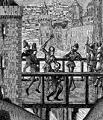
On Jan. 19, 1419 after Duke John the Fearless of Burgundy does nothing to prevent it, Henry V of England finishes the capture of Rouen, completing his conquest of all of Normandy except Mount St. Michel by July, opening the way to Paris (which is occupied by Duke John's troops); Norman French who fought against Henry V are severely punished, incl. Alain Blanchard, who hung English POWs from the walls and is summarily executed, and Robert de Livet, canon of Rouen, who excommunicated Henry V and is imprisoned in England for five years; the English occupy Dieppe 33 mi. N of Rouen (until 1435); Henry accuses his stepmother of witchcraft, claiming she caused his father's death, then seizes her money - of course? On July 11 Dauphin Charles parleys with Duke John the Fearless of Burgundy (b. 1371) on the Bridge of Pouilly (Pouilly-le-Fort) near Melun, swearing peace and agreeing to a 2nd parley, which takes place on Sept. 10 on the bridge in Montereau, and ends up as a mortal ambush of the duke. On Sept. 10 Duke John, who had been wavering in his support of Henry V after seeing him take Rouen and began negotiating with the Armagnacs is assassinated by Dauphin Charles' men during his parley with him at the Bridge of Montereau outside the dauphin's castle, and his son Philip III the Good (1396-1467) succeeds him as duke of Burgundy (until 1467), immediately throwing himself into Henry V's arms at Arras in order to take revenge, and developing a lifelong phobia for bridges; the French court does ditto, entering in a 6-mo. negotiation.
About the 1420s the Middle English word "infidel" is coined from the Latin "infidelis" (unbelieving).
In 1420 the English rhyming phrase 30 days hath September, April, June, and November" is first mentioned; in 1562 it appears in Richard Grafton's "Abridgement of the Chronicles of England".
On May 2, 1422 after a siege Henry V captures Meaux in France.



On Aug. 31, 1422 after designating his able younger brother John of Lancaster, 1st Duke of Bedford (1389-1435) as "protector and defender of the kingdom", 34-y.-o. king (since Mar. 21, 1413) Henry V (b. 1387) dies near Paris of dysentery contracted during the siege of Meaux, his dream of rebuilding the walls of Jerusalem unfulfilled, and 1 mo. too early to become king of France as sickly Charles VI outlives him; on Aug. 31 his 9-mo.-old. only son Henry VI (1421-71) becomes king of England (the 35th British monarch) (until Aug. 31, 1422), and by the terms of the 1420 Treaty of Troyes is now in line for the French throne; John of Lancaster transfers his duties in England to his younger brother Duke Humphrey of Gloucester (1390-1447) (4th son of Henry IV and 1st wife Mary de Bohun), and takes over English affairs in France as regent in the name of Henry VI; meanwhile French breed mare Marie of Anjou (1404-63) (daughter of Louis II of Anjou and Yolande of Aragon) marries French dauphin Charles (later Charles VII) in Bourges, and they go on to have 12 children, incl. Louis XI (b. 1423); meanwhile Jacqueline of Hainaut (1401-36), daughter of Duke William IV of Bavaria (who married her cousin Duke John IV in order to persuade Philip III the Good of Burgundy to help her recover her inheritance of Hainaut, and got an annulment when he refused, then fled to England and got lucky) marries Duke Humphrey of Gloucester, and this time he's game to get a piece of her hiney, er, Hainault; meanwhile English bishop of Winchester (1403-47) Henry Beaufort (1374-1447) (who was offered a cardinal's hat by Pope Martin V, but Henry V wouldn't let him take it, and finally gets one in 1426) begins a war for control of a nearly lawless kingdom dominated by petty nobles via the king's council; eventually the Beauforts, Henry VI's half-uncles, sons of John of Gaunt (born out of wedlock but legitimated by act of Parliament) win, but it takes two decades.
On Sept. 23, 1423 the English nobles swear loyalty to infant king Henry VI, and summon Parliament in his name, establishing a regency council incl. Henry Beaufort and Duke John of Beaufort; Duke Humphrey of Gloucester is appointed as protector and defender of the realm and the Church until he comes of age (in 1437), with Beaufort replacing him when personally in England; Henry VI's half-brothers Edmund Tudor, 1st Earl of Richmond (1430-56) (future father of Henry VII) and Jasper Tudor, Earl of Pembroke (1431-95) are given earldoms; meanwhile John of Lancaster reaffirms the 1420 English alliance with Philip III the Good of Burgundy.

In 1423 English cat-lover Richard "Dick" Whitington (Wittington) (b. 1350) dies after setting out to London with his cat, failing to make a go of it, starting to return, then hearing the Bow Bells of London ringing while climbing Highgate Hill from Archway and becoming lord mayor 4x.
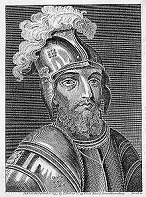
On Aug. 17, 1424 after launching a campaign against Holland and Zeeland (ends 1413), Duke Philip III the Good of Burgundy, allied with John of Lancaster, duke of Bedford and the earl of Salisbury lead an 8K-10K-man army that soundly defeats a combined Armagnac-Scottish force of 14K-16K at the Battle of Verneuil, with 6K-10K casualties incl. Archibald Douglas, 4th earl of Douglas (b. 1372), and John Stewart, 2nd earl of Buchan (b. 1381), helping new king James I consolidate his power by wiping out the rival Douglases and Albany Stewarts; in Oct. Duke Humphrey of Gloucester invades Hainaut to help his wife Jacqueline get it back (ends 1425).

On Jan. 18, 1425 Edmund Mortimer, 5th Earl of March (b. 1391), the heir of Lionel, duke of Clarence (3rd son of Edward III) dies of the plague childless, ending the male line of the Mortimers, and Richard Plantagenet, 3rd Duke of York (1411-60), great-grandson of Edward III, husband of Anne, daughter of Roger de Mortimer, 4th earl of March inherits his vast estates in Wales incl. Ludlow plus the earldom of Ulster in Ireland, making him the richest landholder in England; he also inherits his title to the English throne, making him a player in English politics, taking Gloucester's side in the war for domination of infant Henry VI's council - starting over, life has never been this real?
In 1425 Duke Humphrey of Gloucester gives up on his invasion of Hainaut and abandons his wife's cause, makes peace with Philip III the Good of Burgundy and allows him to imprison her in Ghent, after which she escapes but is recaptured.
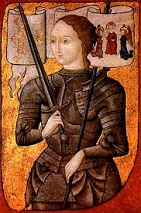
On Oct. 12, 1428 the English under the duke of Bedford begin the Siege of Orleans (ends 1429), and the French cause seems lost; just in the dick, er, nick of time, cross-dressing peasant babe Joan of Arc (1412-31) appears on the pubic, er, public scene in the continuing war between England and France (Arc Wars); claiming to be on a mission from God (the Good Side of the Force?), and to see visions (of Obi-Wan or Yoda?) that she will save France, she comes to dauphin Charles' court in the Loire Valley at the castle of Yolande of Aragon, and wows her with her charm and enthusiasm, then outsmarts her inquisitors with cagey answers, after which Yolande talks Charles into allowing her to lead French relief troops to seiged Orleans, wearing white armor; French military cmdr. La Hire (Etienne de Vignolles) (1390-1443) (Fr. "herisson" = hedgehog) becomes her friend and supporter; is this all a cover story for another conspiracy involving Mary Magdalene and the Priory of Sion, with Joan as the new female Messiah, a dummy corporation to fight the male-supremacist Roman Catholic Church? - look at my eyes, I'm a cat?
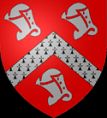
In 1428 Welsh soldier Owen Tudor (1385-1461), son of a fugitive Welsh brewer, who got a job as keeper of the queen's household, giving him the big chance to pour on the charm marries Henry V's widow Catherine of Valois, founding the English Tudor Dynasty, later fathering Earl Edmund of Richmond, who marries Beaufort heiress Margaret and has son Henry VII of England; too bad, the English Parliament passes a resolution this year forbidding dowager queens from remarrying without the king's permission, so their marriage isn't legal, but nothing is done, perhaps because they keep it secret? - kiss me Kate, part two?

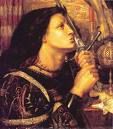
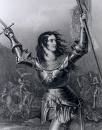

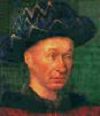
At the start of 1429 the British control the 100-mi.-wide band of N France centered at Paris incl. Brittany, Normandy, Maine, Alencon, Perche, Valois, and Champagne, and the area around Bordeaux in the SW; Charles VII controls the rest of the S section except Burgundy E of the Loire; by 1477 Burgundy controls the N section incl. Picardy, Artois, Flanders, Brabant and Luxemburg; on Feb. 12 the French are defeated by the English under John of Lancaster in the Battle of the Herrings near Rouvray-Saint-Denis 20 mi. N of Orleans, pushing the Armagnacs back of the Loire (10 mi. S of Orleans) and threatening Orleans, the key to French dauphin Charles' remaining territory; but never fear, La Pucelle is here, and after presenting herself to dauphin Charles in Chinon, cross-dressing wet dream on a mission from God Joan of Arc (1412-31) is allowed to lead an army with the empty title of chef de guerre to relieve Orleans, using Blois (35 mi. SW of Orleans) as HQ; on May 7 the French under the original underwear-on-the-outside Joan of Arc raise the Siege of Orleans, win the Battle of Patay on June 18, and rescue dauphin Charles, escorting him safely across territory held by the stankin' English and Burgundians; on July 17 he is crowned French king Charles VII the Victorious (1403-61) at Rheims (until July 22, 1461), turning the tide; meanwhile on Dec. 6 8-y.-o. Henry VI is crowned king of England at Westminster Abbey; Joan of Arc's success causes Charles VII's favorite Georges de la Tremoille (Trémoille) (1382-1446) and other royal ministers to begin plotting against her.
In 1430 after a rope with a cloth proves inadequate, a 6' wooden Tilt Barrier is created for use in jousting tournaments in England.




There are Nuts, and There are Planter's Roasted Nuts, or, Scent of a Woman Pt. II, or Do Lobsters Have Feelings, or, When They Come to Call On You and Drag Your Poor Body Down? On May 30, 1431 after Henry VI's uncle Duke John of Bedford (uncle of Jacquetta, Duchess of Bedford, mother of Elizabeth Woodville, wife of Edward IV) has French holy warrior babe (St.) Joan of Arc( Jeanne or Jehanne d'Arc) (b. 1412), "the Maid of Orleans" tried by a stacked French ecclesiastical commission and condemned as a heretic for dressing in men's clothes, she is burned at the stake in Rouen's old market square (Place du Vieux Marche), singing out the name of her Lord Jesus; chief judge Bishop Pierre Cauchon (1371-1442) denies her a lawyer and railroads her through the rigged jury of 60 clergy and theologians on the English payroll, then falsifies the trial minutes to cover it up; too bad for Bedford, her martyrdom only fans the flames of French nationalism, and forever afterwards the idea of England trying to rule any part of France gives off bad vibes.
On Dec. 16, 1431 Henry VI of England (b. 1421) is crowned king of France at Notre Dame in Paris.


On Sept. 10, 1436 an English force under Henry Percy, 2nd earl of Northumberland and George de Dunbar, 11th earl of March is defeated by the Scots under William Douglas, 2nd earl of Angus, warden of the Scottish Marches at the Battle of Piperdean near Cockburnspath, Berwickshire, failing to take back the Castle of Dunbar; meanwhile James I of Scotland launches a campaign to recapture English-held Roxburgh Castle on the English-Scottish border, causing Henry Percy to march to the relief of Roxborough, sieging it and dispersing the Scots under James I after 15 days in the Dirtin Raid after his army proves not too eager to follow a Scottish Longshanks, causing him to flee from the field with them bringing up the rear, causing his expensive Dutch artillery incl. the Lion to be captured; when James I goes to parliament to get more money to renew the campaign, his uncle Earl Walter of Atholl puts up James I's bitter enemy Sir (Killpont) (1375-1437) (who had been arrested in 1424 as a supporter of Earl Walter of Lennox) to attempting to get the king arrested in Parliament, and when it fizzles the king gets Graham arrested and banished; meanwhile in 1434 James I, always trying to secure Scottish prestige in Europe arranges the marriage of his gorgeous 12-y.-o. daughter Margaret Stewart (1424-46) to the French dauphin Louis, who is transported to France in 46 ships by Adm. William Sinclair, 1st Earl of Caithness, last Earl of Orkney (1410-80), builder of Rosslyn Chapel in Roslin, Midlothian; too bad, the marriage is unhappy, and she dies before becoming queen, wearing a tight corset to keep from becoming pregnant, but he gets other daughters betrothed to the dukes of Brittany (married 1442) and Austria (married 1449) before his death. Henry VI of England is crowned king of France in Paris; Richard Plantagenet, 3rd duke of York and heir to the throne becomes his regent in France; Paris is lost by the English to the French.
On Jan. 3, 1437 Catherine of Valois (b. 1401) dies during childbirth in London, and her son Henry VI (b. 1421) of England is declared of age, but he proves to be a gentle, generous, well-meaning but weak king whom his nobles push around, and is unfit to rule, and the regency council stays in power amid factions and favorites and disorder, while nobles maintain private armed retainers (livery and maintenance) and fight private wars, growing rich with the innovation of sheep farming with enclosures?; the Beauforts make Henry V their puppet, getting Duke Edmund Beaufort of Somerset and his friend the earl of Suffolk promotions in the govt.
In Mar. 1438 a 9-year English-Scottish Truce is signed, effective from May 1 of this year until May 1, 1447, with a bipartisan commission of conservators to enforce it - time out from fighting for their free-ee-dom?

On Oct. 18, 1438 Richard Plantagenet, 3rd duke of York marries Cicely Neville (1415-95), "the Rose of Raby" (daughter of Ralph Neville, 4th Baron Neville), who has four sons, incl. kings Edward IV and Richard III; after a few successes he is replaced by the Earl of Warwick as regent in France (until 1439).

In 1440 Eton College (School) (King's College of Our Lady of Eton Beside Windsor) is founded in Eaton, near Windsor, Buckinghamshire, England by Henry VI as a charity school to give free education to 70 boys to groom them for King's College (College of St. Nicholas), which he founds next year in Cambridge, with special privileges exempting it from the jurisdiction of Cambridge U., the archbishop of Canterbury, and the bishop of Ely (until 1857); King's College goes on to become "the chief nurse of England's statesmen", graduating 18 British PMs; Eton boys end up wearing a distinctive formal dress with waist-length jacket and top hat; the late Gothic King's College Chapel is built in 1446-1515, with large stained glass windows added in 1531, and an early Renaissance rood screen in 1532-36, containing the world's largest fan-vault, becoming a symbol of the city of Cambridge - I love a boy in a short skirt and a waist-length jacket?
The decade when rich Christian Euros looked like turbaned Muslims? In the the 1450s recovery from the plague years leads to conspicuous luxury and fashion in Europe; the chaperon evolves into a fashion statement, the bigger the bourrelet, the higher your rank?; political parties identify themselves by their colors; by the end of the cent. it is kaput except for ceremonial use, incl. the white cappuccino to go with the brown robes of the Capuchin friars; "Little Red Riding Hood" wears a chaperon rouge; a chaperon is placed over a falcon's head to keep it from seeing something tempting and flying away, causing the word to be used for escorts of ladies; meanwhile tapestries become popular as a protection against the plague, which is thought to be airborne, giving work to artists.


On Jan. 28, 1450 Henry VI's favorite royal councilor Jack Napes (b. 1396) (real name William de la Pole, 1st Duke of Suffolk), derisively nicknamed "jackanapes" because after rising from the merchant class to become a nouveau riche noble, he adopted a coat of arms featuring a collar and chain, associated with monkeys) is arrested and imprisoned in the Tower of London for the loss of Normandy caused by his 1444 marriage negotiations over Henry VI and Margaret of Anjou, then banished for five years, but on May 2 his ship is intercepted en route to England, and he is beheaded and his body thrown overboard; his enemy Richard Plantagenet, 3rd duke of York is suspected. In 1450 the French reconquer Normandy from the English, causing the public to turn on Edmund Beaufort, 2nd Duke of Somerset (1406-55) for his ruinous polices that are causing England to lose its French possessions, causing him to be accused of treason while Henry VI tries to protect him through defeat after defeat; Parliament impeaches his ally the earl of Suffolk, but Henry will not permit him to be tried, and banishes him from England for five years, but the fickle finger of fate intervenes, and his ship is seized by pirates as he tries to cross the Channel, and he is beheaded; in May Jack Cade's Rebellion against weak unpopular Henry VI sees 30K men from Kent and Sussex incl. many respectable small landowners led by Irishman Jack Cade (1420-50) march on London demanding govt. reforms and the restoration of Richard Plantagenet, 3rd Duke of York (1411-60) (lt. of France and Ireland) (Shakespeare claims that Richard, now heading an English army in Ireland hired Cade to lead the revolt so that he could personally intervene, quell the rebellion and triumphantly take the throne by force); the rebels' stated aims are reform of the Beaufort-dominated govt. and a change of ministers; the lords of the council raise an army against them, which mutinies, causing the king to flee from London while the rebels invade the city without opposition on July 3, marching across Deptford Bridge with 46K, hunting down ministers and wreaking vengeance; when they execute a man for being able to read and write ("The first thing we do, let's kill all the lawyers", cries Dick the Butcher in Shakespeare's King Henry VI, Pt. 2, 4.2.74, meaning those who can read and write), then turn into pillagers, the citizens of London expel them, and an army led by the duke of Buckingham cruelly defeats them on July 12 in the Harvest of Heads; Jack Cade is killed; England is now on the verge of civil war, with Duke Richard of York waiting in the wings; he returns to England from Ireland with his army, and forces the king to admit him to his council, with the avowed purpose of reforming the govt. and ousting the hated duke of Somerset, but the king and queen side with the latter, and civil war is on.
I didn't have sex with that woman, though I wanted to? In spring 1453 Charles VII begins advancing toward Bordeaux along three routes with three armies, and the lead army sieges Castillon, causing the earl of Shrewsbury (who received another 3K English troops, for a total of 6K) to try and relieve it, causing French artillery master Jean Bureau (-1463) to go on the defensive, encircling his camp with a ditch and palisade manned by 300 cannon; on July 17 they meet at the Battle of Castillon (first Euro battle where cannons are a major factor in deciding the outcome), and the frisky Brits stumble into thousands of archers and the 300 cannon, decimating them, after which a Breton force under the duke of Brittany charges the English right flank and causes them to flee; Shrewbury's horse is killed by a cannon ball, trapping the dude, and a French archer finishes him off with an axe, causing the English to surrender the last outpost in Aquitaine to the French on Oct. 19, ending the Hundred Years' War (begun May 24, 1337) after 116 years, 1 mo. and 21 days; England loses all possessions in France except for the city of Calais; meanwhile Henry VI has son Edward Plantagenet of Westminster, Duke of Lancaster (1453-71), depriving Richard Plantagenet, duke of York of his hope of succeeding to the throne peacefully, but then Richard gets lucky and Henry goes insane, and Richard becomes protector; meanwhile Henry's wife Margaret actively champions the House of Lancaster and her son against the duke of York and his sons, hopping up the War of the Roses; by now French and English nat. identities have hardened into two different molds?



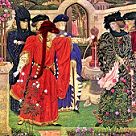
In Feb. 1455 Henry VI recovers, and his Henry VI's wife Margaret of Anjou alienates Duke Richard Plantagenet of York, getting his protectorship revoked, beginning the 30-year Wars of the Roses on May 22 (until June 16, 1487) (32 days 3 weeks 4 days) between two rival branches of the House of Plantagenet, the white rose Yorkists (supporters of Richard) and the red rose Lancastrians (supporters of Henry VI and his wife) (the bloody red rose of Lancaster and the white peppermint pattie of York?); according to Shakespeare's Henry VI Pt. 2, it all started when Richard Plantagenet, 3rd duke of York and his enemy Edmund Beaufort, 2nd Duke of Somerset pluck white and red roses in the Temple Garden, then everybody chose sides and plucks theirs accordingly; "Shall send between the red rose and the white/ A thousand souls to death and deadly night" (Act II, Scene IV).
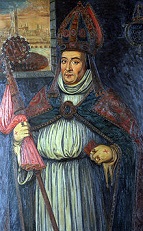
In 1458 Magdalen College (pr. MOD-lin) in Oxford, England is founded by Winchester bishop (1447-86) William Waynflete (Patten) (1398-1486); it is called Magdalen Hall until 1458; its boys' choir becomes a keeper, as does its deer park next to the Cherwell River.



In June 1460 Richard Plantagenet, 3rd Duke of York (1411-60) and his Yorkists leave France, land in Sandwich, Kent on June 26, raise an army and enter London on July 2 and siege the Tower, then send an army under the Duke of Buckingham and "kingmaker" Richard Neville, 6th Earl of Salisbury and 16th Earl of Warwick (1428-71), eldest son of Richard Neville, 5th Earl of Salisbury and 14th Earl of Warwick (1400-60) to meet Henry VI on July 10 at the Battle of Northampton; after treachery by Lord Grey of Ruthven, the Yorkists kill Buckingham, capture Henry VI and take him back to London, where they force him to acknowledge Richard Plantagenet as heir to the throne (bypassing Henry's son Edward), and he names Richard Neville as chamberlain of England, and his youngest son George Neville (1432-76) as chancellor (until 1467); too bad, Queen Margaret of Anjou isn't amused about her son being bypassed, and raises an army in Scotland against him.
*
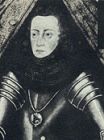
On Feb. 2, 1461 a Yorkist army led by 19-y.-o. Edward Plantagenet, 4th duke of York, earl of Cambridge, and earl of Ulster, eldest son of deceased Duke Richard of York routs a Lancastrian army under the earls of Pembroke and Wiltshire at the Battle of Mortimer's Cross in Herfordshire; on Feb. 2 Catherine of Valois' secret hubby Owen Tudor (b. 1384) (founder of the Tudor Dynasty) is captured and beheaded on High St. in Hereford, expecting a reprieve because of his royal bed partner until the last moment, when he utters the soundbyte: "The head which used to lie in Queen Catherine's lap will now lie in the executioner's basket"; on Feb. 17 the Second Battle of St. Albans is a D for the Yorkists under Edward and Warwick, and Henry VI is freed, but the Lancastrians are not strong enough to take London, so they turn N, allowing the Yorkists to regroup, getting the Londoners to admit him to London; on Mar. 29 (Palm Sun.) the two rival kings meet at the Battle of Towton near York, and the Yorkists, led by the Earl of Warwick win after a snowstorm blinds the Lancastrian formation, becoming the biggest slaughter in English battlefield history; the first use of firearms on a British battlefield?; on June 28 Edward (who claimed to reign since Mar. 4) is crowned Edward IV (1442-83) (the 36th British monarch) (until Oct. 3, 1470) after Parliament deposes Henry VI on ?, declares the three Lancastrian kings usurpers, and Henry VI, his wife, son, and chief adherents traitors, and exiles him and his queen to Scotland; the Lancastrian Dynasty is supplanted by the York Dynasty; Edward IV closes a session of Commons with a speech of thanks, becoming the first time an English king addresses them; Edward IV creates his brother George as George Plantagenet, 1st Duke of Clarence (1449-78), and his other (youngest) brother Richard (future Richard III) as Richard Plantagenet, Duke of Gloucester (1452-85); Edward IV's cousin Richard Neville, 6th Earl of Salisbury and 16th Earl of Warwick (1428-71) is now the wealthiest and most powerful man in England, dictating much of his policy to the king and becoming virtual ruler (until 1464), later switching sides and becoming known as the kingmaker.
In 1462 the Worshipful Co. of Tallow Chandlers livery co. is founded in London by makers of cheap (animal fat) candles.
In summer 1463 after Bishop James Kennedy of St. Andrews puts Queen Mary of Gueldres up to it, a Scottish force unsuccessfully sieges Norham Castle, stronghold of the bishops of Durham; in Dec. Mary dies, and Kennedy becomes guardian of 11-y.-o. James III, and switches Scottish policy to Pro-French and pro-Lancastrian, only to see the Yorkists come out on top next year.
In 1463 Thomas FitzJames FitzGerald, 7th Earl of Desmond (-1468) becomes lord deputy of Ireland for the Duke of Clarence, founding the College of Youghal in 1464, becoming known for defending the native Irish against the cruelty of English law; too bad, in 1467 he is accused by his enemies of treason and extortion, and condemned at a parliament in Drogheda along with Thomas FitzGerald, 7th Earl of Kildare, who escapes to England while he is beheaded on Feb. 14, 1468, shocking the Irish people ("slain by the swords of the wicked, or may I say a martyr)", after which Kildare gets Edward IV to revoke their attainder; meanwhile in 1467 their worst enemy John Tiptoff, 1st Earl of Worcester (1427-70) (who conspired to get Desmond executed?) is appointed by Edward IV as lord deputy of Ireland in Desmond's place, becoming known as "the Butcher of England" for his ruthlessness and cruelty to the Irish.

On Apr. 25, 1464 after Margaret of Anjou invades England from Scotland with a Yorkist army, takes several castles, and is joined by Somerset and the Percies, she is defeated at the Battle of Hedgeley Moor S of Wooler in Northumberland by the Earl of Warwick's brother John Neville, 1st Marquess of Montagu (1431-71), who kills Sir Ralph Percy. On May 15 the Lancastrians are decisively defeated by the Yorkists, led by John Neville at the Battle of Hexham, for which he is created earl of Northumberland in 1467, resigning in 1469 in favor of restoring the Percies and receiving the title marquis of Montagu instead. The earl of Warwick proposes a marriage between Edward IV and Bona of Savoy, Duchess of Milan (1449-1503), sister-in-law of Louis XI of France in order to ally the two countries and end the Lancastrian threat forever, and she accepts, then learns that in the meantime Edward IV has pulled a boner and in Apr. secretly married his candy britches dream girl (a commoner) Elizabeth Woodville (1437-92) (Lady Elizabeth Grey), recent widow (with two children) of the Lancastrian Sir John Grey of Groby (who died in battle in 1461), who was crowned queen in May; worse, she is the daughter of Richard Woodville (Lord Rivers), a Lancastrian; the new queen has 11 brothers and sisters, many of them married into the families of great nobles, creating a new nobility which weakens Warwick's influence with the king and making him jealous, while causing Edward's popularity with the older nobles to tank until Henry VI's 1471 death shuts them all up; to multiply Warwick's troubles, she later gives Edward 10 royal rugrats; meanwhile, despite Lady Bona's attempts to turn him against Edward, Louis XI sees the light and drops his support of his kinswoman, deposed Queen Margaret of Anjou, and seeks an alliance with Edward, which is welcomed by Warwick; George Neville, brother of the earl of Warwick, who had been rapidly promoted from chancellor of Oxford U. in 1453 to bishop of Exeter in 1458 to English chancellor in 1460 is appointed archbishop of York.
On May 24, 1465 Bishop James Kennedy of Scotland dies, and a truce with England is negotiated; on Dec. 15 after 3.3K gold florins are paid by proctor Ricardo de Ricasolis of Florence, Pope Paul II makes his 30-y.-o. nephew Patrick Graham (1435-78) (bishop of Brechin since 1463) the bishop of St. Andrews, stirring resentment from his youth and inexperience and obvious nepotism. The Irish parliament passes an act requiring every Irishman living in the Pale to dress and shave like the English, and take an English surname such as a color, trade, or name of a town, else forfeit his goods; another act forbids fishing in Irish seas to prevent it from enriching the Irish people; another permits decapitating thieves found robbing "or going or coming anywhere" unless they have an Englishman in their company, with the mayor of the nearest town to pay head money. Edward IV passes an edict forbidding "hustling of stones" and other bowling-like sports.
On July 9, 1466 the Boyds of Kilmarnock, Kennedy clan rivals led by Robert Boyd, 1st Lord Boyd (-1482) and his younger brother Sir Alexander Boyd of Drumcol (1420-69) take custody of 14-y.-o. James III while out hunting near Linlithgow; Alexander then ditches Robert, becoming virtual ruler of Scotland (until 1469), getting his son Thomas Boyd created earl of Arran and married to James III's elder Mary, and his daughter Elizabeth Boyd married to Archibald Douglas, 5th earl of Angus, and putting himself in the office of chamberlain.
In 1468 Edward IV seeks to increase the number of cases of riot and violence brought before the court of star chamber.

On Mar. 20, 1469 the Battle of Nibley Green in Gloucestershire is a V for William Berkeley, 2nd Baron Berkeley over Thomas Talbot, 2nd Viscunt Lisle, becoming the last battle in England fought entirely between private armies. In July after coming under the influence of his 1st cousin Richard Neville, Earl of Warwick, and despite being mentioned as a possible husband for Mary, daughter of Charles the Bold, Duke of Burgunday, in defiance of his brother Edward IV of England, George Plantagent, Duke of Clarence (1449-78) marries Isabel Neville (1451-76), daughter of kingmaker Richard Neville, 16th earl of Warwick in Eglise Notre-Dame de Calais; claiming only to be trying to restore his lost influence over the king and scotch the Woodvilles, Warwick joins with Clarence in a surprise attack, and defeats the king on July 24 at the Battle of Edgcote (Banbury) (Danes Moor) (Northants), capturing him and executing some Woodvilles; Warwick then foments a pro-Henry Percy uprising in Northumberland by mystery man Robin of Redesdale in Yorkshire, which is soon scotched by Warwick's brother John Neville, and is forced by public opinion to release the king, turning his attention to problems in Scotland, while the pissed-off king now begins plotting his overthrow; meanwhile John Neville switches to the Lancastrian side after the earldom of Northumberland is restored to Henry Percy.

On Feb. 18, 1478 after the English Parliament condemns for treason and imprisons Edward IV's brother George Plantagenet, 1st Duke of Clarence (b. 1449) ("false, fleeting, perjur'd Clarence") in the Devereux Tower (part of the Tower of London), he "disappears privately", rumored to having been drowned in a butt (large cask) of malmsey (strong sweet white Madeira, as opposed to claret, which is dry red) wine (blamed by Shakespeare on his scheming brother Richard?); on Feb. 21 Duke Richard of Gloucester gains Clarence's share of Warwick's lands, along with the title of Great Chamberlain; the news of his bro's death causes the grievously ill king's death, according to Shakespeare - so much for Sir John Fortescue?
In 1482 Berwick-upon-Tweed, which for cents. was considered the E end of the boundary between England and Scotland and part of neither (a "county of itself") is finally claimed decisively by the English.



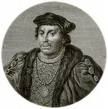

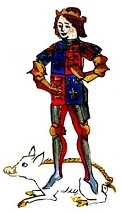
A bush in the hand is better than a bird in the cradle? On Apr. 9, 1483 after Maximilian of Austria accepts the acquisition of Burgundy by France, and ailing French King Louis XI (b. 1423) decides that 3-y.-o. Margaret of Austria (1480-1530), daughter of Maximilian I and Mary of Burgundy would be a better wife for the dauphin than 17-y.-o. Elizabeth of York (1466-1503), eldest daughter of Edward IV and Elizabeth Woodville, to whom he was previously engaged, because she brings as dowry Franche-Comte and Artois, pissing him off to see his daughter jilted, causing him to declare war on France, English king (since Mar. 4, 1461) Edward IV (b. 1442) dies suddenly a few days short of his 41st birthday (Apr. 28), leaving behind two sons, Edward V (b. 1470) and Duke Richard of York (b. 1473), and five daughters; on Apr. 9 12-y.-o. Edward V (1470-83) is declared the 37th monarch of England (until June 25), but before the Woodville clan (who has him in their care) can get him crowned, Edward IV's brother Duke Richard of Gloucester, who had been named protector by the deceased king seizes him at Stony Stratford on Watling St. near Northampton on Apr. 30, and imprisons him with his guardian (maternal uncle) Anthony Woodville, 2nd Earl Rivers (1442-83) in the Tower of London, forcing the latter to acknowledge him as protector, with Edward's coronation postponed until June 22; on June 10 after Edward IV's loyal soldier (baron since 1470) John Howard, 1st Duke of Norfolk (1425-85) and his only son Thomas Howard, 2nd Duke of Norfolk (1443-1524) flop and supports Duke Richard, he leads his troops to London, and on June 17 young Richard is taken from sanctuary in Westminster Abbey to join his brother in the Tower, with survivor Canterbury archbishop Thomas Bouchier talking mommy into it; on June 25 Gloucester get his father's marriage to Elizabeth Woodville annulled on the grounds that Edward IV had been betrothed to the daughter of the earl of Shrewsbury, and Edward V declared illegitimate and barred from the throne; on June 25 pesky Earl Rivers is beheaded at Pontefract; Edward V becomes the 2nd English monarch never to be crowned (1st Matilda) (next Jane, Edward VIII), and the shortest-lived male English monarch; on June 26 after Duke Richard packs Parliament with his men, he gets them to acknowledge him as king, and on July 6 he is crowned as (ever-misunderstood?) Richard III (1452-85) (Britain's 38th monarch) (until Aug. 22, 1485) at Westminster Abbey with Parliament's blessing (first time since 1066 that England has three kings in the same year - next 1936); Richard III creates Sir John Howard as the 1st duke of Norfolk and earl marshal of England, and his son Sir Thomas Howard as earl of Surrey; Earl Marshal becomes #8 of the Great Officers of State, with the Lord High Constable above and only the Lord High Admiral beneath, both earl marshal and high constable functioning as officers of the king's horses and stables until 1673, when the earl marshal becomes head of the College of Arms - is Howard a coward, or is Howard no coward? In June after taking advantage of the death of Edward IV, James III of Scotland gets back in power, getting his brother Duke Alexander of Albany forfeited by parliament in July, which only causes him to plot another comeback.
The handicapped now have one of their own on the throne, but too bad? In summer 1483 Prince Edward V and his brother Richard, duke of York die under mysterious circumstances in the Bloody Tower of London (smothered by soldiers with a pillow according to the Tudor theory, or killed by Richmond instead of Gloucester according to the York theory); in 1647 two boy skeletons, ages 12-13 and 10 are unearthed in the Tower); on Sept. 8 Edward Plantagenet of Middleham (1473-84), son of Richard III and Anne is created prince of Wales in York Minster; the murder of royal brats could cause Yorkists and Lancastrians alike to turn on the hunchbacked cripple, so it is kept secret?; nevertheless, in Oct. Henry Stafford, 2nd Duke of Buckingham (b. 1455), richest landowner in England shocks Richard III by rebelling against him, with a plot conceived by bishop of Ely (since 1479) (archbishop of Canterbury since Oct. 6, 1486) John Morton (1420-1500), intending to place Henry Tudor, 2nd Earl of Richmond (1457-1509), nearest male rep. of the Lancastrian line (an illegitimate grandson of Edward III, excluded from the succession, currently in exile in Brittany) on the throne; too bad, there is good news for Richard when Buckingham's army is prevented from crossing the Wye and Severn Rivers by floods on Oct. 15 and disbands, after which his ships are scattered by high winds, and he is betrayed by a servant, captured and executed on Nov. 2 in Salisbury near the Bull's Head Inn; Richard III goes to Exeter, causing Richmond to flee to France on Nov. 8; on Dec. 25 he promises to marry Elizabeth of York, heiress to the throne (eldest daughter of Edward IV, sister of the murdered princes, and Richard's niece) and unite the two houses of England if he gains the throne, which proves to be the winning move - for Doom, Rated R?
On Apr. 9, 1484 Richard III's son and heir apparent Edward of Middleham, Prince of Wales (b. 1473) dies suddenly, leaving his daddy without an heir, opening the way for Henry Tudor.
On July 22, 1484 a 500-man English force led by Duke Alexander of Albany and exiled James, 9th earl of Douglas is defeated by the Scottish royalist army in the Battle of Lochmaben Fair in SW Scotland; Douglas is captured, and Albany flees back to England to plot yet another comeback; meanwhile James III gets a draconian Treasons Act passed.
On Sept. 14, 1484 Richard III of England concludes a 3-year truce with Scotland.


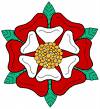
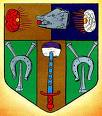
It's handsome Richmond vs. ugly hunchback cripple Richard, kicking his butt and getting the babe? Sounds like a setup? On Mar. 16, 1485 Richard III's queen Anne Neville (b. 1456) one year after the death of their only son Edward (poisoned by Richard III so that he can scandalously marry his niece Elizabeth of York, daughter of the late Edward IV before Henry Tudor can get her?), and Richard III names his nephew John de la Pole, 1st Earl of Lincoln (1462-87) as his heir; meanwhile Henry Tudor, earl of Richmond, who had been waiting in the wings in refuge in Brittany for many years, secures troops and money from Charles VIII of France and duke Francis II of Brittany (only 400 of his 2K troops are English), and sails from Harfleur on July 31-Aug. 1 with Edward Courtenay and Edward Woodville, then reaches Mill Bay (Nanjizal) (near Land's End Walking, Cornwall) on Aug. 2, and lands at Milford Haven in Pembrokshire, SW Wale) on Aug. 7 (evening), reciting Psalm 26:1 ("Judge me Lord") and kissing the sand, the news causing widespread defections among Richard's supporters, incl. the Stanley family; after Sir William Stanley (1435-95) allows him passage across N Wales, and Sir Gilbert Talbot of Grafton (1452-1518) and 500 of Lord Shrewsbury's retainers from Shropshire join with him, and he gathers his forces at Lichfield and threatens to cut Richard III off from London, on Aug. 17 he marches to Tamworth, where he is joined by John Savage and his Welsh levies, staying overnight at the Three Tuns in Tamworth; on Aug. 20 he joins up with Lord Stanley and his brother William Stanley in Atherstone, and after being guided by John Hardwick stays overnight on Aug. 21-22 at White Moors on the Tweed River; meanwhile Richard III, who dispatched Francis Lovell, 1st Viscount Lovell (1456-89) and his fleet to guard the English Channel, and left his HQ at Nottingham Castle to muster his army on Aug. 16 at the Nottingham marketplace, is greeted by the pop. of Leicester on Aug. 17, stays overnight at the Blue Boar, then reaches Elmesthorpe on Aug. 18, followed by Bosworth on Aug. 22, where he declares "I will not budge a foot; I will die king of England."
In spring 1485 Duke Alexander Stewart of Albany (b. 1454) leads another small English force into Scotland, is captured and imprisoned in Edinburgh Castle, then escapes to France, where he is killed in a tournament in Paris with the Duke of Orleans by a splinter from his lance on Aug. 7.

England invents its own Mystery Man Island Christ, complete with its own gospel? In 1485 Warwickshire-born Sir Thomas Malory (1405-71) posth. pub. Le Morte d'Arthur (Le Morte Arthure) (The Book of King Arthur and His Noble Knights of the Round Table) (21 vols.); printed by William Caxton, becoming the first book in poetic prose, and the first novel in the English language; written while rotting in prison on trumped-up charges after calling for reform during the Wars of the Roses; based on an anon. early 13th cent. La Mort le Roi Artu (1237); Malory puts bits of his own life in Arthur's tale; after Arthur is mortally wounded, Sir Bedivere throws Excalibur in the lake so that it will not see him dead, and "there came an arm and an hand [the Lady of the Lake] above the water and met it, and caught it, and so shook it thrice and brandished, and then vanished away the hand with the sword in the water"; Arthur then goes to the "Vale of Avilion (Avalon), to heal me of my grievous wound"; "Yet some men say in many parts of England that King Arthur is not dead, but taken by the will of our Lord Jesu into another place; and men say that he shall come again, and he shall win the holy cross"; "Here lies Arthur, once and future king" becomes the dream of all English kings, who want to claim that they're him, whether or not they are of Celtic heritage?; the Winchester Manuscript is unearthed in 1934 - there's a kind of hush all over the world, or, sentimental fool am I, but the melody keeps haunting me?
On July 16, 1486 Henry VII finally announces the murder of the princes in the Tower by their dead uncle Richard; the delay makes some suspect that it was he not Richard who had them murdered, since the only way he could get the crown was to marry Elizabeth, while declaring her legitimate, but that would make the princes legitimate also, barring him from the crown - but the hunchback cripple is always the bad guy, right?
In 1487 Henry VII of England establishes the Court of Star Chamber, showing that he means to be an autocratic king.
In 1488 Henry VII's man-of-war Great Harry is constructed, becoming the first large ship built in England.
On Mar. 26, 1489 the 2nd Treaty of Medina del Campo between England Spain (first in 1431 between Portugal and Castile) provides for the marriage of Spanish princess Catherine of Aragon to Henry VII's eldest son Arthur Tudor (b. 1486), who on Nov. 29 is named prince of Wales.
In 1489 Henry VII of England issues a charter to the city of Southwold.




On Apr. 21, 1509 (night) English king (since Aug. 22, 1485) Henry VII (b. 1457) dies rich in bed in Richmond Palace, and his athletic 6'2" 2nd son Henry VIII (1491-1547) becomes the 40th monarch of England and the 2nd Tudor king (until Jan. 28, 1547); favorite horse: Canicida; since he has no son, his brother-in-law James IV of Scotland is named his heir, which doesn't set well with the English; on June 11, claiming it was his dead father's wish, and ignoring politicians on both sides who dispute her claim to being a virgin, he marries Catherine of Aragon (1485-1536), daughter of Ferdinand II after Pope Julius II okays it and issues a dispensation for the marriage; the lovely torture instrument called the rack is first commonly used in his reign? - it's all done with hidden ketchup and mayo packages?
In Aug. 1516 Henry VIII has the 1290 Round Table of Arthur in the Church of Winchester repainted by an artist from Southampton, with his own face for Arthur, believing that the Welsh Tudors are a fulfillment of the prophecy that Arthur will rule England again; he also has visions of becoming HRE until his split with the pope; too bad, when he later begins destroying the old Medieval Catholic culture of England he has the bones of Arthur and Guinevere in Glastonbury destroyed - which makes Arthur un-PC among the Tudors, becoming the reason that S hakespeare never writes a play about him?

On Oct. 11, 1521 Pope Leo X declares English king Henry VIII the Defender of the Faith (Fidei Defensor) for his June pub. Assertio Septem Sacramentorum (Defense of the Seven Sacraments) refuting Martin Luther, becoming the #1 anti-Lutheran polemic of the cent., going through 20 eds.; meanwhile on Dec. 1 Leo X (b. 1475) dies of a winter chill (after writing sometime in his career "It has served us well, this myth of Christ"?), allowing Francesco Maria I della Rovere to recover his duchy of Urbino; Martin Luther replies to Henry VIII in 1522 with the book Against Henry, King of the English (Contra Henricum Regem Anglie), causing Thomas More to reply to him in 1523 with the book Responsio ad Lutherum; meanwhile Martin Luther takes advantage of this plus Charles V's military diversion to initiate public worship in Germany, with liturgy in vernacular German, and to preach along with Ulrich von Hutten against Jakob Fugger for lobbying the papacy to drop the age-old medieval prohibition against charging interest on loans - a rare natural death for a Medici?



In 1526 after possibly fathering two children Henry and Catherine Carey by her lady-in-waiting Mary Boleyn, then hooking up with her sister Anne Boleyn, English Tudor king (1509-47) Henry VIII (1491-1547) begins to petition Pope Clement VII for an annulment of his marriage to sterile wife (since June 1509) Catherine (Katherine) of Aragon (1485-1536) (whose nephew HRE Charles V controls the pope), who petitions back; Henry VIII offers Reginald Pole (1500-58), dean of Exter (a Plantagenet) the archbishopric of York if he will support the divorce, but he refuses and flees to the Continent, then pub. the treatise "Pro Ecclesiasticae Unitatis Defensione", dissing the idea, causing the king to begin persecuting his family, executing his mother Margaret Pole, 8th Countess of Salisbury (1473-1541) (last surviving member of the House of Plantagenet) on May 27, 1541 in a bloody botched beheading (beatified in 1886 by Pope Leo XII); Sir Thomas More (1478-1535) turns against the king on religious principles; Henry revamps the royal library to use it to prove his right to do what he intends to do anyway.

In 1528 in a meeting in Bridewell Palace (Bridewell Prison in 1556), Henry VIII explains to the nobles and citizens of London his reasons for seeking a divorce from his wife Catherine of Aragon (his official, not real reasons, viz., the need to continue the line of a Welsh brewer with a male heir?); the pope sends Cardinal (since 1534) Lorenzo Campeggio (1474-1539) (last cardinal protector of England since Jan. 22, 1523) to England as his legate to hear the case, with secret orders to delay as long as possible, since the pope dares not mess with HRE Charles V's aunt?
In July 1529 papal legate Cardinal Campeggio announces that the whole matter of the royal divorce case must be referred to Rome for the pope's personal adjudication; two days after he departs for Rome in Aug., useless fall-guy Cardinal Wolsey is tried and convicted of exceeding his authority as a papal legate and deprived of his seals as lord chancellor by none other than Charles Brandon, 1st duke of Suffolk, whose neck he had saved back in 1515 over his treasonable marrige to Henry VIII's sister, to whom Wolsey utters the soundbyte "If I, simple Cardinal, had not been, you should have had at this present no head upon your shoulders wherein you should have had a tongue to make any such report in despite of us"; as well as all official posts and honors except for the archbishopric of York, to which he retires after his right-hand man Thomas Cromwell leads the opposition to an attempt in Parliament to pass a bill of attainder against him; on Oct. 25 Sir Thomas More is made lord chancellor (until 1532), becoming the first layman to hold the post; in Oct. Henry VIII summons the English Reformation Parliament, which sits for seven year (until 1536); Thomas Cromwell survives his dismissal in spades, becoming Henry VIII's right-hand man and showing his stuff by gathering all the grievances of the English people against the privileged Catholic Church into a list, and going on to manage the dissolution of the monasteries; Sir Thomas Howard, 3rd duke of Norfolk becomes pres. of the king's council; the pope adjourns the commission to consider Henry's annulment to Rome, which is a V for Catherine; Cambridge U. divine Thomas Cranmer suggests to Henry VIII that he need not wait for Rome to annul his marriage, but might refer the question of his marriage to the divines of the univs.; the happy king appoints him archdeacon of Taunton, a royal chaplain, and gets him a post in the household of Anne Boleyn's father Sir Thomas Boleyn, now the earl of Wiltshire.

In Nov. 1530 Cardinal Thomas Wolsey (b. 1475) is arrested on a charge of high treason, and dies on the way to the Tower in Leicester Abbey; Thomas Cromwell (1485-1540) is sworn into the King's Council, and is sent to Rome with the earl of Wiltshire by the king to present his position regarding his requested marriage annulment; Henry VIII confiscates Wolsey's home (York Place), hiring Anthony van Wyngaerde and enlarging it into Whitehall Place for his white ho, er, babe Anne Boleyn, becoming the largest (albeit ugly) residence in Europe (cap. 600) and the seat of royal power until it burns down in 1698.
On Apr. 15, 1531 cook Richard Roose is executed at Smithfield by boiling for putitng poison in his food; Henry VIII radilroaded the sentence through for fear of it happening to him?; in 1952 Margaret Davy becomes the 2nd person boiled at Smithfield for poisoning; in 1547 Edward VI repels the law.
In 1531 Henry VIII is recognized as the Supreme Head of the Church in England; Henry sends Thomas Cranmer to the court of HRE Charles V; meanwhile Thomas Cromwell becomes privy councillor.

Breathe better, sleep better with Breathe Rite? The English Church formally breaks its ties with Rome? In Mar. 1532 the anticlerical Reformation Parliament, led by Henry VIII's chief minister Thomas Cromwell presents the Supplication Against the Ordinaries, a long list of grievances against the Roman Catholic Church by the ordinary people to the king, proposing that he be given the power to investigate and reform Church abuses; when clerical MPs oppose it, Henry VIII forces them to state whether their loyalty is with him or the pope, saying, "We thought that the clergy of our realm had been our subjects wholly, but now we have well perceived that they be but half our subjects, yea, and scarce our subjects"; on May 15 the Submission of the Clergy by the convocation of the English Church in Canterbury accepts Henry's claim that all ecclesiastical legislation is subject to royal approval, undoing the work of the 664 Synod of Whitby; an act is passed abolishing annates (fees newly-elected bishops pay to Rome), and setting up machinery to appoint new bishops without consulting the pope, pissing-off loyal papist, er, Roman Catholic (who lived under the Carthusian discipline in 1499-1503) Sir Thomas More (1478-1535), who resigns as lord chancellor on May 16 and retires from public life, pissing-off Henry VIII.



On Jan. 25, 1533 after she maneuvers to wait until the last moment, Henry VIII and Anne Boleyn are secretly married in a turret in Whitehall Palace, and in Feb. she comes out of her chamber and admits to "a furious hankering to eat apples, such as she had never had in her life before", after which "she broke into a fit of hysterical laughter and rushed back into her room". On Mar. 30 twice-married obscure cleric Thomas Cranmer (1489-1556) is consecrated as archbishop of Canterbury after the papal bull Romanus Pontifex from Pope Clement VII arrives confirming his nomination by Henry VIII, thus ending clerical celibacy in the Anglican Church (Henry had blackmailed the pope by threatening to terminate the papacy's annates); not satisfied with that bone, Henry VIII, faced with the pregnancy of his royal baby factory Anne Boleyn takes the world-shaking step of breaking with the Roman Catholic Church (as to who is the boss, not the doctrines?), has the Act (Statue) in Restraint of Ecclesiastical Appeals passed on Apr. 7 to make it illegal to appeal his decision to any authority outside England, stating "This realm of England, is an empire... governed by one Supreme Head and King", then has Cranmer annul his 23-year marriage to Catherine of Aragon on May 23, and on May 28 pronounce his Jan. marriage legal, then on June 1 crown bun-in-the-oven Anne Boleyn (1507-36) as queen of England; in July the Act Concerning Ecclesiastical Appointments and Absolute Restraint of Annates (Appointment of Bishops Act) becomes effective, depriving the pope of his main source of income along with his last power in Tudor England; on July 11 Pope Clement VII excommunicates Henry VIII, which doesn't bother him one pert ducky little bit, and he sends his prelate Edmund Bonner (1500-69) (who argued Henry VIII's case a year earlier in defense of his divorce) with a notice of intent to appeal to a gen. council; meanwhile Archbishop Cranmer foreswears allegiance to the pope, directs the erasure of the pope's name from every prayer book, and pronounces himself the new head of the English Church, becoming the virtual pope of England, with most of the powers incl. the issuing of bulls (a seven deep-sixes an eight?); you-better-drop-kids-quick Queen Anne begins her Thousand Days; Catherine of Aragon, who had for some time been living under house arrest in the country has her rank reduced to princess dowager of Wales, and is forced to live in several dank and unhealthy castles for the rest of her life, starting with Ampthill in Bedfordshire, then Buckden, finally Kimbolton Castle in Huntingdonshire, while constantly being put under pressure to sign away her rights and those of her daughter Mary, which she endures religiously.
On Mar. 23, 1534 Pope Clement VII pronounces Catherine of Aragon's marriage valid; not to be outdone, on Mar. 23 the English Parliament passes the First Act of Succession, followed in Nov. by the Act Respecting the Oath to the Succession, vesting the English succession in the children of Henry VIII and Anne Boleyn (i.e. future Elizabeth I), and requiring everyone in England to swear allegiance to Henry VIII as the head of the English Church; Sir Thomas More is imprisoned in the Tower of London for refusing to take the oath, during which time he writes Treatise on the Passion, and Dialogue of Comfort Against Tribulation.
On Apr. 20, 1534 English Roman Catholic nun Sister Elizabeth Barton (b. 1506), "the Maid of Kent", "the Holy Maid of London", an English ecstatic (epileptic) opposed to Henry VIII's matrimonial policy is executed at Tyburn after she talks too much and claims a message from the Virgin Mary that if goes he through with his divorce of Catherine of Aragon he "should no longer be king of this realm... and should die a villain's death" within 6 mo. - thefore, doctor, take your own medicine?


On June 22, 1535 after refusing to swear allegiance to Henry VIII, asserting that Parliament does not have the right to usurp papal authority in favor of a king, Roman Catholic cardinal-bishop John Fisher (b. 1469) of St. Vitalis is beheaded for treason; on July 6 Sir Thomas More (b. 1478) is ditto at Tower Hill after a trial on July 1; "I can shift for myself" on the way down, he says; another good one: "I die the king's good servant, but God's first"; parting shot: "Though you have warrant to cut off my head, you have none to cut off my beard"; Fisher and More are beatified on Dec. 29, 1886 by Pope Leo XIII, and canonized on May 19, 1935 by Pope Pius XI, and on Oct. 31, 2000 Pope John Paul II declares More the "heavenly Patron of Statesmen and Politicians"; first of the Forty Martyrs of England and Wales (1535-1679).
On Jan. 7, 1536 Spanish-born English queen (princess dowager of Wales) Catherine of Aragon (b. 1485) dies in exile in Kimbolton Castle, Huntingdonshire, still claiming to be be England's only rightful queen; she dies after dictating a Letter of Forgiveness to Henry VIII.
On May 2, 1536 Queen Anne Boleyn is imprisoned in the Tower of London on charges of adultery with her brother, three gentlemen of the privy chamber, and a court musician, and of conspiring with them against the king's life; on May 14 Thomas Cranmer declares her marriage to Henry VIII null and void - luckily the other eight got away with it?

On May 12, 1536 the four commoner conspirators are tried, followed by Queen Anne Boleyn and her brother on May 15, and all are convicted of high treason after the court musician confessed under torture to adultery, although the others maintain their innocence; Anne's father Thomas Boleyn and her uncle the duke of Norfolk are instrumental in her kangaroo trial, with Norfolk presiding over the 26 peer judges, then pronouncing her sentence; the trumped-up proceedings of adultery and witchcraft (based on her having a 6th finger and an extra nipple, a goiter on the neck, et al.) get lost; on May 17 the musician is hanged and the four commoners beheaded incl. her brother George Boleyn, and on May 19 Henry VIII has the head of Anne Boleyn (b. 1507) severed from her pretty duckies by expert swordsman (one of the king's inner council) Sir William Kingston (1476-1540) (compliments of his wily advisor Thomas Cromwell) after he last words, "I have a little neck"; on May 20 after Parliament invalidates the marriage to enable it, Henry betrothes Anne's plug-ugly but fertile maid of honor Jane Seymour (1508-37), then marries her on May 30 after a 11-day party; Hans Holbein the Younger becomes court painter to Henry VIII, and makes a Drawing of Plug-Ugly Queen Jane Seymour; Anne's daughter (future queen) Elizabeth is declared a bastard, even though later both Parliament and the king name Henry's children Edward, Mary, and Elizabeth, in that order, as heirs to Henry's throne.

On Oct. 6, 1536 after being condemned in Brussels at the behest of Henry VIII, Lutheran sympathizer William Tyndale (b. 1494) is strangled and then burned at the stake by the Old Skool, who consider the Bible dangerous in the hands of the unlearned for making an "illegal" English trans. of the Bible; his last words: "Lord, open the king of England's eyes".
In 1536 the English Parliament declares the authority of the pope void in England; meanwhile on Oct. 1 after Henry VIII orders the Dissolution (Suppression) of the Monasteries (ends 1541), causing 376 religious houses in England to be dissolved by royal decree, the Pilgrimage of Grace in Yorkshire sees 40K men led by lawyer Robert Aske (1500-37) of Doncaster march through N England protesting the looting of the churches and monasteries by Henry's iconoclastic govt., also seeking relief from tax collectors; pro-Roman Catholic Thomas Howard, 3rd duke of Norfolk negotiates their surrender; Don't Aske is executed for treason next July 12; meanwhile Thomas Cromwell rises to Baron Cromwell of Oakham and Lord Privy Seal, setting up a bureaucratic machine to administer all the income generated by selling Church land and closing monasteries; too bad his big schmuck arrogance and venality causes him to make a lot of enemies; Thomas Mildmay (1515-66) gets a lucrative job as royal admin. of the ecclesiastical revenues annexed to the crown, allowing him to later set up his son Walter Mildmay as privy chancellor and chancellor of the exchequer under Elizabeth I; next year Henry VIII introduces legislation in the Irish Parliament to close the monasteries, which faces considerable opposition, causing only 16 of 400 to be closed, but after regrouping he gets about half closed by the time of his death in 1547 - magic green, cleans like magic?
In 1536 the only surviving copy of Beowulf from Anglo-Saxon times (originally written in the 8th cent. C.E.) narrowly escapes destruction when Henry VIII empties the monasteries.
In 1536 Henry VIII establishes the 350-acre Hyde Park in C London after taking land from Westminster Abbey for a hunting ground; it opens to the public in 1637, becoming popular for May Day parades, becoming the largest of the four royal parks forming a chain from the entrance of Kensington Palace through Kensington Gardens and Green Park past the main entrance to Buckingham Palace.
In 1538 Henry VIII ensures the popularity of the Anglican Church by abolishing the Roman Catholic monasteries, relics, and shrines in S England and sharing the loot with his non-Catholic pop.; Thomas Cranmer carries out his orders for the desecration of the profitable shrine of St. Thomas Becket in Canterbury Cathedral (incl. burning his bones after he is summoned to face charges of treason and fails to appear in court and is found guilty in absentia, his shrine's treasures carried away in two coffers and 26 carts), and the abolition of many Roman Catholic church festivals; on Jan. 23, 1888 a skeleton is found in Becket's crypt of a 6'2" 50-y.-o. man with a fractured skull, but since it doesn't fit the eyewitness descriptions that the crown of his head was knocked off, the jury is still out; in Sept. informed that he needs his own non-Catholic Bible to prove his independence from the papacy, Henry is handed a copy of dead Tyndale's "illegal" Bible (printed in Paris) without knowing it, and approves it, and the English govt. directs every parish in England to purchase a Tyndale Bible of the largest size possible, to be set up in each church for easy reading by parishoners; Cranmer goes on to work to unite the new Church of England with the German Lutheran Church, and invites Protestant refugees to England, incl. Peter Martyr (Pietro Martire Vermigli), and Bernardino Ochino.
In Apr. 1539 the Statute of Six Articles (against Lutheranism), engineered by Thomas Cromwell is passed; Hugh Latimer resigns as bishop of Worcester in July; Edmund Bonner is made bishop of London, supporting Henry VIII's doctrine of the supremacy of the king in both spiritual and temporal matters; Cromwell rises to Lord Great Chamberlain - meaning, one mistake and he loses his head?

In fall 1539 Myles (Miles) Coverdale (1488-1569) pub. The Great Bible, the first English Bible, commissioned by Thomas Cromwell and pub. by the English govt., becoming the official English version for the Anglican Church; the cover shows Henry VIII at the top, with Christ whispering into his ear as he passes on the word of God to Archbishop Cranmer and Cromwell, who passes it to the clery and laymen, who cry "Vivat Rex" (God save the king); Cromwell orders one to be housed in every church in England; "Go to now (most dear reader) and sit thee down at the Lord's feet and read his words, and, as Moses teacheth the Jews, take them into thine heart, and let thy talking and communication be of them when thou sittest in thine house, or goest by the way, when thou lyest down, and when thou riseth up. And above all things fashion thy life and conversation according to the doctrine of the holy ghost therein." (preface)




I can't see me loving nobody but you, for all of, er, some of my life? Grand Canyon jokes here? On Jan. 1, 1540 Henry VIII has a comical meeting with Anne of Cleves (1515-57) in disguise in Rochester, and finds her portrait quite exaggerated and her person loathsome, then tries to back out of his marriage, but power politics prevents him, and on Jan. 6 he reluctantly marries his 4th wife to bring about an alliance with a German principality and counter the Treaty of Toledo; in Apr. Henry creates his chief minister Thomas Cromwell (b. 1485) the earl of Essex, then turns on him after having many impotent nights with his new wife (who has big floppy duckies instead of pert little ones like he likes?, blaming him for hooking him up with an ogre, letting Cromwell's enemies loose on him; on June 10 Cromwell's archenemy, lord treasurer Thomas Howard, 3rd Duke of Norfolk (1473-1554) arrests him for treason, and Parliament turns on him too; meanwhile on July 9 Henry divorces Anne at the convocation of Canterbury and York, giving her the title of "My Lady the Queen's Sister", then on July 30 secretly marries his real lover, the very tight and right Catherine Howard (1521-42) (his 5th wife), Anne Boleyn's cousin, and niece of Thomas Howard, 3rd duke of Norfolk; the same day Thomas Cromwell is executed after reconverting to Roman Catholicism, and Norfolk becomes his successor; the same day English Lutheran Robert Barnes (b. 1495) is burned at the stake; Bible translator Miles Coverdale flees to the Continent for the next eight years (until 1548); too bad, Catherine begins secretly hooking up with handsome young stud Thomas Culpeper (1514-41) with the aid of her lady-in-waiting Jane Boleyn, Viscountess Rochford (1505-42), widowed sister-in-law of Anne Boleyn - moral: please the head of your nation or you could lose yours?
On Oct. 18, 1541 Margaret Tudor (b. 1489) dies in Methven Castle in Scotland.
On Nov. 12, 1541 Queen Catherine Howard is sent to the Tower on suspicion of immoral conduct with Thomas Culpeper, whose chambers are searched, revealing a love letter from Catherine mentioning Lady Rochford, and they, along with Catherine's alleged paramour (when living with her grandmother the Duchess of Norfolk) Francis Dereham are tortured and executed on Dec. 10, Dereham getting the full treatment of hanging-drawing-quartering, and lucky Culpepper only beheading because of his Howard family connections; Catherine Howard is imprisoned in Syon House in Isleworth, NW London.
In 1541 after invading Tir Eogain, new (since July 7, 1540) lord deputy of Ireland Sir Anthony St. Leger (Sellenger) (1496-1559) defeats the Geraldine League and its leader Conn O'Neill, king of Tir Eogain, who is captured and sent to a parliament in Trim, then goes to England to convert to Protestantism and submit to Henry VIII, who creates him the 1st Earl of Tyrone and presents him with a nice gold chain and money, receiving land grants in the Pale in Balgriffin and being made a privy councillor in Ireland, pissing-off his Gaelic Roman Catholic clansmen and causing his son Shane O'Neill (1530-67) to begin a campaign to be recognized as The O'Neill despite the English and branches of his own family backing other claimants; meanwhile Henry VIII convenes the Irish Parliament to pass the 1542 Crown of Ireland Act on June 18, abolishing the high kingship of Ireland and changing his old title of lord of Ireland (conferred by the pope) to king of Ireland, making make him head of the Irish Church, discarding the old fiction that Ireland is a feudal province of the Church and that England was still a Roman Catholic country and establishing the new Kingdom of Ireland (ends Jan. 1, 1801); meanwhile in actual fact the Irish fight for every chance to break free from the stankin' English, who to them are nothing but plunderers - which only makes the Irish pop. more determined to never become Protestant?

In 1541 Henry Howard, Earl of Surrey (1517-47), son of Thomas Howard, 3rd duke of Norfolk is made knight of the garter, and in 1543 joins the English army in France, where his prowess gains him the title of field marshal, becoming the man in England needing to wear shades, his future is so bright?
On Feb. 13, 1542 after more evidence is dug up and a bill of attainder passed by Parliament, Henry VIII's 5th wife Catherine Howard (b. 1520) is executed in the Tower of London on charges of adultery, becoming the last wife he executes; her lady-in-waiting Jane Boleyn, viscountess Rochford (b. 1505) (who had gone insane, causing the king get a law passed allowing the execution of the insane) is executed next after giving a long speech showing she wasn't really?; not that all the Howards are in equal trouble, as her uncle Thomas Howard, 3rd duke of Norfolk is sent to lead an English expedition into Scotland with his son Henry Howard, although he loses his influence at court.
In Aug. 1542 after Henry VIII renews his claim to be overlord of Scotland, the Scots under the earl of Huntly defeat the English under Lord Thomas Howard, 3rd duke of Norfolk at the Battle of Haddon Rig near Berwick, causing Norfolk to abandon his invasion of Scotland in Oct., and the Scots to plan an invasion of England.

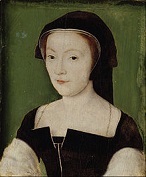
On Nov. 24, 1542 after a 15K-18K-man Scottish army under Robert Maxwell, 4th Lord Maxwell (1493-1546) (one of the ambassadors sent to France in 1537 to negotiate the marriage of James V to Mary of Guise) attempts to invade England, it is routed at the Battle of Solway Moss by a 3K-man English force led by Sir Thomas Wharton, 1st Baron Wharton (1495-1568) after James V unexpectedly places his favorite Sir Oliver Sinclair de Pitcairnis (St. Clair) (-1576) of Roslin (grandson of the Oliver Sinclair who completed Rosslyn Chapel in the 1480s) in charge of the Scottish army, who don't respect him and abandon the field, after which he is caught between a bog and a river, giving up after only a few are killed, Sinclair being captured along with 1.2K POWs, incl. Lord Maxwell and his eldest son Robert, who are kept as insurance for many years, the English rumoring that he preferred to be captured rather than face mean 30-y.-o. James V (b. 1511), who remains behind in Lochmaben, then hides in Falkland Palace in Fife, where he contracts a fever, then "turns his face to the wall and dies" (another untimely Stewart death) on Dec. 14 (same place where David Stewart was starved to death in 1402, then remodeled in the French style by James V), six days after the disappointing Dec. 8 birth in Linlithgow Palace (overlooking Loch Lothian) of Mary Stuart (Stewart), Queen of Scots (1542-87) to his French-born wife Mary of Guise (1515-60), who had borne sons James in 1540 and Arthur in 1541 only to see them both die in 1541, exactly like James IV's first two sons of the same names; on Dec. 14 Mary Stuart is declared queen, with James Hamilton, 2nd earl of Arran appointed gov. (regent); John Knox later claims that on his deathbed James V hears of the birth, then says, "It cam wi' a lass and it'l gang wi' a lass"; Sir Walter Scott later claims he used to visit his subjects incognito as "the guidman of Ballengreich".

In 1542 lord high adm. (since 1540) John Russell, 1st Earl of Bedford (1485-1555), ancestor of philosopher Bertrand Russell is made lord privy seal of England (not created earl until 1550).
In 1542 the English Parliament makes witchcraft a capital crime; the law carries over to English colonies - gotta fight that Devil Inside wherever we go?
In 1542 Buckingham College in Cambridge, England (founded 1428) is refounded as Magdalene College (pr. MOD-lin) by chancellor Sir Thomas Audley; not to be confused with Magdalen College in Oxford, founded in 1448.
In 152 Henry VIII's gardener brings the apricot from Italy to England.

In 1544 the English under Edward Seymour, Duke of Somerset (1506-52) (brother of Jane Seymour) invade Scotland and burn Edinburgh as part of the rough wooing.
On July 19, 1545 Henry VIII travels to Portsmouth and watches from shore as his fleet fights a French fleet of 230 ships; too bad, Henry's favorite ship, the carrack-style Mary Rose (launched July 1511) is sunk in the Solent Straits N of the Isle of Wright, along with vice-adm. Sir George Carew (b. 1504); it is rediscovered in 1971 in the Solent Channel near Portsmouth, and salvaged on Oct. 11, 1982 using airbags, then put in a museum; it sunk because the numerous gun ports were too low and took on water when it tried to turn; the lessons learned cause English ships to be equipped with massive cannonpower, giving them the advantage against the 1588 battle against the Spanish Armada?



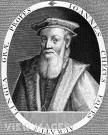
The Seymours see more ups and downs than a roller coaster, but how 'bout them Howards? On Jan. 28, 1547 bloated bloody tyrant (since Apr. 22, 1509) Henry VIII (b. 1491) of England (who saw it all, Columbus, Copernicus, Luther, etc.) dies in London (of syphilis?), with archbishop Thomas Cranmer at his side, after 72K are executed during his reign, incl. by burning at the stake, boiling alive, hanging and decapitation, leaving some memorable poetry (although no legitimate grandchildren, not that he didn't try?), and is succeeded by his sickly 9-y.-o. son (by Jane Seymour) (was it aged spermatozoa?) Edward VI (1537-53) (Britain's 41st monarch) (until July 6, 1553), with his uncle Edward Seymour, 1st Duke of Somerset (1506-52) appointed lord protector of the realm (until 1549) by the royal council and created 1st duke of Somerset on Feb. 15; Henry's will names Thomas Cranmer as one of the regents; Catherine Parr survives him by less than two years, and Anne of Cleves by 10; "King Henry VII, to six wives he was wedded, one died, one survived, two divorced, two beheaded" (CAJACC); Henry Howard, 1st earl of Surrey is executed for treason, and his father Thomas Howard, duke of Norfolk signs a confession of complicity and is scheduled for execution in Norfolk, but his neck is saved by the death of the king, causing him to be imprisoned in the Tower of London; Sir Richard Rich (1496-1560) becomes executor of Henry VIII's will, and next Feb. 26 is created baron Rich of Leez, then in Mar. becomes lord chancellor; Greek geek Sir John Cheke (Cheek) (1514-57) becomes Edward's tutor, although after his daddy's personal example nobody can stop him from believing that the king has a divine right to rule and to control the nat. church, writing at age 12 (1549) that the pope is the "true son of the devil, a bad man, and the Antichrist", and seeking to establish Protestantism.
On Sept. 10, 1547 ("Black Saturday") Edward Seymour, 1st Duke of Somerset (1500-52) continues with the "rough wooing" by leading 17K English troops (incl. German and Spanish mercenaries) on 30 warships into Scotland and winning the Battle of Pinkie Cleugh near Musselburgh (double entendre?), becoming the first modern battle fought in the British Isles and the last to be fought between the Scottish and the English royal armies (also first time the English use naval artillery in a land battle in Britain), killing 5K of 23K-36K Scottish troops and taking 1.5K POWs, vs. only 500 English KIA; the day before stupid Scot leader the Earl of Home took his 1.5K horsemen into battle at Fawside (Fa'side) (Faside) Castle, losing most of his cavalry, after which it is burned down, killing all inside; Edward Seymour's men then lay waste to SE Scotland, causing crowds of fugitives to flee to Dalkeith, while being cut down by the stankin' English on the way, making Edward a bigger man than ever; Mary Stewart is secretly moved to remote Inchmahome Priory; a large timber-earthwork fort is built on the site of ruined Roxburgh Castle on the Scottish border; meanwhile Edward's brother lord high adm. Thomas Seymour, 1st Baron Seymour of Sudeley (1508-49) wastes no time movin' on up, marrying dowager queen Catherine Parr; the French offer to help too late, causing grumbling, and then Francis, 2nd duke of Guise, Mary Stuart's uncle, who dominates the king makes him demand her marriage to the infant dauphin Francis as a condition; meanwhile Thomas Seymour romps in the garden with their guest (Catherine's stepdaughter) princess (future queen) Elizabeth, cutting her gown into 100 pieces in the garden while Parr holds her, and later visiting her bedroom.
On Oct. 5, 1549 Edward Seymour, Protector Somerset issues a proclamation calling for a gen. callup of troops to gather at Hampton Court Palace for the defense of the realm incl. his nephew Edward VI; on Oct. 6 Seymour takes the king to Windsor Castle, pissing-off the Lords of the Council, who get him ordered from the king's presence on Oct. 10, and arrested on Oct. 11 for "ambition, vainglory, entering into rash wars in mine yough, negligent looking on Newhaven, enriching himself of my treasure, following his own opinion, and doing all hby his own authority, etc."; on Oct. 13 his protectorate is dissolve, and on Oct. 14 he is taken to the Tower of London, where he confesses to the charges against him; on Feb. 6, 1550 he is released from the Tower, and pardoned on Feb. 8, and restored as a gentleman of Edward VI's privy chamber.
On Jan. 22, 1552 Edward Seymour, 1st duke of Somerset (b. 1506) is beheaded on Tower Hill for treason and his properties confiscated, leaving his son Edward Seymour, 1st earl of Hertford (b. 1539) up the creek until he regains his title and lands in 1559, only to get in his own trouble by marrying bad vibes Lady Catherine Grey; John Dudley abolishes his old office (1547-9) of lord protector.
On June 17, 1552 King Edward VI College in Stourbridge, Worcestershire, England is founded by King Edward VI; in Sept. 1976 it becomes a selective six form college for students age 16-19 with enrollment of 1.6K.
In 1552 the Book of Common Prayer of Edward VI is revised by Canterbury Archbishop Thomas Cranmer to suit Protestants, complete with no real presence of the Eucharist, although the Black Rubric permits kneeling; no vestments, no signing of the cross at confirmation, no holy oil, no reserved sacraments, no prayers for the departed; Cranmer also writes the Forty-Two Articles of Faith (later reduced to 39) for the Church of England, representing the zenith of Calvinist thought; too bad, after Edward VI dies next year, Mary I makes sure they are never put into action - take out the stuff about adultery?
In 1552 Christ's Hospital (AKA the Bluecoat School, Housey, and CH) is founded in London by Edward VI as a coed boarding school.


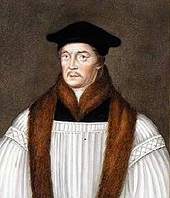


Nausea, heartburn, indigestion, upset stomach, diarrhea, Bloody Mary is maximum pink? Or, hit it, Mrs. Church? On May 25, 1553 as part of a Protestant plot by John Dudley, duke of Northumberland, 15-y.-o. Lady Jane Grey (1537-54) (cousin of Edward VI, great-niece of Henry VIII, and great-granddaughter of Henry VII) (who knows Latin, Greek, and Hebrew) marries his son Guilford (Guildford) Dudley (1536-54), brother of horsemaster Robert Dudley, earl of Leicester; on July 6 after the king's council signs the handwritten King's Device, English king (since 1547) Edward VI (b. 1537) dies of TB; in it he passes over his half-sisters Mary Tudor and Elizabeth for Protestant Lady Jane Grey (1537-54) ("the 9-day queen") (sometimes called the 13-day queen when July 6 is counted), and after Thomas Cranmer forgives his pledge to carry out Henry VIII's will giving it to Mary Tudor, she is proclaimed queen on July 10 in the Tower, and struts her royal stuff until July 19 (never leaving the Tower), with Edward's Greek tutor Sir John Cheke as secy. of state; John Dudley tries to capture Mary in Norfolk and is instead captured in July; meanwhile Mary gathers her forces in East Anglia, and on July 19 after being accompanied by a large force to London along with future Elizabeth I, militant Roman Catholic Mary I Tudor (1516-58), duchess of Suffolk (granddaughter of Ferdinand II and Isabella I the Catholics), later known as Bloody Mary is proclaimed queen (the 42nd British monarch) (until Nov. 17, 1558); the military show of support causes Lady Jane Grey's supporters to fold, and she and her husband are arrested on July 20; Mary I is crowned on Oct. 30 in Winchester Cathedral, immediately signaling a return to Roman Catholicism, and signing a marriage treaty with her cousin Philip II of Spain, promising him the title of King of England without the powers or the succession, triggering Wyatt's Rebellion, with a Protestant army headed by Sir Thomas Wyatt the Younger (1521-54) (son of poet Sir Thomas Wyatt, father of the English sonnet), which heads for London, where they are defeated and the leaders executed by next year, with Elizabeth locked up for almost a year, escaping being implicated in the plot by a hair; too bad, Lady Jane Grey (who has been spared so far and kept in the Tower) is implicated, so her head is on the chopping block with theirs; meanwhile Stephen Gardiner (1483-1555), bishop of Winchester becomes lord chancellor, and soon heads begin to roll; John Knox flees to Geneva to be with John Calvin; St. Paul's chaplain Edmund Grindal flees to Germany (until 1559); Sir John Cheke is imprisoned; Miles Coverdale is removed as bishop of Exeter and imprisoned for two years, then goes into exile for eight years in the Continent (Wesel, Bergzabern, Geneva) (until 1559); after returning to England from exile after the death of Henry VIII in 1547 and being received by Edward VI, who restores his lands, Gerald FitzGerald (1525-85) is restored as 11th Earl of Kildare for his help in suppressing the rebellion, and returns to Ireland, becoming known as "the Wizard Earl" for his interest in alchemy and magic; Thomas Cranmer is reprimanded and confined to his palace at Lambeth, and arrested on Sept. 14 then imprisoned in the Tower of London; Edmund Bonner is released, and goes completely Catholic, becoming known as "Bloody Bonner" for his zealous persecution of Protestants; Thomas Howard, 3rd duke of Norfolk is released from the Tower, and his lands and titles restored, keeping the resilient Howard name going, with his grandson Thomas Howard, 4th Duke of Norfolk (1536-72), son of his dead son Henry Howard inheriting the dukedom on his death next year; on Aug. 23 John Dudley is beheaded after feigning conversion to Roman Catholicism; his son Robert Dudley (b. 1533) (who became an MP this year) supports his father, and ends up in the Tower under sentence of death at the same time that Elizabeth is imprisoned there, sparking rumors that they begin a romance, despite him being married?
On Oct. 5, 1553 the First Parliament of Bloody Mary I meets, repealing Edward VI's Treason Act along with his religious legislation, passing an act declaring the legitimacy of Mary I, and reinstating the Latin Mass, celibacy of the clergy, and ritual worship, wiping out Edward VI's entire work.
In Mar. 1554 after being condemned to death for treason by a secular court but the sentence not carried out, then held for trial for heresy after Parliament reestablishes papal jurisdiction, Thomas Cranmer is moved to a common prison in Oxford, where he is coerced into making seven recantations of his earlier beliefs, proclaiming faith in the articles of the Roman Catholic Church and repudiating his writings, which doesn't save him from being deposed from his archbishopric and excommunicated, and condemned by a secular court to burning at the stake; meanwhile the revolt against Mary peaks and fails, and several nobles are executed.


In 1557 Richard Tottel (-1594) pub. Songs and Sonnets written by the Ryght Honorable Lorde Henry Howard late Earle of Surrey, and Other (Tottel's Miscellany), the first anthology of English poetry, and the first pub. of the poetry of Sir Thomas Wyatt (1503-42) and Henry Howard, Earl of Surrey (1517-47), introducing the English 14-line sonnet (based on Italian models); Wyatt uses the Italian or Petrarchan sonnet form (abba, abba, cdc, dee), while Howard invents the English or Shakespearean form of three quatrains (abab, cdcd, efef) and a couplet (gg); later Sir Edmund Spencer invents his own form (abab, bcbc, cdcd, ee).

One of the biggest turning points in history: The Red Queen is followed by a White Queen? On Nov. 17, 1558 (7:00 a.m.) after learning of the loss of Calais, English queen (since July 1553) Bloody Mary I Tudor (b. 1516) dies childless (she had a tumor not a child) (but just in case she's got a bun in the 42-y.-o. oven she leaves her child the throne in her will?), and after holding out until 10 days before her death to name her as heir, is succeeded by her witch-lucky Protestant half-sister Elizabeth I (1533-1603) (until Mar. 24, 1603) (last Tudor monarch); English Roman Catholics forever consider her to be an illegitimate bastard, while English Protestants forever consider her to be their Virgin Mother, saving them from becoming toast; she becomes the 3rd child of Henry VIII who considers it their right to dictate the religion of the nat. church; she promptly swings it back to Protestant, but calls it the "Middle Path" of Protestant doctrines and Roman Catholic ceremonies, robes, and trappings to please the crowd (a Catholic Protestantism?); at her coronation a ring is placed on the 4th finger of her right hand to symbolize her mystical marriage with her people; the exhilarating golden Elizabethan Age (Era) is launched (ends 1603), marked by nat. cultural renaissance, internat. expansion, and naval triumph; her minister Sir William Cecil soon manipulates her to get extreme Protestantism back with a vengeance; after defending his Roman Catholic beliefs, cardinal (since Aug. 7, 1587) William Allen (1532-94) is forced into exile, founding a seminary in the Spanish Netherlands to provide priests for the English; on Nov. 17 (7:00 p.m.) Cardinal Reginald Pole (b. 1500), archbishop of Canterbury since 1556 dies in London - Anglicanism = Roman Catholic Protestantism? The original L.A. woman? On Jan. 15, 1559 to large cheering crowds "Virgin Queen" Elizabeth I (1533-1603) is crowned queen of England in Westminster Abbey (until Mar. 24, 1603) (the 43rd British monarch), the last of the Tudor Dynasty, immediately reverting to Protestantism; at the coronation a ring is placed on the 4th finger of her left (right?) hand to symbolize her mystical marriage with her people; her childhood friend Sir Robert Dudley (1533-88) becomes master of the horse (the original Italian Stallion?), riding immediately behind her in procession, and becomes her favorite, causing marriage rumors to spread; on Jan. 15 Henry II of France publicly declares her a bastard unfit to be queen of England, and proclaims his daughter-in-law Mary Stuart (the French spelling of Stewart), Queen of Scots (great-niece of Henry VIII) as the true queen; Miles Coverdale returns to England; the exhilarating Elizabethan Age (Era) is launched (ends 1603), marked by nat. cultural renaissance, internat. expansion, and naval triumph; her minister Sir William Cecil soon manipulates her to get extreme Protestantism back with a vengeance. In Jan. Elizabeth I's First Parliament (with a Protestant majority) meets, and on Feb. 9 it debates a Commons bill to restore royal supremacy over the Church of England, but throws it out, and on Mar. 18 an amended bill calling the queen the Supreme Governor (instead of Supreme Head, which St. Paul says no woman is "suffered" to be in 1 Tim. 2:12) passes the Commons, causing grumbling among clergy and laity that leads to the Elizabethan Puritan Movement, which starts out underground and begins agitating in Parliament, becoming a serious threat to the state. On Feb. 15 Pope Paul IV issues the bull Cum ex Apostolatus Officio ("By virtue of the apostolic office"), proclaiming that only Roman Catholics can be elected pope, and that all rulers who maintain heretical doctrines may be deposed by the faithful - a clear signal to English Catholics?
10-10-1562, Queen Liz Is Almost Through? On Oct. 10, 1562 English queen (since Nov. 17, 1558) Elizabeth I (1533-1603) falls sick with the smallpox at Hampton Court, and remains bedridden for six days, going into a coma for 24 hours on Oct. 16 and having a close brush with death which scares her subjects into a realization that there is no clear Protestant successor; on Oct. 17 physician Dr. Burcot (at the point of a dagger?) tries an old Arab cure recommended by English medieval physician John of Gaddesden, giving her a potion, wrapping her in red flannel and laying her on a pallet beside a fire, causing her to regain consciousness in two hours; on Oct. 17 she orders the councillors to appoint Robert Dudley as lord protector of England, with a salary of £20K a year, plus a £500 a year pension to his valet Tamworth, causing whispers that she is buying his silence for guarding them both when they are alone, causing her to protest that "although she loved... Lord Robert dearly, as God was her witness, nothing unseemly had ever passed between them"; she returns to her duties on Oct. 25, and only shows pox marks on her hands, although she goes bald and begins wearing wigs, starting a fashion vogue in Europe which lasts for cents.; meanwhile she gets into that lead and antimony-based white paint stuff for her face (to cover the officially nonexistent pox marks?), creating "the Mask of Youth", and probably neuters herself, how convenient for the Virgin Queen AKA the 16th cent. Madonna Like A Virgin; too bad, she starts a trend for women to covet pale skin, causing them to bleed themselves; meanwhile her councilors never intended to appoint Dudley?; Robert Dudley's sister Mary Dudley (mother of newborn brain babe Mary Dudley Sidney, a future candidate for the real Shakespeare) nurses Elizabeth I through the smallpox and gets it herself, becoming severely disfigured.

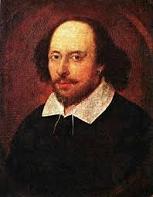
On Apr. 23, 1564 (May 3 Gregorian) (Sun.) (St. George's Day) English Elizabethan/Jacobean #1 poet-playwright ("the Bard of Avon") William "Will" Shakespeare (1564-1616) (anagram for "We all make his praise", "I am a weakish speller") [Taurus] was born in a tall jar, er, a half-timber Tudor house in Stratford-upon-Avon (Stratford-on-Avon) 100 mi. N of London in Warwickshire (second w not pronounced); he was baptized on Apr. 26, and we're just guessing that he was born on Apr. 23. He was the eldest of six children (3rd eldest of eight, of whom the first two died before him) incl. Joan (1558), Margaret (1562-3), Gilbert (1566-1612), Joan II (1569-1646), Anne (1571-79), Richard (1574-1613), and Edmund (1580-1607); father John Shakespeare (1531-1601) from Snitterfield was a glove maker and leather merchant, and worked for the town council tasting locally-produced beer, and acted as bailiff (sheriff); mother Mary Arden (1537-1608) (married in 1557) was from a wealthy local family; in summer 1564 the plague killed 200+ of his neighbors; Will attended King Edward VI Grammar School, whose teachers came from Oxford U. Will's father was plagued with accusations of illegal moneylending and wool dealing by professional informers starting in 1569, and was in financial and legal trouble until 1583, shaping Will's attitude to power and morality as seen in "King Lear" and "Macbeth"?

In 1577-87 English writer Raphael Holinshed (1529-80) et al. pub. Chronicles of England, Scotland, and Ireland (2 vols.), histories of England, Scotland, and Ireland by various writers; it incl. Description of Elizabethan England by William Harrison (1534-93); Holinshed wrote the history of England; it started out as a universal history by his boss, Dutch-born printer Reginald (Reyner) Wolfe (-1573), and this is an abridged vers.; it is used by Elizabethan dramatists incl. Shakespeare.

On Apr. 27, 1584 after English cleric Richard Hakluyt (1552-1616) began writing books inciting the English to begin colonizing North America, Sir Walter Raleigh sends an expedition, which lands in Roanoke Island, Virginia on July 4; too bad, by 1590 the settlers go injun, leaving the word "Croatoan" carved into a post at their fort.






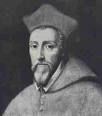
It's getting to be a habit with me? Another big V for Protestantism? The future of the English is so bright they need to wear shades? In Feb. 1588 the Marquis of Santa Cruz dies, and is replaced by Don Juan Alonso Perez de Guzman el Bueno, Duke of Medina-Sidonia (1502-58) as cmdr. of the Invincible Spanish Armada (130 galleon ships carrying 19K-27K men), whose plan is to land in Sandwich-Deal and support an invasion of England through Kent by the Duke of Parma's professional soldiers coming from Flanders (reinforced through the Spanish Road from N Italy), capturing it for the Roman Catholic faith, with exiled English Cardinal William Allen (1522-94) waiting in the wings; it sets sail from Lisbon on May 30, the very day that peace commissioners sent by both sides meet in Parma; after stopping at Corunna for supplies, it sets sail again, then is scattered by a storm from the Bay of Biscay; in early July it leaves La Coruna; on July 19 it is sighted off the The Lizard (Peninsula) by the 197-ship English navy (34 royal warships, 163 armed merchant vessels); on July 21 there is a skirmish off Eddystone, Plymouth, and another on July 23 off Portland, Dorset; on July 27 the Armada anchors off Gravelines between France and Spanish Netherlands to await for communications from Parma's army, the stench from its filthy galleys rowed by slaves chained to their benches carrying for miles on the wind; on Aug. 7-8 (July 28-29 Old Style) (Sun.-Mon.) English "hell-burners" (fire ships) are sent into the 130-ship (22 galleon and 108 armed merchant vessels) Spanish Armada (known for its powerful crescent formation) at the Battle of Gravelines, causing it to break ranks, after which it is defeated by the English guns at close quarters, losing five ships, with the rest badly damaged, and 600 KIA, 800 wounded, and 397 POWs taken; it then makes for Scotland without Parma's army, where it is broken up by a great "Protestant wind" off the coast on July 30, then forced onto the N and W Irish coasts, where 24+ ships are wrecked; the Spanish warship La Girona fires a broadside at the Chimney Tops in the Giant's Causeway on the N coast of Ireland (60 mi. NW of Belfast) after believing them to be an enemy fortress, ending up wrecked on Oct. 26, losing all but nine of 1.3K aboard; on Aug. 19 (Aug. 9 Old Style) glammed and glowing queen (since Nov. 17, 1558) Elizabeth I (1533-1603) rides down to Ft. Tilbury in Essex to cheer up the troops and see the Armada, and rides out with a 6-man bodyguard, giving her big Tilbury Speech while mounted on a grey gelding and dressed in white with a silver cuirass (metal breastplate), with the immortal soundbyte: "I have the body but of a weak and feeble woman, but I have the heart and stomach of a king"; after waiting two more days for a possible invasion by Parma's army from Dunkirk, the English troops disperse and party hearty; meanwhile the remaining 53 intact Spanish ships, having lost two-thirds of their men (15K-20K of the 11K sailors and 19K soldiers) straggle back to Spain by Oct. 14; the English lose eight ships, 50-100 killed, and 400 wounded, although 6K-8K later die of disease; Drake's co-admirals Martin Frobisher and John Hawkins are knighted for their role in the big British V; Elizabeth I hands out medals with the inscription "God breathed and they were scattered"; on Sept. 29 Spanish warship San Esteban is wrecked on the W coast of Ireland, with all survivors killed or taken POW and hanged after reaching shore; 10K English troops were equipped with firearms as an experiment, while the Spanish relied on archers, and the English success convinces military experts to give up on archery; the Armada Portrait of Elizabeth I, by an unknown artist shows her resting her hand on a globe over America; English Roman Catholic Charles Neville, 6th Earl of Westmorland (1542-1601), who commanded a 700-man army of English fugitives from Flanders flees to the Continent, and is attainted by Parliament, living on a small pension from the Spanish king until he dies broke on Nov. 16, 1601; after getting separated from the fleet in July and forced to battle some of England's most powerful ships until putting into port in Ireland, Spanish 2nd in command Adm. Don Juan Martinez de Recalde (1540-88) returns to A Coruna, dying of his wounds on Oct. 23 a few days after docking; British sea supremacy begins, along with increasing nationalism in England, helping secure Protestantism as England's state religion, and being white and not olive-skinned or some other shade of red, brown or black as the metareligion; Spain's officer class is wiped out, the Duke of Medina-Sidonia never recovers from the humiliation, the Duke of Parma's rep. remains under a cloud, but the Spanish keep hoping for a miracle from God to defeat the infidels, sending four more armadas until 1601; the Dutch are greatly helped in their battle for independence from the Spanish, going on to clear them from the territories of the Seven United Provinces by the end of the cent.
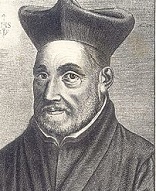
In 1593 the College of St. Omer is founded by Jesuit Father Robert Persons (Parsons) (1546-1610) in Artois, Spanish Netherlands (France); it is forced to relocate to Bruges in 1762 and Liege in 1773, settling in 1794 in Stonyhurst, England, becoming Stonyhurst College.
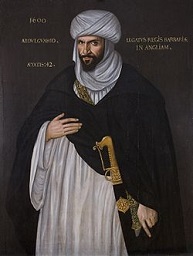
In Aug. 1600 after the English ship The Lion sails there and establishes the English Barbary Co. in 1585 to develop mutual trade, Abd al-Wahid (el-Ouahed) bin Mas'ud (ben Messaoud) bin Homammed (ben Mohammed) Anoun (b. 1558), ambassador of the king of Barbary (modern-day Morocco) arrives in London for a 6-mo. stay with Queen Elizabeth I, becoming the first Muslim and first Moor most people in London had ever seen, commonly described as black rather than swarthy; he meets with the queen on Aug. 19 and Sept. 10, seeking English help to invade Spain, and negotiations following through after she asks for an advance payment of 100K pounds; his portrait is painted while in England, ending up at the Shakespeare Inst. in Stratford-upon-Avon; three years later Shakespeare writes his famous play "Othello" about him?



On Feb. 7, 1601 after Elizabeth's fallen favorite Robert Devereux, 2nd Earl of Essex (1565-1601) was placed under arrest for messing up a 1599 campaign against the Irish, Shakespeare and the Lord Chamberlain's Men were paid by Essex's Welsh friend Sir Gelly (Gelli) Meyrick (1556-1601) to stage a production of Richard II with its banned abdication scene at the Globe Theatre in Southwark in order to rouse the London pop.; on Feb. 8 the half-baked tragicomical (Earl of) Essex Rebellion against old fart Elizabeth I (whom he claims he just wants to protect, assuming the title of Lord Protector after putting her under house arrest for her own good?) failed after the pop. doesn't go for it, and Lord Adm. Charles Howard et al. suppress the rebels; on Feb. 25 Essex was beheaded after "he acknowledged, with thankfulness to God, that he was justly spewed out of the realm"; Sir Walter Raleigh, who took part in suppressing the rebellion presided over the execution as capt. of the guard; four others were executed, 49 imprisoned or fined, and Lady Rich and 30 others set free; the popular songs Essex's Last Good Night and Sweet England's Pride Is Gone, Well-a-day, Well-a-day are born; on Feb. 12 Capt. Thomas Lee (1551-1601) was arrested in the palace kitchen on the way to the chamber where the queen sups, planning to force her at knifepoint to release Essex; he was tried at Newgate on Feb. 14 and hanged at Tyburn on Feb. 15 by Thomas Derrick, who invented a spar with a topping lift and pulleys for hanging, causing the word "derrick" to be coined; on Feb. 19 Shakespeare's handsome bi blue-eyed patron Henry Wriothesley, 3rd Earl of Southampton (1573-1624) was tried along with Essex for treason and condemned to death, but eventually released by James I.


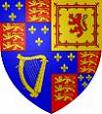
On Mar. 24, 1603 (Thur.) (before 3 a.m.) English queen (since Nov. 17, 1558) "Gloriana", "the Virgin Queen" Elizabeth I (b. 1533), stricken with grief over the execution of Essex and/or her close friend the countess of Nottingham dies peacefully in bed at Richmond after a bunch of woo woo woo stuff and giving her soul to Jesus, lying on her back with her face to the wall "mildly like a lamb, easily, like a ripe apple from a tree, as the most resplendent sun setteth at last in a western cloud" (her chaplain Dr. Parry); she dies after viewing William Shakespeare's Hamlet, which debuted earlier in the year; at her death there is not a single known English colonist in the New World (except possibly the lost colonists of Roanoke, who went injun); she leaves after 45 years on the throne (118 total for the Tudors), causing Scottish king (since 1567) James VI, only son of Elizabeth I's murdered rival Mary Stuart, Queen of Scots to be proclaimed king; after Sir Robert Carey, 1st Earl of Monmouth (1560-1639) (the man who broke the Border Reivers) makes a record-breaking ride N, he reaches Holyrood on the evening of Mar. 26 to carry the news to him, and after hastily preparing a magnificent progress (sparing no expense), and attending a service in the Church of St. Giles where he tells the sad crowd that he isn't abandoning them but will return every three years (actually he only returns for a short time in 1617), on Apr. 5 James VI leaves Holyrood with cannons blazing accompanied by a merrymaking procession, heads to Lord Hume's house in Dunglass, crosses the border to Berwick, putting on a great show as he is greated by crowds in every village and hamlet along the way, then arriving in London on May 7 to a great warm reception a few days after a plague arrives, being presented with the Millenary Petition signed by 1K Puritan ministers asking for the reform of abuses and elimination of all Roman Catholic ceremony from the Anglican Church, incl. the signing of the cross during baptism, confirmation, administration of baptism by lay persons, bowing at the name of Jesus, use of the surplice and cap, use of the pagan ring (Saturn?) in marriage, and the practice of giving men multiple paid ecclesiastical positions; on July 25 he is crowned James I (1566-1625) of (at his insistence) "Greater Britain" (until Mar. 27, 1625) (the 44th British monarch), causing the Union of the Crowns, ending the Tudor Dynasty, and beginning the Stuart Dynasty (ends 1714); Scotland has now had 63 kings and one queen (Mary Stuart, Queen of Scots) in an unbroken line, all being titled king or queen of Scots, not Scotland; Liz leaves him a £400K debt, having sold off many of her lands to avoid increasing taxes; a lifelong believer in the Divine Right of Kings who wants to be known as "Rex Pacificus" (peacemaker king), he seeks to end the Roman Catholic-Protestant feud along with all wars with Spain and France, and effect a "stealth union" of England and Scotland, saying that the lack of a visible natural border proves that God intended it, then fills his inner circle with Scots while granting an amnesty in Ireland, going on to rule Scotland with "government by pen", sending written orders to his privy councillors in Edinburgh (setting up the first mail service between London and Edinburgh) while making his Scottish nobles visit him by traveling the Great North Road (after too many visits piss-off the English, he limits the visits by issuing passports); in 1606 the Union Jack (Lat. "Jack" = James) (originally just called the British flag) is designed, consisting of a red English cross on a blue-white Scottish background, bringing the British lion and the Scottish unicorn together (which is considered a bad omen as the two beasts are supposed to be mortal enemies, and the unicorn is untameable except by a virgin, and he's no Virgin Queen); Scots believe that he's just turning Scotland into a 2nd class appendage of England, something they fought for cents. to avoid, and begin grumbling about being run from distant London, while James I surrounds himself with Scots on the make, causing upper class English on the make to grumble; the Jacobean Age (Era) begins (ends 1625); James I orders Fotheringhay Castle (where his mommy was beheaded) demolished, and in 1612 moves her remains from Peterborough Castle to Westminster Abbey, where she is reinterred in a far more splendid tomb than her cousin Elizabeth I, with the two queens, who never laid eyes on each other, so situated that they cannot see each other even in death; James' Lutheran-raised wife Anne of Denmark (1574-1619), who converted to Roman Catholicism in the 1590s causes embarrassment at the coronation by refusing Anglican communion; after being temporarily parted for the Union of the Crowns he tells her, "I ever preferred you to all my bairns [rugrats]"; now that he's king of a real country, he begins elevating local Scottish lairds to the peerage to control the pesky nobles he doesn't trust, devaluing all Scottish titles; thinking the Gaelic segment of his pop. to be backward savages, in 1609 he gets the Statutes of Iona passed, forcing the Highland chiefs to send their heirs to Lowland Scotland to get an English Protestant education, and puts out a hit on the MacGregor clan, ordering them outlawed by "fire and sword", hunted and executed like animals (luckily, some survive after being harbored by Highland sympathizers); having decided to call the amalgamated kingdom Greater Britain, he renames the Scottish borders "Middle Shires" and pacifies them by exiling captured rebels to Ireland, pissing-off the Irish; he never pacifies the Highlands, which remain pesky for the next two cents.; he attempts to anglicize the Scottish elite, causing poet William Drummond to switch from writing in Scots to English, the ascendancy of English dramatists being a powerful convincer?; shortly before his coronation Lord Henry Howard and Robert Cecil, 1st Earl of Salisbury warn the king about the Diabolical Triplicity of Henry Percy, 9th Earl of Northumberland (1564-1632) (an apparent Protestant, despite the Percy family's Roman Catholic roots, known as Wizard Percy for his great wealth and scientific learning), Sir Walter Raleigh (1554-1618), and Henry Brooke, 11th Baron Cobham (1564-1618), suggesting that they dabble in the occult and that Percy plans to marry pesky Arbella Stuart, which doesn't stop Percy from being appointed to the Privy Council, until the 1605 Gunpowder Plot causes him to be accused of complicity with his Roman Catholic relative Thomas Percy and imprisoned in the Tower of London for 17 years. On Oct. 24, 1603 James I is proclaimed king of Great Britain, Scotland, and Ireland.
On May 19, 1603 James I "licences and authorizes" Elizabeth I's Lord Chamberlain's Men, who are renamed the King's Men, and perform at the English royal court more than any other company, giving almost 200 performances in the next 10 years, modulo a little self-censorship to avoid boring or shocking kingey.




On July 19, 1603 after the Main Plot (dethronement of James I and replacement by cousin Arbella Stuart) is uncovered, naughty Henry Brooke, 11th Baron Cobham (1564-1618) and Sir Walter Raleigh (1552-1618) are arrested on charges of treason against James I and canned in the Tower, tried under commissioner Henry Howard, 1st earl of Northampton, found guilty and sentenced to death, then reprieved 24 hours before the scheduled execution, spending the next 13 years there (until 1616) (1618 for Cobham), where Raleigh proceeds to research in alchemy and write The History of the World (1614) - that kind of drudgery is for those with no life such as prisoners or failed fiction writers?


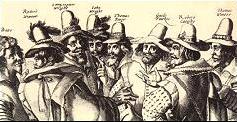
Too many cooks spoils the broth? In May 1604 after English Roman Catholics turn against James I and his Scottish retainers in London for false promises of tolerance, soldier of fortune (who participated in the 1596 capture of Calais by the Spanish) Guy Fawkes (1570-1606) meets with Robert Catesby (1573-1605) (the orginator) and Thomas Percy (1558-1605) (ancestor of Barbara Bush nee Percy?) at the Duck and Drake Inn in the fashionable S trand district of London to hatch a most explosive Roman Catholic plot to blow up Parliament during James I's state opening of it on Nov. 5, 1605 using 2.5 tons of gunpowder and a cool white mask, then assassinate James I and put his daughter Elizabeth Stuart (1596-1662) (later Queen Elizbeth of Bohemia) on the English and Scottish thrones as a Roman Catholic monarch after kidnapping her from Coombe Abbey in Warwickshire; other conspirators incl. Catesby's cousin Robert Wintour (1565-1606) and his brother Thomas Wintour (1572-1606), Thomas Bates (1570-1606), John Wright (1568-1605) and his brother Christopher Wright (1570-1605), Robert Keyes (1565-1606), Francis Tresham (1567-1605), John Grant (1570-1606) (lord of the manor of Norbrook near Stratford-upon-Avon), Ambrose Rokewood (1578-1606); meanwhile (as a cover story?), Pope Clement VIII officially requests that English Catholics refrain from rebellion.
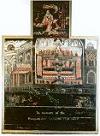
On Oct. 26, 1605 Gunpowder Plotter Francis Tresham blows the whistle on it after worrying about his brother-in-law (husband of his sister Elizabeth) William Parker, Lord Mounteagle (Monteagle) (1575-1622) being killed; on Nov. 4 (Tues. Old Style) (Fri. New Style) at 11 p.m. after James I is tipped-off about a plot to blow up Parliament and destroy the nobility and royal family in a 9/11 on 11/5/5, masked soldier of fortune Guy Fawkes is arrested as he leaves a rented cellar beneath the House of Lords filled with 36 barrels of gunpowder (which he is supposed to ignite the next day then flee to Flanders), and they find fuses on his person and a lighted lantern below, blowing the Gunpowder Plot sky high; after James I issues the soundbyte "The gentler tortures are to be first used... and so proceed by steps to the worst", he begins singing, and on Nov. 12 Tresham is arrested, and fully confesses, but dies in the Tower of London on Dec. 22, the official cause of death is blockage of the urinary tract (poisoned?); in Nov. Elizabeth Stuart is moved from Warwickshire to Coventry after it is discovered that the conspirators want to seize her person and proclaim her queen; after Fawkes is severely tortured, he gives up the names of his accomplices; on Nov. 8 Robert Catesby and his men are surrounded in Holbeche House in Staffordshire, and Catesby is killed, along with Thomas Percy, John Wright, and Christopher Wright; the rest of the conspirators are executed next year; guess-who (Henry Howard) is commissioner at the trials; Nov. 5 becomes Guy Fawkes Day in England, where he is burned in effigy amid bonfires and fireworks (starting in 1660); the whole incident forever sours the English public against Roman Catholics, whom they suspect of being a fifth column for the pope.

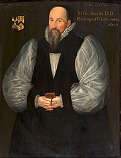

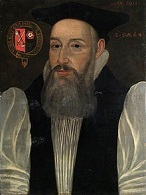
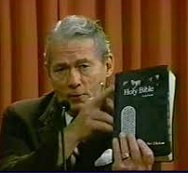
In 1611 C.E. English King (1603-25) James I (1566-1625) (ed.) pub. the King James (Authorized) Version of the Holy Bible (66 books), commissioned in 1604 (lucky that the 1605 Guy Fawkes Plot to replace the govt. with Roman Catholics didn't succeed), with the work divided between 47 translators (47 Anglicans, 0 Puritans, 0 Roman Catholics, 0 Separatists) in six committees with 15 rules to follow, using ancient mss. for reliability, and deliberately preserving ambiguities, e.g. Romans 5:12: "Wherefore, as by one man sin entered into the world, and death by sin; and so death passed upon all men, for that all have sinned" (can mean that all men die because of sin, and/or that all men sin because they are under God's judgment of death); most of the language is William Tyndale's, but without the pesky marginal notes challenging the divine right of kings; James I's planned royal authorization of the final work never happens?; the intent is to make "of many good translations one principal good one", according to translator Miles Smith (1554-1624) in Preface to the Translation; it takes its place beside the Bishops' Bible (official vers. for use in Anglican churches, original ed. 1568, revised ed. 1602) (basic source for the King James Bible?), the Geneva Bible (1575) (known for Calvinist-slanted footnotes dissing the divine right of kings, always translating the word king as tyrant), and the 1582 Rheims trans. of the 5th cent. Roman Catholic Vulgate; too bad, the King James Bible is initially universally panned, and the Puritans continue to use the Geneva Bible, causing Charles I to ban it in 1644, leading to the Puritans taking over the govt. and beheading him in 1649, later realizing the superiority of the KJV; translator Lancelot Andrewes (1555-1626), master of Pembroke College, Cambridge U. is appointed bishop of Winchester in 1619, becoming the mentor of Reformed Roman Catholicism in the post-Reformation Anglican Church, and the translator of the 23rd Psalm; Thomas Bilson (1547-1616), bishop of Winchester oversees the final edit and printing; the notes on the trans. process are stored in Whitehall, and are destroyed in the 1598 Whitehall Fire; in modern times the Ruckmanists (Ruckmanites), founded by Am. Baptist pastor Peter Sturges Ruckman (1921-2016) claim special divine inspiration for the translators, even though they were govt. employees told what to do by the hardly saintly king, and explicitly deny special inspiration; a case of disguised Am. WASP racism?; Psalm 46 features word 46 from the beginning "shake" and word 46 from the end "spear", and of course William Shakespeare (b. 1564) is 46 the first part of this year; a tribute, or did he translate it? - it's a pajama people special?
On Apr. 23, 1616 (his birthday?) well-to-do retired William Shakespeare (b. 1564) died of fever in Stratford-upon-Avon, Warwickshire, leaving 39 plays, 154 sonnets, two long narrative poems et al.; he coined 6.7K (3K?) English words; his vocabulary was 17K-29K words, and he used 7K+ different words only once; Anglican Archdeacon Richard Davies of Lichfield, who had known him later wrote that he had been a secret (illegal) Roman Catholic; his last will and testament leaves the bulk of his estate to his daughter Susanna and her husband, leaving his "second best bed with the furniture [bedclothes]" to his wife; his literary work isn't mention in his will; he was buried in the same place where he had been christened, Holy Trinity Church in Stratford-upon-Avon; his epitaph is "Curst be he that moves my bones", keeping him from being buried in Westminster Abbey?; his grave marker shows him holding a bag of grain, which is changed to a quill in 1747; in 2001 the Journal of Science pub. an analysis of clay pipe fragments dug up from his garden, revealing residues of marijuana, cocaine, and myristic acid; he died from mercury poisoning from treatment for syphilis?


On Mar. 27, 1625 English king (since Mar. 24, 1603) James I (b. 1566) dies of a, er, stroke after 58 years on the Scottish throne and 22 years on the English throne, failing to unite the two kingdoms, and his 2nd (Scottish-born but not understanding the Scots?) son Charles I (1600-49) succeeds him as king of the Three Kingdoms of England, Scotland, and Ireland (the 45th British monarch) (2nd of the House of Stuart) (until Jan. 30, 1649); he is crowned next Feb. 2; on Apr. 3 John Donne gives the first royal sermon of his reign; before dying James I founds the Irish Slave Trade by selling 30K Irish prisoners to English settlers in the West Indies, making it a permanent proclamation; on May 1 Charles I marries 16-y.-o. French Roman Catholic (short like him) Henrietta Maria (Henriette-Marie) (1609-69) by proxy (the Duke of Buckingham), and the same day directs his First Parliament (convenes June 18) to cease the persecution of Roman Catholics, which they refuse, instead demanding subsidies for the war against Spain; on May 7 James' state funeral is held at Westminster Abbey, and his remains are interred in the same vault as Henry VII (his great-great-grandfather), founder of the Tudor Dynasty, with no stone-carved memorial; the First Parliament is adjourned to Oxford because of plague in London; no Rex Pacificus like his daddy, Charles forever schemes to make war, but jams up against his insufficient income and the need to get Parliament to vote money, ending up hiring smart lawyers to find ways to milk his existing incomes; his colorful court soon becomes filled with anti-Reformation Catholics, and his disinterest in Scottish affairs turns off Scotland; meanwhile he gets pussy-whipped by his wife, who is forever plotting with papists and turning the English people against them, even though the marriage doesn't cause France to become an ally?; lucky Buckingham becomes the only man to retain his position from the court of James I; new queen Henrietta Maria goes on to talk her hubby into granting the French title of princess royal to their eldest daughter Mary in 1642 to imitate their title of "madame royale", after which George II does ditto with his eldest daughter Anne in 1727, followed by George III's daughter Charlotte in 1789, Victoria's daughter Victoria in 1841, Edward VII's daughter Louise in 1905, George V's daughter Mary in 1932, and Elizabeth II's daughter Anne in 1987 - walking, dancing, playing volleyball, you're the same woman?
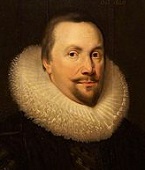
On Nov. 1, 1625 Sir Thomas Coventry, 1st Baron Coventry (1578-1640) is made lord keeper of the seal of England by Charles I (until 1640), the juicy job going on to make him rich.

In June 1642 Edward Hyde, 1st Earl of Clarendon (1609-74) switches to the royalist party, and begins writing political manifestos which win half the nation to the royalist cause, but he fails to win the king over to a moderate course; meanwhile James Graham Montrose turns against James Hamilton for having too much influence in Scotland.


On July 10, 1642 the English Civil War (ends Sept. 3, 1651) begins with the Siege of Hull in East Riding, Yorkshire, with Charles I unsuccessfully trying to capture the royal arsenal (Parliament already has a large arsenal in London), declaring John Hotham a traitor, followed on Aug. 13-Sept. 2 by the Battle of Lostwithiel in Cornwall, which is a royalist V; meanwhile on Aug. 12 Charles I puts out a call, and on Aug. 12 at 6:00 p.m. raises the royal standard at Nottingham Castle, declaring war on his own Parliament, with only 800 horse and 300 foot, and since the castle is in ruins he er, heads for Thurland Hall, owned by the earls of Clare, where his princely German nephews Maurice and Rupert join him, along with his two eldest sons Charles and James; too bad, Notthinghamshire is divided in its loyalties, and after poor results in recruiting he er, heads for Shrewsbury, assembling 6K infantry and 1.5K dragoons; during the war nearly 40% of the 504 members of Parliament leave or are expelled to fight for the king; the parliamentary troops are led by incompetent (suffering from male hormone deficiency?) Robert Devereux, 3rd Earl of Essex (1591-1646) (until 1645); N and W England (incl. Cornwall) are mainly on Charles I's side, and E and S England on Parliament's; like in the old Wars of the Roses, the majority of the country is neutral, and each side has about 13K troops; royalist poet Richard Lovelace (1618-57) presents Parliament with a pro-Charles petition, is imprisoned, released on bail, then serves in the French army until 1648, when he returns to England and is imprisoned again until after Charles I's execution in 1649; Charles I's son Prince Charles, who travels with a retinue of 300 is sent to Wales to gather support for the royalist cause; Roman Catholic French-born Queen Henrietta Maria raises funds for her hubby Charles I in the Netherlands; the Earl of Montrose, who signed the Nat. Covenant in 1638 and fought with the Covenenters until the 1639 Treaty of Berwick, then changed sides twice, finally sides with the royalists permanently; the House of Commons excludes royals, and introduces income and property taxes to fight the war.
The English Civil War breaks ground for Bond, James Bond, Pt. 1? In 1642 Condoms are made of fish and animal intestines in Birmingham for use in the war between Oliver Cromwell and Charles I - that was a lovely shot?

In Mar. 1, 1643 large royalist force from Newark under brainy William Cavendish, 1st Duke of Newcastle-upon-Tyne (1592-1676) invades Lincolnshire and captures Grantham in a surprise attack, then march toward Boston, causing 1.5K Parliamentary troops under Lord Willoughby of Parham to unsuccessfully try to block them on Apr. 11 at the Battle of Ancaster Heath, after which Cavendish makes a surprise attack on Lord Willoughby's troops on May 13 in Breton, killing 70 and taking 40 POWs, until Oliver Cromwell leads a cavalry charge that routs them, becoming his first independent action as a cavalry cmdr.


On Mar. 19, 1643 (Sun.) the Battle of Hopton Heath sees royalist Spencer Compton, 2nd Earl of Northampton (b. 1601) charge too eagerly and get surrounded by parliamentary soldiers under Sir John Gell (1593-1671) and Sir William Brereton (1604-61), who offer him quarter, which he scorns as coming from such base rogues and rebels, after which he is KIA from a blow to his puffed-up head.
On July 23-27, 1643 the Cavaliers led by Prince Rupert and his Devil Poodle take Bristol.
On Aug. 11, 1643 after Charles I and Prince Rupert siege the last Roundhead bastion of Gloucester, a giant egg-shaped mortar brought from France by English poet laureate William Davenant explodes on its first discharge opposite the castle at Gawdy Green (modern-day Brunswick Square), after which Gloucester is relieved in Sept.; in 1797 Samuel Arnold composes the poem Humpty Dumpty, with the lines: "Humpty Dumpty sat on a wall,/ Humpty Dumpty had a great fall,/ Four-score Men and Four-score more,/ Could not make Humpty Dumpty where he was before."

On Aug. 16, 1643 the Parliamentary enemies of Charles I, led by the ailing John Pym (1583-1643) sign the Solemn League and Covenant, which ultimately does Charles I in, as it promises the Scots religious reforms if they aid Parliament, specifically "the preservation of the reformed religion in the Church of Scotland... the reformation of religion in the kingdoms of England and Ireland, in doctrine, worship, disciple, and government, according to the Word of God, and the example of the best reformed churches"; the Westminster Assembly drafts the Westminster Confession of Faith, the first major Presbyterian statement of belief.

In 1643 English Cavalier poet Edmund Waller (1606-87) is expelled from the House of Commons for plotting for the king, and banished for life, but permitted to return in 1652.

In 1643 after he balks at the violence of the Battle of Edgehill and the Battle of Turnham Green, Algernon Percy is replaced by Parliament as lord high admiral (since 1638) by Puritan Robert Rich, 2nd Earl of Warwick (1587-1658) (until 1648).
On Jan. 10, 1645 Anglican archbishop of Canterbury (since 1633) William Laud (b. 1573) is beheaded by order of the Puritan-controlled Parliament under a bill of attainder.


In Feb. 1645 after winning a power struggle with his boss, Episcopalian gen. Edward Montagu, 2nd Earl of Manchester (1602-71), new English MP for Cambridge (until 1649) Oliver Cromwell (1599-1658) begins reorganizing Parliament's armies into the tight Puritan New Model Army, England's first prof. army, with officers selected by merit; Cromwell's Ironsides Regiment (from a nickname given him by the Royalists, alluding to Edmund Ironside) gives his whole army a nickname.
In Feb. 1645 Edward Hyde is knighted and made a member of Charles I's privy council, then appointed chancellor of the exchequer in Mar.
In Mar. 1645 Parliament appoints Algernon Percy, 10th earl of Northumberland as guardian of Charles I's two children Princess Elizabeth and the Duke of Gloucester (York), with talk about him becoming king if negotiations with Charles I fail, causing him to totally back the war party (Independents), although he balks at voting in favor of a bill of attainder against his old backer Archbishop Laud.
On Apr. 3, 1645 after failing to pass the House of Lords on Dec. 9, the Self-Denying Ordinance is passed by the Long Parliament, prohibiting MPs from holding a military command, causing Ferdinando Fairfax to resign as gov. of York, the earl of Essex to resign as CIC of the Parliamentary army, and Sir William Waller to resign his military career; Oliver Cromwell, Sir Thomas Middleton, and Sir William Brereton are exempted from the ordinance; Ferdinando's son Thomas Fairfax, 3rd Lord Fairfax of Cameron (1612-71) becomes CIC of the Parliamentary army, with Oliver Cromwell as his lt. gen., who becomes the real boss; Waller, a Presbyterian, grows bitter and begins flopping to the royalist side.
On May 9, 1645 the royalists under the earl of Montrose and Alasdair MacColla win a V over the Covenanters under Sir John Hurry (Urry) at the Battle of Auldearn, seemingly guaranteeing Scotland for Charles I by the summer. On May 11 a relief column led by Col. Ralph Weldon (1606-76) arrives at Taunton, but they too get trapped, until an Ordinance for a Collection for Relief of Taunton is passed on May 24, after which more troops arrive on June 14, spared from the Battle of Naseby.
On May 31, 1645 after Charles I sends them to divert Parliamentary forces under Gen. Thomas Fairfax (whom Charles I calls "the rebels' new brutish general") from his main base at Oxford, the royalist Cavaliers led by Prince Rupert win the Battle of Leicester, capturing the city; too bad, on June 14 Cromwell's New Model Army intercepts Charles I on his march back to Oxford, and wins a big V at the Battle of Naseby, where eye-on-fashion Charles I wears shining armor and rides a Flemish horse, contrasting with the drab Puritan army, which proceeds to kick his royalist army's butt by 1 p.m., with 1K royalists KIA and 6K taken POW, causing Prince Rupert to tell Charles I that the royalist cause is lost and urge him to conclude a peace with Parliament, causing Charles to flee to Wales; on July 10 the Parliamentarians win another big V at the Battle of Langport, breaking Charles I's military back; the royalists then lose Carlisle, Winchester, and Basingstoke.
New beds, new lobbies, deeper mattresses, crisper sheets, with wifi? The tail wags the dog in Bible paradise England? On Dec. 1, 1648 the Parliamentary army again seizes Charles I, and imprisons him at Carisbrooke Castle on the Isle of Man, where he agrees to abolish the English episcopacy, pleasing the the Independents in Cromwell's party who stand for wide tolerance in religious matters; Cromwell demands an end of allegiance to the king, and Parliament responds with a Declaration on Charles I's Misdeeds; the king offers some concessions to Parliament, which are rejected; on Dec. 6 Parliament's army, commanded by Col. Thomas Pride (-1658) stages Pride's Purge, arresting 45 loyalist MPs and keeping 186 others (mostly Presbyterians) out, expelling 75% of the members (all but the Independents), leaving the Rump (Purged) Parliament of about 90 members (of which only 50-60 regularly attend sessions, sitting on their rumps), representing only the army by this point, which operates sansa checks by the House of Lords and orders Charles I tried for treason.




England gets rid of a royal assahola and gets a non-royal assahola? On Jan. 4, 1649 after sending the House of Lords an ordinance creating a commission to try the king, only to have them reject it, Cromwell's Rump Parliament (House of Commons) declares itself the supreme power in the nation (effectively destroying the monarchy), and sets up the High Court of Justice in Westminster Hall to try Charles I, beginning on Jan. 20, with hatted Charles uttering the soundbyte: "I would know by what power I am called hither. I mean lawful. There are many unlawful authorities in the world. There are robbers and highwaymen"; Puritan reformer lawyer John Cooke (Cook) (1608-60) (known for being against using Latin in the courts, the death penalty except for murder and treason, imprisonment for debt, and the theory that heads of state are not above the law) bravely acts as the prosecutor of his own king, getting him convicted on Jan. 27 after a 7-day lube job of being a "tyrant, traitor, murderer and public enemy to the good people of this nation" after he three times refuses to plead; Algernon Percy leads a group in the House of Lords opposed to trying the king, causing him to be relieved of official duties in May; the treason is for enlisting French support in the English Civil War, and the trial witnesses the first modern legal argument against tyranny, based on the universal right to punish a tyrant?; quarterback Terry, er, Judge John Bradshaw (1602-59) pronounces the death sentence, and the death warrant is signed by 59 of 75 commissioners (judges), who later become known as the Regicides of Charles I (which label becomes very dangerous to their health in 1660); Oliver Cromwell utters the soundbyte that the execution of Charles I "'twas a cruel necessity"; the whole spectacle is fueled by the apocalyptic Fifth Monarchists, led by Puritan soldier Thomas Harrison (1606-60) (son of the mayor of Newcastle-under-Lyme, and cmdr. of the escort bringing kingy to London in Jan.), who believe that Jesus Christ is due to arrive in or around the upcoming big year of 1666 to bring the End Times like it says in the Bible book of Revelation; the king's children Prince Henry and Princess Elizabeth share their father's captivity and witness his last speeches, while his wife Henrietta Maria escaped to France in 1644, followed by his son Prince Charles in 1646, and his son Prince James in 1648, causing the homebody king (wife, kids, dogs, horses) to write to his queen "There was never man so alone as I"; on Jan. 30 (Sat.) (Jan. 20 Old Style) (noon) 5'4" Charles I (b. 1600) (a bitter cold day causing him to wear two shirts so he won't shiver and be accused of quaking with fear) drinks some claret and eats some bread, then is walked out of the first story window of the magnificent Banqueting Hall in Whitehall onto a raised platform so everybody can see, then is beheaded lying down after giving the Last Speech of Charles I, with the soundbyte: "I go from a corruptible to an incorruptible crown, where no disturbance in the world can be", after which a large groan comes up from the crowd; king-killing England and Wales are proclaimed a Commonwealth (Republic), shocking the Euros and the Scots, causing the Scottish parliament to immediately proclaim Prince Charles as Charles II, and he signs the Covenant to please them; Oliver Cromwell has Charles I's head resewn to his body; Gen. Thomas Fairfax resigns as Parliamentary army CIC after calling the trial rigged; Cook's asst. Isaac Dorislaus (b. 1595), who assisted in preparing the high treason charges while on a diplomatic errand to the estates-gen. of Holland is murdered on May 10 in The Hague by royalist refugees.
Millennium Fever generates a new crop of holy commies? In Jan. 1649 Diggers founder Gerrard Winstanley (1609-76) pub. The True Levellers Standard Advanced; the Christian communist Levellers ("all men are created equal") (leveling real property) and Diggers (favorite name of their opponents) peak in England this year; too bad, in Apr. a Digger site on St. George's Hill in Weybridge (near Cobham, Surry) pisses-off the authorities, who sic New Model Army cmdr. Sir Thomas Fairfax on them, but after checking them ut he lets them along, pissing-off the lord of the manor Francis Drake (not the one 50 years earlier), who sends gangs to attack and beat them, then gets them railroaded on Ranter (sexual libertine) charges, after which they give up in Aug. and leave, then set up shop a short distance away in Little Heath, pissing-off the local lord of the manor Parson John Platt, who gets them hounded out next Apr., and by 1651 they are kaput.


In 1654 Puritan sourpuss Oliver Cromwell (1599-1658) bans horseracing in England, while keeping his own private stock of studs, but after he dies Charles II (1630-85) is restored in 1660, and he reinstates the sport, establishing the Newmarket Town Plate in 1665 in Newmarket, Suffolk, which he wins in 1671, becoming the first (only) reigning monarch to ride a winner.

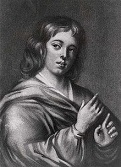
Don't peep, but this decade is being recorded? On Jan. 1, 1660 Samuel Pepys (1633-1703) makes the first entry in his Diary (ends 1669) at the age of 27; he calls English drag actor Edward "Ned" Kynaston (1640-1712) "the loveliest lady tht ever I saw in my life... only her voice not very good"; he writes in a secret code that is not broken until 1821; later it is discovered that he was simply using a shorthand described in Tachygraphy by Thomas Shelton (1601-50) (the real author of "Don Quixote"?), a copy of which resided in his library at Magdalene all along.




The Bible-Thumping Puritan Era of England ends, and the Anglican Restoration Era begins? On Feb. 21, 1660 the Protectorate being kaput, George Monck recalls the Presbyterian members who had been expelled in Pride's Purge of 1648, and the restored Long/Rump Parliament of 1640-9 issues writs for a new free Parliament and votes its own dissolution on Mar. 16; on Apr. 25 the Royalist Convention Parliament (not properly summoned by royal writs) assembles, and immediately invites large and healthy (unlike his daddy) Charles II to occupy the throne; Irish-born British diplomat Sir George Downing (1623-84) keeps his job by sucking up to Charles II, telling him that he gave up "principles sucked in" while living in New England, gaining him a knighthood in May, plus a piece of land adjoining St. James's Park, which he later turns into Downing St.; on May 8 after receiving Charles II's Declaration of Breda, it unanimously declares that Charles II (d. 1685) has been the lawful king of England, Scotland, and Ireland since the execution of his father in Jan. 1649; constitutional govt. and repub. govt. have now both been tried in England and rejected, making England safe for the royals again? On May 19 English diarist Samuel Pepys visits Loodsdiunen, Holland near The Hague to visit Countess Margaret of Henneberg and her 365 children? On May 29 Royal Oak Day (his birthday) Charles II (1630-85) returns to London wearing a tall Louis XIV-style wig picked up in France; on June 18 after appointing former bishop of London (1633-49) William Juxon (1582-1663) as archbishop of Canterbury (who takes office on Sept. 20 until June 4, 1663), he is crowned (restored) in a fancy shindig in Westminster Abbey (until Feb. 6, 1685) (Britain's 46th monarch), making a point of wearing his daddy's coronation duds; on June 19 a Day of Public Thanksgiving on Restoration of Charles is held; Charles II agrees to respect the Magna Charta and Petition of Rights; after his humiliation at the hands of Scottish Covenanters he vows to never set foot there while imposing his will on it, which is to restore the Episcopalian church; since his mommy was a Catholic, he never quite gets over its spell; Richard Cromwell flees abroad (until 1680), while Charles orders his daddy Oliver Cromwell's body exhumed, hanged, and decapitated to get even for what he did to his daddy, and the head stuck on a pole at the end of Westminster Hall, where it remains for at least 24 years; Edward Hyde (1609-74) is created Baron Hyde of Hindon and appointed chancellor of the exchequer, but resigns to become speaker of the House of Lords, then next year is created Viscount Cornbury and 1st Earl of Clarendon, becoming the virtual head of the English govt. during the Restoration (until 1667), seeking to legitimize it with Parliamentary action to make it a reflection of the people's will; Dublin again becomes a stronghold of Roman Catholicism; side-switcher David Leslie is freed from the Tower, and next year created Baron Newark with a pension; double side-switcher George Monck (1608-79) is created 1st duke of Albemarle.
In 1660 the Scots Guards, 3rd regiment of the British Guards Div. (after Grenadiers and Coldstreams, and ahead of Welsh Guards) is formed; they wear buttons in threes, and have no plume.

On Apr. 23, 1661 (St. George's Day) party boy Charles II is crowned king of England, Scotland, and Ireland at Westminster Abbey, and his reign is backdated to the end of his father's; Charles II appoints former Parliamentarian Algernon Percy, 10th Earl of Northumberland, 4th Baron Percy (1602-68) (who was exiled to his estate at Petworth after he tried to prevent Charles I from being tried for treason) as lord high constable of England; known for active gonads, Charles II's mistresses incl. English actress Moll (Mary) Davies, English "Cupid" actress Nell Gwynn (1650-87), Louise Renee (Renée) de Penancoet (Penancoët) de Keroualle (Kéroualle), Duchess of Portsmouth (1649-1734), and Barbara Villiers (Palmer), 1st Duchess of Cleveland (1640-1709); he is pals with syphilitic rogue ("the Libertine") John Wilmot, 2nd Earl of Rochester (1647-80), who marries Elizabeth Malet after kidnapping her in 1665, and trains his lover Elizabeth Barry (1658-1713) to become a top London stage star before falling out with the king and going underground as his face gets eaten away; Barry debuts in 1675 in the Duke's Co.
On May 11, 1661 the marriage treaty of Charles II of England and Catherine of Braganza, daughter of John IV of Portugal gives the Seven Islands of Bombay to England; on Mar. 27, 1668 a Royal Charter leases them to the English East India Co. for £10/year, causing the pop. to zoom from 10K this year to 60K in 1675.


The year 1666 contains all the Roman numerals MDCLXVI) once; also 1444, 1446, 1464, 1466, 1644, 1646, 1664. In 1666 the Millennium Fever (MF) over the Big Year 1666 stirs mass paranoia in Christendom, the smart money being that all those evil scientists and secular pagans (and the antichrist pope and his papist followers, according to Protestants) are going to be consumed in fire just as the unbelievers were consumed in water in the days of Noah; later, when the disappointment sets in, hope springs eternal in the human breast, so anybody born in this year is suspected of being the Devil or the Antichrist, and Armageddon is at least going to happen in his lifetime, so don't give up the faith?; meanwhile never fear, the Scientists are here, as the Annus Mirabilis of English Cambridge U. man Sir Isaac Newton (1642-1727) begins when the plague causes him to be sent home from Cambridge to his home in Woolsthrope, where the world's most famous apple falls from the tree, revolutionizing Science with the stunning realization that the heavens and the Earth are subject to the same universal laws - one little orb falls from the sky, causing their minds to fall from the divine Heavens into the material world of Earth, and like it? I walk this empty street on the boulevard of broken dreams? Don't let a migraine upset you? As a total rebuff to the Millennium Feverists who say the world is not worth studying (since this is its last year), Isaac Newton goes into a glorious brilliant Rain Man funk in Woolsthorpe and discovers the Integral Calculus (not dental rot but the branch of mathematics) and the Newton's Law of Universal Gravitation (inverse square law), measures the Moon's orbit, and, when not otherwise occupied, buys a glass prism "to try therewith the phenomena of the colours", becoming the first to deduce that the prism splits white light into a spectrum as a result of the different refractive index for each color; sitting under a you know what kind of tree, he observes a you know what falling, and calculates that at a distance of 1 ft. the attraction between two objects is 100 times stronger than at 10 ft., making the super mental leap that the force exerted by the Earth on the apple is the same as that exerted by the Earth on the Moon; "And the same year [1666] I began to think of gravity extending to the orb of the Moon, and having found out how to estimate the force with which a globe revolving within a sphere presses the surface of the sphere, from Kepler's Rule... I deduced that the forces which keep the Planets in their Orbs must [be] reciprocally as the squares of their distances from the centers about which they revolve: and thereby compared the force requisite to keep the Moon in her Orb with the force of gravity at the surface of the earth, and found them answer pretty nearly. All this was in the two plague years of 1665 and 1666, for in those days I was in the prime of my age for invention, and minded Mathematicks and Philosophy more than at any time since" - Isaac Newton, memo in the Portsmouth Collection, 1714; the Newton pippin is later named to commemorate the Big Apple of 1666 - the first modern scientist walks the Earth, and he's white, Anglo-Saxon, and Protestant, but actually not so modern, as he's still got one foot in the past and believes in alchemy and bizarre Bible theories, taking a few years out of his all-important studies to figure out math and physics, in the belief that the Universe is a giant code and he can crack it; his success paradoxically strengthens belief in astrology? Newton's funeral was presided over by "A. (Alexander) Pope".

On Sept. 2-5, 1666 (Sept. 12-15 Old Style) (early Sun. morning-Wed.) after rainy summers in 1664 and 1665, followed by a bad drought since Nov., making the wooden bldgs. tinder-dry, the Great Fire of London burns 499 acres and kills only a few people after starting in a bakery in Pudding Lane near London Bridge; "10,000 houses all in one flame"; after London lord mayor Sir Thomas Bloodworth is awakened to ask what to do, he replies "Pish, a serving woman might piss it out", then goes back to sleep; too bad, fierce winds whip the flames through the crowded wooden houses to the warehouses on the Thames wharf, and Mister Channel what are you trying to do, give me a heart attack as well?; Charles II and his brother Duke James of York use gunpowder to blow up a row of houses and create a fire break that saves the 1622 Banqueting Hall (where his daddy lost his head in 1649), but flames consume 80% of the walled city, destroying 13.2K houses in a 436-acre area plus another 63 acres outside the city walls, incl. the Old Baley on the W wall of London (rebuilt 1674); homeless Londoners huddle in fields outside the walls, convinced that the fire has been set either by Dutch terrorists in retaliation for the burning of the Dutch fleet by Robert Holmes in Aug., or by papists; London's Guildhall, 44 of the city's rich livery co. halls, the Custom House, the Royal Exchange, St. Paul's Cathedral and 86 other churches are destroyed; the Millennium Feverists score one, but at least the city is cleansed of plague, although other cities with no fires see plague cases decrease; Gen. George Monck manages the city govt., like he did during the 1665 plague; Theatre Royal on Bridges St. escapes the fire, so the plays can go on?; astrologer William Lilly predicted the fire so accurately that he is suspected of starting it; 56-y.-o. jurist Sir Matthew Hale runs the statutory tribunal which for the next six years resolves owner-tenant disputes arising from the fire; on Sept. 16 Charles II demands that a plan for the rebuilding of London be ready in five days, and appoints 34-y.-o. architect Christopher Wren (1632-1723) as the royal surveyor for the project, who goes on to rebuild 52 churches, many of which end up getting destroyed again in the Dec. 29, 1940 City of London Blitz; on July 30, 1669 Wren is officially given the job of replacing Old St. Paul's Cathedral, which is demolished in the early 1670s; it is topped-out on Oct. 26, 1708, and declared complete by Parliament on Dec. 25, 1711, with statues later added to the roof in the 1720s; in 1716 total costs are £1,095,556.
In 1671 Isaac Newton writes Methodus Fluxionum et Serierum Infinitarum (The Method of Fluxions and Infinite Series), describing the notion of fluxions (time derivatives) and fluents (inverse of fluxions, i.e., integrals); his hesitancy to pub. his secret veapon Calculus until 1736 allows Gottfried Wilhelm von Leibniz to claim prior discovery and get into a cross-Channel pissing contest; actually Leibniz rediscovers the Calculus in 1675, but his prettier notation becomes std.

On Sept. 30, 1673 widowed Prince James of England marries bodacious Roman Catholic princess Mary of Modena (1658-1718); they go on to have two children, Prince James ("the Old Pretender") (b. 1688), and Princess Louisa Maria Theresa (b. 1692); too bad, the English pop. hates her for being beautiful, er, Catholic, and begin calling her "Madame East", accusing her of being an agent for the pope; royal physician Henry Stubbe is arrested and threatened with hanging for writing about them in the Paris Gazette; Cabal member Ashley Cooper, earl of Shaftesbury, who turned against Charles II founds the Whig (Country) Party (from the Scottish nickname for Covenanters) to exclude James from the succession, becoming the opponent of the Court (Tory) Party; members incl. Nonconformists and tradesmen; the Whigs stand for parliamentary supremacy and religious toleration, and evolve into the 19th cent. Liberal Party.



On Feb. 2, 1685 "Merry Monarch" English king (since May 29, 1660) Charles II (b. 1630) (rumored to be a secret Roman Catholic despite running a debauched and immoral court and fathering 14 illegitimate children but no legitimate heir by his wife Catherine of Braganza) enters his last illness, asking for distilled human skull ("the King's Drops") as medicine; on Feb. 6 he dies a well-laid Roman Catholic after suffering a massive stroke while shaving, and his militant Roman Catholic brother James Stuart, duke of Albany and York succeeds to the throne of England and Wales as James II (1633-1701) (47th monarch and last Roman Catholic monarch of England), and the throne of Scotland as James VII (until Dec. 11, 1688); his followers are known as Tories; he soon passes laws to grant rights to Roman Catholics, and abolishes many anti-Irish laws, causing a simultaneous revolt in Scotland and England; in May-July the Monmouth (West Country) (Pitchfork) Rebellion begins to overthrow Roman Catholic James II, led by Charles II's eldest illegitimate son (a true blue Protestant) (might have been legitimate via a secret marriage?) James Scott, 1st Duke of Monmouth (1649-85), who lands at Lyme Regis in Dorsetshire, W England to raise a rebellion, proclaiming himself king, and is defeated on July 6 at the Battle of Sedgemoor in Somerset, captured and beheaded; the exiled duke of Argyll (Argyle) returns to Scotland to lead another rebellion, assisted by James II's son-in-law Prince William II of Orange, but is defeated and executed on June 30; James II tries to get his subjects to convert to Catholicism in vain, throwing the sop of toleration to Protestants, incl. Presbyterians in Scotland, ending the Killing Times (begun 1679); too bad, treason is treason, so he sends "Hanging Judge" Lord Chief Justice George Jeffreys, 1st Baron Jeffreys of Wem (1645-89) to conduct the Bloody Assizes against Monmouth's followers in S and W England starting on Aug. 25, which he does with ruthless disregard of the defendants' rights, sentencing 300+ to die and 800+ to penal transportation to the Am. colonies; one young man accused of uttering seditious words is sentenced to be "flogged through every market town in Dorsetshire every year" for seven years, and when the clerk of the arraigns objects, "My Lord, the prisoner is very young. There are many market towns in our county. The sentence amounts to whipping once a fortnight for seven years", Jeffreys replies "If he is a young man, he is an old rogue" - the origin of the 20th cent. U.S. mandatory sentencing guidelines?

Help us choose a family pet, a python, a beagle, or a goat, where's the goat? On June 10, 1688 James II and his 2nd wife Mary Beatrice of Modena surprise everybody by bearing son and heir James Francis Edward Stuart (1688-1766), pissing-off the Protestants since they know he's going to be brought up Roman Catholic, causing them to plot the king's abdication in favor of his Protestant daughter Princess Mary and her Protestant hubby Prince William of Orange, claiming the baby was smuggled into tho the nursery in a warming pan after the real one is stillborn; meanwhile on June 29-30 the Trial of the Seven Bishops ends in their acquittal on the morning of June 30, beginning England's bloodless Glorious (Bloodless) Rev., when in the afternoon of June 30 (Wed.) after viewing scenes of public celebration, the "Immortal Seven" (eminent English leaders both Tory and Whig, representing a broad cross-section to convince them it's for real) send the Letter of Invitation (their names signed in two-digit codes as 24, 25, 27, 29, 31, 33, 35) to the king's son-in-law, the very PC (Protestant Continually) William III of Orange (1650-1702) (stadholder of the Netherlands since 1672) (son of Duke William II and Princess Mary Stewart, daughter of Charles I) and his equally PC wife Mary Stuart (1662-94) (James II's daughter by first wife Anne Hyde, and sister of Princess Anne) (4 in. taller than him and 12 years younger, who has gone from a young, slim, sweet-16 bitchin' babe on their honeymoon to a big-boned manly woman with a double chin by now?) to save England from Roman Catholic tyranny, which they accept on Sept. 30; on Oct. 22 James II summons the privy council to hear witnesses present at the birth attesting to its legitimacy, which doesn't satisfy his enemies, but gves William of Orange an excuse for invasion to insure a proper investigation; on Nov. 5 William lands in the health resort of Brixham in Torbay (Tor Bay) in South Devon, 23 mi. S of Exeter and 220 mi. SW of London, then travel to London, reaching it in Dec., causing James II to send the queen and infant prince James to France on Dec. 10 then flee on Dec. 11 before William arrives, taking a rowboat down the Thames River and throwing the Great Seal of England into the river to ensure that his enemies can't use it to forge an abdication document; meanwhile on Dec. 11 anti-Catholic mobs romp in London, burning chapels and attacking the homes of ambassadors from Catholic states; on Dec. 12 a provisional govt. is set up in London, and James is caught and brought back to London, but he escapes and makes it to France on Dec. 22; on Dec. 19 William triumphantly enters London, ending the Glorious Rev.; Princess Anne of Denmark (future Queen Anne), a devout Anglican deserts her father James' cause, fleeing to Nottingham, causing James to blame her and her Protestant sister Mary for losing his throne, and leaving her with guilt feelings for life; meanwhile the Nonjuring Schism sees the Anglican churches split over accepting William as regent or king, with the latitudinarian clergy going for king, and the nonjuring clergy going with regent, ending up as nominal Jacobites after the latitudinarian Anglicans gain control of the Church of England, and the Presbyterians gain control of the Church (Kirk) of Scotland.
In the 18th cent. the open-field system in Britain along with communal mgt. of large tracts of farmland begins to be ended by enclosures by Parliament, with over 300K acres enclosed by 1760, and 3M more by 1801, allowing modern farming techniques to be used to increase output, causing the urban pop. to zoom from 20% to as much as 50% by 1770.
In the early 18th cent. the term "redcoat" is coined for a British soldier, whose coat is colored with madder red, with scarlet for oficers, expanding to all ranks in 1873; the Parliamentarian New Model Army of 1645 wrote coats of Venetian red.
In the 18th cent. the Grand Tour flourishes for the British aristocracy, until the Napoleonic Wars make it too dangerous.


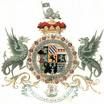


On Mar. 7, 1702 William III attaints the 14-y.-o. prince of Wales James III (James Francis Edward Stuart) (1688-1766) of high treason under the new "King Ralph" Treason Act of 1702 (preventing interference with the royal succession), causing him to grow into the Old Pretender; too bad, on Mar. 8 king (since 1689) William III (b. 1650) dies at Kensington Palace after being thrown from his horse, and is succeeded by his lace-loving sister-in-law and cousin (2nd daughter of James II and his 1st wife Anne Hyde) (devout Anglican) Anne Stuart (Stewart) (1665-1714) (the 49th British monarch), becoming the last Stuart (Stewart) monarch (until Aug. 1, 1714), as well as the last English sovereign to veto an act of Parliament (in 1708) (after that the remedy for failed legislation is to seat a new cabinet); she takes the throne childless and without a direct heir; William III's untimely death nullifies the Settlement Act, but she abides by it; she has the family disease of porphyria; she rules through ministers, and Sidney Godolphin returns as chief minister of the British cabinet (until 1710); she never visits Scotland during her reign; like James Stuart, she begins her reign a few years after the beginning of a cent. when the MF alert goes from red to yellow or green (1603, 1702)?; the Scottish parliament refuses to recognize her, claiming the right to pick their own successor to the Scottish crown as long as he is Protestant, and answers English calls for parliamentary union with rejection of English interference in their internal affairs, pissing-off the English and causing them to pass punitive laws against Scottish goods; meanwhile on May 4 Queen Anne's War (Am. side of the War of the Spanish Succession) (ends 1713), the 2nd of the French and Indian wars (first 1690) begins as England declares war on France; early Vs in the Second War of the Grand Alliance cause Queen Anne to create up-and-coming John Churchill (1650-1722) as the 1st Duke of Marlborough in Dec., and place him at the head of the English army as capt.-gen. with a free hand (along with Eugene of Savoy in the service of Austria); the French are out-generaled, and Marlborough takes Venlo, Ruremonde, and Liege, and capture and burn Spanish-held St. Augustine in Fla.; the Tories gain power in England, and seek to get revenge against the Whigs, while Godolphin and Marlborough attempt to stifle them; Churchill's wife Lady Sarah Churchill (nee Jennings) (1660-1744), a lady of the queen's bedchamber who has been her best friend since her 1683 marriage begins to exert enough control over her to make English politicians uncomfortable, and she ends up dumping her for a new favorite, her cousin Lady Abigail Masham (1670-1734).



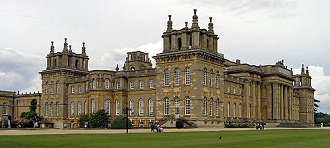

On Aug. 12-13, 1704 after British forces under John Churchill, 1st Duke of Marlborough (1650-1722) march toward the Danube River, meet up with Austrian forces under Prince Eugene of Savoy near Mandelsheim, and together march ulm in ulm to Ulm, they defeat the French under marshals Camille d'Hostun de la Baume, Duc de Tallard (1652-1728) and Ferdinand, Count of Marsin (1656-1706), and the Bavarians under elector Maximilian II Emanuel at the Battle of Blenheim (Second Battle of Hochstadt) (pr. BLEN-im) (corruption of Blindheim) N of Nuremberg on the Danube River in W Bavaria 23 mi. NW of Augsburg, with 4.5K British and Austrians KIA and 7.9K wounded vs. 20K French and Bavarians KIA or wounded and 14K taken POW; the French and Bavarians are beaten so badly that the French attack on Austria is broken, and French prestige suffers from the first pitched battle lost by French troops since who knows when; the giant Allied V ensures the safety of Vienna, preventing the collapse of the Grand Alliance, becoming a turning point in the War of the Spanish Succession; from now on French military domination of Europe begins to tank; Marlborough becomes a big hero back home, and Queen Anne promises to build him his own pretty little palace in Woodstock, Oxfordshire, called Blenheim Palace (1705-22), designed by Sir John Vanbrugh (1664-1726) and Nicholas Hawksmoor (1661-1736), becoming the only non-royal non-episcopal country house in England with the title of palace; too bad, political infighting leads to the duke of Marlborough's exile, damaging Vanbrugh's rep.; meanwhile Duke Victor Amadeus I of Savoy flip-flops, ditches France and joins Austria, pissing-off the French and causing them to send troops under Gen. Vendome to trash the Piedmont; the Rakoczy uprising in Hungary is robbed of its promised help by the French and Bavarians, causing him to mint new copper coins to replace silver coins as the economy collapses.
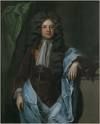
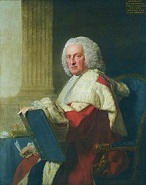
In Feb. 1706 after having had enough of the pesky Scots, Queen Anne appoints commissioners to effect a union between England and Scotland, and they meet at Westminster for several mo., then present the Treaty of Union to the parliaments of both countries for ratification, proposed by Charles Montagu, 1st Earl of Halifax (1661-1715), and backed by Archibald Campbell, 3rd Duke of Argyll, 1st Earl of Ilay (1682-1761); compensation for Darien is incl.; on June 28 the Scottish parliament meets in Edinburgh and agrees to it on July 22, then waffles until Queen Anne bribes them in Nov. to go with it, with new peerages granted, plus trading privileges to the burgesses, plus rights of the kirk to mollify the clergy; the pop. knows they're being sold out and shows it, causing the queen to send an English army to the Scottish border.


On Nov. 15, 1712 (a.m.) Scottish nobleman Sir James Douglas-Hamilton, 4th Duke of Hamilton (b. 1658), after being created a peer of Britain (1st duke of Branded With the Mark of Shame, er, Brandon in Suffolk) for selling out his Scottish people and getting a "toothache" during the final vote on the Acts of Union, allowing them to be passed in the Scottish House of Lords (still, the very thought of a wild-eyed Celt sitting in the British House of Lords with the descendants of Edward I Longshanks?), and maybe worse, being created Knight of the Garter in Oct. (the only non-royal in Britain to be a knight of both Thistle and Garter), fights a famous sword duel in Hyde Park, London with this-bird-you-cannot-change longtime Whig opponent Charles Mohun, 4th Baron Mohun of Okehampton (1675-1712) (actually, Hamilton had been trying to steal his inheritance, and Mohun was a longtime dueling fool, and the Scot prick was made special envoy to Paris, and it was about time for him to fly?), who kills the pesky uppity Scot, after which he dies from his horrific wounds also, all of which is later covered in William Makepeace Thackeray's blockbuster 1852 novel The History of Henry Esmond, and causes Parliament to ban seconds in duels, causing the quicker and less gruesome pistols to become the weapon of choice - erin go bragh?
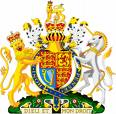


On Aug. 1, 1714 after a 1-mo. crisis occasioned by her impending death, Queen (since Mar. 8, 1702) Anne (b. 1665), last of the Stuart dynasty dies childless, and after some shenanigans where the earl of Oxford is fired as lord treasurer on July 29 and Lord Shrewsbury (who became lord lt. of Ireland last year and hurries back) is appointed in his place on July 30, going on to throw his weight in favor of the elector of Hanover and against James II and the Jacobites, she is succeeded by the eldest son of Electress Sophia of Hanover, granddaughter of James I through his daughter Elizabeth Stuart (1596-1662) (Queen Elizabeth of Bohemia) and Palatine Elector Frederick V (1596-1632), 54-y.-o. genuine Kraut George Louis, elector of Hanover, who becomes George (Georg) I Ludwig of Hanover (1660-1727) (the 50th British monarch) (until June 22, 1727), landing in England on Sept. 18; the Stuart Dynasty (founded 1371) ends, and the Hanover, Saxe-Coburg, and Windsor Dynasty begins (ends ?); George I never learns to speak or read English, and comes to England without his wife but with three German mistresses and a retinue of Germans; his cousin-wife Sophia Dorothea of Celle (1666-1726) was imprisoned for an affair in 1794, and remains in captivity in the Castle of Ahlden until her 1726 death; his friend Gottfried Wilhelm Leibniz, who helped angle him into power is snubbed because of the big Calculus dispute with Isaac Newton, and he is forbidden to come to London until he finishes a history of the Brunswick family commissioned by his father 30 years earlier; the Whigs regain control of Parliament, and George I appoints a mostly Whig cabinet led by Lord Townshend; Robert Walpole, a strong Hanoverian is restored to his fortune; on Aug. 28 George deposes Viscount Bolingbroke and reinstates the duke of Marlborough; Robert Harley is succeeded by as PM (until 1715); by now the cabinet is assuming its modern form as a committee of leaders of the majority in Parliament that takes the blame for the king's policy mistakes, as his royal personage is sacred and inviolable and somebody's head must always roll?
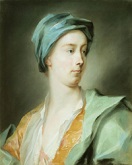
In 1718 the first Free Masonic Hell Fire (Hellfire) Club is founded by Jacobite politician Philip, 1st Duke of Wharton (1698-1731) et al. in London, England, expanding to several clubs run by the notorious Sir Francis Dashwood et al., whose members (incl. Benjamin Franklin?) engage in sexual orgies and call themselves "Friars of St. Francis of Wycombe"; in 1721 they are closed by royal edict, and some reopen later under less obvious names in 1749-60/66? - like massage parlors?
In 1720 British PM Charles Spender, er, Spencer, 3rd Earl of Sunderland gives Robert Walpole the post of paymaster gen., after which the South Sea Bubble bursts after its stock soars from £128 to over £1K a share, followed by a crashy crash crash, hurting many people in England incl. Sir Isaac Newton, and causing the public to look to him to restore order; on June 11 the Bubble (Royal Exchange and London Assurance Corporation) Act is passed, incorporating the Royal Exchange and London Assurance Corp., and prohibiting the development of joint-stock cos. without a royal charter or act of Parliament; Sunderland's career bursts like a bubble?; "I can calculate the motions of heavenly bodies, but not the madness of people." (Newton)


What's going on in your head, what's wrong, Or, I walk alone, I walk alone? On Apr. 3, 1721 after he English Parliament begins proceedings against the suspects in the South Sea Bubble, the ruling Whig party is blamed, the ministers guilty of taking bribes resign or die, and chancellor of the exchequer John Aislabie (1670-1742) is sent to the Tower for fraud, Robert Walpole (1676-1745), brother-in-law of Lord Townshend replaces him, and his handiness with figures saves the day; James Stanhope dies, and Walpole becomes first lord of the treasury and chancellor of the exchequer, and the first official British First (Prime) Minister (until Feb. 11, 1742, replacing Charles Spencer, 3rd earl of Sunderland as chief of the cabinet (since 1718), where he helps solidify Hanoverian control of the English throne, using bribery to secure a solidly Whig House of Commons, and dominating England until his 1742 retirement - as its Big Whig?


In 1721 James Gibbs (1682-1754) designs a replacement for St. Martin-in-the-Fields Church in the NE corner of London's Trafalgar Square, and it is completed in 1726, going on to become popular for cloning in British North Am.
In 1723 British PM Robert Walpole reduces the duty on tea.
In 1723 the Waltham Black Acts make poaching and 49 other pissant offenses a capital offense in England.
In 1723 after receiving a bequest from William III's secy. Sieur D'Allone, English philanthropist Dr. Thomas Bray founds the Associates of Dr. Bray in London to establish charity schools and libraries for poor clergy; on Jan. 2, 1760 they elect Ben Franklin to membership, signifying him as a leading philanthropist in New England.

In Sept. 1726 25-y.-o. married maidservant Mary Toft (Tofts) (1701-63) is claimed by her physician John Howard to have given birth to 17 rabbits in Godalming, England, fooling several other physicians incl. George I's surgeon Nathaniel St. Andre and Sir Richard Manningham, until it is revealed to be a hoax, exposing the abysmal state of medicine.


On June 22, 1727 (June 11 Old Style) (10 weeks after Isaac Newton) Hanoverian king of Great Britain #1 (since Aug. 1, 1714) George I (b. 1660) dies of a stroke en route to Hanover, becoming the last British monarch to be buried outside the U.K., and his Hanover-born son George (Georg) II (1683-1760) is crowned the 51st British monarch (until Oct. 25, 1760); Handel's Coronation Chorus is first used at his coronation; his wife (a strong Robert Walpole backer) Caroline of Brandenburg-Ansbach (1683-1737) is a brain babe who corresponds with Leibniz, and is appointed regent when her hubby is in Hanover, causing the rhyme "You may strut, dapper George, but 'twill all be in vain,/ We all know 'tis Queen Caroline, not you, that reigns."
Spanish depredations on our estates, persons, and ears, oh my? If it had only been in 1738 it would have been the Take a Muff Year? On Oct. 22, 1739 Britain declares war on Spain after PM Robert Walpole's jingoistic opposition's star witness, Welsh trader Capt. Robert Jenkins (1700-?) tells Parliament how the *!?*! Spanish had cut off his ear in 1731 while searching his ship for contraband, with the soundbyte: "I recommended my soul to God and my cause to my country" as he shows it to them in a box, causing Robert Walpole to half-heartedly declare the War of Jenkins' Ear (ends Oct. 18, 1748); in actuality it had been cut off by a pirate, who was punished by the Spanish; on Nov. 22 the English capture the silver-exporting town of Puerto (Porto) Bello in Panama; meanwhile Ga. and S.C. colonists fight Spaniards.


Put a wig and powder on white men and they all look alike? On Feb. 2, 1742 British PM (since Apr. 3, 1721) Robert Walpole resigns allegedly because of failing health (really his shrinking majority?), then on Feb. 6 accepts a peerage (earl of Orford not Oxford), and on Feb. 16 Spencer Compton, 1st Earl of Wilmington (1673-1743) (whom Robert Walpole had gotten raised to the peerage in 1728 in order to move him from the Commons to the Lords) becomes English PM #2 (until July 2, 1743), although the real leader of the Whig cabinet is John Carteret, 2nd Earl Granville (AKA Lord Granville) (1690-1763).



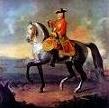
On June 27, 1743 (June 16 Old Style) the 35K-man Pragmatic army of British, Hanover and Hesse troops under George II of Britain, Scottish field marshal John Dalrymple, 2nd Earl of Stair (1673-1747), and French-born Huguenot maj. gen. John (Jean Louis) Ligonier, 1st Earl Ligonier (1680-1770) (former gen. under Marlborough) (incl. Lord Jeffrey Amherst's First Regiment of Foot Guards)defeats 23K French troops under Adrien Maurice, 3rd Duc de Noailles (1678-1766) at the crummy Battle of Dettingen on the 18 mi. E of Frankfurt Main River on the Hesse-Bavaria border (modern-day Karlstein am Main), becoming the last time that a British sovereign personally leads his troops on the field (until ?), and won only by Ligonier's courageous improvisations and discipline; total casualties are 2K-3K British 4K-4.5K French; the HRE becomes a fugitive in Frankfurt; Frederick II the Great breaks the truce with Maria Theresa, allies with France and invades Bohemia; Austria allies with Saxony.



On July 2, 1743 British PM (since Feb. 16, 1742) Spencer Compton, 1st earl of Wilmington (b. 1673) dies, and on Aug. 27 he is succeeded (until Mar. 6, 1754) as British PM by Whig Henry Pelham (1694-1754), younger brother of Thomas Pelham-Holles, Duke of Newcastle (1693-1768), with whom he shares power; Henry Pelham forces John Carteret to resign; quite quotable dude Philip Dormer Stanhope, 4th Earl of Chesterfield (1694-1773), known as Geffery Broadbottom in his press articles forms the Broadbottom Party, a coalition of anti-Walpole anti-George II cabinet members under Pelham.
In 1744 King Louis XV of France declares war on George II of Great Britain and on Maria Theresa; King George's War in North Am. begins; the French briefly occupy Annapolis, Nova Scotia.

In 1744 future "British conqueror of India" Robert Clive (1725-74) arrives in India at age 18 broke and rejected by his father (who calls him the Booby), and takes a job as a clerk for the British East India Co.; one day fellow clerk Edmund Maskelyne enters his room to find him holding a pistol; Clive asks him to fire it out the window, and when he does, remarks "I must be reserved for something. That pistol I have twice snapped at my own head."

In 1744 Eliza Haywood (Fowler) (1693-1756) begins pub. The Female Spectator, the first women's periodical to be edited by a woman; predictably, all her stuff is icily received by the male establishment, Alexander Pope calling her a "shameless scribbler", and Jonathan Swift calling her a "stupid, infamous, scribbling woman".
In 1744 the Madrigal Society is founded in London, holding weekly meetings in taverns.
In 1744 the Honorable Co. of Edinburgh Golfers, the world's first golf club is founded.
In 1744 the first recorded Cricket match pits Kent vs. All England at the Artillery Ground in London, with the first known code of cricket drawn up by "Noblemen and Gentlemen", who bet large sums on the former kiddie game; the pitch is set at 22 yards, the distance between bowling crease and popping crease at 46", the wicket at 22" tall and 6" wide, and the ball at 5-6 oz.


On May 11, 1745 the French under marshal Maurice, Comte de Saxe (Moritz von Sachsen) (Marechal de Saxe) (1696-1750) defeat the British, Dutch, and Austrians under the command of George II's incompetent younger son William (Wilhelm) Augustus, Duke of Cumberland (1721-65) at the Battle of Fontenoy in Flanders, after whiskey-guzzling Scot Lord Charles Hay (1705-60) of the First Foot Guards first dashes forward and drinks a toast, shouting to the Gardes Francaises, "Gentlemen of France, fire first", the humiliation getting rubbed in when their lines are broken by the Irish Brigade, after which he ends up in an asylum by next year, then becomes George II's aide-de-camp in 1749, finally getting arrested in 1757 for criticizing his superiors; Saxe, who was naturalized as a French subject in Apr. is carried in a wicker chariot because he has edema and can't sit on a horse; the French then go on to conquer the Austrian Netherlands, becoming France's last great military V before the French Rev.

On June 16, 1745 a British force of 4.2K under Mass. gov. William Shirley and Kittery merchant Sir William Pepperell, 1st Baronet (1696-1759) (who also finances the expedition) takes supposedly impregnable Ft. Louisburg in Cape Breton, Nova Scotia, Canada after a 49-day siege, but three years later at Aix-la-Chapelle the fort is stupidly returned under a peace treaty in exchange for Madras, because the British need Quebec for firewood; Nathaniel Hawthorne later eulogizes Pepperell as "The mighty man of Kittery".

On July 25, 1745 Roman Catholic "Young Pretender" Charles Edward Stuart (Stewart) (Bonnie Prince Charlie) (1720-88) (grandson of James II) lands on Eriskay Island in Scotland, proclaims his father as James VIII of Scotland and James III of England, and raises the Highlanders, beginning the Second Jacobite Rebellion (Jacobite Rising of 1745); on Sept. 17 the Scots win a V over royalist John Campbell, duke of Argyll (Argyle) at the Battle of Prestopans near Edinburgh; the Scottish army advances as far S as Derby but retreats when no English come to their aid; Bonnie Prince Charlie's landing in Scotland popularizes the song God Save the King/Queen.

Time for the wappenshawing from hell? The last pitched battle on British soil, and it had to be with the *!?!* Scots? The Scottish Gettsburg? On Apr. 16, 1746 the Scottish Jacobite army of 7K Highlanders, led by "Young Pretender" Charles Edward Stuart (Bonnie Prince Charlie) is defeated by 8K British redcoat regulars led by the Duke of Cumberland at the 1-hour Battle of Culloden Moor on Drummossie Muir 6 mi. E of Inverness (not far from Loch Ness and Urquhart Castle), causing chicken Prince Charlie to flee to France with the help of Flora MacDonald (1722-90), becoming the last Stuart effort to reclaim the throne and the end of two cents. of Roman Catholic-Protestant war in England; he abandons 4K troops trying to regroup at Ruthven, telling them to fend for themselves, pissing them off at the yellow "Italian" (raised in Italy); Augustus is made capt.-gen. of the British army; to cement the Union of 1706 the British make a concerted attempt to destroy Scottish culture and language, eradicating the clan system and banning Highland dress (kilt and tartans) and the playing of the bagpipes (supposedly instruments of war) (until 1782), causing many Scots to emigrate, leaving the Highlands beautiful and empty of people; the last executions until WWI take place for POWs of the rebellion in the Tower of London; Highlanders are forced off their ancestral lands, and the culture goes underground, with many Scots scattered around the world (where many become famous inventors and engineers like Scotty on Star Trek?) - rather have a Hawaiian shirt?

On Mar. 6, 1754 British PM (since Aug. 27, 1743) Henry Pelham (b. 1694) dies, and on July 2 his weak, incompetent brother Thomas Pelham-Holles, Duke of Newcastle (1693-1768) becomes British PM (until Nov. 11, 1756).
In 1754 the French and Indian War (Seven Years' War) in North Am. begins (ends 1763); the British Board of Trade asks each colony to send delegates to a conference to be held in Albany, N.Y. in June to reaffirm the allegiance of the Six Nations Iroquois Confederation and discuss ways among themselves of unifying their colonial defense against the Frogs; in Feb. some Va. militia begin building a fort at the confluence of the Allegheny and Monongahela Rivers (where they unite to form the Ohio River), which on Apr. 17 is attacked by a large French and Indian force, causing the Virginians to withdraw; the French then finish building Ft. Duquesne on the site of modern-day Pittsburgh, Penn.; on May 9 Benjamin Franklin pub. an editorial in the Penn. Gazette blaming the French success "on the present disunited state of the British colonies"; next to the article he prints the first and most famous editorial cartoon in U.S. history, a snake cut into pieces, labelled with names of the colonies, bearing the caption, "Join, or Die" (head=N.E., N.Y., N.J., Penn., Mass., Va., N.C., S.C.=tail); on May 28 the first bloodshed is at Uniontown, Penn.; in June the British build Ft. Necessity in Penn., which the French attack on July 3, and on July 4 (bad day?) George Washington surrenders it after the Mingos desert; Penn. Quakers show how racism trumps pacifism when they withdraw from the Penn. Assembly to allow the war party to vote the money and laws needed to prosecute the war without dirtying their own hands?




On May 17, 1756 Britain declares war on France, launching the Seven Years' War (ends Feb. 15, 1763). On May 20, 1756 the Battle of Minorca sees 15K French troops under marshal Louis Francois Armand de Vignerot du Plessis, Duc de Richelieu (1696-1788) and Gen. Rochambeau take Minorca from the English after Adm. John Byng (1704-57) refuses to close his ships on the French ships, settling for a lossless battle (43 British sailors KIA and 168 injured vs. 38 French KIA and 175 injured), getting Byng charged with treason for failing to "do his utmost", and shot on Mar. 14, 1757 at Portsmouth aboard HMS Monarch, after which the public suspects he's a scapegoat and swings opinion in his favor, making him the last British adm. executed in this fashion; after the successful siege of Port Mahon, capital of Minorca, mayonnaise (oil and egg yolks) is allegedly invented by Richelieu's chef to celebrate; it doesn't catch on in the U.S. until 1905. On Aug. 27, 1756 Frederick II the Great of Prussia leads 67K men into Saxony in a surprise attack (blitzkrieg?), causing the small Saxon army to flee on Aug. 29 to between Festung Konigstein and Schloss Sonnenstein, starting the Seven Years' (Third Silesian) War (ends Feb. 15, 1763) (the first world war and the beginning of the British Empire, or World War IV after the War of the League of Augsburg, the War of the Spanish Succession, and King George's War?); on Oct. 1 Frederick II defeats the Austrians at the Battle of Lobositz (Lobosik) in Bohemia, and on Oct. 16 the Saxon army capitulates to Frederick II at Pirna; the Prussians take Dresden, causing Austria, France, Russia, Sweden, and Saxony to declare war on Prussia and Britain; British Whig leader William Pitt the Elder, Earl of Chatham (1708-78) comes to power in England, becoming secy. of war after British PM (since Mar. 16, 1754) Thomas Pelham-Holles, 1st Duke of Newcastle resigns on Nov. 11 then returns to power, offering him the position; "England has long been in labour, but at last she has brought forth a man" (Frederick II the Great); Britain subsidizes Prussia while taking advantage of the diversion of France to strength their holdings in Canada and India; on Nov. 16 former lord lt. of Ireland (1755-7) William Cavendish, 4th Duke of Devonshire (1720-64) becomes first lord of the treasury (same thing as PM) (until June 25, 1757).

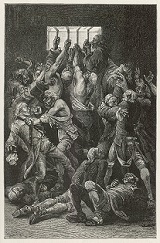
White Euros get ideas about death camp design from India? On June 20, 1756 after another war breaks out between the French and British in S India, and Mirza Mohammad Siraj-ud-Daulah (Dawla) (1733-57), last independent Muslim Nawab of Bengal attacks Calcutta, attempting to drive all British out of Bengal, he captures the British East India Co. stronghold of Ft. William, allegedly confining the 146-man British garrison in the 20-sq.-ft. (18 ft. x 14 ft. x 10 in.) Black Hole of Calcutta (only two small windows), killing all but 23 of them overnight; later investigations find that 114 of the men were actually killed defending the fort, and only nine officers were confined, of which three died, two from wounds, and that it was all fabricated by survivor English surgeon (temp. gov. of Bengal in 1760) John Zephaniah Holwell (1711-98); on Dec. 6 Robert Clive relieves British fugitives in Fulta 20 mi. S of Calcutta.
On Mar. 14, 1757 British Adm. John Byng (b. 1704) is executed for treason for losing Minorca to the French; the days of Marlborough have now degenerated to a feeling of malaise, and William Pitt the Elder begins using the soundbyte: "This almost degenerate England."
On Apr. 6, 1757 after he opposes the king's continental policy and the execution of Adm. Byng, "the Great Commoner" William Pitt the Elder (1708-78) is dismissed by the king as leader of the House of Commons (since Dec. 4, 1756), along with his brother-in-law Lord Temple as first lord of the admiralty, with the Duke of Devonshire in charge of the weak ineffectual 1757 Caretaker Ministry, but after massive universal public acclaim incl. the first-ever honorary freedom of the city award by London, Pitt returns as secy. of state for the Southern Dept. on June 27, and functions as de facto leader of the House of Commons next year.


On June 23, 1757 the British East India Co. gets revenge for the Black Hole and gains control of Bengal (until 1947) when Maj.-gen. Robert Clive, 1st Baron Clive (1725-74) wins the decisive Battle of Plassey (a village in West Bengal N of Calcutta); Siraj-ud-Daulah escapes to Patna via Murshidabad, is arrested by his former #2 man, traitor army chief (of Arab descent) Mir Jafar (Syed Mir Muhammed Jafar Ali Khan) (1691-1765) (who got pissed-off at his elevation of a Hindu to supreme diwan), and brutally executed on July 2 by Mohammad Ali Beg on his orders, and he becomes the first British puppet Nawab of Bengal (until 1765); Ft. William in Calcutta on the E bank of the Hooghly River is built by the British after the Battle of Plassey; Clive names the strong-smelling tasty fish Bombay duck after the Bombay Daak (Mail) train, which carries stinky newspapers.


On June 29, 1757 Robert Walpole Whig protege Thomas Pelham-Holles, 1st Duke of Newcastle (1693-1768) becomes British first lord of the treasury (official PM) (until May 26, 1762), joining with de facto PM William Pitt to form the Pitt-Newcastle Ministry, with Pitt deciding to take charge of the war in America and drive the French out; House of Commons leader and secy. of state Henry Fox, 1st Baron Holland of Foxley (1705-74), who caused a scandal by eloping with Lady Catherine Lennox in 1744 is excluded from the govt. and made paymaster gen. of the armed forces, a position he uses to acquire a large fortune during the Seven Years' War - there's a crime behind every fortune?

On Aug. 9, 1757 French Gen. Louis-Joseph, Marquis de Montcalm (1712-59), CIC of French forces in North Am. captures Ft. William Henry on Lake George (Lac Sainte Sacrament) in Upstate N.Y., commanded by Irish-born Lt. Col. George Monro (1700-57) (while Monro's daughter Cora's loverboy Hawkeye is held in chains awaiting execution and Magua plans a bloodthirsty revenge on White-Hair?); the returning British soldiers are viciously ambushed and massacred by the Abenaki (Abnaki) (allies of the French), and the incident becomes notorious as a French violation of the internat. laws of war.

In Dec. 1757 Lord Loudoun is recalled to England by William Pitt, and French-born John (Jean Louis) Ligonier, 1st Earl Loginier (1680-1770), veteran of the 1746 Battle of Roucoux becomes British CIC in North Am., and recommends his aide-de-camp Lord Jeffrey Amherst for his job, but George II balks at promoting an obscure col. (with an insane wife, Jane Dalyson) until his mistress the Countess of Yarmouth (put up to it by Pitt) changes his mind, but the king forces Pitt to accept wealthy Scottish-born incompetent Gen. James Abercrombie (1706-81) as cmdr. of the Ft. Ticonderoga expedition in exchange; Pitt counters by getting brilliant Lord George Howe appointed as Abercrombie's 2nd in command.
In 1759 this is the Annus Mirabilus (Lat. "Year of Wonders") of Britain, with a string of big Vs over France in the Seven Years' War.



On Oct. 25, 1760 English king (since June 22, 1727) George II (b. 1683) dies, becoming the last English king interred at Westminster Abbey, and on Oct. 25 his shy, stubborn, dull, backward, authoritarian but well-intentioned 22-y.-o. family-man old-man-take-a-look-at-my-life-I'm-a-lot-like-you grandson ("the Farmer King") George III (1738-1820) succeeds him as the 52nd monarch of England (until Jan. 29, 1820), becoming the first English-born Hanoverian king; his first speech from the throne incl. the killer soundbyte "Glory in the name of Briton", which adds to his popularity; his homely virtues and touching dutifulness with his homely wife Charlotte of Mecklenburg-Strelitz (1744-1818) (an amateur botanist who helps found Kew Gardens) (namesake of Charlotte, Mecklenburg County, N.C.) endear him to the middle class; they have a gaggling brood of 15 royal rugrats, 13 of whom survive to adulthood (9 boys, 6 girls); but look into the big black tulip, by 1788 his reign is disrupted by the walrus family disease of porphyria (IEP), which makes him go mad as a hatter, and his popularity to tank at first, but turn into grudging respect for his good intentions (can't blame you for wanting to try?); PM William Pitt the Elder is soon out on his glass onion, and Gen. Amherst's promised peerage is reduced to a knighthood, the governorship of Va., and the Order of the Knights of the Bath (a cool silver insignia for his ceremonial armor), and his requests to return to England are ignored; British subsidies to Prussia are stopped; meanwhile Harvard-educated Mass. atty. James Otis Jr. (1725-83) resigns as king's advocate gen. to defend the merchants of Boston, who get pissed-off at renewed Writs of Assistance to royal customs collectors to search their establishments for suspected violations of the 1733 Sugar Act; Queen Charlotte becomes the first English queen to have young ladies presented to her in drawing rooms to acknowledge their "coming out" in society, starting a tradition lasting until the 1950s - play this for a thousand? Under George III's influence, and with the help of the Duke of Newcastle, George III's Scottish-born boyhood tutor (does he still call him porkchops?) John Stuart, 3rd Earl of Bute (1713-92) (who started out as lord of the bedchamber for Prince Frederick of Wales until 1751, then became his son George III's groom of the stole) gets a position in the British cabinet, with an inside fast track, becoming the last important royal favorite in British politics (until ?); born in Edinburgh, he uses the French spelling of Stewart rather than the Scottish.

On May 26, 1762 John Stuart, 3rd Earl of Bute (1713-92) becomes British PM (until Apr. 8, 1763), later being remembered ' as one of the most unpopular PMs in British history, attempting to assert the supremacy of the royal autocracy while claiming that the executive govt. are merely servants, causing William Pitt to call him "One behind the throne greater than the throne itself"; radical MP John Wilkes (1725-97) (ugliest man in England, with a protruding jaw and annoying squint, but eloquent, known for taking only half an hour to talk his face away) begins pub. the radical anti-Bute weekly The North Briton, satiring Bute's Scotland and taking an anti-Scottish anti-Jacobite attitude; William Hogarth gets into a political feud with him, and into another with poet Charles Churchill.

On Apr. 8, 1763 unpopular British PM (since May 26, 1762) Earl of Bute resigns as British PM, and on Apr. 16 the king replaces him with Whig George Grenville (1712-70) (until July 13, 1765); most Whigs don't support him, and they try to ally with Pitt to defeat him, but the king vacillates, letting him stay in office as long as he's as nice a rock-n-roller as he can find.
In 1765-83 the Am. Rev. sees the 13 British colonies in North Am. successfully rebel and become the United States of America.


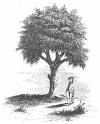





On Feb. 13, 1765 after Lord Grenville, needing more money to maintain the 10K troops stationed in the American colonies, and wanting a tax affecting all the colonies, not just New England, devises a new stamp tax, and presents it to colonial agents in London, who unanimously protest it, but fail to offer an alternative or agree on the proportions to be raised by each colony, while Benjamin Franklin representing four colonies, failing to sense the danger, makes a big boo boo and proposes one of his friends as a stamp agent, Grenville lays his proposal before Parliament, where only three speeches are given in opposition, including the big one by Dublin-born barrel-of-fun Col. Isaac Barre (Barré) (1726-1802) (son of a French refugee), who says that past British agents sent out to them "caused the blood of these Sons of Liberty to recoil within them"; on Mar. 22 Britain passes the Stamp Act of 1765 to tax American colonists, to go into effect on Nov. 1; it requires that govt. stamps be paid for in silver and used on almost all legal documents, many commercial papers such as ship clearance papers, newspapers and pamphlets, almanacs, deeds, diplomas, even dice and playing cards; this is the first direct British tax on the colonies, and public outrage causes royal officials to be attacked by mobs, agreements to be struck among merchants to boycott British goods, and the convening of the Stamp Act Congress; radical sentiment is crystalized, and new leaders arise, including young merchant John Hancock(y), Samuel Adams, and his lawyer cousin John; in London, Ben Franklin's waffling over the Stamp Act arouses public suspicion that he had a hand in framing it, and his ass becomes grass and they want to mow it. On Mar. 24 Parliament passes the Quartering Act, requiring the Am. colonies to supply British troops with provisions and to barrack them or allow their use of inns and vacant bldgs.; New York City, the HQ of the British forces is hardest hit with this new tax as they see it as supporting a standing occupation army to oppress them. On May 7 the HMS Victory, Lord Nelson's future flagship (begun 1759) is launched. Wake up people, stop it? On May 13 after "real Whig" Patrick Henry wins a seat on the Va. House of Burgesses, and gives a series of "torrents of sublime eloquence", they pass the Virginia Resolves, claiming that as Englishmen, Virginians can only be taxed by their own reps. and governed by laws passed with their own consent; on May 29 Henry turns it up by giving a speech to the Va. Provincial Convention calling for revolution: "Caesar had his Brutus, Charles the First his Cromwell, and George the Third..."; interrupted by cries of "Treason!", he replies, "If this be treason, make the most of it", and then utters the immortal soundbye, "But as for me, give me liberty, or give me death!" In May Scottish inventor James Watt (1736-1819) invents the dual condenser steam engine (one hot and one cold) (patented in 1769), which cuts fuel consumption in the Newcomen steam engine by two-thirds, giving steam engines up to 7% efficiency, thus making them practical; he coins the marketing term "horsepower", and the Industrial Rev. in England (ends 1840) is cooking with steam. On June 8 the Mass. House of Reps. issues a circular letter inviting all colonial assemblies to send delegates to a New York conference to appeal against the Stamp Act; Mayflower descendant James Warren (1726-1808) of Plymouth becomes a Mass. rep., rising to speaker and pres., then ending up as George Washington's paymaster; his wife Mercy Otis Warren is a brain babe who later becomes a propagandist for the rebel side. Would you have a stamp on ya? On Aug. 14 the Liberty Tree in Boston, Mass. (a great elm in Hanover Square) (1646-1775) is dedicated; the militant Sons of Liberty, founded by Alexander McDougall (1731-86), John Lamb (1735-1800), Marinus Willett (1740-1830) et al. to flout the Stamp Act meet underneath it; the Charleston Liberty Tree in S.C. is a live oak.

In 1765 Treaty of Paris hero Henry Fox, 1st Baron Holland is forced to resign as paymaster gen., and in 1769 charges of misuse of public funds are brought against him, but the proceedings are stayed by the intervention of George III; meanwhile this year George III has his first brief attack of insanity, and his illness causes a regency bill to be passed by Parliament, arousing his wrath and causing him on July 13 to replace George Grenville with "Old Whig" (pro-colonist) Charles Watson-Wentworth, 2nd Marquis of Rockingham (1730-82) as PM (until July 30, 1766); Pitt refuses to give the new cabinet his support; Rockingham resolves to repeal the Stamp Act, but needs time; Edmund Burke (1729-97), who returned to London in 1764 becomes Rockingham's private secy. (until 1766) - Rocky, watch me pull a rabbit out of my hat?
In 1765 the British Parliament buys the Manx-speaking Isle of Man, whose capital Douglas is sited at the confluence of the Dhoo and Glass Rivers - watch those tails, men?


On July 30, 1766 British PM (since July 13, 1765) Lord Rockingham is dismissed as Lord Treasurer after a quarrel over appointments; the king then invites Whig William Pitt the Elder (1708-78) to become PM (until Oct. 14, 1768) form a weak coalition cabinet which incl. different Whig groups, Tories and King's Friends (which Edmund Burke compares to pigs swilling at a trough); in ill health, William Pitt the Elder, "the Great Commoner" is created Earl of Chatham in Kent County, and moves from the House of Commons to the House of Lords, then accepts the sinecure office of Lord of the Privy Seal; Charles Townshend (1725-67) (of whom Horace Walpole says his "abilities are superior to those of all men, and his judgement below that of any man") becomes Chancellor of the Exchequer, and a guiding force in the ministry, who now has the fate of the Am. colonies in his hands.

Meanwhile, England is distracted by George III and the "King's Friends"? On Oct. 14, 1768 after PM (since July 30, 1766) William Pitt the Elder resigns due to ill health, Whig Augustus Henry FitzRoy, 3rd Duke of Grafton (1735-1811), who had acted as head of the cabinet in the ailing Pitt's absence becomes British PM (until Jan. 28, 1770), becoming the youngest so far (until William Pitt the Younger in 1783); too bad, his weak leadership gives the king personal influence, leading to policies Pitt doesn't like but can no longer do anything about even though his health recovers.
On Dec. 10, 1768 the Royal Academy of Arts is founded in London by architect William Chambers under the patronage of mad king George III as a rival to the Society of Artists after a dispute with James Paine, with Sir Joshua Reynolds (knighted next year) as pres. #1 (until 1792) and 40 founding members, incl. sculptor Joseph Wilton; its income comes from hosting art exhibitions, not govt. funds.
The Am. Rev. really starts with fifth column propaganda in England? On Jan. 21, 1769 the anon. Letters of Junius begin to be pub. in the Public Advertiser in London (until Jan. 21, 1772), attacking corruption in public men, warning of the dangers of arbitrary power, and praising the virtues of a shorter term for Parliament; they are addressed to Sir William Draper, the Duke of Grafton, the Duke of Bedford et al.; in 1812 John Taylor claims that the real Junius is Sir Philip Francis, and in 1872 Joel Moody claims that he is Thomas Paine; it's really Benjamin Franklin (1706-90), who is also in London at the time?; the printers and publishers are tried for seditious libel, found guilty, then cleared after a 2nd trial, making them more popular, and in 1772 all 69 letters are reprinted by the Public Advertiser of London, owned by Henry Sampson Woodfall (1739-1805); "The liberty of the press is the palladium of all the civil, political, and religious rights of an Englishman"; "The submission of free people to the executive authority of government, is no more than a compliance with laws which they themselves have enacted"; "One precedent creates another. They soon accumulate and constitute law. What yesterday was fact, today is doctrine"; "We owe it to our ancestors to preserve entire those rights, which they have delivered to our care: we owe it to our posterity, not to suffer their dearest inheritance to be destroyed"; "I believe there is yet a spirit of resistance in this country, which will not submit to be oppressed; but I am sure there is a fund of good sense in this country, which cannot be deceived"; "[Americans] equally detest the pageantry of a king, and the supercilious hypocrisy of a bishop"; "There is a holy mistaken zeal in politics as well as in religion. By persuading others, we convince ourselves."

On Jan. 21, 1770 after not-yet-mad king (since 1760) George III (1738-1820) dismisses his coalition cabinet, PM (since Oct. 14, 1768) Augustus FitzRoy, 3rd duke of Grafton resigns, and on Jan. 28 his Tory cousin Frederick, Lord North (1732-92) becomes British PM (until Mar. 22, 1782), presiding over a cabinet of the King's Friends, where he becomes known for acquiescing in the king's views although he venerates the traditions of Parliament (worst British PM ever?); the king calls him his "sheet anchor"; the Tories, opposed to increasing the number of people who can vote, and famous for "rotten Boroughs" become the dominant force in the British House of Commons for the next 60 years; George III temporarily overthrows the system of cabinet govt. which had been established in the reign of his predecessor, just in time to bumble away America, causing Lord North to become known as "the minister who lost America".
On Oct. 9, 1779 the Luddite riots begin in Manchester, England in reaction to Arkwright machinery for spinning cotton when working man (fictional?) Capt./Gen./King Ned Ludd (Lud) (Ludlam) of the Army of the Redressers from Anstey (near Leicster) destroys a number (2?) of stocking frames in Nottingham, causing the Luddite rebellion in 1811-16.
On Sept. 12-21, 1779 after a British fleet of seven ships and 500 men in Pensacola under gen. John Campbell of Strachur decides not to sail in order to protect the E side of the province of West Fla., the Spanish under Bernardo de Galvez y Madrid defeat the Brits at the Battle of Baton Rouge, ensuring that the Mississippi River will be open to the Am. rebel cause, and going on to drive British troops out of W West Fla. by the end of the year.

The original Doo-Wah-Diddy-Diddy walking down the street? On Sept. 16, 1781 British Gen. Lord Charles Earl Cornwallis (1738-1805) directs the sinking of a fleet of ships at Yorktown to block a French landing and keep them out of enemy hands; on Sept. 28 the Battle of Yorktown (staged from Williamsburg, Va.) begins with the siege of Yorktown Heights, during which Gen. Washington and his staff come under fire while observing the action; when an aide suggests to GW that he "step back a little", he replies, "Col. Cobb, if you are afraid, you have the liberty to step back"; on Oct. 6 French engineers begin to dig two parallel trenches around the British lines, trapping them; on Oct. 9 the shelling of the trapped British begins with Washington himself touching off the first volley of cannon fire; on Oct. 14 the trenches are almost complete, and a night bayonet raid on the last two British redoubts led by Alexander Hamilton's patriots on one side and the French on the other allows them to be finished; attacks begin with two 400-man columns, one Am. and one French, and continue day and night; desperate Cornwallis tries infecting black slaves with smallpox and letting them wander to the other side; an attempt at a sea escape on the night of Oct. 16 is foiled by a storm; Cornwallis offers surrender on the morning of Oct. 17 via a red-coated drummer boy and an officer waving a white handkerchief on the parapet, which takes awhile to get noticed amid all the fury; the surrender is signed on Oct. 18, and on Oct. 19 the troops formally surrender to Maj. Gen. Benjamin Lincoln (who had surrendered his sword to Clinton at Charleston 17 mo. earlier) and 17.6K handsomely-dressed French and raggedly-dressed Am. troops to the sound of the old English ballad The World Turned Upside Down, while the Yankees play "Yankee Doodle"; Cornwallis has a subordinate surrender his sword, becoming the last major battle of the Am. Rev. War, which drags on for 2 more years, 4 years since Saratoga and 6.5 since Lexington and Concord; Gen. Lafayette later writes "The play is over... the fifth act has just ended"; Gen. Layfayette's Virginia Campaign helped set it up and end it?; on Oct. 23 Gen. Henry Clinton arrives off Chesapeake Bay with 7K relief troops, and then returns to New York after finding that he is too late; Washington's army returns to positions N of New York City; by Oct. the Continental army has 5K black regulars (35%), plus 10K working as servants, laborers, and cartmen.



The original chipping golf balls in Rockingham while somebody else does it at Gretna Green? On Mar. 20, 1782 British PM (since Jan. 28, 1770) Lord North resigns, and on Mar. 27 Whig Charles Watson-Wentworth, 2nd Marquess of Rockingham (b. 1730) (who helped repeal the Stamp Act) becomes British PM for the 2nd time (until July 1); his first act in office is to acknowledge the existence of the new country in America; on Mar. 27 pro-American Whig orator Charles James Fox (1749-1806) is appointed secy. of state for foreign affairs over the king's opposition; on July 1 Rockingham dies, and on July 4 William Petty-Fitzmaurice, 2nd Earl of Shelburne, 1st Marquesse of Lansdowne (1737-1805) (friend of Benjamin Franklin) becomes home (colonial) secy. (PM) (until Mar. 26, 1783), with both being sent to begin negotiations in Paris with Benjamin Franklin (1706-90), the only one of the five commissioners present for the next few mo.; Franklin suggests that the British cede control of Canada to help pay reparations, then makes a mistake by giving British peace commissioner Richard Oswald (1705-84) some notes that hint at compensating British loyalists in America, and covers it up by printing a fake newspaper about British atrocities making such compensation out of the question and sending it to John Adams; meanwhile Fox and Lord Shelburne disagree on the Am. peace terms and become enemies.



On Apr. 2, 1783 after Lord North and Charles James Fox make up and help defeat British PM (since July 4, 1782) Lord Shelburne Mar. 26, aristocratic Whig (lord lt. of Ireland in 1782) William Cavendish Bentinck, 3rd Duke of Portland (1738-1809) becomes PM (until Dec. 18) of a coalition govt., with Fox as secy. of state, and Fox and North calling the real shots; too bad, after Fox introduces the India Bill, proposing that the govt. of India be vested in an India Board appointed by Parliament, the pissed-off king personally intervenes, causing Portland's ministry to come unglued (uncemented?), and on Dec. 19 American-woman-get-away-from-me "independent Tory" (not a Whig) William Pitt the Younger (1759-1806) becomes English PM (until Mar. 14, 1801), the youngest in history pip pip bloody bloody and all that rot; for one reason or another Fox is kept out of the ministry until 1806, becoming content with being the you-really-got-me hot lips orator of Parliament; meanwhile conservative Whig William Wentworth-FitzWilliam, 2nd and 4th Earl FitzWilliam (1748-1833) (a descendant of William I the Conqueror, who inherited his uncle the Marquess of Rockingham's vast Yorkshire estates in 1782, making him a player, and who was slated to become head of the India Board but now is out of that job) becomes head of the opposition.
On Sept. 3, 1783 the Treaty of Paris (drafted Nov. 30, 1782) is signed by the U.S. and Great Britain, along with the Treaties of Versailles by France and Spain, formalizing U.S. independence and defining its borders, with Britain recognizing U.S. independence and agreeing to a W boundary at the Mississippi River, while the N and S boundaries are left for future definition; Spain regains East and West Florida and Minorca in exchange for the Bahamas; Illinois is formally ceded by Britain, and the U.S. is granted the liberty of fishing off Newfoundland the St. Lawrence Gulf, along with the right to dry their catches on the unsettled Atlantic coast of Canada, causing a shipbuilding boom in New England; there is also some mumbo jumbo about restoration of confiscated Tory property and removal of legal impediments to British merchants seeking to collect debts; following this treaty, the British withdraw from the U.S., taking thousands of freed slaves with them and settling them in Nova Scotia (until 1791); British adm. George Rodney (d. 1792), who destroyed or captured 15 of the 21 U.S. ships in the war, and accepted the surrender of four adms. during his super career, and who was made vice-adm. of Great Britain (the top job) in 1781, goes into retirement; La. gov. Bernardo de Galvez y Madrid, who helped draft the Treaty of Paris to make sure the Spanish got Fla. returns to Spain as a hero, and the towns of Galveston, Tex. and St. Bernard Paris, La. are later named after him; Green Bay, Wisc. (founded 1634) becomes the first U.S. town in Wisc.; in Sept. on their way home Algerian pirates harass Am. ships, causing Americans to claim that Britain paid them to attack them; Joseph Calve is sent from Mackinac to notify the Indians of the Upper Mississippi River of the cessation of hostilities; the 120-sq.-mi. island of Grenada in the E Caribbean is ceded by the French, becoming a British possession, along with the 133-sq.-mi. island of St. Vincent between Grenada and Saint Lucia, where the Black Caribs (Garifuna) fight the British under paramount chief Joseph Chatoyer (Satuye) (-1795).
On Nov. 6, 1783 the last public hanging in Britain takes place at Tyburn Hill.
In 1784 a hat tax for hat sellers of 5 shillings is imposed in England, rising to £2 in London, with the death penalty for forging a hat tax license; it is abolished in 1811.
In Jan. 1789 after George III reads Shakespeare's King Lear and suffers another bout of madness last Nov., the 1789 Regency Crisis sees PM William Pitt demand and receive a regency for Prince George from Parliament. On Mar. 10 (maybe because of that haunting feeling of a new King George being crowned on the other side of the pond?) mad King George III apparently recovers, causing the biggest fireworks celebrations ever seen in London, and he magnanimously pardons many convicts convicted under the Bloody Laws (death for petty offenses), giving them transportation to Australia instead, esp. a number of women, helping complete the required 225 fertile convict women needed as cargo for the Lady Juliana, which departs from England on July 29, with a special surgeon and an expensive contract for good food paid for by the govt. in the hope that the women would populate Australia with pure white wabbits.



On Apr. 28, 1789 (a.m.) near Tofoa Island 1.3K mi. W of Tahiti near Tonga, just as the Washingtons are settling into their new homey home home home, the famous Mutiny on the Bounty on the British ship HMS Bounty (launched in 1784) begins in the Friendly Islands (Tonga) in the South Pacific 3.1K mi. E of Australia after it had been sent in 1787 to transport Tahitian breadfruit (Artocarpus altilis) to the West Indies and was returning from Tahiti, and some coconuts are stolen from the ship's store, fed by beautiful bare-breasted friendly Polynesian poontang and led by 23-y.-o. everhard master's mate acting lt. Fletcher Christian (1764-93), who was so pussy-whipped by Maimiti he decided he'd rather live a married landlubber than die a horny captain?; cruel whip-cracker Capt. William Bligh (1754-1817) and 18 loyal members of his crew are set adrift, and land on the South Pacific island of Timor near Java on June 14 after traveling 3618 mi. in 45 days in the Bounty's longboat with scanty provisions, then set the British authorities on the mutineers to make them dance from the ends of ropes; after trying to settle on Tubuai and being chased off by natives, and returning to Tahiti so that Christian could marry Maimiti (daughter of a chief) and drop off 16 crewmen incl. four Bligh loyalists, a total of nine mutineers, six Tahitian men, and eleven Tahitian women settle on one of the four volcanic Pitcairn Islands, which grows to a whopping pop. of 49 by 2006) (annexed by Britain in 1838); mutineer Matthew Quintal sets the Bounty on fire; too bad, the mistreatment of the Tahitian men combined with the sexual imbalance later leads to insurrection and the deaths of most of the men; the last mutineer John Adams (1767-1829) alias Alexander Smith is discovered in 1808 by Capt. Mayhew Folger of the ship Topaz along with nine Tahitian women, who had all converted to Christianity, and Adams is later granted amnesty; the main settlement is named Adamstown; the more famous U.S. pres. John Adams lives in 1735-1826.
On Jan. 23, 1790 nine HMS Bounty mutineers along with six Tahitian men and 12 Tahitian women land on 1.75-sq.-mi. Pitcairn Island, halfway between Australia and South Am. (near the three uninhabited islands of Henderson, Duicie, and Oeno), and sink HMS Bounty, creating Bounty Bay; the 24-gun frigate HMS Pandora is sent to capture Fletcher Christian, but fails, even though it does catch some of the other mutineers; in 1800 only one of the original nine British sailors, Adams, is left on Pitcairn, and Britain annexes it in 1838-9.
On Oct. 28, 1790 after Spain begins seizing British ships at Nootka Sound, and under threat of war backs down, the Nootka Sound Convention is negotiated.
In 1790 the British make an alliance with the Nizam of Hyderabad.


In 1790 the British Vancouver Expedition (ends 1793) led by English naval Capt. George Vancouver (1758-98) and 2nd Lt. Peter Puget (1765-1822) begins exploring the NW Am. coast; in 1792 they explore 100-mi.-long Puget Sound, names 14,408-ft. Mt. Rainier after British Adm. Peter Rainier (1741-1808), circumnavigates Vancouver Island, then heads for Hawaii, discovering the yummy Chatham Islands (10 islands 800 km E of New Zealand) (later the first inhabited land on Earth to greet the first dawn of each year) along the way; in 1793 Vancouver brings a gift of one bull and five cows to Hawaiian king Kamehameha I on the Big Island of Hawaii, who escape and multiply, damaging the ecosystem until Newton, Mass.-born John Palmer Parker (1790-1868) establishes Parker Ranch on the N slope of Mauna Kea in 1847; in 1794 Vancouver claims the Hawaiian Indians, er, Islands as a protectorate of Great Britain.
On June 22, 1799 Britain becomes the last nation to join the Second Coalition.
On July 12, 1799 after the govt. of William Pitt the Younger gets scared of Jacobin activity, the 1799 Combination Act prohibits trade unions and collective bargaining by British workers; followed by the 1800 Combination Act.
On July 14, 1799 a combined British, Turkish, and Russian fleet under British adm. Sir William Sydney Smith with 15K Turkish troops lands in Aboukir Bay and captures the remaining French fort at the W end under Gen. Marmont, who sends news to Napoleon in Cairo, causing him to head for Alexandria with 10K infantry and 1K cavalry, and defeat the Turks under Mustapha Pasha on July 25 at the First Battle of Aboukir, with 4K-6K Turks KIA, and Mustapha Pasha captured, becoming Nappy's last V in Egypt; on Aug. 24 after Sir William Sydney Smith allows Nappy's orders from the Directorate to return to France to get through, and Nappy hears about the unpopularity of the Directory, and also that the Second Coalition has almost reconquered N Italy, he secretly leaves Cairo for France, leaving his troops behind under the command of Gen. Jean-Baptiste Kleber (1753-1800), slipping through the British fleet in Adm. Ganteaume's flagship Le Muiron and landing in France on Oct. 8-9 at Frejus (Fréjus), home of his friend and Directory member Abbe Sieyes; in Sept. after giving up on a new Suez Canal, Kleber begins negotiations with the Ottomans to evacuate Egypt.
On Oct. 18, 1799 after the British and Russians fail to take the Netherlands, the British surrender all POWs taken in return for an unobstructed evacuation.
In 1799 Henry Cavendish, Benjamin Thompson, Count Rumford et al. found the Royal Institution of Great Britain to sponsor science lectures.

On Feb. 22, 1800 the first light-pressure steam engine railway locomotive, built by Cornwall-born Richard Trevithick (1771-1833) is test-driven in Wales; in 1801 he builds the first high-pressure road locomotive.
On July 2, 1800 after British PM William Pitt the Younger spreads the money and patronage around, the Acts of Union, sponsored by ruction-crushing Viscount Castlereagh are enacted, uniting Great Britain with Ireland as the United Kingdom (U.K.), effective next Jan. 1.


On Jan. 1, 1801 the 1800 Acts of Union with Ireland come into effect, dissolving the Irish Parliament, giving it 32 peers in the British House of Lords and 100 members of the House of Commons, with the new U.K. Parliament meeting on Jan. 22; English king (since Oct. 25, 1760) George III (1738-1820) becomes king of the United Kingdom of Great Britain and Ireland (until Jan. 29, 1829), officially giving up Edward III's claim to the throne of France; his wife (since Sept. 8, 1761) Charlotte of Mecklenburg-Strelitz (1744-1818) becomes queen, adding the title to electress of Hanover of the HRE until her hubby is promoted to king of Hanover on Oct. 12, 1814, allowing the Christmas tree to be introduced to England; William Pitt the Younger becomes PM #1 (until Mar. 14); the Union Jack as the official flag; Ireland's parliament is dissolved, and the Irish are forced to elect reps. to the British Parliament; Ireland begins to be all about nationalist movements springing up to get it repealed and regain home rule, lasting well into the 20th cent.
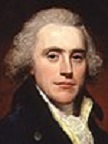
On Mar. 14, 1801 British PM (since Dec. 19, 1783) William Pitt the Younger (1759-1806) resigns along with Viscount Castlereagh when George III rejects his plans for linking the Act of Union with Ireland with the emancipation of Irish Catholics, and approaches anti-emancipationist Henry Addington (1757-1844) about replacing him as PM, becoming British PM on Mar. 17 (until May 10, 1804).

On Mar. 31, 1801 the Danish colonies in the Virgin Islands surrender to the British; on Apr. 2 the British under adm. Sir Hyde Parker (1739-1807), aided by newly-promoted vice-adm. Lord Nelson (who accepts service under Parker despite rank) destroy most of the Danish fleet in the Battle of Copenhagen Roads (Harbor), during which Nelson ends up taking charge, and ignores a signal from Parker to withdraw by putting a telescope up to his blind right eye and declaring he can't see any signal; the Danish fleet is almost destroyed, but they hurt the British enough to sign a peace treaty on Oct. 23, allowing Denmark to quit the leaderless League of Armed Neutrality and flourish again, playing all sides; Nelson is created viscount for his big V - give me a box of Dutch Masters?
In 1801 the Royal Military College (RMC) is founded in Great Marlow and High Wycombe, Buckinghamshire, England by British CIC (1795-1809) Prince Frederick, Duke of York, moving in Oct. 1812 to Sandhurst in Berkshire, encouraging prof. merit-based training of future officers; in 1947 it is combined with the Royal Military Academy ("the Shop") in Woolwich (founded 1741) as the Royal Military Academy Sandhurst.


On May 10, 1804 after an assult on his war policies by the Genvillies, Foxites, and Pittites, British PM (since Mar. 17, 1801) Henry Addington resigns, and former PM (1783-1801) William Pitt the Younger becomes PM of England again (until Jan. 23, 1806), and his Protestant Irish friend Robert Stewart, Viscount Castlereigh (1769-1822) becomes secy. of state for war and the colonies (until 1806); next Jan. after Pitt arranges it, Addington becomes lord pres. of the council, with the peerage of Viscount Sidmouth to prevent him from sitting in the House of Commons.


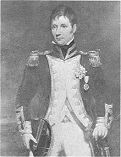
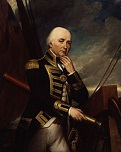
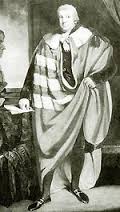
Hands across the water, hands across the sky, or, Bloody Trick or Treat, What What? England gets its world-class naval hero? On Oct. 21, 1805 (Mon.) after the French fleet under vice-adm. Pierre Charles Jean Baptiste Silvestre de Villeneuve (1763-1806) breaks out of Toulon and eludes the British fleet under vice-adm. Horatio Nelson, 1st Viscount Nelson, 1st Duke of Bronte (b. 1758), then takes refuge in Cadiz and receives reinforcements from the Spanish navy, bringing them up to 33 ships (vs. 27 for the British), and slowpoke Nelson catches up and blockades it, the French break out of the harbor again, beginning the naval Battle of (Cape) Trafalgar (Britain's greatest sea battle?) between Gibraltar and Cape Roche outside Cadiz, resulting in a decisive V for the British, dashing Napoleon's hopes of invading England and establishing British sea supremacy for the next 150 years; Adm. Nelson, aboard his flagship HMS Victory leads the charge that breaks through the center of the French line between Bucentaure and Redoubtable, capturing 10 French and 11 Spanish ships, with no British ships lost, and a total of 1,666 British casualties (458 KIA and 1,208 wounded) vs. 13,781 French-Spanish casualties, incl. 3K POWs drowned in a storm after the battle; Victory suffers 57 KIA and 102 wounded, with Redoutable attempting to board her but suffering a devastating broadside from the 98-gun HMS Temeraire, commanded by Adm. Sir Eliab Harvey (1758-1830), known for recklessly gambling his family fortune in London, who also forces the surrender of the Fougueux, causing him to create the family motto "Redoubtable and Fougueux"; Nelson signals the famous message "England expects that every man will do his duty", and is wounded several times by French sharpshooters before meeting his death as the battle ends from a musket ball from Redoubtable that enters his left shoulder and lodges in his spine, dying at 4:30 p.m. and giving a last order to anchor the fleet, which is countermanded by his 2nd in command vice-adm. of the blue Cuthbert Collingwood (1748-1810), who succeeds Nelson as CIC, transferring his flag from the damaged Royal Sovereign to the Euryalus, attempting to tow damaged vessels until a storm wrecks many prizes incl. Redoubtable on the rocky shore while others are destroyed to prevent capture, getting Collingwood a promotion on Nov. 9 to vice-adm. of the red along with a peerage as Baron Collingwood of Northumberland, along with a £2K/year pension and his 3rd gold medal from Parliament (joining Nelson and Sir Edward Berry); Victory is towed by HMS Neptune to Gibraltar for repairs, then flies a black sail on its return voyage to England; Villenueve is captured by the English, and returned to France next year; in Nov. Adm. Horatio Nelson's elder brother William Nelson (1757-1835) is created 1st Earl Nelson of Trafalgar; Portugal restores relations with its old ally Britain, causing France to declare the 1801 Treaty of Badajoz cancelled, leading to the 1807-10 Peninsular War.


On Jan. 23, 1806 PM (since May 10, 1804) William Pitt the Younger (b. 1759) dies of a stroke (unsaved, according to William Wilberforce), and on Feb. 11 his Whig cousin William Wyndham Grenville, 1st Baron Grenville (1759-1834) becomes British PM (until Mar. 25, 1807), forming the Ministry of All the Talents, with George III's least favorite guy (a William Wilberforce supporter) Honourable Charles James Fox (1749-1806) as foreign minister as a loss leader; Pitt followers, led by George Canning refuse to join; strong abolitionists Grenville and Fox decide to introduce William Wilberforce's slavery abolition bill in the House of Lords first, and do so next Jan; meanwhile they try to end the war with France in vain.

On Mar. 25, 1807 after William Greenville's Ministry of All the Talents collapses over the failure to make peace with France or accomplish Catholic emancipation, British PM (since Feb. 11, 1806) William Grenville, 1st Baron Grenville resigns, and on Mar. 31 former PM (Apr. 2-Dec. 18, 1783) William Henry Cavendish-Bentinck, 3rd Duke of Portland (1738-1809) (a former conservative Whig turned Pittite Tory after the French Rev.) becomes British PM (until Oct. 4, 1809).

On Oct. 4, 1809 after British PM (since Mar. 31, 1807) William Cavendish-Bentinck, 3rd Duke of Portland (b. 1738) has a stroke, Tory Pittite Spencer Perceval (1762-1812) becomes British PM (until May 11, 1812), issuing the soundbyte "I have nothing to say to the nothing that has been said."



On May 11, 1812 British Tory PM (since Oct. 4, 1809) Sir Spencer Perceval (b. 1762) is assassinated in the House of Commons by Liverpool businessman John Bellingham (b. 1769) (who is hanged on May 18), becoming the first British PM assassinated (next ?), and is succeeded on June 8 by freedom-of-speech stomper Tory Pittite Robert Banks Jenkinson, 2nd Earl of Livepool (1770-1828) (until Apr. 9, 1827).
On June 1, 1812 after France fails to close the leaks in their British blockade, causing a boom in British textiles in supplying Nappy's enemies, causing Napoleon to promise to repeal his blockade, followed by the Brits failing to revoke their restrictions on neutral trade with French-held Europe, pissing-off the U.S., Pres. Madison gives a speech, reciting a long list of British injuries (seizure of cargoes, impressment of seamen), which they had only responded to with "remonstrances and expostulations", then claims that there is "on the side of Great Britain a state of war against the United States, and on the side of the United States, a state of peace toward Great Britain"; even though the northeasterners vote against war, the "War Hawks" of the South and West, crying "free trade and seamen's rights", with their eyes on a possible takeover of Canada and pacification of Indian tribes in the NW railroad the U.S. House on June 4 into a war resolution by a 79-49 vote, followed on June 18 by a 19-13 vote in the Senate after Pres. Monroe becomes the first U.S. pres. to ask for a declaration of war, and the War of 1812 (Mr. Madison's War) (Second War of Independence) on Great Britain begins (ends Feb. 17, 1815); too late, on June 16 the British finally lift their restrictions on neutral trade without their knowledge; the U.S. Navy at first consists of only 16 seagoing vessels, vs. 1K+ for the British, and the war is very unpopular in New England, at first being ignored in favor of illegal trading and privateering, but when the fall of Napoleon allows the British to extend their blockade to New England and occupy Maine, it is considered a Southern plot to ruin them as ships rot in North Atlantic ports and goods pile upon the docks of Boston, Salem, and Marblehead; the Kickapoo, Wyandot, Shawnee (Northwest Indians), Sac and Fox, and other tribes fight with the British against the Americans (perhaps their last hurrah?); the Colonial Marines, formed in 1808 by the British from runaway black slaves who are promised their freedom if they fight serve from May 18, 1814-Aug. 20, 1816, mainly stationed at St. Augustine, Fla. and the Negro Fort (Fort Gadsden) on the Apalachicola River in NW Fla., pissing-off white slaveowners, who wait till they are disbanded then destroy their fort in the July 27, 1816 Battle of Negro Fort; New York Gov. (1807-13) Daniel D. Tompkins raises 40K militia using his personal fortune as security for equipment.
On Aug. 8, 1814 peace negotiations between Britain and the U.S. open in Ghent in East Flanders, Belgium; on Dec. 24 (as Xmas dinner is cooking?) the Treaty of Ghent between Britain and the U.S. (negotiated by John Quincy Adams) is concluded, but does not reach the U.S. until after the Jan. 8, 1815 Battle of New Orleans; it restores the status quo ante, returning all captured territory to the original owner before the war - it came and ghent?
Washington, D.C. is sacked by British brutes? In early Aug. 1814 the British fleet attempts to create a diversion for their northern invasion forces by entering Chesapeake Bay, landing 4.5K troops in Benedict, Md. (40 mi. from Washington) on Aug. 19, and on Aug. 24 routing a hastily assembled U.S. force at the Battle of Bladensburg (the first time a U.S. pres. personally leads troops into battle until ?); on the same night they march into undefended Washington, D.C., and some British officers eat a meal prepared for Pres. and Mrs. Madison, who had fled with the 7K soldiers and 400 soldiers to Virginia (Dolley Madison remembers to have the Declaration of Independence packed up and sent to safety); they then enter and burn every public bldg. in Washington, D.C. (White House, Capitol, Library of Congress, etc.), except the Patent Office, and capture the city on Aug. 25, but a "most tremendous hurricane" (tornado?) arrives suddenly, followed by a thunderstorm, which first compounds the damage then puts out the fires, causing the Brits to withdraw to attack heavily-defended Baltimore after Cockburn orders a newspaper publishing house destroyed, with the immortal soundbyte: "Be sure that all the C's are destroyed so that the rascals cannot any longer abuse my name", Cockburn's portrait standing in front of burning Washington, D.C. is printed weeks later in London; in the fall the U.S. Congress meets in the Patent Office; next Feb. Congress appropriates restoration funds, and the bldgs. are rebuilt by 1819; the burned President's Mansion is painted white, becoming the White House (not called that until the FDR admin.); the Library of Congress is restocked with 6.5K books from Thomas Jefferson's library.
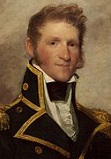
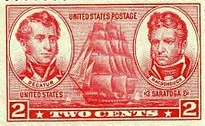
On Sept. 11, 1814 U.S. Navy Capt. (Master-Commandant) Thomas Macdonough Jr. (1783-1825) scores a V at the naval Battle of Plattsburg Bay (Lake Champlain) on Lake Champlain after his fleet of four ships and 10 rowing galleys anchored across the mouth of Plattsburg(h) Bay, manned by 5K Yankees and Green Mountain boys defeat four British ships, 12 rowing galleys, and 14K British "myrmidons" and capture their flotilla, denying the British control of the lake and allowing the Americans to turn back their 2nd big invasion force under Gen. Sir George Prevost; Pres. Theodore Roosevelt later calls him "the greatest figure in our naval history down to the time of the Civil War"; in 1937 after urging by Pres. Franklin D. Roosevelt, a 2-cent postage stamp is issued featuring Macdonough and Stephen Decatur.

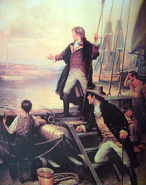

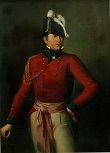


The U.S. gets its national anthem when a battered flag becomes a symbolic star of hope? On Sept. 12, 1812 the Battle of North Point is fought near Baltimore as the British attempt to deal a death blow to whimpy America, but instead encounter 13K soldiers fortifying the heights behind the city on an island in Baltimore harbor, incl. 1K men at military prison Ft. McHenry, named after DOI signer and 1796-1800 secy. of war (pres. of the Baltimore Bible Society) James McHenry (1753-1816); on Sept. 12 Irish-born British CIC of North Am. maj. gen. Robert Ross of Bladensburg (b. 1766) (in charge of invading Washington, D.C.) is KIA by snipers; on Sept. 13 Washington atty. Francis Scott Key (1779-1843) visits the British fleet in Chesapeake Bay to secure the release of Dr. William Beanes (1749-1828), who had been captured following the burning of Washington; the release is secured, but Key is detained on the British ship HMS Minden (bearing the flag of truce) overnight during the British bombardment of Ft. McHenry; the next morning (Sept. 14) Key is delighted to see the U.S. flag still flying over the fort, and writes the 4-verse poem The Star-Spangled Banner, AKA Defense of Fort M'Henry, which is pub. on Sept. 21 in The Baltimore American, coining the term "star-spangled banner"; the first verse "Oh, say can you see... the home of the brave" is 80 words long; later it is sung to the English drinking song To Anacreon in Heaven by British composer John Stafford Smith (1750-1836), and in 1931 Congress adopts it as the U.S. nat. anthem; after unsuccessfully bombarding Ft. McHenry on the night of Sept. 13-14, the British fleet abandons its campaign, and in Oct. sails for Jamaica.
On Oct. 17, 1814 a 320K-gal. vat in the Mieux and Co. Brewery of Richard Meux in St. Giles, London, England erupts, killing eight people in the tidal wave "by drowning, injury, poisoning by porter fumes, or drunkenness."
In Nov. 1814 Andrew Jackson invades Spanish Fla. without authorization and takes Pensacola to end British intrigues there, then returns to erect defenses on the approaches to New Orleans. In Nov a large British fleet carrying 7.5K veteran troops commanded by Maj. Gen. Sir Edward Michael Pakenham (1778-1815) (pr. PAYK-en-ham), replacement for Gen. Robert Ross (b. 1766) (KIA on Sept. 12 by a sniper) as CIC of the British Army of North Am. sails from Jamaica for New Orleans in an attempt to seize control of the Mighty Mississippi River, and on Dec. 15 enters Lake Borgne, E of New Orleans, while Gen. Andrew "Andy" Jackson declares martial law and conscripts a motley army to defend the city, attacking a British advance party on Dec. 23 at the Villere plantation 8 mi. S of New Orleans, then withdrawing 2 mi. N to modern-day Chalmette, establishing a 1-mi.-long defensive line in a dry irrigation canal running from the Mississippi to a cypress swamp; on Dec. 26 the British attack Jackson's 5K men but are turned back by his 12 batteries of artillery.
We fired our guns and the British kept a-comin'? On Jan. 1, 1815 an artillery duel ends in an American success, then on Jan. 8 (Sun.) the Battle of New Orleans (last major battle of the War of 1812) sees British Maj. Gen. Edward Pakenham (b. 1778) throw his 5.3K elite troops in two columns through the early morning fog; too bad for them, the fog lifts, exposing them to horrendous casualties from concentrated Am. fire; the British reform 2x, but break off the fight after Pakenham is KIA; the Brits suffer 291 KIA, 1,262 wounded, and 484 captured or missing; Am. losses total 13 KIA, 39 wounded, and 19 missing, making Andrew "Andy" Jackson (1767-1845) a nat. hero; French pirate Jean Lafitte (1776-1825) (who learned of a $500 bounty on his head by La. gov. William Charles Cole Claiborne (1775-1817) in 1813 and responded by offering his own $15K bounty on him) assists but doesn't fare as well until the 1958 MGM film The Buccaneer (dir. by Anthony Quinn) comes out?; Pakenham's body is pickled in a barrel of rum like a ham and packed off to his ship to see his wife, who is waiting for good news; the British slink away and sail from Lake Borgne in SE La. on Jan. 25.


On Jan. 29, 1820 blind, deaf, and mad king (since Oct. 25, 1760) George III (b. 1738) dies in Windsor Castle, and his son the Prince Regent ("Prinny") ("Prince of Whales") succeeds him as George IV (1762-1830) (53rd British monarch) (until June 26, 1830), going on to be dominated by favorites and lead a dissolute irresponsible life, which pisses-off the public who have to pay for his lifestyle; his unsuccessful attempts to divorce his Rubenesque Catholic wife Caroline of Brunswick (1768-1821) (who is excluded from the coronation, and later arrives from Italy to claim her rights as queen consort) lead to widespread unpopularity, and a bill introduced before the House of Lords to deprive her of her title and dissolve the marriage on the grounds of adultery is withdrawn, although the public doesn't know about her bad B.O. and the pair's mutual infidelities; subject of the 1996 Sheree Folkson film A Royal Scandal; George IV orders his boots to be made to fit his left and right feet individually, ending the design of shoes for wear on either foot; in Apr. after delaying for fear of offending the old kinga, two productions of Shakespeare's King Lear are put on.




On Aug. 9, 1822 paranoid British foreign secy. (since 1812) Robert Stewart, Viscount Castlereagh, 2nd Marquess of Londonerry (b. 1769) meets with George IV and claims that he is being blackmailed for homosexuality, then on Aug. 12 commits suicide by cutting his throat With a letter opener, and his old enemy George Canning (1770-1827) (whom Castlereagh had wounded in the thigh in a duel on Sept. 21, 1809) is given his jobs as foreign secy. and leader of the Commons, where, with the help of new home secy. Sir Robert Peel (1788-1850) (who goes on to reform the medieval penal code and set up the first metro police force) and new board of trade pres. William Huskisson (1770-1830), the liberal wing of the Tories dominate British politics (until 1830); after Castlereagh is not buried with a stake in his heart at a crossroads like British law requires for suicides, there is a public outcry over an elitist coverup, and his Aug. 20 funeral procession to Westminster Abbey is jeered, after which Lord Byron (1788-1824) pens the immortal lines: "Posterity will ne'er survey/ A nobler grave than this:/ Here lie the bones of Castlereagh:/ Stop, traveler, and piss"; the stake-in-the-crossroads law is eliminated next year after one or two more less connected suicides get it.

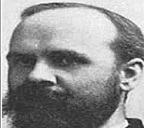
On Apr. 7, 1824 the Mechanics' Inst. is founded in Manchester, England by chemist John Dalton (1766-1844) et al. to provide a scientific education for the working man based on the ideas of Thomas Hodgskin (1787-1869); on Oct. 1, 2004 it is merged into the Victoria U. of Manchester to form the U. of Manchester Inst. of Science and Technology (UMIST).

On Sept. 27, 1825 the Stockton and Darlington Railway in NE England, invented by George Stephenson (1781-1848) begins operation, becoming the world's first steam-powered railroad carrying public cargo; it begins carrying fare-carrying passengers in 1833.

On Jan. 5, 1827 British heir presumptive (since 1820) Prince Frederick, "the Old Duke" of York and Albany (b. 1763) (George III's 2nd son) dies of dropsy, making William IV the heir presumptive.



On Feb. 17, 1827 British PM (since June 8, 1812) Robert Banks Jenkinson, 2nd Earl of Liverpool (1770-1828) has a stroke of apoplexy (14 years, 305 days), and is forced to retire on Apr. 9; on Apr. 12 after George IV is forced to accept him, poor-born Tory foreign secy. and orator star George Canning (1770-1827) becomes PM (until Aug. 8), and even though the French Rev. had turned him from a liberal into a conservative, his opposition to Euro powers meddling in the affairs of other states and his support of abolition cause the reactionary wing of the Tories to resign and form the "High (Ultra) Tories" (the remaining Tories being called the Canningites), causing him to have to accept Whigs in his cabinet, but he dies on Aug. 8 after 119 days in office (shortest period in office of any British PM until ?) before he can solidify control; on Aug. 31 Frederick John Robinson, 1st Viscount Goderich (1782-1859) (1st Earl of Ripon starting in 1833) (AKA Goody Goderich) becomes British PM (until Jan. 8, 1828), continuing to lead a mixed Tory-Whig cabinet, his shaky leadership causing several Tories to step in as unofficial PM until he resigns.

On June 26, 1830 demented, overstuffed, overindulged king (since Jan. 29, 1820) George IV (b. 1762) dies of a stomach hemorrhage, and his 65-y.-o. brother (3rd son of George III) William IV (1765-1837) ("the Sailor King") is crowned (54th British monarch) (until June 20, 1837); in June a Speech by the Duke of Wellington in Parliament signals that the Tories are not amenable to a reform of the electoral system.


On Nov. 15, 1830 the Duke of Wellington's govt. is defeated in a vote in the House of Commons, and William IV asks Whig leader Charles Grey, 2nd Earl Grey (Viscount Horwick) (1764-1845) to form a new govt., and on Nov. 22 he becomes British PM (until July 9, 1834), ending 60 years of Tory control of the Commons, allegedly receiving a gift of Earl Grey Tea from a Chinese mandarin, containing the key ingredient of oil of bergamot (cross between pear lemon and Seville orange); John Charles Spencer, 3rd Earl Spencer (AKA Viscount Althorp) (1782-1845), known for working to improve bankruptcy laws becomes Whig leader of the Commons; the Tories split into the Ultras and the Conservatives (really moderates), the latter group headed (although he refuses to be its leader) by Sir Robert Peel, and using the name conservative to mean that they will consider reforms but still want to conserve all that they believe is best in society; Lord Palmerston becomes foreign minister (until 1841); the magnificent dandies centered around George IV become unfashionable, go bankrupt and flee to Paris to write their memoirs; Scottish MP Henry Peter Brougham is raised to 1st Baron Brougham, and made lord chancellor on Nov. 22 (until Nov. 1834), going on to sponsor abolitionist legislation.
We Americans don't have the amenities at home that you Brits afford us here? On July 26, 1833 while white Americans cower in fear of freeing black slaves for fear of racial amalgamation, the Whig-dominated British House of Commons, enjoying a comfortable remoteness from its black slaves passes the Slavery Abolition Act (introduced by colonial secy. Lord Stanley and supported by Lord Brougham), giving all British slaves their freedom starting next Aug. 1 and compensating slave owners to the tune of £20M, which takes 40% of Britain's nat. budget, and the loan isn't paid off until 2014; it is given royal assent on Aug. 28; the British Anti-Slavery Society is disbanded; lifelong English abolitionist leader William Wilberforce (b. 1833) hears the good news before dying on July 29, his last words being: "Thank God that I should have lived to witness a day in which England was willing to give twenty millions sterling for the abolition of slavery"; too bad, the law is initially applied only in the West Indies, and it goes on in Sierra Leone until Jan. 1, 1928; on Dec. 4 William Lloyd Garrison, returning from a trip to England with his batteries recharged helps found the Am. Anti-Slavery Society in Philadelphia, Penn., and becomes its pres. in 1843-65.

In Dec. 1833 Portsea, Portsmouth-born Charles John Huffam Dickens (1812-70) pub. his first fictional piece Mr. Minns and His Cousin (A Dinner at Poplar Walk) in Old Monthly Mag., going on to pub. Sketches by Boz (short stories) in Old Monthly Mag. and Morning Chronicle. In 1836 he pub. Posthumous Papers of the Pickwick Club (The Pickwick Papers) (serialized in 1837); begins as lit. commentary for humorous drawings by Robert Seymour at Chapman and Hall, bringing him instant fame and going internat., with 400K copies sold per mo.; Mr. Samuel Pickwick, pres. of the Pickwick Club; happy-go-lucky medical students Bob Sawyer and Ben Allen. In 1837-9 he pub. Oliver Twist; or, The Parish Boy's Progress, with illustrations by George Cruikshank; Noah Claypole, Mr. Brownlow, 4'6" Artful Dodger Jack Dawkins; workhouse boss (constabular beadle) Mr. Bumble ("the law is a ass"), who dishes out oatmeal, and to whom Oliver issues the immortal soundbyte: "Please, sir, I want some more"; dog-kicking Bill Sykes, his mean bulldog Bull's-Eye and his bird Nancy; his boss, Jewish pickpocket gang king Fagin (Gael. "little ardent one") is hanged at the end, which draws such an angry reaction from Londoners that he tones it down in future eds.; Dicken's best friend is Bob Fagin; Oliver is adopted by Mr. Brownlow and ends up well-fed and happy. In 1837-42 Dickens pub. five of the 14 bestselling books in the U.S., capturing the illiterate and literate markets. In 1838-9 he pub. The Life and Adventures of Nicholas Nickleby; young Nicholas must support his mother and sister after his father dies while dealing with Uncle Ralph, who thinks he's a bum because he goes around rescuing victims of improbable cruelty; Wackford Squeers of Dotheboys Hall. In 1840-1 he pub. The Old Curiosity Shop; Little Nell and her grandfather, whose London curiosity shop is seized for debt by repulsive dwarf Quilp, causing them to flee and wander through the countryside, having many adventures while he pursues them, finally settling in a quiet village; people line up on the New York City docks to learn the fate of Little Nell; "It would take a heart of stone to read the death of Little Nell without laughing" (Oscar Wilde). In 1841 he pub. Barnaby Rudge; his first historical novel, inspired by Sir Walter Scott (1771-1832), about the 1780 Gordon Riots in London, local idiot Rudge and his pet raven Grip at the Maypole Inn in Chigwell, proprietor John Willet, father of Joe Willet, lover of Dolly Varden, daughter of locksmith Gabriel Varden; in 1753 Rudge's daddy Rudge Sr. murdered Reuben Haredale of the Warren and his gardener, switched clothes with the latter and split, then shows up during the Gordon Riots; Edgar Allan Poe gets the idea for "The Raven" from Grip. In 1843-4 he pub. Martin Chuzzlewit; Mrs. Gamp, Seth Pecksniff, Tom Pinch. On Dec. 19, 1843 (Tues.) Dickens pub. A Christmas Carol in Prose, Being a Ghost Story of Christmas; illustrated by John Leech; 28K words, 80 pages; written in six weeks to pay off his debts while finishing "Martin Chuzzlewit", it sells 6K copies in its first week, causing him to write four more "Christmas books", creating a genre; "a Ghostly little book... which shall not put my readers out of humour... with the season"; mean old miser Ebenezer Scrooge, his downtrodden employee Bob Cratchit and his children Tiny Tim, Peter, Martha, Belinda and two nonames, his business partner Jacob Marley, his nephew Fred, his old employer Fezziwig;, Dick Wilkins, laundress Mrs. Dilbert, undertaker's asst. Sparsit, fence Old Joe Hoggs, Caroline and her hubby; begins: "Marley was dead, to begin with"; ends: "And so, as Tiny Tim observed, God Bless Us, Every One!"; popularizes the phrase "Merry Christmas; "Bah! Humbug!" Scrooge becomes a synonym for a miser; has "staves" instead of chapters, since musical notation is written on five staves; "Stave I: Marley's Ghost"; "Stave II: The First of the Three Spirits" (Ghost of Christmas Past); "Stave III: The Second of the Three Spirits" (Ghost of Christmas Present); "Stave IV: The Last of the Spirits" (Ghost of Christmas Yet to Come); "Stave V: The End of It"; Dickens reads it at Birmingham Town Hall on Dec. 27, 1852 in his first-ever public reading - moral: go out and spend big bucks every Christmas? In 1844 he pub. The Chimes. In 1846 he pub. The Cricket on the Hearth; divided into 3 "chirps"; Dombey and Son (1846-8); Paul Dombey, "sole representative". In 1849-50 he pub. his autobio. novel David Copperfield; original title "Mag's Diversions"; Dickens' most popular work, and personal favorite; Leo Tolstoy becomes a big fan; David is born at midnight on a Fri. 3 mo. after his father dies, and his mother Clara, who employs loving nurse Clara Peggoty marries mean Mr. Murdstone (brother of icy Jane Murdstone), who abuses David, breaking his mother's heart enough to kill her, then pulls David out of school and sends him to a grim London blacking factory, where he lodges with ever-overspending good-hearted landlord Wilkins Micawber ("something will turn up") until he is sent to debtors' prison, then runs away, is adopted by great-aunt Betsey Trotwood of Dover (who hates men, and keeps donkeys on her lawn) and her doting hubby Mr. Dick, who send him to school in Canterbury, after which when he grows up he works as a clerk for lawyer Spendlow, whose daughter Dora he marries in Ch. 43, then loses to sickness, after which he marries childhood sweetheart Agnes Wickfield, unattainable dream babe of 'umble greasy-palmed law clerk Uriah Heep (who blackmails lawyer Wickfield and is exposed by Micawber) as his 2nd wife in Ch. 62, realizing his dream of being a writer; Mr. Dick; Barkis; Em'ly Peggoty; harp-playing powder keg Miss Rosa Dartle ("I only ask for information") and her cad lover James Steerforth, who disfigured her lip with a hammer; "I Am Born" (ch. 1); "To begin my life at the very beginning, I was a posthumous child"; coins the phrase "old as the hills". In 1852 he pub. Bleak House (1852-3); the Court of Chancery case of Jarndyce v. Jarndyce; Mr. John Jarndyce of Bleak House and his three wards, incl. the secret illegitimate daughter of Lady Honoria Dedlock, who is blackmailed by her husband Sir Leicester Dedlock's lawyer Josiah Tulkinghorne, leading to both of their deaths; Esther Summerson, Ada Clare, Richard Carstone, Capt. James Hawdon; Mrs. Jellyby, who neglects her family to aid the Borrioboola-Gha on the left bank of the Niger River; the first English novel to feature a detective, Inspector Bucket. In 1854 he pub. Hard Times; industrialist Thomas Gradgrind, who is only interested in Facts, and whose inadequacies result in the failure of his two children. In 1855-7 he pub. Little Dorritt (900 pages); his most popular novel; 1820s seamstress Little Amy Dorritt (based on his ex-girlfriend Maria Beadnell) helps her dad escape Marshalsea Prison in Southwark, London after 20 years (where Dickens' dad was sent in 1824 for a debt of 40 pounds and 10 shillings) after getting her friend Arthur Clemain to settle the debt for 20 pounds; "It is gone now, and the world is none the worse without it"; Barnacle Junior of the Circumlocution Office ("Upon my soul, you mustn't come into the place saying you want to know, you know"). In 1859 he pub. A Tale of Two Cities; 45 chapters about the French Rev. and the railroading and execution of innocents, incl. lookalikes Charles Darnay (Evremonde) (husband of Lucie) and Sydney Carton (who loves Lucie but can't have her, and saves him from the guillotine by taking his place); evil Marquis St. Evremonde, Ernest Defarge, and evil Madame Therese Defarge, who is killed by Miss Pross; Lucie's father Dr. Alexander Manette, who is rescued from 105 North Tower when the Bastille falls, and almost saves Darnay from the Rev. Tribunal until an old anti-Evremonde letter is dug up and used; Book 1: Recalled to Life; Book 2: The Golden Thread; Book 3: The Track of a Storm; "It was the best of times, it was the worst of times, it was the age of wisdom, it was the age of foolishness, it was the epoch of belief, it was the epoch of incredulity, it was the season of Light, it was the season of Darkness, it was the spirit of hope, it was the winter of despair, we had everything before us, we had nothing before us, we were all going direct to Heaven, we were all going direct the other way - in short, the period was so far like the present period..."; "It is a far, far better thing that I do than I have ever done" (Carlton); Jerry Cruncher the resurrection man; the Golden Arm sign. In 1860-1 he pub. Great Expectations; illustrations by Marcus Stone; first pub. in All the Year Round from Dec. 1, 1859-Aug. 3, 1860; Philip Pirrip (Pip) is told he has great you know whats; Miss Havisham, Abel Magwitch, Estella, blacksmith Joe Gargery, Mr. Jaggers, Wemmick, actor Mr. Wopsle, Biddy. In 1864-5 he pub. his last novel Our Mutual Friend; illustrations by Marcus Stone: "The question [with Mr. Podsnap] about everything was, would it bring a blush into the cheek of the young person [Podsnap's daughter Georgiana]" (Ch. 11); dedicated to Sir James Emerson Tennent "as a memorial of friendship". Dickens dies on June 9, 1870, leaving 38 major works and 10K pub. letters, along with the unfinished novel The Mystery of Edwin Drood, stopping in the middle of Ch. 23 "The Dawn Again" (Ch. 1 is "The Dawn"); about Edwin Drood, whose opium-addicted choirmaster uncle John Jasper is in love with his pupil Rosa Bud, Drood's fiance, after which Drood is found missing, and mutual admirer Neville Landless (who arrived from Ceylon with his twin sister Helena) is suspected, although Jasper really did it?; on June 14 he is buried in Poet's Corner in Westminster Abbey.


On July 16, 1834 Liberal William Lamb, 2nd Viscount Melbourne (1779-1848) becomes British PM (until Nov. 14). On Oct. 16, 1834 the Palace of Westminster in London, England (home of the British Parliament) burns down after the burning of exchequer tally sticks gets out of hand. On Dec. 9, 1834 the Hundred Days begin (ends Apr. 8, 1835) following the Nov. 14 dismissal of Lord Melbourne's ministry (begun July 16) by William IV over Irish church policy after the king invites the Duke of Wellington to replace him, and he declines and suggests Sir Robert Peel (1788-1850), who is on holiday in Italy but is tracked down on Nov. 25 and returns to take up his new posts of PM and chancellor of the exchequer on Dec. 9; on Dec. 18 he issues the Tamworth Manifesto in an attempt to get reelected, laying down the principles of the modern British Conservative Party, accepting the 1832 Reform Act as "a final and irrevocable settlement of a great constitutional question" while distancing it from the brand of conservatism of "Old Tory" Wellington, with the motto "Reform to survive" while avoiding "a perpetual vortex of agitation" from unnecessary change.
In Jan. 1835 the British gen. election keeps PM (since Dec. 10) Sir Robert Peel's Tories in the minority, and he resigns on Apr. 8; on Apr. 18 William Lamb, 2nd Viscount Melbourne becomes PM again (until Aug. 30, 1841).



Veni, Vidi, Vicki? On June 20, 1837 king (since June 26, 1830) William IV (b. 1765) dies of pneumonia, ending the personal union of Great Britain and Hanover (since 1714), and despite nasty rumors that he intended to murder his niece Victoria and seize the British throne, George III's 5th son Ernest Augustus I (1771-1851) becomes king of Hanover (until Nov. 18, 1851); meanwhile in Britain William IV is succeeded by his 18-y.-o. niece (daughter of Duke Edward Augustus of Kent and Princess Victoria Mary Louisa of Saxe-Coburg) Victoria Alexandrina (1819-1901) as Queen of the United Kingdom of Great Britain and Ireland 27 days after her 18th birthday (until Jan. 22, 1901), becoming the 55th British monarch (last to not be the child of a British monarch until ?) (the 4th/5th/6th female British monarch, depending on whether you accept Queen Maud and Lady Jane Grey); the nosegay (tussie-mussie) becomes a popular fashion accessory, along with their floral symbolism; the long long Victorian Age goes in like a lamb as she develops a friendship with Liberal statesman William Lamb, 2nd viscount Melbourne, who broadens her thinking, pissing-off the Conservatives, not to mention her near-scandalous love of late-night parties - want lashes that make a dramatic statement?


In Jan. 1839 after getting the first British consulate opened in Jerusalem, ardent Zionist Tory MP Anthony Ashley Cooper, 7th Earl of Shaftesbury (1801-85) pub. an article in the Quarterly Review proposing resettlement of Jews in Palestine, the first by a major politician, and talks British foreign secy. Henry John Temple, 3rd Viscount Palmerston (1784-1865) (AKA Pam) into stepping up plans to return Jews; next Nov. 4 he takes out a full-page ad in the Times of London addressed to the Protestant monarchs of Europe, calling for them to help restore the Jews to the Holy Land, which stirs up a group of 320 Christians to send a letter to Palmerston on Mar. 2, 1841 "to remind your Lordship that the land of Palestine was bestowed by the Sovereign of the Universe upon the descendants of Abraham as a permanent and inalienable possession nearly 4,000 years ago, and that neither conquests nor treaties among men can possibly affect their Title to it. He has also decreed that they shall again return to their country and that the Gentiles shall be employed as the means of their restoration."
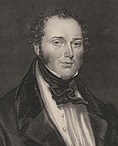
In June 1839 after Protestant Irish (Cork) MP (since 1832) Feargus Edward O'Connor (1796-1855) is unseated in 1835 for failing to meet property qualifications, pissing him off and causing him to start the Nat. Land Co. (Land Plan), a reform movement to give small landholdings to laoborers, the First Chartist Petition (first pub. in May 1838) is presented to Parliament along with 1.25M signatures, calling for universal male suffrage without a property requirement, salaries for MPs, annual gen. elections and secret ballot, getting the nat. working class Chartist Movement in Britain off to a bang, garnering 1,283K signatures; too bad, they reject it by 235-46, after which many leaders are arrested for calling a gen. strike, and O'Connor gives his Manchester Speech, threatening violence on Sept. 29 if the demands are not met, causing 3K demonstrators led by John Frost (1784-1877) of Blackwood, Caerphilly to march on Newport Prison in Monmouthshire on Nov. 4, hoping to spark a Britain-wide revolt against the govt. and gentry, which the govt. answers by firing on the crowd, killing 24 and wounding 40 - you have no more rights than crap in a toilet in Britain?
On Nov. 3, 1839 after the Chinese attempt to curb British imports of opium, detaining British ships and destroying 2.64M lbs. of British opium, the First Anglo-Chinese (Opium) War begins (ends Aug. 29, 1842); Chinese junks prove no match for British warships, so it's a cakewalk for the British, although it's a big country?

In July 1841 a Conservative V in the British gen. election causes Whig PM Lord Melbourne to resign, allowing Conservative Tory Sir Robert Peel (1788-1850) on Aug. 30 to become PM and chancellor of the exchequer again (until June 29, 1846), forming a cabinet incl. future PMs Wellington, Ripon, Stanley, Aberdeen, Gladstone and Disraeli; the Tories inherit five years of deficits caused by the blundering finances of the Liberal Whigs; Lord Aberdeen directs the foreign policy of the cabinet (until June 29, 1846); dick-whipped conservative Victoria avidly supports the Tories, and listens to her hubby's arguments that the sovereign's head, er, hole, er, roll, er, role in state affairs should not be strictly advisory - mister mike just don't talk, baby, it rules?




The worst retreat in British history and it's where, the country that has not been conquered since Alexander the Great? On Jan. 6, 1842 an uprising causes 4.5K British troops and 12K native auxiliaries under incompetent Scottish-born maj. gen. William George Keith Elphinstone (1782-1842) to decide to retreat from Kabul to Jalalabad 90 mi. away, but they are ambushed on Jan. 8 (Sat.) at the narrow (5-150 yd.) Khoord-Kabul (Khyber) Pass (home of the Afridi tribe) by the Ghilzais border tribe under Mohammad Akbar Khan, after which the remnants are wiped out on Jan. 13 near Gandamak, with one Brit, asst. surgeon William Brydon (1811-73) allowed to escape to tell the other Brits the horror story; the British keep a stiff upper lip and send more forces, force the pass in Sept. and seige Kabul; Shah Shoja is murdered, the British take Kabul, declare victory, and retreat, er, leave on Oct. 11, allowing Dost Mohammed to return to power (until 1863), ending the First Anglo-Afghan War (begun 1839); in May Mohammad Akbar Khan becomes emir of Afghanistan (until 1845) - the Afghans don't teach them Westerners any lasting lessons?
On Aug. 29, 1842 the First Anglo-Chinese (Opium) War (begun Nov. 3, 1839) is ended by the Treaty of Nanking, confirming the cession of Hong Kong to the British drug lords, and making Canton a treaty port open to foreign trade, freeing the Brits to addict millions of Chinese to opium (until 1908) under Hong Kong gov. #1 (June 26, 1843-May 8, 1844) Sir Henry Eldred Curwen Pottinger (1789-1856) (June 26, 1843 to May 8, 1844) - it's going to be a bright sunshiny day?
In 1844 Railway Mania sweeps Europe (ends 1847), spurring vast extensions of the railroad network; British railroad mileage goes from 26 in 1828 to 2,236 this year.
In 1845 pop. of Ireland: 8M (vs. 4M in 1800, and 6M in 1850); Potato Late Blight (Phytophthora infestans) imported from the Americas infects potato crops in Ireland, which, combined with the prior reduction from four potato varieties (Black, Apple, Cup, Lumper) to one (Lumper, the least tasty, but most prolific) causes starvation to a large portion of the Irish this autumn and next winter, causing 32K to migrate to Quebec (70K more next year) in "coffin ships", dying of cholera and being buried in mass graves on shore; the avg. Irish person consumes 10 (70?) potatoes a day; there are 65K Irish potato farms of an acre or less; total potato acrage: 6M; total potato production: 15M tons/year, reduced 90% by the famine; PM Peel (Potato Peel?) proposes repeal of the Corn Law and importation of Indian corn to make food as cheap as possible, but his cabinet refuses to support him, so he resigns; attempts of Lord John Russell to form a Whig cabinet fail, and Peel returns with a new cabinet pledged to the repeal of the Corn Law.

In 1845 the Royal College of Chemisty is founded in London, England by chemist Robert Warington (1807-67) et al., merging with the Royal School of Mines in 1852 and becoming the first constituent college of Imperial College London before closing in 1872.

On June 29, 1846 British PM (since Aug. 30, 1841) Robert Peel resigns, and on June 30 Robert Peel is succeeded as PM by liberal Whig leader "Little Giant" John "Languid Johnny" Russell, 1st Earl Russell (1792-1878) (grandfather of philosopher Bertrand Russell) (until Feb. 23, 1852); Lord Stanley becomes leader of the Conservative Party, with Bentinck as their leader in the House of Commons, who calls for a major railroad construction program in Ireland to alleviate the famine; now both the Tories (Conservatives) and Whigs (Liberals and Radicals) are divided, but it takes until 1868 to realign them into the Liberal and Conservative Parties, all cabinets in the meantime being weak and patched together from both parties; the Peelites are absorbed by the Liberal Party in 1859; William Gladstone becomes a leading Peelite; Lord Palmerston, known as Lord Cupid for his womanizing becomes foreign minister again (until 1851), getting into a war with the queen, who wants foreign policy to be her (hubby's?) prerogative.
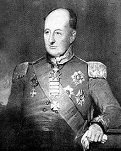
In Jan. 1847 former Cape Colony gov. (1834-8) Lt. Gen. Sir Benjamin Alfred d'Urban (1777-1849) is appointed cmdr. of British forces in British North Am., setting up HQ in Montreal until his death on May 25, preparing for a possible U.S. invasion over border disputes.
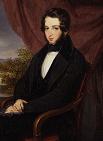
On July 29-Aug. 26, 1847 the 1847 British Gen. Election becomes a V for the Conservatives led by Lord Stanley, with 367 seats, vs. 271 for the Whig Party led by Lord John Russell, while the free trader Peelites led by former PM Sir Robert Peel exit the Whig Party; the Irish Repeal Party of John O'Connell wins 20 of 329 seats; Liberal Lionel Nathan de Rothschild (1808-79), son of British Jewish banking house founder Nathan Mayer Rotschild is elected to the British House of Commons from the city of London; too bad, he won't take a Christian oath to be seated, causing a political struggle, with Lord Russell proposing that the oath be amended to allow him to take his seat, and Benjamin Disraeli backing him, arguing that Christianity is "completed Judaism", with the soundbyte: "Where is your Christianity if you do not believe in their Judaism?", while Oxford Bishop Samuel Wilberforce argues against it, implying that the Jews paid Russell off, after which all but one member (Disraeli) of the future protection cabinet votes against the measure; Conservative Commons leader Lord George Bentinck resigns, and is succeeded by Lord Granby; in 1858 Rothschild is finally allowed to take a Jewish oath, after which in 1868 Queen Victoria refuses to elevate him to the House of Lords, but mellows and elevates his son Nathan Mayer de Rotschild in 1885, who becomes the first unconverted Jewish member.





In 1850 the pop. of China: 430M, Germany: 34M, France: 33M, Spanish-speaking America: 22.5M, Great Britain: 21M, Brazil: 7.2M. In the 1850s Chinese laborers begin migrating to the Malay Peninsula to work in tin mines, with many ending up as coastal pirates. The Euros decide that profit trumps Christ in China? On Feb. 25, 1850 emperor (since 1820) Qin Dao Guan (b. 1782) dies, and on Mar. 9 Qin Xian Feng (Qing Hsien-fung) (Chin. "universal prosperity") (1831-61) becomes Qing (Manchu) emperor #7 of China (until Aug. 22, 1861); after bribing a midwife to coverup her lack of virginity, cagey Manchu babe Cixi (Tzi-Hi) (Tsu-Hsi) (1835-1908) enters his harem as a concubine, 5th rank, then gives him some hot hsien-fung, bearing son (future emperor) Tong Zhi (Tung-chih) in 1856, receiving a promotion to 2nd rank in 1858; when the 30-y.-o. old man dies she proves she's done her homework, going on to virtually rule China for half a cent.; meanwhile S Chinese peasants demanding land and equality, led by Hong Xiuquan (Xichuan) (Hung Hiu-Tsuen) (Hong Huoxiu) (Renkun) (1814-64), a Hakka Christian who had studied under Southern Baptist missionary Issachar Jacox Roberts (1802-70), and had made many converts, becoming Taiping heavenly king next Jan. 11 (until June 1, 1864), claiming to be the brother of Jesus Christ, and becoming known for keeping a Saturday Sabbath and eschewing tobacco and opium, burning it wherever found, begin the 14-year Taiping (Chin. "great peace") Rebellion (ends Aug. 1864); Hong Xiuquan proclaims himself emperor of the Taiping Heavenly Kingdom, attacks Peking, and takes Nanking (1854) and Shanghai from the Manchus, making thousands of Christian converts, albeit with a fractured trans. of the Bible; too bad that they destroy all idols, incl. statues of Christian saints and the Virgin Mary, pissing-off the Jesuits, who drag in the French to support the Manchus, and make the U.S. and British missionaries (who together had only made 1.5K converts) jealous, causing them to begin spreading disinfo., calling them pagans and accusing them of atrocities; worse of all, the British get mad at loss of opium revenue and send arms to the Manchus, which PM Gladstone later calls a black mark on British history?; the Taiping Heavenly Kingdom in S China grows to 30M people before it is brutally crushed, with 20M killed by the Qing Dynasty under gen. Zuo Zongtang (Tso Tsung-t'ang) (1812-85) (AKA Gen. Tso).
In summer 1850 Pope Pius IX issues a rescript dividing England into dioceses for the govt. of the Roman Catholic Church; British PM John Russell issues a public letter denouncing it as an insult to the queen and an attempt towards a union of the Anglican Church with Rome, and introduces the anti-Catholic Ecclesiastical Titles Bill, which forbids the assumption of titles derived from the U.K. by priests of the Roman Catholic Church.

On May 1, 1851 Queen Victoria inaugurates Prince Albert's Great London Exposition (Great Exhibition of the Works of Industry of All Nations) (Crystal Palace Exhibition) at the Crystal Palace in Hyde Park, London, showing off how Britain is 50 years ahead of the Continent in the Industrial Rev., with pavilions of "new techniques and new industries", introducing Americans and other yokel visitors to bonbons, chocolate creams, and hard candies, among many other modern marvels and wealth of this apotheosis of the British Empire at its height, incl. the mysterious Chinaman, and the Pigtail Organ, which ties the keys to pincers on the tails of swine selected for distinctive pitched squeals; German "cannon king" ironmaker Alfred Krupp (1812-87) exhibits a flawless solid cast steel ingot weighing over two tons, launching his internat. rep.
In 1851 Victoria U. of Manchester (originally Owens College) is founded in liberal-minded Manchester, England by texile merchant John Owens (1790-1846).

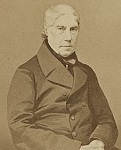
On Feb. 21, 1852 British PM (since June 30, 1846) John Russell resigns, and on Feb. 23 Conservative Edward Smith-Stanley, 14th Earl of Derby (1799-1869) becomes British PM (until Dec. 17); on Dec. 19 Peelite George Hamilton-Gordon, 4th Earl of Aberdeen (1784-1860) (AKA Lord Haddo) becomes British PM (until Jan. 30, 1855).

In Oct. 1853 after Russian Tsar Nicholas I leaves all fear of the revs. of 1848 behind and resumes the "game of Great Powers" of the pre-1789 era, demanding a protectorate over the members of the Greek Orthodox Church in the Ottoman Empire, threatening their sovereignty and causing them to refuse, and the tsar, calling the Sultan the "sick man of Europe" occupies the Danubian principalities of Moldavia and Wallachia, Britain, France, Austria, and Prussia attempt to bring Russia and Turkey to terms, but fail to get Turkey to agree, after which the Turks order Russia to evacuate the occupied provinces, and when they refuse, declare war on Russia on Oct. 16, starting the Crimean War (Tenth Russo-Turkish War) (ends Mar. 30, 1856) over the domination of SE Europe, in which Protestant England, Roman Catholic France and Sardinia, and Muslim Ottoman Turkey end up taking on Orthodox Catholic Russia and kicking its samovar-sipping butt, despite the need for Christian nations to stick together against the Muslims, with history-versed future Cardinal John Henry Newman (1801-90)saying that it besmirches British integrity to prop up the Ottomans (what did he know, he bolted the Anglican Church for the Roman Catholic Church?); on Nov. 30 the Russians massacre the Turkish fleet at the naval Battle of Sinope, causing public opinion in England to go wild for war against "despot Russia"; French troops from Marseille land in Istanbul to fight the Crimean War and end up causing a cholera epidemic; the war becomes known for "confusion of purpose" and "notoriously incompetent international butchery"; after it becomes too cold to shave, British solders are given permission to wear beards, and when they return to Britain the ladies love them, starting a fad that spreads to the U.S., causing U.S. Civil War gens. to sport them; British soldiers are required to wear mustaches after they find out that Indian Army soldiers won't respect them without facial hair.
On Feb. 23, 1854 the Convention of Bloemfontein (Orange River) is signed, and the British leave the territory N of the Orange River, recognizing the independence of the Boers between the Orange and Vaal Rivers, resulting in the formation of the Boer Repub. of the Orange Free State; too bad, it does not set the boundaries of the Basotho kingdom.

In Mar. 1854 Britain joins with France against Russia to prevent it from gaining control of Turkey and the Holy Land, and declare war on Russia on Mar. 28, starting the "incredibly popular" (Queen Victoria) Crimean War (begun Oct. 16, 1853?) (ends Mar. 30, 1856), with Ben. Fitzroy James Henry Somerset, 1st Baron Raglan (1788-1855) appointed as British CIC; Turkey agrees to Austrian occupation of its Danubian principalities until the end of the war; Victoria and Albert, who again opposed the Liberals and fought to prevent the war, only to see their popularity bottom-out, and Albert get accused of being a Russian agent (and/or that they both had been imprisoned) now wake up, flip-flop, and enthusiastically support the massacre of their own people, er, the incredibly popular war, restoring their popularity.




The coats will be available after what coat campaign? In early Sept. 1854 after the Turks have already driven the Russians from the occupied provinces, 20K British troops under Lord Raglan and 30K French troops under marshal Armand Jacques Leroy de Saint-Arnaud (1798-1854) land unopposed on the Crimean coast N of the fortified port of Sebastopol (Sevastopol), the main Russian naval base on the peninsula, with a plan to carry the war into Russian territory; too bad, the French stall in attacking the fort long enough to give the Russians time to rush in reinforcements; on Sept. 20 Anglo-French forces led by field marshal Sir Colin Campbell, 1st Baron Clyde (1792-1863) and Gen. Pierre Francois Joseph Bosquet (1810-61) win the Battle of the Alma River near Sebastopol against Russian forces under prince Alexander Sergeyevich Menshikov (1787-1869), becoming the first big battle of the war.
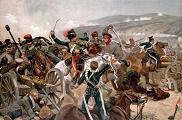

The Sevastopol Sketches, Defence of Sevastopol, Charge of the Light Brigade, Thin Red Line classic siege of the 19th cent.? On Oct. 17, 1854 after the Allies (French, British, Ottoman) land 50K men at Eupatoria on Sept. 14, the Siege of Sebastopol (Sevastopol), home of the Russian tsar's Black Fleet begins (ends Sept. 9, 1855), with the Allied strength under French Gen. Francois Canrobert, French Gen. Aimable Pelissier, Britsh Gen. Lord Raglan, British Gen. Lord Lyons, British Gen. Sir James Simpson, British Gen. Sir William Codrington, Ottoman Gen. Omar Pasha, and Ottoman Gen. Iskender Pasha starting at 67K, growing to 175K by next July (75K French, 35K Bitish, 60K Ottoman, 15K Piedmontese), increased in Aug. by 22K Ottomans, 9K Germans, 3K Swiss, 1.5K Polish, and 2K Italians, and the Russian garrison under Gen. Vladimir Kornilov, Gen. Pavel Nakhimov, and Gen. Eduard Totleben starting at 36.6K, reaching 43K plus a 42K-man army in the Crimea by next May, along with 8,886 naval gunners; the French have a 30K-man reserve army in Constantinople, and the British a 15K-man reserve army in Malta.



Who didn't call off the Charge of the Light Brigade? On Oct. 25, 1854 (Wed.) the Battle of Balaklava (Balaclava) Harbor is a D for Russia (a push?) and a claim to fame for the Scots Guards, led by Sir Colin Campbell (1792-1863), who earn the nickname "the Thin Red Line" from Rudyard Kipling's "thin red line of 'eroes"; British troops wear knitted balaclava headgear to keep warm, later used for ski masks; too bad, on Oct. 25 the stiff-upper-lip nutso Charge of the Light Brigade (the Six Hundred) during the Battle of Balaklava sees 107 of 674 British cavalrymen dressed up all cool, commanded by James Thomas Brudenell, 7th Earl of Cardigan (1797-1868) (11th Hussars) (known for his cool Cardigan sweaters) mowed down in an attack on the wrong valley, which is flanked by Russian artillery, in a mini-rehearsal of Gallipoli in WWI?; his boss field marshal George Charles Bingham, 3rd Earl of Lucan (1800-88) gets the blame, then at his court-martial blames his boss Lord Raglan; "Half a league, half a league,/ Half a league onward,/ All in the valley of death/ Rode the six hundred" (Alfred, Lord Tennyson).
On Nov. 5, 1854 the Battle of Inkerman (3rd major engagement of the war) starts out with a Russian attack in early morning fog, and ends as a V for the allies, where again Pierre Bosquet's troops are largely responsible.
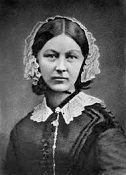
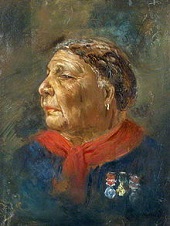
In Dec. 1854 the Russian winter in the Crimea witnesses an eerie presage of WWI trench warfare, incl. the unpreparedness of the British army, which suffers from starvation, exposure, and disease in slimy rat-infested pits when the road to Balaklava becomes impassable; since the Times has the world's first war correspondent, William Howard Russell (1821-1907), on the spot, the harrowing pictures outrage public opinion; one good thing, in the war the British learn about papirosi (cigarettes) from the Turks, and get a new habit for peacetime use?; another good thing, on Oct. 21 able white head nurse Florence Nightingale (1820-1910) and her staff of 38 female volunteer nurses plus 15 Roman Catholic nuns are sent to the Crimean War by her Conservative statesman friend (secy. of war) Sidney Herbert, 1st Baron Herbert of Lea (1810-61) to do her thing, arriving in Nov. at Selimiye Barracks in Scutari (modern-day Uskudar, Istanbul), the mistreatment of POWs boosting her (and all female nurses') career as she introduces hygienic standards into military hospitals, writing a plea pub. in the Times asking for a prefabricated hospital design, resulting in Renkioi Hospital, which reduces the death rate 90%, gaining her the nickname "the Lady with the Lamp"; next Nov. 29 the Nightingale Fund is established for nurse training schools, for which she writes the textbook Notes on Nursing: What It Is and What It Is Not (1859), containing the soundbyte: "Every day sanitary knowledge, or the knowledge of nursing, or in other words, of how to put the constitution in such a state as that it will have no disease, or that it can recover from disease, takes a higher place. It is recognised as the knowledge which every one ought to have – distinct from medical knowledge, which only a profession can have" (later adopted by fine brothels?); meanwhile Jamaican-born mixed-race nurse Mary Jane Seacole (nee Grant) (1805-81) sets up the British Hotel behind the lines, using her knowledge of herbal medicine and hygiene to treat wounded soldiers, making her extremely popular among them; on June 20, 2016 a statue in her honor is erected at St. Thomas' Hospital in London, calling her a "pioneer nurse", pissing-off Nightingale supporters.
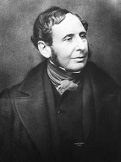
In 1854 the Met (Meteorological) Office is founded in England under English meteorologist Capt. (later vice-adm.) Robert FitzRoy (1805-65) (captain of HMS Beagle during Charles Darwin's voyage in 1831-6), who coins the term "forecast" in 1859 after a big storm on Oct. 25-26, 1859 in the Irish Sea that sinks 133 ships, badly damages 90, and kills 800 incl. the steam clipper Royal Charter off the NE coast of Anglesey, Wales.

On Jan. 30, 1855 despite the queen's opposition, the suffering of the British soldiers in the Russian winter causes the fall of British PM (since Dec. 19, 1852) George Hamilton-Gordon, 4th Earl of Aberdeen and his cabinet, and on Feb. 6 Henry John Temple, 3rd Viscount Palmerston (1784-1865) (AKA Lord Palmerston), who got Britain into the Crimean War and now rides the wave becomes PM at the head of an all-Whig cabinet (until Feb. 19, 1858); too bad, he vacillates between Whig and Tory sentiments, making party loyalties ever-shaky?
On Feb. 15, 1855 four of the seven Cunard steamships are sent by the British govt. to aid in the blockade of Sebastopol.
On Feb. 17, 1855 tsar (since Dec. 1, 1825) Nicholas I (b. 1796) receives news of the Russian D at the Battle of Evpatoria (Yevpatoria) in the Crimea, and poisons himself, dying in the Winter Palace in St. Petersburg (of pneumonia?) on Mar. 2 (Feb. 18 Old Style), and his eldest son Alexander II (1818-81) succeeds him as Russian Romanov tsar #16 (until Mar. 13, 1881), continuing Russia's war policy and liberating the serfs in 1861, gaining the name Alexander the Liberator; on Mar. 15 a peace conference in Vienna fails.
On Mar. 30, 1855 Britain and Afghanistan join against Persia in the Treaty of Peshawar, confirming British annexation of Peshwar and the Punjab, and causing Dost Mohammed to renounce expansion into British India.
In Apr. 1855 29 mi. of track are laid from Balaklava to Sevastopol, allowing the British and French armies to be resupplied, and the hardy British railroad builders become the real heroes of the Crimean War?; an electric telegraph is built between Balaklava and London.
On June 18, 1855 the Battle of Sebastopol is a D for the British and French against the Russians, after which British gen. Lord Raglan dies on June 28 of dysentery.

On Sept. 8, 1855 the Battle of Malakov (Malakoff) Hill (Mound) (Barrow) is a V for the French under Gen. MacMahon; meanwhile the Battle of the Great Redan is a D for the British, but the Siege of Sebastopol (begun Oct. 17, 1854) is won by the Allies on Sept. 9, with a total of 102K Russian casualties vs. 10,240 French KIA, 20K dead of wounds, and 50K dead of disease, 2,050 Piedmontese killed, and 2,755 British KIA, 2,019 dead of wounds, and 16,323 dead of disease (total of 128,387 Allied deaths); French Gen. Pierre Francois Joseph Bosquet (1810-61) is severely wounded during the assault on Malakov, causing him to retire from the military, and next year he is appointed to the Senate and is made a marshal of France.
On Sept. 18, 1855 after it goes looking for the 1845 Sir John Franklin Expedition in the Arctic in 1850 and ends up abandoned, the HMS Resolute is found by Am. whaler George Henry in an ice flow off Cape Walsingham in Baffin Island, and returned to Britain, after which Queen Victoria visits it and orders three desks to be made from some of its timbers; the Resolute Desk is presented by Queen Victoria in 1880 to U.S. Pres. Rutherford B. Hayes, who puts it in the White House, after which it is moved into the Oval Office in 1961 by First Lady Jackie Kennedy, then moved to the Smithsonian Inst. after JFK's 1963 assassination, and returned by Pres. Jimmy Carter; the Grinnell (Queen Victoria) Desk ends up in the New Bedford Whaling Museum in Mass.; the Queen Victoria Desk II ends up in the Royal Naval Museum in Portsmouth, England.
In Sept. 1855 renewed British and French assaults, assisted by Italian troops cause the Russians to abandon Sebastopol after a 11-mo. siege.



If you can't fix it you gotta stand it? On Apr. 10, 1856 the 16-ton Big Ben Bell is cast at Warner's of Cripplegate on Stockton-on-Tees, and unofficially (not really, he's just tall?) named after Benjamin Hall, 1st Baron Llanover (1802-67), dir. of public works in 1836 (or heavyweight boxer Benjamin Caunt?); it is first mounted in New Palace Yard, then cracks, causing it to be recast at the Whitechapel Bell Foundry, coming in at 13.5 tons; Edmund Beckett Denison, 1st Baron Grimthorpe (1816-1905) designs the clock mechanism with a new double 3-legged gravity escapement, which is built by London-born watchmaker Edward John Dent (1790-1853), who died in 1853 before he could complete the project, which is finished by his adopted son Frederick Rippon Dent in 1854.

On Oct. 8, 1856 the Arrow (Second Anglo-Chinese) (Second Opium) War begins (ends Oct. 24, 1860) after Chinese authorities in Canton board the ship Arrow (flying the British flag) and arrest some Chinese members of the crew, but not its British capt. (the Chinese owner of the ship lives in Hong Kong, so he has the right to fly the Union Jack); when the sailors are later returned but no apology is made, the British rep. in Canton summons warships to attack and occupy Canton, which escalates into a gen. demand to better observe the Treaty of 1842 by giving the English free entrance to certain Chinese ports; U.S. Navy Capt. Andrew Hull Foote (1806-63) is sent to Canton to establish fortified shore posts to protect U.S. residents, and then storms and destroys some Chinese forts firing on them, becoming a minor hero.

On Feb. 20, 1858 British PM Palmerston's coalition is defeated, and Conservative former PM (1852) Edward Smith-Stanley, 14th Earl of Derby (1799-1869) (AKA Lord Derby) becomes British PM, joining Disraeli to form their 2nd cabinet, which lasts a little more than a year (until June 11, 1859).
On June 18, 1858 the Treaty of Tianjin (Tientsin) between France, U.K., Russia, and the U.S. ends the first part of the Second Opium War (1856-60), and allows cigarettes to be imported into China duty-free, causing tobacco addicts to replace opium addicts; by 1900 China is totally penetrated by foreign-owned tobacco co.

On July 28, 1858 all 13 economists in Parliament vote to extend full civil rights to Jews, incl. the right to become skilled tradesmen and conduct business w/o taking Christian oaths; the Chuts begin immigrating to London from the Netherlands, engaging in cigar making et al.; Jewish Lord Lionel Nathan de Rothschild (1808-79) is finally allowed to take his seat in the British Parliament after being elected 5x, becoming its first-ever Jewish member, serving until 1874 for the city of London; they kept him out since 1847 by requiring him to swear "upon the true faith of a Christian" - have you had an unusual experience and need Sylvia Brown's help?
On June 11, 1859 a failed election causes the resignation of Benjamin Disraeli and British PM (since Feb. 20, 1858) Edward Smith Stanley, 14th Earl of Derby, and on June 12 after switching parties from Whig to Liberal, former British PM (1855-8) Henry John Temple, 3rd Viscount Palmerston (1784-1865) becomes British PM again, forming a new cabinet, which Gladstone joins as a Liberal, ending the separate org. of the Peelites, and giving it stability; it remains in power until Oct. 18, 1865, contenting the working classes while dropping all efforts at parliamentary reform.
On June 15, 1859 the U.S.-British Pig War begins when Am. farmer Lyman Cutlar shoots a pig owned by the Hudson's Bay Co., after which both countries send in troops to dispute possession of the San Juan Islands, with 500 U.S. troops under Capt. George E. Pickett (later of Pickett's Charge fame) and 400 British royal marines and three ships with 62 total guns, after which U.S. Lt. Gen. Winfield Scott is dispatched to negotiate a stand, which lasts for 12 years while an arbitration commission appointed by German kaiser Wilhelm I meets, finally ruling in favor of the U.S. and establishing the 49th parallel as the U.S.-Canadian border on Oct. 21, 1872, with the U.S. given the San Juan Islands and the boundary line going through Haro Strait.


The Book That Shook the World? Big year for Bible skeptics, secularists, atheistic scientists, anybody against the ancien regime, as Jehovah, the Source of Life Breathed Into Mud is challenged by Godless Evolution, Mud Coming to Life by Itself After It Bubbles Long Enough? The biggest V for the Devil since Eden? The new 95 Theses, but Darwin is smart enough not to publish it on Halloween? On Nov. 24, 1859 (Thur.) English naturalist Charles Robert Darwin (1809-82) pub. On the Origin of Species By Means of Natural Selection, Or, The Preservation of Favoured Races in the Struggle for Life; the 1st ed. sells out in 1 day; the 1872 6th ed. shortens the title to "The Origin of Species"; the decider, which causes evolutionary "survival of the fittest" theory to triumph among the intelligentsia; English Anglican minister and Cambridge U. prof. of modern history Charles Kingsley (1819-75), who received an advance copy on Nov. 18 writes that he had "long since, from watching the crossing of domesticated animals and plants, learnt to disbelieve the dogma of the permanence of the species", which Darwin adds to the next ed. of his book in a modified form: "He had gradually learned to see that it is just as noble a conception of the Deity to believe that He created a few original forms capable of self-development into other and needful forms, as to believe that He required a fresh act of creation to supply the voids caused by the action of His laws"; Darwin pub. it after spending eight years dissecting barnacles in his basement, then inexplicably switching to the Galapagos finch?; catches on first in Germany among atheists?; "If it could be demonstrated that any complex organ existed, which could not possibly have been formed by numerous, successive, slight modifications, my theory would absolutely break down"; Louis Agassiz of the U.S. opposes Darwin, preferring a theory of "Epochs of Creation", based on the absence of missing links between layers of well-formed fossil ecosystems; the phrase "I'll be a monkey's uncle" is coined by Darwin skeptics; "There is a grandeur in this view of life that, whilst this planet has gone cycling on according to the fixed law of gravity, from so simple a beginning endless forms most beautiful and most wonderful have been, and are being, evolved"; what was that about "my theory would absolutely break down" if anything is found that can't be explained by "numerous, successive, slight modifications"?; in practice Darwinism becomes a religion which denies that there is intelligent design in Nature, and therefore tries to deconstruct any evidence of it they find as they go along, yet clings to the notion of common descent, almost as if there was some original, er, accident, and ends up turning into a narrow naturalistic dogma by the end of the 20th cent., taking over U.S. and other Western educational systems with a chilling priesthood? In 1860 after failing to fit it into his Theory of Evolution, Darwin writes the immortal soundbyte: "The sight of a feather in a peacock's tail makes me sick." On Feb. 1, 1871 he writes a Letter to Sir Joseph Dalton Hooker, with the soundbyte: "It is often said that all the conditions for the first production of a living organism are now present, which could ever have been present. But if (and oh! what a big if!) we could conceive in some warm little pond, with all sorts of ammonia and phosphoric salts, light, heat, electricity, &c., present, that a protein compound was chemically formed ready to undergo still more complex changes, at the present day such matter would be instantly absorbed, which would not have been the case before living creatures were found." On Feb. 24, 1871 he pub. The Descent of Man, and Selection in Relation to Sex, which applies his theory of evolution to humans; "The Simidae then branched off into two great stems, the New World and the Old World monkeys; and from the latter at a remote period, Man, the wonder and glory of the universe, proceeded"; "We civilized men... do our utmost to check the process of elimination; we build asylums for the imbecile, the maimed, and the sick; we institute poor laws; and our medical men exert their utmost skill to save the life of everyone to the last moment... Thus the weak members of civilized societies propagate their kind. No one who has attended to the breeding of domestic animals will doubt that this must be highly injurious to the race of man. It is surprising how soon a want of care, or care wrongly directed, leads to the degeneration of a domestic race; but excepting in the case of man himself, hardly anyone is so ignorant as to allow his worst animals to breed"; attempts to scientifically establish white racial supremacy, with the soundbytes: "Western nations of Europe immeasurably surpass their former savage progenitors and stand at the summit of civilization"; "American aborigines, Negroes, and Europeans differ as much from each other in mind as any three races that can be named"; "Looking to future generations, there is no cause to fear that the social instincts will grow weaker, and we may expect that virtuous habits will grow stronger, becoming perhaps fixed by inheritance... [so that] virtue will be triumphant"; "It is the most closely allied forms... which, from having nearly the same structure, constitution, and habits, generally come into the severest competition with each other; consequently, each new variety of species, during the progress of its formation, will generally press hardest on its nearest kindred, and tend to exterminate them"; "This is the book that contains the foundation in natural history for our view" (Marx to Engels); this book is later used by Eugenicists to justify euthanasia of misfits, using soundbytes incl. "We civilized men... do our utmost to check the process of elimination; we build asylums for the imbecile, the maimed, and the sick; we institute poor laws; and our medical men exert their utmost skill to save the life of everyone to the last moment... Thus the weak members of civilized societies propagate their kind. No one who has attended to the breeding of domestic animals will doubt that this must be highly injurious to the race of man. It is surprising how soon a want of care, or care wrongly directed, leads to the degeneration of a domestic race; but excepting in the case of man himself, hardly anyone is so ignorant as to allow his worst animals to breed.... All do good service who aid toward this end."




Thanks for your cooperation? On Aug. 1, 1860 after China bans foreign embassies in Peking, British forces under Gen. Sir James Hope Grant (1808-75) land, then on Aug. 12 bombard Sinho with the world's first breech-loading rifled artillery pieces, taking the Taku Forts opposite Hong Kong on Aug. 21; meanwhile on Sept. 21 French forces under Gen. Charles Guillaume Marie Apollinaire Antoine Cousin-Montauban (1796-1878) (created Comte de Palikao by Napoleon III in 1862) defeat the Chinese at the Battle of Palikao (Pa-li-Chau) at Eight Mile Bridge outside Peking, and reach Peking on Sept. 26, occupying it with 17K Anglo-French soldiers on Oct. 6, then on Oct. 18-20 burning the already-looted Imperial Summer Palace (Yuan Ming Yuan) 9 mi. NW of Peking (built 1707) at the orders of British high commisioner to China (former gov.-gen. of Canada and son of the Elgin Marbles guy, therefore a pro at destroying historical monuments to get souvenirs?) James Bruce, 8th Earl of Elgin (1811-63) in retaliation for the 10-day imprisonment starting on Sept. 18 of British diplomat Sir Harry Smith Parkes (1828-85), destroying priceless antiquities, along with some hairy parks, but saving a lot of porcelain which ends up in English and French country houses, after which the act is criticized by Victor Hugo et al. as barbaric, although the Brits never give the goodies back; the imperial court is forced to relocate to the Forbidden City (until 1924), and a new smaller Summer Palace is built by Empress Cixi, then burnt again by the Brits in the 1900 Boxer Rebellion; on Oct. 18 the Treaty (Convention) of Peking between junky Qin Dynasty China, Britain, France, and Russia, negotiated by Russian diplomat Count Nikolai (Nikolay) Pavlovich Ignatiev (Ignatyev) (1832-1908) and signed by Prince Gong of China and Lord Elgin of Britain forces China to open 11 ports to Westerners, cede both banks of the Amur River and the land S of Vladivostok (Ussuri Krai, the ancient Manchu province of East Tartary) to Russia, and Stonecutters' Island and 3 sq. mi. of the Kowloon Peninsula to Hong Kong for a 99-year term; on Oct. 24 another treaty gives the British rights to opium trading in 90% of the country, and gives Christians the right to proselytize and own property, ending the Second Opium (Arrow) War (begun Oct. 8, 1856) - opium and Christ go hand in hand?


In 1860 English biologist Thomas Henry Huxley (1825-95) (who coined the term "agnostic") debates with liberal Anglican divine (bishop of Oxford since 1845) Lord Samuel Wilberforce (1805-73) (a fellow of the Royal Society and son of abolitionist William Wilberforce who is known as Soapy Sam from his holy hand-washing gestures) on Darwinian evolution at Oxford U., helping to push it over on the public, although Wilberforce held his ground and got off a good one by asking Huxley whether it was through his grandfather or grandmother that he claims descent from a monkey; blind economist Henry Fawcett (1833-84) shouts out that Wilberforce must have never read a word of Darwin's "Origin of Species", and gets away with it because Bewildered Force knows he's blind? - he didn't respond that all Bible thumpers are apes, he just hoped to be understood that way?
On Oct. 7, 1862 William Ewart Gladstone (chancellor of the exchequer) gives his Newcastle Speech, with the soundbyte: "We have our own opinions about slavery, we may be for or against the South, but there is no doubt that Jefferson Davis and other leaders of the South have made an army, they are making, it appears, a navy, and they have made what is more than either, they have made a nation. We may anticipate with certainty the success of the Southern states as far as their separation from the North is concerned"; too bad, the failed invasion of the North in Sept. keeps Britain from recognizing the Confederacy.
In Aug. 1864 the Taiping Rebellion (begun Dec. 1850) of up to 1M peasants falls to attacks led by British Gen. Charles "Chinese" Gordon (1833-85); Hong Xiuquan (b. 1814) commits suicide; total losses are estimated at 20M, seriously weakening the Manchu (Qing) Dynasty and leading to its final collapse in 1912.

On Oct. 18, 1865 "Do-nothing" British PM (since June 12, 1859) Lord Palmerston (b. 1784) dies suddenly after winning the July election and increasing his majority, dealing with the Fenian Uprising in Ireland and getting pissed-off at the Yanks for helping them, and musing that Germany should become strong as a buffer against Russia and that Britain should strike an alliance with France against the U.S.; on Oct. 29 Liberal John "Languid Johnny" Russell, 1st Earl Russell (1792-1878) (grandfather of philosopher Bertrand Russell) (known as Lord John Russell until his elevation to earl on July 30, 1861) (educated at the U. of Edinburgh rather than Oxford or Cambridge - next Gordon Brown) becomes British PM (until June 26, 1866) (last true Whig to become PM), but as he is old and in the House of Lords, progressive, guilt-ridden (his family made big bucks on slavery, woo woo woo) anti-imperialist, advanced Liberal (started out in 1833 as a high Tory) William Ewart Gladstone (1809-98) becomes the real leader of the Liberal Party, the most efficient and eloquent speaker in the Parliament, the "Grand Old Man", advocate of the moral policies of Prince Albert and David Livingstone of using the empire to spread the three C's (civilization, commerce, and Christianity) (but surely not color?); Glad Bag becomes known for night forays into the red light district in hopes of bribing hos to go straight (and do him if they still want the money - just kidding?); on the Conservative side Lord Derby (14th Earl) leads the House of Lords, and pro-imperialist Benjamin Disraeli leads the House of Commons; a new epoch begins in Britain as both vie to woo the ever-mourning fattening sexless queen, and Disraeli finally wins, causing Victoria to end up advocating the reverse of her dead hubby's anti-imperialist policies.
On June 26, 1866 British PM (since Oct. 29, 1865) Lord John Russell resigns, and on June 28 Edward Smith-Stanley, 14th Earl of Derby (1799-1869) becomes British PM again (3rd time) (until Feb. 25, 1868); too bad, like the other times he lasts less than two years.



On Feb. 25, 1868 British PM (since June 28, 1866) Edward Smith-Stanley, 14th Earl of Derby resigns, and on Feb. 27 Conservative Benjamin Disraeli (1804-81) becomes PM of Britain (until Dec. 1) (279 days), but after the Conservatives are defeated in the British gen. election, on Dec. 3 the leader of the all-new Liberal Party (the old Whig Party under a new name), William Ewart Gladstone (1809-98) becomes British PM (until Feb. 17, 1874); Disraeli is offered a peerage by Queen Victoria, which he accepts for his wife Mary Anne Disraeli (1792-1872), who on Nov. 30 becomes Viscountess Beaconsfield in Buckingham County.
On Apr. 2, 1869 the Royal Commission on Historical Manuscripts (Historical Manuscripts Commission) (HMC) in Britain is established to survey private archives of gen. historical interest; in 2003 it officially merges with the Public Record Office to form the Nat. Archives.

Disraeli finally gets his big second chance with Six More Years? On Feb. 20, 1874 the 1874 British gen. election sees the Conservative Party of Benjamin Disraeli (1804-81) defeat the Liberal Party of William E. Gladstone (in power since Feb. 27, 1868), having a clear majority for the first time since 1841; Disraeli (who shared power with Lord Derby in 1852, 1858, and 1859) becomes British PM (until Apr. 21, 1880); the queen is as enthralled with him as ever, as much as she detests Gladstone; the new govt. passes the Conspiracy and Protection of Property Act to protect the legality of union-backed strikes.
On May 1, 1876 at PM Benjamin Disraeli's insistence, Queen Victoria (1819-1901) is proclaimed Empress of India by Parliament in the Royal Titles Act of 1876; in return she grants him the title of Earl of Beaconsfield.
On Mar. 18, 1877 Britain annexes Walvis Bay on the SW coast of Africa, and on Apr. 12 annexes the South African Repub. under Sir Theophilus Shepstone (1817-93), which pisses-off the Afrikaners, who call it a violation of the 1852 Sand River Convention, even though the repub. is in a state of near anarchy and it is being done to prevent Germany from moving in.



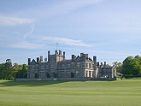
On Mar. 20, 1878 Jewish babe Hannah de Rothschild (1851-90), daughter of Mayer de Rothschild and richest woman in England marries handsome educated up-and-coming blonde Anglo-Saxon blueblood Archibald Philip Primrose, 5th Earl of Rosebery (1847-1929), becoming the biggest social event of the year in Britain, making people face their anti-Semitism as one of the fairest of the Christian Anglo-Saxons begins fathering half-Jewish upper-class breeders and launching them into society from her fabulous mansion Mentmore Towers in Buckinghamshire (built 1852-4) and his fabulous Scottish mansion Dalmeny House (built 1817) on the Firth of Forth; too bad, the Jewish side of her family stands the marriage up, but Disraeli and the Prince of Wales make it a smash; she goes on to become his driving force in politics as an anti-Socialist Liberal Imperialist, helping him rise in Gladstone's Liberal Party with her genuine Jewish money.
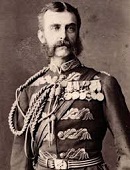


The 1936 Berlin Olympic trials are held directly in Africa, and whites win by cheating with .45s? On Jan. 11, 1879 the Anglo-Zulu War in South Africa is started by British rep. Gen. Frederic Augustus Thesiger, 2nd Baron Chelmsford (1827-1905), who rushes into war to protect the Boers against the Zulus in a territorial dispute over the Transvaal, sending 13K British troops on Jan. 12 to take on Zulu chief Cetshwayo's army of 40K; on Jan. 22 the Zulus surround 1.3K British troopers and allied Natal Kaffirs at the Battle of Isandhlwana (Isandlwana) Hill, and use the Horns of the Beast maneuver to wipe them all out in three hours, then behead the corpses and slash their stomachs to let out their spirits, as portrayed in the 1979 film Zulu Dawn; a solar eclipse at 1:02 p.m. spurs the Zulus to fight harder, since they like night fighting?; on Jan. 22-23 the epic Battle (Defense) of Rorke's Drift (Kwa Jimu) (Jim's Land") on the Buffalo River sees 3K-4K Zulus stage repeated attacks against 139-141 British rifles of B Co., 2nd Battalion, 24th (2nd Warwickshire) Regiment of Foot, South Wales Borderers, commanded by Lt. (later Maj.) Gonville Bromhead (1845-91) defending a mission station commanded by Lt. (later Col.) John Rouse Merriott Chard (1847-97) through a long day and night, losing only 17 Brits KIA and 15 wounded vs. 351 Zulus KIA and 500 wounded, as portrayed in the 1964 Cy Endfield film Zulu ("A short-chamber Boxer-Henry point forty-five caliber miracle, and a bayonet... with some guts behind it!"); 11 Victoria Crosses are awarded incl. to Bromhead and Chard; on July 4 reinforcements help the British win a V at the Battle of Ulundi, capturing Cetshwayo and destroying his army, after which a peace treaty is signed with the Zulu chiefs on Sept. 1, allowing Britian to take control of Zululand, which descends into civil wars and is finally annexed in 1887.


On Feb. 21, 1879 exiled Afghani ruler Shir Ali dies; on May 26 Britain signs the Treaty of Gandamak with his son and successor Mohammed Yaqub Khan (1849-1923) (until Oct. 12), forcing him to allow a permanent British mission in Kabul, cede the Khyber Pass to British India, and surrender the country's external sovereignty to Britain; the British begin to build a new road through "their" Khyber Pass (finished 1880), then make a mistake and withdraw their troops, only to have the British agent and his companions massacred by natives in Kabul; the pissed-off British led by Maj. (later field marshal) Frederick Sleigh Roberts (1832-1914) return, take Kabul and depose Yaqub Khan on Oct. 12, then march to the relief of Kandahar; meanwhile on Oct. 12 Mohammad Ayub Khan (1857-1914) ("the Afghan Prince Charlie") becomes emir of Afghanistan (until May 31, 1880), continuing the Second Anglo-Afghan War (begun 1878).
On Apr. 23, 1880 Liberal former PM (1868-74) William Ewart Gladstone (1809-98) becomes PM of Britain again (2nd time) (until June 9, 1885).

On July 22, 1880 British puppet Abdul Rahman (Abd-al-Rahman) (Abdur Rahman) Khan (1844-1901), a nephew of Shir Ali becomes amir of Afghanistan; on Sept. 1 the British win the Battle of Kandahar (Baba Wali), ending the Second Anglo-Afghan War (begun 1878), then pull out of the country when the new Liberal Gladstone cabinet begins meeting, ending the Second Anglo-Afghan War (begun 1878), and leaving Afghanistan as an independent state; the withdrawal is complete by next year; Rahman goes on to survive four civil wars and 100 revolts by increasing the size and funding of the army and centralizing control, while the British provide him with military supplies; he also builds bridges and roads to help unify his control.

In 1880 Queen Victoria presents U.S. Pres. Rutherford B. Hayes with the Resolute Desk, built from the timbers of the British ship HMS Resolute; he places it in the White House in Washington, D.C., becoming a favorite of every succeeding pres. except LBJ, Nixon, and Ford.
In 1880 Owens College in Manchester, England (founded 1851) joins the federal Victoria U., going on to receive a charter on June 24, 1904 as Victoria U. of Manchester; in 2004 it becomes the U. of Manchester.
In 1881 the U. of Liverpool (originally Univ. College Liverpool, followed in 1884 by Victoria U. at Liverpool until 1903) is founded in Liverpool, England; in 1894 prof. Oliver Lodge makes the world's first public radio transmission, and in 1896 takes the first surgical X-ray in the U.K.; in 1899 Liverpool U. Press is founded; in 1903 it receives a royal charter, becoming one of England's six original red brick civic univs.



On Jan. 4, 1884 the British Socialist Fabian Society is founded in London by a group of middle-class intellectuals incl. Havelock Ellis (1859-1939) and Edith Nesbit (1858-1924) to promote democratic Socialism via gradualist-reformist efforts rather than rev. ovethrow; Irish playwright George Bernard Shaw (1856-1950) joins in 1884 - is that the dog that saved the day?



Too much MSG in the Chinese food? On Jan. 26, 1885 after the Nile level falls, allowing the Mahdi's forces to bridge the moat they built by linking the Blue and White Nile, Khartoum in the Sudan, commanded by cut-off popular idol Gen. Charles George "Chinese" Gordon (b. 1833) falls, and Gordon is killed two days before his 52nd birthday, his head displayed on a pike; on Jan. 28 the flying column British relief force arrives, the news causing the Liberal Gladstone govt. in Britain to fall on June 9 after Queen Victoria says I told you so and again blames the nincompoop Gladstone for it, and the House of Commons comes within 14 votes of censuring the cabinet; in Mar. Sebehr Rahma, whose Arab skin is still intact is arrested and imprisoned in Gibraltar for side-switching, and returns to Sudan in 1899, where he settles down and writes the cool memoir Black Ivory; Or, The Story of El Zubeir Pasha, Slaver and Sultan, as Told by Himself; on June 22 El Mahdi dies of typhus; on June 23 Conservative Party leader (former foreign secy.) Robert Arthur Talbot Gascoyne-Cecil, 3rd Marquess of Salisbury (1830-1903) becomes British PM (until Jan. 28, 1886), with a minority cabinet, going back to the Disraeli track of protecting British interests abroad, which wins the queen's support; the British leave Sudan to go its own way, and the Mahdi Dervishes rule for the next 13 years (until 1888); "I am a poor man of the desert, but I am the Mahdi, the expected one. On my cheek, the mole; between my teeth, the space... All Islam must know who I am and believe... The Nile will taste of blood for a hundred miles") (Laurence Olivier as the Mahdi in the 1966 film Khartoum, starring Charleton Heston as Gordon) - I guess Allah didn't pick him after all, he just had an Ahnuld complex because of his gap-toothed smile?

On Jan. 28, 1886 British PM (since June 23, 1885) Lord Salisbury resigns, and on Feb. 1 Liberal "Grand Old Man" William Gladstone becomes PM of Britain for the 3rd time (until July 20).
On July 20, 1886 British PM (since Feb. 1) William E. Gladstone resigns, and on July 25 former PM (June 23, 1885-Jan. 28) Robert Gascoyne-Cecil, 3rd Marquess of Salsbury becomes British PM (until Aug. 11, 1892) (2nd time).
In 1887 the Imperial Inst. is opened by Queen Victoria to promote scientific research benefiting Britain's colonies and dominions; on July 8, 1907 Imperial College London in the Royal Borough of Kensington and Chelsea, London, England is formed from the merger of the Royal School of Mines (founded 1851), Royal College of Science (founded 1881), and City and Guilds College (founed 1878), joining the U. of London; in 2007 it leaves the U.. of London.
On July 4-26, 1892 after Lord Salisbury dissolves the English Parliament, the gen. election leaves the Conservatives with the greatest number of seats, but still in a minority against the combined Liberals and Irish Nationalists (Home Rulers), even though the latter are split into pro and anti Parnell factions; on Aug. 11 British PM (since July 25, 1886) Salisbury resigns, and on Aug. 15 William E. Gladstone becomes British PM again (until Mar. 2, 1894) (4th and last time), forming his 4th cabinet, dependent on Irish Nationalist support, which tries in vain to implement the Newcastle Program.

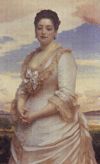
On Mar. 2, 1894 British PM (since Aug. 15, 1892) (Liberal "Grand Old Man") William Ewart Gladstone (1809-98) resigns, and Queen Vicky, who doesn't like Liberals anyway selects an imperialistic Liberal, foreign secy. Archibald Philip Primrose, 5th Earl of Rosebery (1847-1929) (a horse-lover who quit college so he could own a horse, and vowed to marry an heiress, win the Derby and become PM, and already married Jewish banker Baron Mayer de Rothschild's daughter Hannah Rothschild (1851-90) in 1878 after she inherited his estate and became the richest woman in England, leaving him a well-fixed bisexual whose popularity "almost eclipsed royalty", and who's done it all, incl. winning the Derby this year and next) to replace him on Mar. 5 (until June 22, 1895), becoming the 3rd consecutive British PM to have attended Eton and Christ Church, Oxford (Gladstone, Salisbury) (next Balfour); after continuing to try to implement the Newcastle program, he doesn't last a year before resigning to go back to his horses and pretty boys?

On June 11, 1895 after being appointed Regius Prof. Of Modern History at Cambridge U., John Emerich Edward Dalberg-Acton, 1st Baron Acton (1834-1902) delivers his inaugural lecture The Study of History, with the soundbyte: "History is the arbiter of controversy, the monarch of all she surveys," which makes a big splash, calling for historians to reject historicism, which limits moral judgments to the specific context in which events being discussed took place, and become moral arbiters, with the soundbyte: "Never to debase the moral currency or lower the standard of rectitude, but try others by the final maxim that governs your own lives, and to suffer no man and no cause to escape the undying penalty which history has the power to inflict on wrong", adding: "I hope... this will aid you to see that the action of Christ who is risen on mankind whom he redeemed fails not, but increases; that the wisdom of divine rule appears not in the perfection but in the improvement of the world; and that achieved liberty is the one ethical result that rests on the converging and combined conditions of advancing civilization. Then you will understand what a famous philosopher said, that History is the true demonstration of Religion."


On June 22, 1895 after failing to get any of his legislation passed, dilettante British PM (since Mar. 5, 1894) Lord Rosebery resigns, and on June 25 former PM (1885-6, 1886-92) Robert Gascoyne-Cecil, 3rd Marquess of Salisbury (1830-1903) becomes British PM (until July 11, 1902), becoming the last British PM to sit in the House of Lords, and first British PM of the 20th cent., forming his 3rd cabinet, uniting his Conservatives with the Liberal Unionists, riding on a wave of British Unionist and imperial sentiment; wealthy self-made manufacturer Liberal Unionist Joseph Chamberlain (1836-1914) (former mayor of Birmingham) (father of Sir Joseph Austen Chamberlain) surprises everybody by turning down the treasury secy. position in favor of secy. of the colonial office (until 1903), and pushes British imperialism into its most active phase ever, with Salisbury trying to reinstate close relations with Germany and the Triple Alliance to balance the French and Russians.


In Mar. 1898 the secret society of Boxers (Righteous Harmony Band), an anti-foreign, anti-Western org. of Kung-Fu (Chin. "skill") experts recruited from provinical militias is formed in China as a response to German occupation of the Qindao region and British seizure of Weihai, and next year it begins a terror campaign against all foreign devils, er, nationals and Chinese Christians, esp. in N China, backed by dowager empress Cixi - do you do you want my fist? On June 9, 1898 Britain and the Qing Dynasty of China sign the Convention for the Extension of Hong Kong Territory (2nd Convention of Peking), negotiated by British diplomat Col. Sir Claude Maxwell MacDonald (1851-1915), leasing Hong Kong for 99 years (who considers it "as good as forever"), with the addition of the New Territories (18 sq. mi.) on the Kowloon Peninsula on the mainland of China - welcome to the casino, I'm Mister Money?
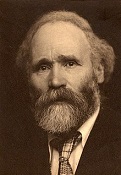
On Feb. 27, 1900 the center-left Labour Party is founded in London, England as an alliance of Social Dems., Dem. Socialists, and trade unionists to emphasize increased state intervention, social justice, and workers' rights, with Scottish trade unionist James Keir Hardie (1856-1915) as its first leader on Jan. 17, 1906-Jan. 22, 1908.
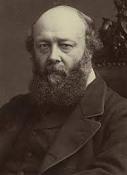
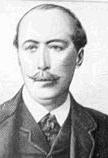

The Hanoverian Dynasty in Britain is embarrassed by its Boers, while the Manchu Dynasty in China is embarrassed by its Boxers? On June 13, 1900 the Boxer Rebellion (Uprising) (Yihetuan Movement), led by the Kung Fu-fighting I-ho Chu'an (Society of Righteous Harmonious Fists) (Righteous Harmony Band) begins in earnest, killing foreign devils (whites) and Christian Chinese indiscriminately, culiminating with the June 20 assassination of a German minister, which causes 200 foreigners to hole-up in the British Legation, beginning the Siege of the Peking (Beijing) Legations, causing Russia, Japan, Britain, France, and the U.S. to assemble a relief force at Taku, and Russia to station 100K troops in Manchuria; on July 9 the Taiyuan Massacre sees the gov. of Shanxi order the execution of 45 Christian missionaries; when Euro troops arrive and find the charred bones of missionaries they get pissed-off and start to destroy the city, until a missionary begs them to spare it; on July 3 the U.S. secy. of state uses this incident to reaffirm the Open Door Policy via another circular letter, resulting in the Oct. 16 Anglo-German Yangtze Agreement, signed by British foreign minister (June 29, 1895-Nov. 12, 1900) Robert Gascoyne-Cecil, 3rd Marquess of Salisbury (1830-1903) and German ambassador to London (1885-1901) Paul von Hatzfeld zu Trachenberg (1831-1901); on Aug. 14 the sieged legation is relieved and the city occupied by the relief force until a peace treaty is signed on Sept. 7, requiring the Chinese to pay 450M Haikwan taels ($740M in gold) over 40 years, convert ad valorem into specific duties, fortify and guard the foreign legation district of Peking, and other humiliations; Russia keeps occupying Manchuria after the rebellion ends; German col. (later gen.) Erich von Falkenhayn (1861-1922) becomes known for ruthlessness during the internat. expedition to crush the Boxer Rebellion, causing Kaiser Wilhelm II to utter the soundbyte: "Just as the Huns a thousand years ago under the leadership of Attila gained a reputation by virtue of which they live in the historical tradition, so may the name of Germany become known in such a manner in China that no Chinese will ever dare again look askance at a German", which is later used by Germany's enemies to call them Huns.

In 1900 Winston Leonard Spencer-Churchill (1874-1965) returns as a hero to England after escaping from the Boers in Africa, and is elected to Parliament for the 1st time as a Conservative before switching to Liberal in 1904.

On Jan. 22, 1901 Queen (since June 20, 1837) Victoria (b. 1819) dies on the Isle of Wight after a record 63 years 7 mo. as British monarch (longest female reign in history until ?), ending the Victorian Age, and next Aug. 9 her Francophile eldest son Albert Edward (uncle of Kaiser Wilhelm II) is crowned Edward VII (1841-1910) (the 56th English monarch), not only king of Britain but caesar of India (Kaisar-i-Hind) (imperial durbar on Jan. 1, 1903) (until May 6, 1910), launching the Edwardian Era (Period), which sees the titanic, er, advent of steam turbine propulsion. and the rise of Socialism; his son George becomes prince of Wales; the ruling family changes from Hanover to Saxe-Coburg; being too rotund, he leaves the bottom button of his waistcoat undone, starting a fashion; ending the Queen's no-smoking years, he enters a drawing room in Buckingham Palace with a lit cigar and announces "Gentlemen, you may smoke", beginning a rush to lay a trip down memory lane with great cigar quotes, incl. "A woman is only a woman, but a good cigar is a Smoke" (Rudyard Kipling, Departmental Ditties, 1886), and "Sometimes a cigar is just a cigar" (Sigmund Freud); Edward VII's dog is wire fox terrier Caesar (1898-1914), who attends his 1910 funeral, walking at the head of the procession ahead of nine kings and other heads of state; Princess Beatrice (1857-1944) destroys two-thirds of her mom Queen Victoria's diaries, esp. anything related to John Brown, whom she detests, taking until 1931 to finish.

On May 13, 1901 3 mo. after becoming an MP (Feb. 19), 26-y.-o. Winston Churchill (1874-1965) delivers a Speech on Army Reform, with the soundbyte: "I have frequently been astonished to hear with what composure and how gibly members, and even ministers, talk of a European war", pointing out that while past wars were fought "by small regular armies of professional soldiers", future wars will see "mighty populations impelled on each other", ending "in the ruin of the vanquished and the scarcely less fatal commercial dislocation and exhaustion of the conquerors", adding that democracy will be "more vindictive" than aristocratic govts. ever were, with the soundbyte: "The wars of peoples will be more terrible than those of kings." In July-Aug. after the 1900 announcement by Germany of its intention to build a strong battle fleet helps deteriorate Anglo-German relations, Britain and Japan begin negotiations in London for an alliance, marking the end of Britain's vaunted "splendid isolation".

On July 11, 1902 PM (since June 25, 1895) Robert Gascoyne-Cecil, 3rd Marquess of Salisbury (b. 1830), who has been British PM for most of the time since 1885 resigns due to failing health and grief over the death of his wife, and on July 12 Conservative Arthur James Balfour (1848-1930) becomes PM of England (until Dec. 5, 1905).
In 1904 the U. of Leeds (originally Yorkshire College of Science) in Leeds, West Yorkshire, England is chartered by Edward VII, affiliated with the federal Victoria U. alongside Owens College and Univ. College Liverpool, incorporating the Leeds School of Medicine (founded 1831).




On Dec. 5, 1905 after a landslide, Scottish-born Liberal Sir Henry "CB" Campbell-Bannerman (1836-1908) becomes British PM (until Apr. 5, 1908), becoming the last election in which the Liberals gain a majority in the Commons (until ?); on Dec. 10 the title of Prime Minister (PM) is officially recognized in Britain by Edward VII, replacing the title of first minister (first lord of the treasury); he becomes known as "Britain's first and only radical Prime Minister", appointing Liberal MP (1885-1911) Richard Burdon Sanderson Haldane, 1st Viscount Haldane of Cloan (1856-1928) (friend of Herbert Henry Asquith, and uncle of biologist J.B.S. Haldane) as war secy., who begins preparing the British army for a possible Euro war by establishing the British Expeditionary Force (BEF), the Imperial Gen. Staff (1908), the Officer Training Corps (1908), and the Special Reserve (1907); on Dec. 10 Edward Marjoribanks, 2nd Baron Tweedmouth (1849-1909) (husband of Lady Fanny Spencer-Churchill, Winston Churchill's aunt) is appointed First Lord of the Admiralty (until Apr. 12, 1908); too bad, in early 1908 he is called on the carpet for private correspondence with Kaiser Wilhelm II on the British naval program, and has to go.



That's what I'm talking about baby? On Apr. 5, 1908 PM (since Dec. 5, 1905) Sir Henry Campbell-Bannerman (b. 1836) resigns from ill health two weeks before his Apr. 22 death, and on Apr. 8 fellow Liberal (chancellor of the exchequer) (whom "C.B." calls "the sledge-hammer" for his debating skills and memory) Herbert Henry Asquith (1852-1928) becomes PM of Britain (until Dec. 5, 1916); he soon shows what Liberal means in this day by snubbing 250K-300K people shouting "Votes for women!" at the Women's Sunday march in Hyde Park on June 21; David Lloyd George (1863-1945) becomes chancellor of the exchequer (until May 25, 1915); on Apr. 12 Big Mouth Lord Tweedmouth is replaced as First Lord of the Admiralty by Reginald McKenna (1863-1943) (until 1911).




The dying blaze of spendor moment in British history? On May 6, 1910 king (since Jan. 22, 1901) Edward VII (b. 1841) dies in Buckingham Palace after the date is allegedly forecast by U.S.-born astrologer Evangeline Smith Adams (1859-1933) (who unsuccessfully tries to get astrology legalized in Britain), and on May 6 his 2nd son (illiterate?) George V (George Frederick Ernest Albert) (1865-1936) (whose portrait bears a striking resemblance to Dr. Seuss' Cat in the Hat, which he might be able to read if he has help?) is crowned king of Great Britain (Britain's 57th monarch) (until Jan. 20, 1936), continuing the rule of the House of Saxe-Coburg, and living an austere lifestyle, always going to bed at 11:10 p.m.; the Great Jan. Daylight Comet of 1910 arrived on Jan. 12, and on Apr. 10 Halley's Comet came into naked-eye view, with the Earth passing through its tail on May 19, during which spectroscopic analysis detects the toxic gas cyanogen, causing French astronomer Camille Flammarion to claim that the gas "would impregnate the atmosphere and possibly snuff out all life on the planet", causing a run on gas masks, anti-comet pills, and anti-comet umbrellas; Victoria Mary "May" of Teck (1867-1953) from Wurttemberg, Germany is his consort; Edward VII's funeral on May 20 is later seen as symbolic by Barbara Tuchman (1912-89), who writes: "The muffled tongue of Big Ben tolled nine by the clock as the cortege left the palace, but on history's clock it was sunset, and the sun of the old world was setting in a dying blaze of splendor never to be seen again" - just say no to dough?

On Nov. 23, 1910 after declining the post of British ambassador to the U.S., newly-created Charles Hardinge, 1st Baron Hardinge of Penshurst (1858-1944), an admirer of Mohandas Gandhi is appointed as viceroy and gov.-gen. of India (until Apr. 4, 1916), presiding over the move of the capital from Calcutta to New Delhi in 1912, and going on to deploy nearly all British troops in India as well as many native Indian troops outside India in WWI.

On Dec. 3-19, 1910 after winning the Jan. gen. election and pledging to reform the House of Lords and end its veto power, and a budget crisis last year was exacerbated by the House of Lords blocking the budget of chancellor of the exchequer David Lloyd George (1863-1945, the 1910 British Gen. Election (first held over several days) (last prior to WWI) sees the Conservatives led by Lord Arthur Balfour allied with the Liberal Unionists win 271 seats, and the Liberal Party win 272 seats, supported by the Irish Nationalists, becoming the last election in which the Liberals win the highest number of seats in the Commons (until ?); after the Liberals threaten to recommend to the king that he create hundreds of new Liberal peers, causing them to work to abolish the age-old veto of the Lords over the Commons next year with the Parliament Act of 1911, opening the way to Irish Home Rule.
1910: British novelist Virginia Woolf writes the soundbyte in 1924 about the advent of modernist art this year: "On or about December 1910, human character changed. I am not saying that one went out, as one might into a garden, and there saw that a rose had flowered, or that a hen had laid an egg. The change was not sudden and definite like that. But a change there was, nevertheless."




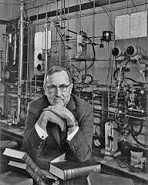
On Aug. 4, 1914 - Nov. 11, 1918 the horrific World War I causes 15M deaths and 39M military casualties. and destroys the Old Order of white formerly Christian Europe. On Feb. 26-28, 1915 the Germans first use a Flamethrower (Flame Projector) in the village of Douaumont, France near Verdun, becoming the first of 653 flamethrower attacks in the war. On Apr. 1, 1915 French aviator Roland Garros (1888-1918) becomes the first pilot to shoot down an aircraft using a deflector gear, which allows shooting through the propeller; after more Vs against German aircraft on Apr. 15 and Apr. 18, he is shot down and the Germans capture his plane, after which Dutch designer Anthony (Anton Herman Gerard) Fokker (1890-1939) clones then improves the deflector gear into the synchronization (interrupter) gear, mounting them on the new Fokker E.I. in Aug., beginning the Fokker Scourge (Scare) as they shoot down nearly every enemy aircraft they encounter and generate the first German aces, incl. Max Immelmann (1890-1916); next year the French counter with the Nieuport 11 Bebe (Bébé), in which the gun is mounted on the top wing clear of the prop, and the British with the Royal Aircraft Factory F.E.2b and Airco DH.2 (Feb. 1916), which mount the engine backwards with the prop in back, causing them to be called "pushers", ending the Fokker Scourge by spring 1917. In 1915 arsenic-based vomiting-sneeze gas Adamsite (DM) (diphenylaminechlorarsine) is synthesized by German chemist Heinrich Otto Wieland (1877-1957); in 1918 Am chemist Roger Adams (1889-1971) duplicates it, and both sides stockpile it, but it is allegedly never used on the battlefield. On Mar. 22, 1916 the British have their first success with their new Depth Charge off the SW coast of Ireland, destroying a German U-boat. Are you used to Hell yet, try this? On Sept. 15, 1916 Winston Churchill's pet project the Tank (Russian Water Closet) (Char-Schneider) is first used by the Brits in the Somme.








On Feb. 17, 1915 the land war being stalemated, the Allies launch the Gallipoli Campaign (Offensive) (ends Jan. 9, 1916) in the Gallipoli Peninsula and the Dardanelles Strait, "the soft underbelly of Europe" (Churchill), with the goals of capturing Istanbul and securing a sea route to Russia, with the British Navy bombarding the two outer Dardanelles forts Sedd-ul-Bahr (Sedd el Bahr) (Turk. "key of the sea") and Kum Kale, repeating it on Feb. 25 and destroying them both, which doesn't stop the Turks from siting artillery and machine guns there. On Mar. 18, 1915 the Allies begin the final attack on Gallipoli with six British and four French battleships; too bad, minesweepers fail to clear a line of 20 mines parallel to the shore laid by Turkish steamer Nousret on Mar. 18, sinking British battleships HMS Irresistible and HMS Ocean, killing 47, and French battleship Bouvet, killing 620; the British almost defeat the Turks during the night, but screw up via poor communications?; on Mar. 19 bad weather sets in, and the army is called to finish the job under Gen. Sir Ian Standish Monteith Hamilton (1853-1947); on Mar. 20 the British forget about 1854 and 1878 and secretly promise Russia Constantinople, the Bosphorus Strait, more than half of Turkey, and the shores of the Dardanelles incl. the Gallipoli Peninsula, and on Mar. 29 the Russian Black Sea Fleet of five battleships, two cruisers, and 10 destroyers attacks the forts on the Bosphorus Strait, losing two destroyers to the Goeben before withdrawing; meanwhile on Mar. 25 British colonial secy. (1910-15) Lewis (Reginald) Vernon "Loulou" Harcourt, 1st Viscount Harcourt (1863-1922) sends a memo to the British War Council titled The Spoils, proposing that after the expected easy defeat of Turkey, Britain annex Mesopotamia as "an outlet for Indian emigration", and offer Jerusalem, Bethlehem, and Nazareth (the "Holy Places") to the U.S. as a mandate, while Lord Kitchener suggests British annexation of Aleppo and Alexandretta, making Haifa a British port and oil pipeline terminal linking to Mosul, the British Admiralty suggests annexing the entire Euphrates River Valley from Urfa and Baghdad to Basra to block Russian expansion, British secular Jewish diplomat Herbert Louis Samuel, 1st Viscount Samuel (1870-1963) kibbutzes for a Jewish homeland in Palestine, British Conservative MP Col. Sir Mark Sykes (1879-1919) proposes giving Palestine incl. Jerusalem, Bethlehem, and Jaffa to a "special Russian admin.", and first lord of the admiralty (since Oct. 24, 1911) Winston Leonard Spencer-Churchill (1874-1965) suggests giving Palestine to Belgium, and urges another naval attack to make an army landing unnecessary; Sykes and his group at Lord Kitchener's War office resurrect the names Syria, Palestine, Iraq, and Mesopotamia, and design the Arab Revolt Flag with its green-red-black-white colors; on Mar. 26 Gen. Liman von Sanders arrives to take command of the Turkish Fifth Army, while Bulgaria and Romania buckle to German pressure and allow German weapons to pass through to Turkey, the British protesting in vain; German aircraft are stationed at Chanak to provide the Turks with aerial reconnaissance, until on Apr. 18 a British plane drops six 100 lb. bombs on the hanger, destroying them; meanwhile Greek, Armenian, and Jewish night workers from Chanak are enlisted along with 500 German officers and soldiers to build defenses for the Gallipoli Peninsula from Cape Helles to Bulair. Erin go bragh? On Apr. 25 (Anzac Day) (3:30 a.m.) the Australian and New Zealand Army Corps (Anzac) accompanied by British and French trops land on Gallipoli Peninsula in the Dardanelle Straits with the goal of capturing Constantinople, starting the losing Battle of Gallipoli (Canakkale) AKA the Gallipoli or Dardanelles Campaign (ends Jan. 9, 1916), with one group landing before dawn at Z Beach in Anzac Cove beneath the precipitous heights of Chunuk Bair in the N, missing the intended landing place Gaba Tepe 1 mi. S opposite Maidos, being stopped two-thirds of the way up the slope by the Turks; the other group lands at S, V, W, X, and Y Beaches at Cape Helles at the S tip, meeting heavy Turkish fire, causing many to drown under the weight of their equipment, losing half their men at V Beach, and 254 killed and 283 wounded of 950 at W Beach; the Lancashire Fusiliers (of 1811 Spanish Peninsula War fame) are awarded six Victoria Crosses, spawning the phrase "Six VCs before breakfast", causing W Beach to be known as Lancashire Landing; Kiwi swimming champ Bernard Cyril Freyberg (1889-1963) is made to swim ashore in the Gulf of Saros and light flares in a lame attempt to distract the Turks from the real landings in Gallipoli, receiving serious wounds, and in WWII is appointed cmdr. of the 2nd New Zealand Expeditionary Force, becoming known for his policy of resisting any orders from the stankin' British if he believes they run contrary to New Zealand nat. interest; in the 1920s Anzac Day becomes a nat. holiday in Australia; by Apr. 26 (night) after 20K casualties the Allies land 30K troops; on Apr. 27 the Turks retreat in front of the hill of Achi Baba, and hold their lines after stopping a British attack on the village of Krithia by 14K men, who lose 3K casualties, and repelling 14K troops from Cape Helles on Apr. 28; on Apr. 29 Capt. Hugh Quinn (1888-1915) leads a detachment of 226 Queenslanders from the 15th Battalion, which is stopped at the head of the Monash Valley at Quinn's Post, which holds on for 8 mo. after Quinn is promoted to maj. on May 1 and KIA on May 29; on Apr. 30 British battleship HMS Lord Nelson bombards the whole length of the Dardenelles, setting Chanak on fire, doing ditto 1 mo. later; on May 6 a British sub sinks Turkish troop transport Guj Djemal in the Sea of Marmara, killing all 6K troops aboard. On May 1 (10:15 p.m.) the Battle of Eski Hissarlik in Gallipoli near Achi Baba Hill sees the Ottomans under Gen. Liman von Sanders unsuccessfully attempt to push the Allied troops back into the sea. On May 11 an armistice is called in Gallipoli to bury the dead. On May 19 17K Anzac troops beat back an assault by 40K Turks at Gallipoli, which is now in a Western Front-style stalemate. On May 24 the Anzac troops at Gallipoli agree to a 10-hour truce to allow the Turks to bury 3K dead; meanwhile a British sub sinks a Turkish torpedo gunboat off Seraglio Point, and on May 26 it sinks a Turkish troop ship. On May 25 disgraced Winston Churchill resigns as first lord of the admiralty (since Oct. 24, 1911). On May 25 German sub U-21 under Capt. Otto Hersing (first to reach the area from the Baltic Sea) sinks British battleship HMS Triumph off Gaba Tepe at Gallipoli, killing 100+, causing the soldiers on land to stop fighting and stand up craning their necks until it sinks, then resume fighting; on May 27 U-21 sinks British battleship HMS Majestic, causing the six remaining British battleships to leave the area, causing jubilation among the Turks who had been groaning under daily shelling by 14 in. and 15 in. guns. On June 4 the Second Battle of Achi Baba in Gallipoli sees 30K British and French troops attempt to take the hill, getting fooled by a dummy trench and wasting artillery on it, only to discover the real trench beyond; after capturing it, they are shelled by both sides until they pull back, losing most of the officers; meanwhile on June 4 the Third Battle of Krithia sees the Lancashire Fusiliers almost succeed until German col. Hans Kannengiesser becomes afraid to reinforce the Turkish line for fear of a mass retreat to Constantinople, and British donkey gen. Sir Aylmer Hunter-Weston sends his reserves to Achi Baba instead; on June 6 the Turks counterattack and are repulsed, and the battle ends with a total of 4.5K British, 2K French, and 9K Turkish casualties (3K KIA). a German officer, with the caption "Gott mit uns" (God with us). On Aug. 6-15 50K green British-Indian and Anzac troops land at Suvla Bay in N Gallipoli, with diversionary battles at Anzac Cove N of Gaba Tepe and Lone Pine (Aug. 6-10), losing 1.7K casualties vs. 4K Turkish casualties, and earning seven Victoria Crosses; the Battle of Krithia Vineyard (Aug. 6-13) sees another diversionary attack at Krithia beaten back, causing British Brig. Gen. H.E. Street to order a series of futile and bloody attacks until Aug. 13, with total casualties of 3,480 British vs. 7,510 Turkish; the virtually unopposed advance at Suvla Bay throws British cmdrs. off balance, causing the troops to stay on the beach, with many men going for a swim; on Aug. 6 (night) 16K Anzac troops advance N from Anzac Cove to Suvla Bay to seize the summit of Koja Chemin Tepe, taking it briefly on Aug. 9 until British ships mistakenly shell them; on Aug. 9 Kiwi troops holding Chunuk Bair are attacked by the Turks under Col. Mustafa Kemal, who force them off on Aug. 10, earning Kemal a promotion to gen.; on Aug. 9 Allied troops at Suvla Bay capture Scimitar Hill in the Chunuk Bair Mts. before being driven back by the Turks, "like a crowd streaming away from a football match", with Pvt. Hugh Walter McWhirter becoming the first Newfoundlander to be KIA in the war on Sept. 22; by Aug. 19 2K Allied troops are KIA and 22K are wounded, shipped to hospitals in Egypt and Malta, filling them up by Aug. 13; on Aug. 13 a new attack reaches Anfarta Ridge, where it stalls through lack of fighting spirit of the men until a Turkish counterattack drives them back, causing Lord Kitchener on Aug. 16 to sack gens. Stopford, Hammersley, and Lindley, and force Gen. Mahon to resign. On Aug. 21 the Battle of Scimitar Hill sees the largest single-day attack by the Allies at Gallipoli, with three divs. (14.3K men) attempting to remove the Ottoman threat from the exposed Suvla landing along with an attack on Hill 60, ending in the Turks bloodily beating them back, with 5.3K British and 2.6K Turkish casualties; Brig.-Gen. Thomas Pakenham, 5th Earl of Longford (b. 1864) is KIA after uttering the soundbyte: "Don't bother ducking, the men don't like it and it doesn't do any good", and Pvt. Frederick William Owen "Fred" Potts (1892-1943) receives the Victoria Cross; British Gen. Sir Julian Hedworth George "Bungo" Byng (1862-1935) becomes new cmdr. at Suvla Bay, finding that the entire British force suffers from chronic disabling diarrhea, later telling Sir Ian Hamilton that there aren't enough high-explosive artillery shells to mount another offensive, which Hamilton laughs off; on Aug. 29 a single Turkish shell kills 113 British mules. On Oct. 28 new British Gallipoli cmdr. Gen. Sir Carmichael Charles Monro (1860-1929) receives a telegram from Magua, er, Lord Kitchener asking if he wants to stay or withdraw, and on Oct. 31 after Suvla Bay cmdr. Gen Julian Byng concurs and Gen. Birdbrain, er, William Riddell "Birdy" Birdwood (1865-1951) objects for fear of a Muslim uprising in India, he replies, recommending withdrawal, but London waffles, leaving them struggling in the mud, wind, and rain, suffering from illness and lack of ammo, evacuating 300 sick a day; Winston Churchill utters the soundbyte about Monro: "He came, he saw, he capitulated." On Nov. 11 after Winston Churchill lobbies in vain for a renewed land and sea attack, Lord Kitchener makes a surprise visit to Gallipoli, where new cmdr. (since Nov. 4) Gen. Birdwood wants to make another assault on the Turks, but is overruled and evacuation ordered; the same day the cabinet's war council is reduced to five members sans Churchill, who resigns from the cabinet and navy and goes to the Western Front as a lt.-col. in the army in charge of a battalion, serving 6 mo. at Ploegsteert, once speculating that if a shell hit him it would be a "good ending to a chequered life, a final gift - unvalued - to an ungrateful country - an impoverishment of the war-making power of Britain which no one would ever know or measure or mourn"; the beaten Anzac-Anglo-French Gallipoli forces (50% casualties) begin pouring back into Egypt. On Nov. 27 a severe thunderstorm at Gallipoli turns the trenches into moats, drowning 100+; on Nov. 28-29 a severe blizzard kills 100+ more, and causes 12K to be treated for frostbite, esp. Indians and Australians; the storm kills the zillions of flies gorging on corpses; on Dec. 2 back in London, Lord Kitchener waffles on the evacuation, exploring how four British divs. at Salonica might be sent in, but drops it when the lack of landing piers, roads, and quarters is explained by Gen. Byng. On Dec. 27 the British Cabinet decides to evacuate Cape Helles and abandon Gallipoli. On Jan. 9 after an 11-day evacuation the last of 35,268 British troops evacuate Cape Helles on the Gallipoli Peninsula, leaving booby traps for the Turks; 3,689 horses and mules are evacuated after 508 mules are shot and 1,590 vehicles abandoned, ending the Gallipoli Campaign (begun Feb. 17, 1915); total casualties incl. 66K Turks vs. 28K Brits, 7,595 Australians, 2,431 Kiwis, and 10K French killed; 36K Turkish troops relocate to Mesopotamia to take on the British; the Gallipoli Campaign goes on to define the Australian nat. identity of endurance, bravery, and mateship despite being the country's worst military defeat (until ?).

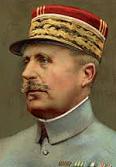
On Dec. 5, 1916 British PM (since Apr. 5, 1908) Herbert Henry Asquith resigns, and is succeeded on Dec. 6 by fellow Liberal David Lloyd George (1863-1945) (until Oct. 19, 1922) (first Welsh PM) (last Liberal British PM until ?) (the only person in the govt. with "any aptitude for war or knowledge of it" - Winston Churchill), who outmaneuvered him into thinking that the British losses on the Somme were due to the ineptness of British Gen. Douglas Haig and wanting him dismissed; later, when Haig's friends come through for him, George hatches a plan with English-speaking French Gen. (an artilleryman and hero of Verdun) Robert Georges Nivelle (1856-1924) (who replaces Joseph Joffre as CIC of the French Army on Dec. 13) to place him under his command; Joffre is actually promoted to marshal of France by Pres. Raymond Poincare and keeps the official title of CIC to make him a figurehead while Nivelle is in de facto command.

On Dec. 10, 1916 after becoming Viscount Grey of Fallodon in July, pro-Asquith British foreign secy. (since Dec. 10, 1905) Sir Edward Grey resigns, and is succeeded by wealthy Conservative former PM (1902-5) Arthur James Balfour (1848-1930) (until Oct. 23, 1919).



Roman Emperor Hadrian rolls over in his grave? On Nov. 2, 1917 after Russian-born Jewish U. of Manchester chemistry prof. Chaim Azriel Weizmann (1874-1952) invents the ABE Process, which extracts acetate from British chestnuts for production of cordite for explosive shells, and PM David Lloyd-George asks him how to repay him, getting the reply "All I want is a homeland for my people", British Conservative foreign secy. (PM from 1902-5) Arthur James Balfour (1848-1930) sends an official letter to British Jewish Zionist scion Lionel Walter Rothschild, 2nd Baron Rothschild (1868-1937) known as the Balfour Declaration, announcing "His Majesty's government view with favour the establishment in Palestine of a national home for the Jewish people, and will use their best endeavors to facilitate the achievement of this object, it being clearly understood that nothing shall be done which may prejudice the civil and religious rights of existing non-Jewish communities in Palestine, or the rights and political status enjoyed by Jews in any other country"; one motivation is rallying Jewish troops to keep Russia in the war, and on Nov. 3 three leading Zionists incl. Ze'ev (Vladimir) Jabotinsky arrange to go to Petrograd to rally Russian Jews to the Allied cause - proof that WWI was really started and/or finished by Jews, who got the U.S. to intervene and turn a German V into a D in order to cause Britain to give them Palestine, which pissed-off the Germans, who up to now had been nice to them, causing WWII?
In 1920 Birbeck College of London U. in London, England is founded from the London Mechanics' Inst. (founded 1823) to give part-time tuition to working adults.
On Mar. 3, 1921 the 1921 British Emergency Unemployment Act increases unemployment payments for the 1M unemployed, but funds them out of future unemployment insurance contributions; it works, since on Mar. 28 the Labour Party refuses to affiliate with the Communists.

On Oct. 23, 1922 after gen. elections in Britain give Conservatives 344 seats, Labour 138, and Liberals 117, Kingston, New Brunswick, Canada-born Conservative leader Andrew Bonar Law (1858-1923), known for working for tariff reform and against Irish Home Rule becomes the first province-born British PM (until May 20, 1923), and first to be born outside the British Isles (until ?), going on to negotiate its war debt with the U.S.; too bad, he contracts terminal throat cancer.
On Apr. 26, 1923 Prince Albert Windsor (b. 1895) (later George VI) marries Elizabeth Angela Marguerite Bowes-Lyon (1900-2002), whom his brother Prince David (later Edward VIII) calls "Cookie" because she looks like a plump Scottish cook?; she goes on to become the mother of Elizabeth II and Princess Margaret.


On May 20, 1923 British PM (since Oct. 23, 1922) Bonar Law (b. 1858) resigns, and dies of throat cancer on Oct. 30, and on May 22 Conservative chancellor of the exchequer (since Oct. 27, 1922) Stanley Baldwin (1867-1947) (first cousin of Rudyard Kipling) (whose portrait bears a striking resemblance to actor Robert De Niro (1943-)?) becomes British PM (until Jan. 22, 1924), with Neville Chamberlain becoming chancellor of the exchequer in Aug. (until Dec. 6); on Dec. 6 the 1923 British gen. election gives Conservatives 258 seats, Labour 191, and Liberals 158, resulting in a hung Parliament, becoming the last British gen. election in which the third party wins more than 100 seats or 26% of the vote (until ?).


On Jan. 22, 1924 British PM (since May 22, 1923) Stanley Baldwin resigns after he appeals to the nation to let him renege on his pledge to Bonar Law not to levy protective tarrifs, resulting in a Labor and Liberal majority in the elections, and on Jan. 22 Labour Party leader James Ramsay MacDonald (1866-1937) becomes PM of Britain (until Nov. 4), forming Britain's first Labour govt., which soon jumps the gun and recognizes the False Labour Paradise of the Soviet Union; former Liberal lord chancellor (1912-5) Richard Burdon Haldane, 1st Viscount Haldane (1856-1928) (who was forced to resign after being falsely accused of German sympathies, and switched parties) becomes the "Labour Lord Chancellor", being portrayed in Punch as drinking a mug of beer and smoking a pipe like any working man in a pub.; too bad, in Oct. four days before the 1924 British gen. election the Zinoviev Letter, in which Grigory Zinoviev, hed of the Comintern in Moscow allegedly instructs Britons to provoke a Commie rev. is pub. by the London Foreign Office, bringing down the Labour Party before the paint is dry on Downing St.; it is later claimed to be a dirty trick forgery by Odessa-born "Ace of Spies" Sidney George Reilly (Sigmund Georgevich Rosenblum) (1874-1925); in Nov. the Conservatives handily win the gen. election with 413 seats vs. 150 for Labour and only 40 for the Liberals, and on Nov. 4 Stanley Baldwin becomes PM again (until June 4, 1929); Winston Churchill (1874-1965) smartly switches from the Liberals to the Conservatives, and is rewarded by being made chancellor of the exchequer on Nov. 6 (until June 4, 1929) - just in time for the Stock Market Crash of 1929, because it's all a conspiracy?
In 1927 the U. of Hull (originally the Univ. College Hull) is founded in Kingston upon Hull, East Riding of Yorkshire, England by Prince Albert, Duke of York (later George VI), becoming the home of poet Philip Larkin; alumni incl. Anthony Minghella.

On May 30, 1929 the 1929 British gen. election gives a V to the 30-y.-o Labour Party (founded Feb. 27, 1900), which wins 287 seats, vs. 260 for Conservatives, and 59 for Liberals; causing Stanley Baldwin to resign on June 4, and Ramsay MacDonald to get his 2nd chance as PM of a British Labour govt. on June 5 (until June 7, 1935); on June 7 Arthur Henderson (1863-1935) is named foreign secy. (until Aug. 24, 1931), going on to reestablish diplomatic relations with the Soviet Union and support the League of Nations, becoming known as "Uncle Arthur".



On June 7, 1935 Conservative lord pres. of the council (since Aug. 24, 1931) (PM in 1923-4 and 1924-9) Stanley Baldwin (1867-1947) succeeds Labour PM (since June 5, 1929) Ramsay MacDonald as British PM (until May 28, 1937), and Sir Samuel John Gurney Hoare (1880-1959) becomes foreign secy. (until Dec. 18), followed by home secy. in 1937-9, lord privy seal in 1939-40, and secy. of state for air in 1940; on Nov. 14 the 1935 British gen. election is a big V for the Conservative Party, which wins 386 seats, vs. 154 for Labour, and 33 for Liberal Nat., causing a reconstruction of the cabinet, which continues the nat. coalition govt.; too bad, in early Dec. the Hoare-Laval Pact on Abyssinia (Ethiopia), by which it is to cede a large portion of its territory to Italy is pub. and rejected after a public outcry over appeasement of Mussolini, causing Hoare to resign on Dec. 18 and Laval's govt. to fall; on Dec. 22 Hoare is replaced by lord privy seal (since June 1934) Sir Anthony Eden, Earl of Avon (1897-1977) (until Feb. 22, 1938) (known for wearing a Homburg hat, which is named after him, causing Mussolini to call him "the best-dressed fool in Europe"), who tries in vain to get Mussolini to submit the dispute to the League of Nations; at his first audience with him, George V tells Eden: "No more coals to Newcastle, no more Hoares to Paris."



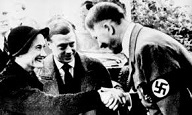


King for a year, or, I Have Eight English Eddies and She Has a Brazilian Bikini Wax, or, The Original Homer Simpson? On Jan. 20, 1936 king (since May 6, 1910) George V (b. 1865) dies, and his depressed, sexually degenerate (submissive?) son Edward VIII (1894-1972) becomes king of Great Britain (58th monarch) (until Jan. 20, 1936) (for 325 days); 568,387 people pass George's coffin in Westminster Hall, and 3M people throng the streets to view the procession to Westminster Abbey for the burial; on his deathbed, George utters the prophecy "After I'm gone, the old boy will ruin himself in 12 months"; upon seeing his daddy's coffin lowered, Edward comments "Christ, what will happen next?"; a power struggle ensues over Edward's friendship with British Nazi Party leader Oswald Mosley, led by PM Stanley Baldwin, who uses the king's twice-divorced concubine Wallis Simpson (nee Bessie Wallis Warfield) (1897-1986) as his Achilles heel; in the summer the king takes a licentious cruise on the steam yacht Nahlin in the Mediterranean with his babe, causing worldwide publicity after British diplomat Philip Henry Kerr, 11th Marquess of Lothian (1882-1940) gives the scoop to Eugene Meyer, owner of the Washington Post, which is blanked out in England, and Baldwin tricks the king into asking his advice on his relationship with Simpson, which he is legally bound to follow, then tells him to give her up or abdicate, because as head of the Church of England, which doesn't let divorced people marry, yada yada yada, which he can never do since she's his dominatrix and makes him beg for a light for his cigs?; Duchess Elizabeth of York detests the "royal harlot", but Churchill stands up for Edward in Parliament, and is hooted down, and the adoring public protests with signs reading "Hands Off Our King" and "Abdication Means Revolution"; however, (does she tie his Windsor knot just right?) after trying all year to get by, slide by, and get over it, all in vain, on Dec. 3 Edward VIII, with the soundbyte "At long last I am able to say a few words of my own" announces that he's in love with a divorced Yankee woman (whose 2nd divorce has not become final?), and abdicates on Dec. 10 (first voluntary abdication in British history) after 325 days in power, saying in a Dec. 11 radio broadcast (written by Churchill), "I have found it impossible to carry on the heavy burden of responsibility and to discharge the duties of king as I would wish to do without the help and support of the woman I love"; on Dec. 11 his reluctant brother Albert Frederick Arthur George, Duke of York (who bears a striking resemblance to Dr. Seuss' Cat in the Hat?) becomes king George VI (Albert Frederick Arthur George) (1895-1952) of the U.K. and the British Dominions (59th monarch) (until Feb. 6, 1952), and last emperor of India (until Aug. 15, 1947), placing his daughter Elizabeth Alexandra Mary (b. 1926) (future Elizabeth II) next in line for the throne, becoming the 3rd time that there have been three different English kings in the same year (1066, 1483); his wife (since 1923) Elizabeth Angela Marguerite Bowes-Lyon (1900-2002) becomes queen consort of the U.K. and the British Dominions, and last empress consort of India (until Feb. 6, 1952, after which she becomes known as Queen Elizabeth the Queen Mother; George VI goes on to preside over the completion of the British Commonwealth (begun 1931) in 1949; George VI suffers from a bad stutter, which he tries mightily to overcome with Australian speech therapist Lionel Logue (1880-1953) (Lat. "speech") (who calls him "Bertie"); within 24 hours of his accession the Irish Free State parliament passes the External Relations Act, dissolving his power in Ireland and removing him from their constitution; the royal family refuses to recognize Wallis' title of Her Royal Highness but makes him the Duke of Windsor, and he leaves for Monts, France where on June 3, 1937 they marry, with the new king banning the royal family from attending, and then live in exile for much of the rest of their lives, forever trying to talk George VI into letting them back in, while the real problem of his Nazi connections makes it impossible?; meanwhile misgivings about the capacity for kingship of the duke of York cause some to prefer his brother George, Duke of Kent (George Edward Alexander Edmund) (1902-42) (4th son of George V and Queen Mary of Teck), who is married to beautiful Princess Marina and has a son to succeed him, until rumors of his kinky interests in black women, hard drugs and young men, plus a gay affair with playwright Noel Coward surface, with Charles Russell later telling Coward, "You were almost a king's mistress, weren't you?"; at the wedding Wallis Simpson wears a wedding dress by Chicago-born. couturier Mainbocher (1891-1976).
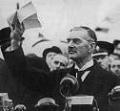
On May 28, 1937 68-y.-o. Conservative chancellor of the exchequer (1923-4) and health minister (1931) Neville Chamberlain (1869-1940) becomes British PM (until May 10, 1940) after 70-y.-o. PM (since June 7, 1935) Stanley Baldwin (b. 1867) retires, beginning his policy of trying to save lives, er, peaceful coexistence, er, appeasement; Baldwin is made 1st Earl of Bewdley, and later confesses his failure to inform the British people of the preparations the Germans were making for WWII; Winston Churchill later utters the soundbyte "An appeaser is one who feeds a crocodile hoping it will eat him last" - just what the position needs, the freshness of youth?


Excuse me while I slip into something fatuous? On Sept. 15, 1938 ready-to-please British PM Neville Chamberlain visits Adolf Hitler in Berchtesgaden, where Hitler threatens to invade Czech. unless Britain supports the German takeover of the Sudetenland in Czech.; on Sept. 18 PM Edouard Daladier and Radical-Socialist French foreign minister Georges-Etienne Bonnet (1889-1973) arrive in London, and decide to urge the Czech govt. to accept Hitler's terms, and on Sept. 20 Czech. proposes arbitration based on the 1925 German-Czech Locarno Treaty, which Britain and France reject; on Sept. 21 pressure by France and Britain causes Prague to yield, and on Sept. 21 Milan Hodza's cabinet resigns, and a new govt. is formed under Gen. Jan Sirovy; on Sept. 21 Winston Churchill condemns Hitler's annexation of Czech., while Mussolini remains in the background; on Sept. 22-23 Chamberlain visits Herr Hitler again at Bad Godesberg (Ger. "Mountain of His God"?); on Sept. 24 (early a.m.) Hitler issues the Godesberg Memorandum, demanding the surrender of the German territories at once, with plebiscites of the areas with large German minorities by Nov. 25; on Sept. 24 the Czech govt. orders full mobilization, throwing the world into its most serious crisis since 1918; on Sept. 26 Hitler issues an ultimatum to the Czech govt.; on Sept. 26 Daladier and Bonnet come to London again, and decide this time to support Czech. in resisting Hitler, while Chamberlain asks Hitler for a conference to give him what he wants without force; on Sept. 27 FDR also appeals to Hitler for a conference, which Hitler agrees to on Sept. 28 after Mussolini (put up to it by Chamberlain and Roosevelt) persuades him; on Sept. 29 Hitler, Ribbentrop, Mussolini, Ciano, Chamberlain, and Daladier meet in Munich, and just after midnight on Sept. 30 Chamberlain, seconded by Lord Halifax caves in to Darth, er, Herr Hitler, and signs the Munich Agreement (Pact), along with French PM Edouard Daladier and Mussolini, transferring the Sudetenland to Germany over Czech protests, with Hitler promising not to make any more territorial demands on Europe; on Sept. 30 the Czech govt. also caves in to the settlement; Chamberlain predicts "peace in our time", claiming a V for his appeasement policy, while Germany now dominates C Europe and is on the verge of dominating the entire Danubian area, and the last dem. outpost in C Europe is kaput; during the conference, a plot to depose Hitler headed by Fourth Panzer Group cmdr. Gen. Erich Hoepner (1886-1994) is stopped in its er, tracks with the announcement of the Munich Agreement, and Hitler fails to uncover it; on Oct. 1 British first lord of the admiralty (since May 1937) Alfred Duff Cooper (1890-1954) resigns in protest of the Munich Agreement, with the soundbyte: "War with honour or peace with dishonour; but war with dishonour - that was too much"; Chamberlain appoints Lord Runciman as lord pres. of the council until the outbreak of WWII; meanwhile during the Munich crisis the British govt. issues gas masks to civilians - I mays look white, but I aims to appease, yessuh, massuh, yessuh?



On Sept. 1, 1939 - Sept. 2, 1945 the horrific $3.5T World War II results in 24M military and 49M civilian deaths, and features the low point of the Jewish Holocaust (Shoah) by the German Nazis - I guess it was the Jews' fault for not ransoming themselves to go to Israel before they could round them up for the camps? The whole experience turns Jews from lovers into fighters, ramping up the Zionist movement with full world sympathy and support by new world superpower U.S., which has its own guilt trip because on Nov. 24, 1942 Budapest-born Am. Zionist leader Rabbi Stephen Samuel Wise (1874-1949) announces in a press conference in Washington, D.C. that he was authorized by the U.S. State Dept. to confirm that the Nazis had murdered 2M Jews as part of a plan to exterminate all Jews in Europe; too bad, the nat. newspapers don't consider it front page news, and the U.S. govt. does nada. After the war ends and Americans tour the concentration camps in horror, Polish-born Jewish scholar Raphael Lemkin (1900-59), who single-handedly led an unsuccessful campaign to get the League of Nations to give internat. protections against genocide starting in 1933 finally gets what he wanted after his own people got it, namely the Dec. 9, 1948 U.N. Convention on the Prevention and Punishment of the Crime of Genocide (Gen. Assembly Resolution 260), which doesn't come in force until Jan. 12, 1951, and which the U.S. still doesn't ratify until 1988.


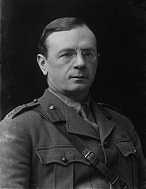
On May 10, 1940 after a coalition govt. becomes mandatory to fight the Germans, and the Labour Party led by his bitter enemy Edward Hugh John Deale Dalton (1887-1962) refuses to support him, failed appeaser PM (since May 28, 1937) Neville Chamberlain resigns after British Conservative politician Leopold Charles Maurice Stennett "Leo" Amery (1873-1955) tells him "In the name of God, go!", conveniently croaking on Nov. 9, and Sir Winston Leonard Spencer Churchill (1874-1965) (architect of the Norway disaster?) becomes British PM (until July 26, 1945) and defense minister, forming a special defense committee with the chiefs of staff to make daily strategic decisions, working to stop the British govt. from capitulating to Hitler in secret meetings, then on May 13 giving his Blood and Toil Speech (first speech as British PM), with the soundbyte: "I have nothing to offer but blood, toil, tears, and sweat."

The war is saved with British and U.S. technology? On July 10, 1940 after air marshal Hermann Goering promises Hitler it will only take 1-2 weeks, Germany, having only one unfinished business (the pesky Brits) begins the Battle of Britain (ends Nov. 2) with an all-out air attack starting in SE England, with the coast around Dover becoming known as Hell-Fire Corner as it is shelled by German guns from the opposite coast; on July 10 120 German planes attack a British shipping convoy in the English Channel, while 70 more bomb docks in S Wales; the British Ministry of Aircraft Production begins calling for citizens to donate aluminum, with the soundbyte: "We will turn your pots and pans into Spitfires and Hurricanes, Blenheims and Wellingtons"; after it doen's work as planned, they restart it officially on Aug. 13 (Eagle Day); the Luftwaffe has 1.5K fighters vs. 850 for the Brits, who are hampered by being on the defensive, needing to hold back half their force for defense of Midlands and N factories; on July 10 the British Ministry of Aircraft Production begins calling for citizens to donate aluminum, with the soundbyte: "We will turn your pots and pans into Spitfires and Hurricanes, Blenheims and Wellingtons"; on July 14 the Striking Cos. launch Operation Ambassador (ends July 15) to attack Guernsey, turning into a fiasco, with one killed and two taken POW; air chief marshal Sir Hugh Dowding (1882-1970) is CIC of the RAF Fighter Command; a new secret veapon called RADAR (Radio Detection and Ranging) is used to effect by the Allies, facing 2.5K total German planes, who fail in their attempt to control the Channel, losing 1.7K planes and killing 23K British civilians before giving up; Rolls-Royce wins the battle with their Merlin Engines for the single-seat Supermarine Spitfire (first flight Mar. 5, 1936) and Hawker Hurricane (first flight Nov. 6, 1935), which can out-turn the German Messerschmitt Bf-109 (first flight May 29, 1935) but have a lower ceiling; the U.S. and Britain begin cooperating in radar development at the MIT Radiation Laboratory in Cambridge, Mass.; until Aug. 7 the Germans carry out only "test raids" on Channel merchant shipping, sinking 30K tons and downing 148 British planes, with losses of 286 German planes; the main air battle on Aug. 24-Sept. 6 is fought over the radar installations and S airfields of Fighter Command, but the Germans screw up and leave the radars intact, and fail to finish off the airfields, instead going on to attack factories and London, spurred by Hitler, who was mad that the Brits had bombed Berlin and wanted to get even; the battle ends with 414 British and allied pilots KIA (about one-third).






Thanks, we'll take it from here? On July 26, 1945 British PM (since May 10, 1940) Winston Churchill resigns after his Conservatives are soundly defeated by the Labour Party, and on July 26 Clement Richard Attlee (1883-1967) becomes British PM (until Oct. 26, 1951); Herbert Stanley Morrison (1888-1965) becomes deputy PM (until Oct. 26, 1951); Ernest Bevin (1881-1951) becomes foreign secy. (until Mar. 9, 1951); A.J. Cronin's 1937 novel The Citadel, and criticism by the Daily Mirror, owned by the king of harmful evil criticism Cecil Harmsworth King (1901-87) help the Labour Party win in an unexpected landslide; Churchill's wife comments that perhaps it's a blessing in disguise, to which he replies that if so it was very well disguised; the Fabian Society gets a shot in the arm, and its membership rises to 4.5K, incl. more than 100 MPs; on Aug. 3 Welsh Socialist Labour leader Hillary, er, Aneurin (Nye) Bevan (1897-1960) is appointed minister of health (until Jan. 17, 1951), going on to work to ease the postwart housing shortage and form the Nat. Health Service; the Labour Party Manifesto (Let Us Face the Future) is co-written by Morrison and Michael Young (1915-2002), who is created baron Young of Dartington in 1978.
In Jan. 1946 the RAF Strikes in India sees 50K men in 60+ RAF stations in India and Ceylon strike after being told they were to be used to maintain British rule rather than be sent home, becoming the biggest British military mass revolt in history; this leads to the Royal Indian Navy Mutiny of 1946 against British rule on Feb. 18-25, which starts in Karachi and spreads to Calcutta, involving 20K+ sailors in 78 ships and shore establishments; civilians in Bombay support with a 1-day gen. strike, which spreads to other cities.
On Apr. 22-25, 1951 the Battle of the Imjin River (Gloster Hill) (Solma-ri) sees 4K troops of the British 29th Brigade and 1st Battalion hold off 27K troops of the Chinese 63rd Army, with 400 "Glorious Glosters" fighting a last stand on Hill 235 (later rename Gloster Hill) against 10K Chinese troops for three nights, giving U.N. forces a chance to regroup and block the Chinese advance on Seoul.

On Oct. 25, 1951 British gen. elections result in the Conservative Party regaining control from the Labour Party, and on Oct. 26 Conservative former PM (1940-5) Winston Leonard Spencer-Churchill (1874-1965) again becomes PM (until Apr. 5, 1955), with Anthony Eden as his foreign minister.


A worthy successor to Elizabeth I takes over the U.K.? On Feb. 6, 1952 king (since Dec. 11, 1936) George VI (b. 1895) dies of lung cancer while his eldest daughter Princess Elizabeth Alexandra Mary is watching wildlife in Kenya, and she becomes Queen Elizabeth II (1926-) of Great Britain and Northern Ireland (60th monarch) (until ?); George VI's widow Elizabeth Bowes-Lyon becomes Queen Elizabeth the Queen Mother (Mum) (1900-2002), and never forgives Edward VIII for abdicating and making him become king, thus hastening his death?; Edward and Wallis Simpson attend the funeral, and Edward comments "You've never seen such a bunch of worn-out old hags", referring to all the women who now run England and detest him?; on Feb. 5-6 Princess Elizabeth is staying at the Treetops Hotel near Nyeri in Kenya, where big game hunter Edward James "Jim" Corbett (1875-1955) is also staying, and he writes the in the hotel register: "For the first time in the history of the world, a young girl climbed a tree one day a Princess, and after having what she described as her most thrilling experience, she climbed down from the tree the next day a Queen - God bless her" - she did Barack Obama's father too?
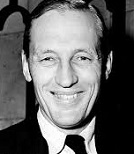


On Aug. 17, 1952 the Mau Mau Revolt (Uprising) in Kenya, East Africa (ends 1956) begins with a report received by the British colonial office in London about the secret Mau Mau society, formed in 1949 to fight white Euro settlers in the Kenyan highlands along with loyalist Kikuyus, who aren't accustomed to night meetings and forced oaths, esp. the Mau Mau Oath, which is often given at knifepoint to Kikuyu tribesman and calls for their murder if they don't evenly grin and bear it and kill a white farmer when ordered; on Oct. 6 Sir Evelyn Baring, 1st Baron Howick of Glendale (1903-73) (son of Evelyn Baring, 1st Earl of Cromer, the first British gov. of Egypt (1878-9), known for mistreatment of Egyptians) arrives as the new British gov.-gen. of Kenya (until 1959); next Jan. 18 Baring declares a state of emergency, imposing the death penalty for anyone administering the Mau Mau Oath; next Jan. 24 the white settler Ruck family (father, mother, 6-y.-o. son) is rucked and murdered by Mau Maus, beginning a bloody uprising against the British by the Kikuyu, Embu, and Meru tribes, who use funky white-killer weapons incl. the panga and the ronga, made from the baobab root; "Uma Uma" means "Get out, get out"?; next Mar. 25-26 the Lari Massacre sees the Mau Maus kill up to 150 Kikuyus; next Apr. 8 Jomo Kenyatta (1897-1978) and five other Kikuyu are convicted of masterminding it, but the Kenyan supreme court quashes the convictions next July 15 because of lack of evidence linking them to the Mau Mau, and Kenyatta is sentenced to several years of hard labor and banned from Kenya; this doesn't stop the British, who form a home guard of 20K Kikiyus and imprison 100K+ in detention camps over the next few years, during which 2K Kikuyus loyal to the British are murdered; in 1954 Kenyan-born anthropologist Louis Seymour Bazett Leakey (1903-72) pub. Defeating Mau Mau, which recommends land reform and wage hikes for the Kikuyus, and a multi-racial govt., most of which are eventually adopted; in 1956 the Mau Mau are cleared of their bases under Mt. Kenya, but the state of emergency lasts until 1960; Jomo Kenyatta is finally banished in 1961 after a measly 33 Euros are killed - how do we change the world, one act of random kindness at a time?


Britain goes East of Eden? On Apr. 5, 1955 PM (since Oct. 26, 1951) Winston Churchill resigns and retires, and Conservative foreign secy. Sir (since 1951) Robert Anthony Eden (1897-1977) (the guy who resigned in 1938 in protest of the appeasement policy of Neville Chamberlain) becomes British PM (until Jan. 9, 1957) (Elizabeth II's 2nd PM); Churchill's private secy. Sir John Rupert "Jock" Colville (1915-87), who later pub. his diaries claims to find Churchill sitting in his bed at 10 Downing St. saying "I don't think Anthony can do it."


On July 19, 1956 the Suez Crisis (ends Nov. 7) begins after ungrateful Egyptian pres. #2 (since June 23) Gen. Gamal ("camel") Abdel Nasser Hussein (1918-70) trades $200M in Egyptian cotton for guns from Czech., causing U.S. secy. of state John Foster Dulles to cancel the U.S. Aswan High Dam loan, causing Nasser on July 20 to nationalize the Suez Canal (which carries 1.5M barrels of oil a day, 1.2M going to W Europe), saying "I look at Americans and say, may you choke to death on your fury!", followed by "We shall build the high dam as we desire. The annual income of the Suez Canal is $100M. Why not take it ourselves?"; in Sept. Egypt takes control of the canal, expelling foreign technicians; at this point the Israelis are pissed-off by Egyptian-backed guerrilla raids from the Gaza Strip, the Brits by the nationalization of the Suez Canal, and the French by Egyptian support of Algerian independence, forming a conspiracy to overthrow Nasser, with British PM Sir Anthony Eden (who sees him as a new Mussolini) hiring CIA man (close friend of Nasser) Miles Axe Copeland Jr. (1916-91) to assassinate him, while planning begins for Operation Musketeer, a French-British plan to recapture the Suez Canal; too bad, Ike opposes the invasion on the grounds that he is an advocate of decolonization, showing Eden and the British up as wusses when they are forced to back down because of their financial dependence on the U.S.; the net result is that Israel moves closer to the U.S. govt., which becomes dominant in the region, and never undertakes any significant military operation without obtaining U.S. consent in advance (until ?); in Sept. French PM Guy Mollete secretly requests to merge France with the U.K. and join the Commonwealth of Nations, but British PM Anthony Eden turns him down, after which in Oct. he meets with Israeli PM David Ben-Gurion and agrees to stage a joint attack on Egypt.



On Jan. 10, 1957 Conservative Battle of the Somme vet Harold Macmillan (1894-1986) becomes PM of Britain (until Oct. 19, 1963) (Elizabeth II's 3rd PM), going on to champion Keynesian economics; in Mar. he holds the Bermuda Conference with Pres. Eisenhower to strengthen the special U.S.-U.K. relationship after the Suez Crisis; on July 20 he delivers his Bedford Speech, with the soundbyte that "most of our people have never had it so good"; German-born Jewish British cartoonist Vicky (Victor Weisz) (1913-66) caricatures him as Supermac (a spoof on Superman) in the London Evening Standard of Nov. 6, 1958.
On May 15, 1957 Britain explodes its first hydrogen bomb (H-bomb), joining the U.S. and Soviet Union in the Megaton Club.

On Jan. 18, 1963 as he is on the verge of becoming the next British PM, British Labour Party leader (since Dec. 14, 1955) Hugh Todd Naylor Gaitskell (b. 1906) (known for Gaitskelism, toleration of a mixed economy where not every industry is nationalized) dies of lupus, and leftist technocrat Harold Wilson is elected to succeed him, going on to champion scientific and technological change, issuing the soundbyte: "The Britain that is going to be forged in the white heat of this revolution will be no place for restrictive practices or for outdated measures on either side of industry."

Back in the USSR? In Jan. 1963 privileged elitist high-ranking British intel agent Harold Adrian Russell "Kim" Philby (1912-88) (member of the Cambridge Five spy ring) defects to the Soviet Union, receiving the Order of Lenin in 1965, going on to become a lush even in a country of lushes; on July 1 the British govt. admits that Philby was the 3rd man in the Burgess-Maclean spy ring - you don't know how lucky you are, man?






What's that profumo smell on your collar, John? The Beatles, the Lady Chatterly Trial, and the Profumo Scandal usher in the modern world in conservative Britain, setting the precedent for later politicians such as Bill Clinton lying to Congress about their virtually endless private sexcapades? On June 5, 1963 British Conservative war minister (since 1960) Lord John Dennis Profumo (1915-2006) comes clean and resigns over an untruthful statement ("no impropriety whatever") he made in the House of Commons on Mar. 22 over his short 1961 sex affair with much younger showgirl and call girl Christine Keeler (1943-), while married to "Kind Hearts and Coronets" actress Valerie (Babette Valerie Louise) Hobson (1917-98), rocking the British nation; London osteopath and portrait artist Stephen Thomas Ward (1912-63), who introduced her to him at a party in Cliveden in 1961 commits suicide in Aug. with sleeping pills after being charged with living on immoral earnings; Keeler is found guilty of unrelated perjury charges and sentenced to 9 mo. in prison; on Sept. 25 the Lord Denning Report on the affair is pub.; Keeler is also revealed a relationship with Soviet naval attache (spy) Capt. Yevgeny Mikhailovich "Eugene" "Honeybear" Ivanov (1926-94), who was trying to get Keeler to find out from Profumo when nuclear warheads will be delivered to West Germany, stirring James Bond fantasies; millions become exposed to rumors of high-ups engaging in orgies, drugs, sadomasochism, interracial sex, and homosexuality; the catchphrase "He would say that, wouldn't he?" by Keeler's Welsh showgirl roommate Miss Marilyn "Mandy" Rice-Davies (1944-2014) in court when told that Viscount Astor denies knowing her passes into the language; the scandal is depicted in the 1989 film Scandal, starring John Hurt, Joanne Whalley, and Bridget Fonda; Billy Joel mentions "British politician sex" in his 1989 Billy Joel song We Didn't Start the Fire.

The Beatles-Era PM of Britain? On Oct. 15, 1964 British elections result in Oxford-educated Labour Party leader (1963-76) James Harold Wilson (1916-95) (a brain man who became an Oxford don at age 21) becoming PM on Oct. 16 (until June 19, 1970) (5th PM under Elizabeth II) with a majority of four seats (which he increases to 96 in Mar. 1966 elections after getting the Beatles knighted in 1965); he goes on to enjoy a period of low unemployment and economic prosperity while pushing technocracy and presiding over the liberalization of society vis a vis censorship, divorce, homosexuality, abortion, capital punishment, immigration and race relations, and utters the soundbyte "A week is a long time in politics", and coins the phrase "the pound in your pocket"; his pic was taken at age 8 standing on the doorstep of 10 Downing St.

On July 1, 1969 (Tue.) Britain's Prince Charles (1948-) is invested as the 21st Prince of Wales at Caernarvon Castle in Wales, being crowned by his mother Elizabeth II in a highly publicized event plagued by bomb scares by Welsh nationalists.

On June 18, 1970 the 1970 British gen. election sees the Conservative Party, led by "Britain's Minister for Europe" (pro-Common Market) Sir Edward Richard George "Ted" Heath (1916-2005) (son of a carpenter and a maid) upset the Labour Party led by PM (since Oct. 16, 1964) Harold Wilson, with 330 seats for the Conservatives, 288 for Labour, and 6 for the Liberal Party of Jeremy Thorpe; on June 19 Heath becomes British PM (until Mar. 4, 1974); Enoch Powell's Apr. 20, 1968 Rivers of Blood Speech helped the Conservatives stage the surprise V, after which Powell becomes one of the top rebels against Heath's govt.?
In 1970 Exeter College in Exeter, Devon, England is founded as England's first tertiary college.
On Jan. 20-Mar. 8, 1971 (47 days) the first nationwide British postal strike idles 220K Union of Post Office Workers, costing $65M in lost revenue.
On May 12, 1971 the British Parliament passes the Courts Act of 1971, modernizing the court system of England and Wales, establishing the Crown Court while abolishing all assize curtws, quarter sessions et al.
On Feb. 16, 1973 after it crusades to get more money for victims, causing the atty.-gen. to seek an injunction to silence it an article schedule for Sept. 1972, the British court of appeals rules that the weekly Sunday Times can pub. articles on Thalidomide and its maker Distillers Co. despite legal actions by parents; too bad, in July the House of Lords overturns the decision, claiming that freedom of the press is contempt of court, "A generic term descriptive of conduct in relation to particular proceedings in a court of law which tends to undermine that system or to inhibit citizens from availing themselves of it for the settlement of their disputes"; on Apr. 26, 1979 the European Court of Human Rights rules 11-9 that the British govt. violated Article 10 of the Convention for the Protection of Human Rights and Fundamental Freedoms.

On May, 1973 18 the Cod War is back as British Conservative agriculture, fisheries and food minister (1972-4) Joseph Bradshaw Godber (1914-80) announces that the Royal Navy will protect British trawlers fishing in the dispute 50-mi. limit around Iceland; Godber is rewarded by being created baron on July 12, 1979, and dies on Aug. 25, 1980 - and goes to codfish heaven?

On Oct. 18, 1973 English Labour-turned-Liberal MP Christopher Paget Mayhew (1915-97) offers £5K to anyone who can prove that Abdel Gamal Nasser of Egypt or any Arab leader had ever made a genocidal statement such as "drive the Jews into the sea"; law student Warren Bergson takes him up on it, but fails to back himself up in court in Feb. 1976; in 1981 Mayhew is created a baron and moves to the House of Lords.
Say hello to the can-doers in Britain, not? On Feb. 10, 1974 after a 1-mo. slowdown backed by Communists that caused Britain to adopt a 3-day work week, British coal miners go on strike; on Feb. 27 British Conservative PM (since June 19, 1970) Edward Heath calls the Feb. 1974 British gen. election for Feb. 28, which is a close V for Labour (301 vs. 297 seats), causing Heath to resign on Mar. 4 after failing to form a coalition govt. with the Liberal Party, leaving Labour Party leader (PM in 1964-70) Harold Wilson (1916-95) to return as PM on Mar. 4 (until Apr. 5, 1976), leading the first minority govt. in 45 years (1929), going on to fight 19.1% inflation and economic decline, and preside over a referendum on joining the European Economic Community (EEC); on Mar. 6 the coal strike ends after receiving a 35% pay raise (from $85 to $122 per week for underground workers, and from $58 to $78 per week for surface workers), after which the Nat. Coal Board boosts prices by 28% in Sept., and coal workers reject the concept of incentives to boost productivity; on Oct. 10 the Oct. 1974 British gen. election sees the Labour Party narrowly retain power (319 vs. 277 seats).

On Mar. 16, 1974 facing 17% inflation and trade union opposition, British PM Harold Wilson resigns, and on Apr. 5 6'1" former foreign secy. Leonard James "Sonny Jim" "Lucky Jim" "Gentleman Jim" Callaghan (1912-2005) of the Labour Party becomes British PM (until May 4, 1979) (tallest PM until ?), becoming the first person to serve in all four of the Great Offices of State (PM, chancellor of the exchequer, home secy., foreign secy.). On Mar. 19 Buckingham Palace announces the separation of Princess Margaret, Countess of Snowdon (1930-2002) (younger sister of Elizabeth II) and her husband Antony Armstrong-Jones, 1st earl of Snowdon after 16 years of marriage (since 1960), after which she has flings with several men while smoking heavily and embarrassing the royal family - they call it March madness?

On Mar. 28, 1979 after the "winter of discontent" (6 weeks of widespread labor strikes, helped by the London Sun), British PM (since 1976) James Callaghan of the Labour Party loses a vote of confidence by 1 vote (first time since 1924), and resigns on Mar. 29; on May 3 the 1979 British gen. election sees Conservative (Tory) Party leader Margaret Hilda Thatcher (nee Roberts) (1925-) elected, becoming Britain's and Europe's first female PM on May 4 (until Nov. 28, 1990) (8th PM under Elizabeth II), and her party wins 339 of 646 seats, a 43-seat majority, largest by any party since 1966; she initiates radical conservative policies which become known as Thatcherism, curtailing the welfare state, privatizing nationalized industries, curbing trade unions, and practicing strict monetarism, bringing the inflation rate down to 5% in her first term, while unemployment rises to 14%.
On Apr. 30, 1980 the 1980 Iranian Embassy Siege sees six Iranian-born Arab separatist terrorists seize the Iranian embassy in London and capture 26 hostages; on May 5 after five hostages are released, British commandos storm the bldg. and end the siege, killing five of them, rescuing 19 hostages; Fowzi Nejad, the only terrorist survivor, who posed as a hostage and was escorted from the embassy before being found out pleads guilty to double manslaughter next Jan. 22 and gets a life sentence, after which he is released on Nov. 2008 and allowed to stay in England.





On July 29, 1981 British Prince Charles of Wales (1948-) and Lady Diana Spencer (1961-97) (who have only been together 13x, always calling him "sir") have a royal wedding in St. Paul's Cathedral in front of 2.7K guests, with a worldwide TV audience of 750M, afterwards pubicly bussing on the balcony of Buckingham Palace; new archbishop of Canterbury (1980-91) Robert Alexander Kennedy Runcie (1921-2000) officiates; she wears an $18K ivory silk taffeta gown by Welsh fashion designer David Emanuel (1952-) and London-born British fashion designer Elizabeth Florence Emanuel (nee Weiner) (1953-), with 10K pearls and a 25-ft. detachable train; King Juan Carlos of Spain boycotts the wedding; on July 30 while attending the wedding, Gambian pres. (since 1970) Dawda Jawara is almost overthrown in a bloody leftist coup attempt led by Kukoi Samba Sanyang (1952-), which is quashed on Aug. 5 with the aid of troops from Senegal, after which Sanyanga sambas to exile in Libya.
On Mar. 18, 1982 after talks in New York City break down in Feb., a group of 50 Argentine scrap metal dealers raise the Argentine flag in Leith Harbor in South Georgia Island in the 300-island Falkland Islands, which Britain has claimed since 1833, while Argentine claims them and calls them the Islas Malvinas; on Apr. 2 Argentine troops seize disputed sheep-filled Falkland (Maldive) Islands located in the S Atlantic from Britain, followed on Apr. 3 by South Georgia Island, causing Britain to launch the Falklands War (ends June 14), imposing a blockade on Apr. 12 after the U.N. Security Council votes 10-1-4 (Panama; China, Poland, Spain, U.S.S.R.) for Resolution 502, demanding an end to hostilities and a complete withdrawal by Argentine forces, giving the U.K. the right to invoke Article 51 of the U.N. Charter and claim the right of self-defense, immediately imposing sanctions supported by the British Commonwealth and the European Economic Community; on Apr. 25 British commandos invade and retake South Georgia Island in Operation Paraquet; on May 2 British nuclear sub HMS Conqueror sinks ARA General Belgrano, Argentina's only cruiser (formerly the U.S. light cruiser Phoenix, which survived the Pearl Harbor Attack with only one bullet hole in a range-finder shield), killing 323; on May 4 HMS Sheffield (D80) is hit by an Argentine Exocet missile, killing 20, then sinking on May 10; on May 14 a British force arrives on the QE2, after which there is heavy fighting and casualties on both sides; on May 21-25 the Battle of San Carlos sees the British successfully establish a beachhead despite repeated attacks by low-flying Argentine jet aircraft on the shores of San Carlos Water, which becomes known as Bomb Alley; too bad, on May 22 HMS Ardent (F184) is sunk by Argentine aircraft, killing 22; on May 24 HMS Antelope (F170) is sunk, followed on May 25 by HMS Coventry (D118) and SS Atlantic Conveyor; on May 26 the U.N. Security Council votes 15-0-0 for Resolution 505, reaffirming Resolution 502 and after noting tht the situation has seriously deteriorated, expressing appreciation for the peace efforts of U.N. secy.-gen. Javier Perez de Cuellar, urging both sides to work with him to achieve a ceasefire and arrange for U.N. observers; On May 28-29 the Battle of Goose Green, the first major land engagement of the war is a V for the British 2nd Battalion Parachute Regiment; on June 8 the Bluff Cove Air Attacks see British RFA Sir Galahad (L3005) destroyed; on June 14 Argentina surrenders after 74 days and 1.2K Argentines and 243 British killed; Argentina loses 74 planes and 7 helis, vs. 48 British planes; on June 18 Argentine dictator pres. (since Dec. 22, 1981) Leopoldo Fortunato Galtieri Castelli (1926-2003) resigns; the Israelis under PM Menachem Begin secretly supplying arms to Argentina because he wanted to get even for the Brits hanging his friend Dov Gruner in Palestine in 1947?
On June 8, 1982 Pres. Ronald Reagan gives his Star Wars Speech to the British Parliament (where he is the first U.S. chief exec to address a joint session), stealing his metaphors from the movie Star Wars (itself filmed in a British studio), and calling the Soviet Union an "evil empire" that will end up on the "ash heap of history" along with its ideals - that's his star power?
On Mar. 6, 1984 after the British Nat. Coal Board, headed by profit-motivated Sir Ian Kinloch MacGregor (1912-98) shut down a colliery in Yorkshire, calling its male miners less productive than women miners in the U.S., and announced plans to close up to 20 mines, Nat. Union of Mineworkers head (1981-2000) Arthur Scargill (1938-) calls him "the American butcher of British industry", and approves the U.K. Miners' Strike of 1984-5 of 55K miners, which spreads to other unions, reaching 3M-4M by the end of the year, with the Nat. Union of Mineworkers pitted against the Nat. Coal Board and the Conservative govt. of PM Margaret Thatcher; too bad, in Sept. 1984 the strike is ruled illegal, causing it to end on Mar. 3, 1985 in a big D for the British trade union movement; by the time the coal industry is privatized in 1994, the 170 collieries operating this year are down to 15, and only eight by 2007.
On Dec. 30, 1986 canaries start being phased-out of Britain's coal mines in favor of electronic sensors.

On Nov. 28, 1990 after Conservative (Tory) British PM (since 1979) Margaret Thatcher attempts to pass a poll tax and sees her popularity tank, she resigns during an audience with Queen Elizabeth II, and is succeeded by John Roy Major (1943-) (until May 2, 1997) (9th PM under Elizabeth II), who struggles with a slim 21-seat majority in Commons, which shrinks toward zero by the end of his term.
On July 18, 1994 the AMIA (Asociacion Mutual Israelita Argentina) bldg. in Buenos Aires housing Argentina's two main Jewish orgs. is bombed by suspected Iran-backed Hezbollah jihadists, killing 85 and injuring 300+; on July 19 a bomb destroys a commuter plane in Panama, killing 21, incl. many Jews; on July 26 14 are injured by a bomb outside the Israeli Embassy in London; on July 26 a similar attack on a Jewish fundraising center in London injures five; Israeli authorities blame all the attacks on pro-Iranian groups; on Dec. 8, 2017 a judge in Argentina orders the arrest of former pres. Cristina Fernandez de Kirchner for covering up Iran's responsibility in the AMIA attack.

On Apr. 30, 1997 Big Ben in London stops one day before the May 1 gen. election, then again three weeks later; on May 2 Edinburgh-born Clinton clone (Labour Party leader since July 21, 1994) Anthony Charles Lynton "Tony" Blair (1953-) becomes PM of Great Britain (until June 27, 2007) (10th PM under Elizabeth II) (youngest PM since 1812) after his party lost four consecutive nat. elections and had been out of power for almost a generation (18 years) (1979), making them do a Bill Clinton and move toward the center, jettison Socialism, loosen union ties and present an image of fiscal responsibility to get back in, giving the Conservatives their worse defeat since 1832; on May 6 he announces that he will give the Bank of England more power, incl. control over short-term interest rates, a step towards joining the EU; between this year and early 2010 the Labour govt. makes 4,289 activities illegal, creating about one new crime a day.


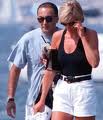
A bad day in Paris causes the British monarchy to come close to toppling as the people's choice for queen dies young and the old out-of-touch queen shows her haughty isolated snob side? On Aug. 30/31, 1997 (Sat.-Sun.) over one year after her Aug. 8, 1996 divorce from Prince Charles, and exactly one year since she lost her royal title of princess of Wales, British Lady Diana "Di" Spencer (b. 1961) dies in a high-speed car accident in a Mercedes-Benz S280 in the Pont de l'Alma Tunnel in Paris after leaving the Paris Ritz Hotel with millionaire Egyptian Muslim boyfriend Emad El-Din Mohamed Abdel Moneim "Dodi" Fayed (b. 1955), executive producer of "Chariots of Fire"; nobody is wearing a seatbelt, and Dodi is killed; Rintein, West Germany-born bodyguard Trevor Rees-Jones (1968-) is seriously injured, suffering amnesia about the accident; Lorient, Brittany-born driver Henri Paul (b. 1956) (deputy head of security at the Hotel Ritz) is also killed, and later found/ to be legally intoxicated; at first the paparazzi hounding her are accused of causing the crash, and later Dodi's Egyptian father Mohammed Abdel Moneim Al-Fayed (1929-), billionaire owner of Harrods in London as well as the Hotel Ritz in Paris gives the conspiracy theorists a big bone, claiming a plot by the British royals to murder her to keep her from having a Muslim hubby and baby; Diana was on the verge of converting to Islam after her previous beau Dr. Hasnat Ahmad Khan (1960-) broke up their relationship in July?; Mohammad al-Fayed's sister Safia al-Fayed claims that Diana had converted to Islam and was planning to move to Alexandria, Egypt with Dodi after they got married, which is why she was murdered; on Aug. 31 Diana's brother Earl Spencer utters the soundbyte: "I always believed that the press would kill her in the end. Not even I could imagine that they would take such a direct hand in her death, as seems to be the case"; on Aug. 31 'British PM Tony Blair calls her "the people's princess", while Elizabeth II and her hubby Prince Mounbatten stay suspiciously holed-up in Balmoral Castle on their 40K-acre estate in Scotland so long that the public gets most uncommonly pissed-off, 35% claiming they want the monarchy abolished, until Blair personally arrives to strongarm her, causing them to return to London on Sept. 5 (Fri.), while ordering a British flag flown at half-mast on top of Buckingham Palace in place of the royal standard (as if to say, she coulda been a contender, but we had to have her eliminated since she was going Muslim?); as she arrives, the queen gets out of the car to view the tons of flowers propped against the fence, many with anti-royalty remarks on them, then gives a public address on BBC-TV at 6 p.m., praising Diana as an "exceptional and gifted human being"; on Sept. 6 the 3.5-mi. funeral procession from Kensington Palace to Westminster Abbey along packed streets sees the queen break tradition and bow as her coffin passes; next year Dodi's dad Mohamed claims a "conspiracy" opposed to his Muslim son's relationship with her; many suspect hubby Prince Charles, with Camilla Parker-Bowles (whom Princess Di calls "the Rottweiler") waiting in the wings; she had just made unflattering comments about the royal family which were making the rounds in British tabloids; she dies at the same age and same mo. as Marilyn Monroe, causing Elton John to rework his "Candle in the Wind" for her funeral; by 2005 the conspiracy theory appears to fall apart, as there is no evidence of a black Fiat pursuing them as held in early reports, the brake cables had not been cut, Di was chatting leisurely on her cell phone at the moment of the crash, and she had no intention of marrying fling-of-the-season Dodi; Mohamed Fayed erects a statue titled Innocent Victims to his son and Di outside his Harrods dept. store, showing her in a revealing skirt and him with an open shirt showing chest hair, circled overhead by an albatross; in June 2010 British atty. Michael Mansfield, who represented Mohamad al-Fayed at the inquest into the death of his son claims that Diana was killed because she planned to expose senior members of the British arms trade involved with land mines.




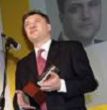


The Blair era is over, and is replaced with a new one with Brains and Balls? On June 24, 2007 Scottish finance minister James Gordon Brown (1951-) takes control of Britain's governing Labour Party, saying that Britain would "learn lessons that need to be learned" after Tony Blair's support of the Bush Iraq War, and that his new foreign policy will "reflect the truth that to isolate and defeat terrorist extremism now involves more than military force", saying "It is also a struggle of ideas and ideals that in the coming years will be waged and won for hearts and minds here at home and round the world"; Harriet Ruth Harman (1950-) is elected as his deputy (until Sept. 12, 2015), calling for the govt. to apologize for its mistakes over the Iraq War; Brown adds that he will maintain Britian's strong relationship with U.S. pres. George W. Bush; on June 27 Blair steps down, and Brown takes over as British PM (until May 11, 2010) (Elizabeth's 11th PM), and on June 28 names Alistair Maclean Darling (1953-) as finance minister (chancellor of the exchequer) (until May 11, 2010), and pro-U.S. David Wright "Brains" Miliband (1965-) as the 2nd youngest foreign minister in British history (until May 11, 2010); his wife is a U.S. citizen; husband-wife team Edward Michael "Ed" Balls (1967-) (not to be confused with the writer Edward Ball) and Yvette Cooper (1969-) become secy. of state for children, schools, and family (until May 11, 2010), and housing minister (May 10, 2005-Jan. 24, 2008); David Miliband's younger brother Edward Samuel "Ed" Miliband (1969-) is named minister for the cabinet office (until Oct. 3, 2008); Tony Blair takes a new job as Middle East peace envoy to the internat. diplomatic Quartet, the U.S., the EU, the U.N., and Russia.


On July 7, 2005 (7/7) (8:49 a.m. BST) the London 7/11 Suicide Bombings see four bombings in London, England (pop. 7.4M) by four jihadists, incl. near Paddington Station (Circle line) (N of Hyde Park), Liverpool Street Station (Circle line) (NW of Aldgate Station), Russell Square (Piccadilly Line) (N of the U. of London and the British Museum), and King's Cross Station (Piccadilly Line) (stop for the Hogwart's Express?) kill 52 plus four suicide bombers, and injure 784, becoming the deadliest attack on London since WWII, and shocking the supposedly safe city, which had been considered a tolerant haven for budding Muslim terrorists; former NYC Mayor Rudolph Giuliani is yards away from the explosion near the Liverpool St. Station, and calls it an "eerie reminder" of 9/11; the politicos come thru with great soundbytes: "We will show, by our spirit and dignity, and by our quiet but true strength that there is in the British people, that our values will long outlast theirs" (PM Tony Blair); "This scorn for human life is something we must fight with every greater firmness" (Jacques Chirac); "No matter where such inhuman crimes occur... they demand unconditional condemnation" (Vladimir Putin); on July 17 the Sunni Council, Britain's largest Sunni Muslim group, led by Sheikh Abu Basir al-Tartusi issues a fatwa condemning the bombings as "perverted ideology", while al-Tartusi later issues the soundbyte "More than half of the Quran and hundreds of the Prophet's sayings call for jihad and fighting those unjust tyrants"; one of the bombers, Shehzad Tanweer (22), a Briton of Pakistani descent who worked at his father's fish and chips shop in Leeds leaves behind savings of $212,460, which goes to his family; ringleader Tafazal Mohammad (1964-) is later paid 80K pounds to lecture Scotland Yard's counterterrorism unit on how best to "engage" with Muslims; British pacifist Samantha Louise Lewthwaite (1983-), widow of black Jamaica-born British Muslim convert Germaine Maurice Lindsay (Abdullah Shaheed Jamal) (1985-2005), who blew up on Russell Square, killing 26, goes on to become the Muslim terrorist AKA the White Widow.
On July 17-Sept. 12, 2006 the 50+-day Siege of Musa Qala (Arab. "Fortress of Moses") in Helmand Province, Afghanistan sees a small force of British and Danish troops hold off a Taliban siege.
On Jan. 31, 2007 British authorities arrest nine men in Birmingham, England for an alleged terrorist plot to torture and behead a British Muslim soldier and broadcast it on the Net.
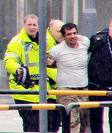

On June 29, 2007 police foil a plot involving two cars in C London, England packed with explosives near Piccadilly Circus; on June 30 a fiery dark green Jeep Cherokee rams the terminal at Glasgow Internat. Airport, then two men run from it, Iraqi physician Bilal Talal Samad Abdullah (1980-), and Bangalore, India-born engineering student Kafeel (Khalid) (Khaled) Ahmed (Ahmad) (b. 1979), the latter on fire, both ending up captured and Ahmed in critical condition, obviously a bungled suicide bombing job, which is confirmed by a suicide note; Ahmed dies on Aug. 2; investigators later conclude that they had already tried to bomb a nightclub in C London; Abdullah is given two concurrent life sentences in London for conspiracy on Dec. 17, 2008, with possible parole in 32 years; meanwhile British authorities announce that the Muslim terrorists have been plotting to use health care profs. for attacks.
On Jan. 7, 2010 former archbishop of Canterbury (1991-2002) Baron George Carey (1935-) pub. a letter in the London Times warning that uncontrolled Islamic immigration will threaten the "very ethos or DNA" of Britain.
On Feb. 5, 2010 Pres. Obama attends a funeral for the seven CIA employees killed in Afghanistan on Dec. 30, telling the CIA to "carry on their work, to complete this mission, to win this war and to keep our country safe"; on Feb. 5 the Obama admin. sends a cable to the U.S. embassy in Britain, ordering them to conduct outreach to "empower" the British Muslim community.
On Apr. 8, 2010 the British Muslim group Bradford Council of Mosques makes a publicity play by demanding the ministry of defense apologize because its firing range in N England uses green-domed structures that they claim look like mosques; meanwhile after the Palestinian Authority announces the building of a pres. compound on a street in Ramallah named after Palestinian suicide bombmaker Yihye "the Engineer" Ayyash, Israel urges the U.N. to condemn them; meanwhile on Apr. 8 a poll by the IMAS Inst. shows that 54% of Austrians consider Islam "a threat to the West and our way of life", while 72% believe "Muslims don't adapt to the rules of community life", and 71% believe that Islam isn't compatible with Western concepts of democracy, On Apr. 9 U.S. Supreme Court justice John Paul Stevens announces his retirement at the end of the session in June, leaving the court with no Protestants for the first time ever (until ?); he turns 90 on Apr. 20.
On Apr. 10, 2010 the conference Islam in Italy: Fulfilling the Prophecy is held in London, England to celebrate the coming fulfillment of Prophet Muhammad that Islam will conquer first Constantinople then Rome.
On Apr. 22, 2010 Lily-May Woods becomes Britain's first baby with two women parents on her birth certificate.
On Apr. 28, 2010 British PM Gordon Brown commits a political gaffe, calling a loyal Labour voter a "bigoted woman" in his limo over a live mike for expressing concerns over high taxation and immigration; despite apologizing, his chances for reelection fizzle to zero?; Brexit is born?


On May 6, 2010 elections in Britain result in a hung Parliament although Conservatives make some gains; Labour comes in 2nd, and the Liberal Dems. 3rd; Labour candidates Shabana Mahmood (1980-), Rushanara Ali (1975-), and Yasmin Qureshi (1963-) become the first British female Muslim and Asian MPs; on May 10 Gordon Brown announces his intentions of resigning as MP in favor of Conservative David William Donald Cameron (1966-) (direct descendant of William IV and his mistress Dorothea Jordan) (5th cousin twice removed of Elizabeth II), who becomes British PM on May 11 (until July 13, 2016) (youngest British MP since the 1810s), heading a coalition govt. with the Liberal Dems. headed by Nicholas William Peter "Nick" Clegg (1967-); on May 13 George Gideon Oliver Osborne (1971-) becomes chancellor (until ?); English Muslim baroness Sayeeda Hussain Warsi (1971-) is promoted to chmn. of the Conservative Party, and on May 12 she is appointed to Cameron's cabinet as minister without portfolio (first Muslim woman), causing radical Islamist Anjem Choudary (1967-) (leader of the banned group Islam4UK) to comment "She may look like a Muslim and have a Muslim-sounding name but she does not represent Islam or anyone in this country who is a Muslim... She is a coconut, brown on the outside but white on the inside. In fact, she is whiter than most of the other white people in government. How can she be a Muslim and support the military involvement of the British Army in Islamic countries?"; on May 13 Pres. Obama announces that Cameron is committed to continuing British assistance in the battle against terrorism in Afghanistan for the long term.
On May 14, 2010 British MP Stephen Timms is stabbed by British Muslim Roshanara Choudhary (1989-) for supporting the U.S. war in Iraq; she had been watching videos by Am. radical cleric Anwar al-Awlaki.
On Oct. 19, 2010 Mary Bale (1965-) of Coventry, England pleads guilty to animal cruelty for a summer incident where she grabbed 4-y.-o. cat Lola and threw into a trash bin then shut the cover and walked off, which was videotaped and went viral on the Internet, outraging animal lovers, some of whom threaten her.
On Oct. 27, 2010 Germany makes forced marriages (mainly an Islamic practice) illegal, with up to five years in prison; meanwhile a survey by SingleMuslim.com of London reveals that 26.2% believe that polygamy is legal within Islam; meanwhile it is revealed that Muhammad is now the most popular infant boy name in England, ahead of Jack and Harry.
On Nov. 21, 2010 after a march against Muslim extremism, masked men throw taboo beer and bacon at the Kingston Mosque in England, pissing-off the PC establishment, after which top political and police leaders address the 1K congregation on Dec. 6 to reassure them.
On Nov. 27, 2010 the 5K-strong English Defence League stages three demonstrations against Sharia in England.
On Jan. 4, 2011 a study by Kevin Brice of Swansea U. in Britain is pub., revealing that up to 100K Britons converted to Islam since 2001, with white women leading the charge.
On Jan. 6, 2011 two young Pakistani men are arrested in Nottingham for a series of rapes and sexual assaults on vulnerable white girls picked up on the streets; on Jan. 9 ex-British Labor justice secy. Jack Straw accuses young Pakistani immigrants of viewing vulnerable white girls as "easy meat" for sexual abuse, causing a PC backlash.
On Jan. 20, 2011 Birmingham imam Shaykh Asrar Rashid tells Muslims not to fight in the British armed forces due to their presence in Iraq and Afghanistan, and calls Queen Elizabeth II a "disgusting woman" for knighting writer Salman Rushdie.
On Feb. 4, 2011 British PM David Cameron launches a war on 30 years of failed multiculturalism with a new policy of "muscular liberalism", telling Muslims that he is declaring an end to "passive tolerance" of divided communities, and they must integrate and accept core British values and speak English or else they will lose public money.
On Jan. 31, 2011 the U.S. State Dept. issues an updated warning on the "continuing threat of terrorist actions" for U.S. citizens worldwide, along with a 2nd advisory cautioning against travel to Britain.
In Jan. 2011 the British Health Protection Agency announces that a fatal superbug called NDM-1 has invaded Britain from India and Pakistan.
On Feb. 1, 2011 EU foreign minister Baroness Ashton of Britain scuttles a EU attempt to agree on a statement condemning attacks on Christians in the Islamic word because she won't use the word Christian.
On Feb. 4, 2011 British PM David Cameron launches a war on 30 years of failed multiculturalism with a new policy of "muscular liberalism", telling Muslims that he is declaring an end to "passive tolerance" of divided communities, and they must integrate and accept core British values and speak English or else they will lose public money.
On Feb. 5, 2011 hundreds of members of the English Defence League stage an anti-Islam demonstration in Luton (N of London), shouting "No more mosques", "Never surrender", and "Islam is of the Devil".
On Feb. 28, 2011 British Airways Muslim computer expert Rajib Karim (1980-) is found guilty of conspiring with Anwar al-Awlaki to blow up a plane.
On Mar. 3, 2011 British radical Islamist Anjem Choudary holds a protest in front of the White House demanding that Sharia be enacted, causing a counter-protest.
On Mar. 29, 2011 the London Conference on Libya sponsored by Britain and France in hopes of building a consensus sees several Arab states back out, incl. Egypt.
On Mar. 30, 2011 the £8M Prince Alwaleed Bin Talal Centre of Islamic Studies at Cambridge U. in Britain opens.
On Apr. 1, 2011 British security and counter-terrorism minister (since May 13, 2010) baroness Lilian Pauline Neville-Jones (1939-) tells the Daily Telegraph that the govt. needs to persuade the Muslim pop. that the U.K. is a single nation, and that they don't just "rub along together" but must be persuaded that their longterm future lies in Britain - but not in becoming British?
On Apr. 10, 2011 Welsh British Nat. Party candidate Sion Owens (1970-) is arrested for burning a Quran in his garden; the charges are dropped, but the investigators state that "almost certainly other proceedings will ensue".
On Apr. 14, 2011 a delegation from the British Foreign Office led by consul-gen. Marie-Louise Archer meets in Alexandria, Egypt with the Muslim Brotherood.
On May 4, 2011 Pres. Obama meets at the White House with Britain's Prince Charles, offering his best wishes to the newlyweds, and praising his work on environmental issues.
On May 17, 2011 British PM David Cameron announces that the first 450 troops will withdraw from Afghanistan this year.
On May 17-20, 2011 British Queen Elizabeth II visits Ireland.
On May 24, 2011 Labour councillor Naveeda Ikram becomes the first Muslim woman lord mayor in the U.K. in Bradford.
On May 25, 2011 Pres. Obama gives a Speech to the British Parliament, saying that Western influence remains strong in the world despite emerging powers incl. China, India, and Brazil, and that Western powers have a responsibility to uphold "universal rights" via multilateral forums incl. the G20, with the soundbyte: "Ultimately freedom must be won by the people themselves, not imposed from without"; he gives a joint press conference with British PM David Cameron, saying that he believes a 2-state solution for Israel and Palestine is achievable, urging Palestinians to negotiate with Israel over statehood instead of seeking U.N. recognition first.
On June 3, 2011 a U.N. Report on the Internet declares Internet access a human right, dissing France and Britain for passing laws removing access of accused copyright scofflaws, and other countries for blocking access to quell political unrest.
On June 7, 2011 U.K. home secy. Theresa May unvieils PM David Cameron's new violent extremism prevention policy, which finally recognizes that the goal of jihad is the establishment of Sharia, hence those who advocate Sharia may be non-violent but fail to "reflect British mainstream values".
On Aug. 21, 2012 after a fight at Silk's Gentlemen's Club, British Muslim Aqab Hussain (1991-) plows his car into a group of revelers in Manchester, England, leaving a blind man brain-damaged; on Oct. 2, 2013 he is convicted of four counts of attempted murder.
On May 20, 2013 a gang of Muslims use machetes to attack two men at a barber shop in Accrington, England, seriously injuring them.

On May 22, 2013 (2:20 p.m. local time) the Woolwich Beheadings see two Allah Akbar-shouting British-Nigerian Muslim jihadists Michael Olumide Adebolajo (1984-) (Muslim convert in 2003, who changed his name to Mujaahid) and Michael Adebowale (1990-) run over British soldier (drummer) Lee Rigby (b. 1987) with their car, then hack and behead him with a machete on the streets of Woolwich (SW London), England 200 yards from an army barracks he was heading to, then tell the ITV crew filming them his political reasons for it, with the soundbyte: "We swear by almighty Allah we will never stop fighting you. The only reason we have done this is because Muslims are dying every day. This British soldier is an eye for an eye, a tooth for a tooth... There are many many ayah throughout the Quran that say we must fight them as they fight us" before being shot by police, causing anti-Islamists protests by the English Defence League (EDL) et al., whose leader Tommy Robinson utters the soundbytes "We're justified in our anger", and "I' don't care if they're offended. I'm offended every day", along with a coverup attempt by the PC media led by PM David Cameron, who calls the attack a "betrayal of Islam" then holds a special meeting of the Cobra security cabinet; deputy PM Nick Clegg utters the soundbyte that the attack "flies in the face of the peace and love that Islam teaches"; London mayor Boris Johnson utters the soundbyte "It is completely wrong to blame this killing on Islam"; ex-PM Tony Blair utters the Tony Blair utters the soundbyte: "There is not a problem with Islam. For those of us who have studied it, there is no doubt about its true and peaceful nature... But there is a problem within Islam, from the adherents of an idology that is a stain within Islam... It is not the province of a few extremists... The world view goes deeper and wider than it is comfortable for us to admit""; scout leader Ingrid Loyau-Kennett (1964-) becomes a hero for talking the jihadists into stopping before police arrive; the jihadists were influenced by British radical cleric Omar Bakri Mohammed?; radical British cleric Anjem Chaudhry utters the soundbyte that most Muslims would agree with the jihadists; on May 24 British authorities arrest two in conjunction with the beheading while tightening security; on May 25 7K EDL members march in Newcastle; in Nov. 2010 Adebolajo was detained in Kenya for trying to join Al-Shabaab in Somalia; on May 26 Cameron goes on vaction in Ibiza with his family, pissing-off many.
On Apr. 14, 2014 after the number of schools investigated in Operation Trojan Horse (Muslim subversion) in Birmingham, England increases to 25, the Bradford Council sacks all of the governors at Laisterdyke Business and Enterprise College; on Apr. 20 British PM David Cameron utters the soundbyte that Britain "is a Christian country", and on Apr. 21 former home secy. Jack Straw utters the soundbyte that Muslims must accept that Christianity "permeates our sense of citizenship"; on May 4 David Cameron pledges to wipe out extremism and Islam from U.K. schools; too bad, Cameron "defenestrates" education secy. Michael Gove, whom Damian Thompson, assoc. ed. of The Spectator calls "the only minister who understands Islamism".
On May 15, 2014 Anglican canon Eric Woods, vicar of Sherborne, England pub. an article in the Western Gazette lamenting the "invasion of halal meat" and "the creeping Islamisation of our country".
On Sept. 4, 2014 Nigerian-born recent Muslim convert Fat Nicholas beheads 82-y.-o. Italian Cafe owner Palmira Silva in Edmonton, London, England.
On Nov. 7, 2014 police in the U.K. arrest four suspected Islamist terrorists in London, England, foiling an attack planned for Remembrance Day (Nov. 11) to stab Elizabeth II to death.
On Feb. 8, 2015 1K Muslims demonstrate in London, England against Muslim cartoons; meanwhile a petition signed by 100K British Muslims is presented to 10 Downing St.
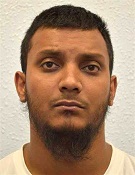
On Apr. 1, 2016 after being arrested last July, British Muslim delivery driver Junead Khan (1990-) is convicted of plotting a terrorist attack against U.S. military personnel in E England incl. Mildenhall RAF Base; his uncle Shazib Khan (1992-) is also convicted of planning to travel to Syria to fight with ISIS.

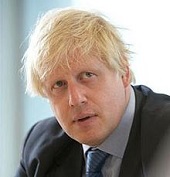
On June 2, 2016 British PM (since May 11, 2010) David Cameron resigns, and on July 13 Conservative home secy. (since May 12, 2010) Theresa Mary May (nee Brasier) (1956-) becomes PM of Britain (until June 7, 2019) (2nd female after Margaret Thatcher), becoming the 4th leader of a major world nation or org. incl. Germany, the IMF, and the U.S. Federal Reserve; on July 13 Conservative mayor of London (since May 4, 2008) Alexander Boris de Pfeffel Johnson (1964-) becomes foreign affairs minister (until July 9, 2018).
On June 23, 2016 the Brexit referendum on EU membership sees Britain vote 17.4M (51.89%) to 16.14M (48.11%) to leave the EU, shocking da world.

On Mar. 22, 2017 British-born Islam convert jihadist Khalid Masood (b. 1964) tries to attack the Parliament Bldg. in Westminster, London, England, driving his gray 4x4 car into a crowd on Westminster Bridge, killing two and injuring 50 before emerging with an 8-in. knife and stabbing a policeman to death before he is killed, causing Parliament to go into Code Red lockdown; ISIS claims responsibility.

On June 3, 2017 the 2017 London Massacre sees three British Muslim jihadists drive a van into pedestrians on London Bridge in England, then stab people in the nearby Borough Market area, killing seven and injuring 48 before being killed by police; parallel universe PM Theresa May utters the soundbyte that the British people must come together to fight "extemism", with the soundbyte: "It is an ideology that claims our Western values of freedom, democracy, and human rights are incompatible with the religion of Islam"; on June 5 police arrest two of the three attackers, Pakistan-born Khuram Shazad Butt (27) and Moroccan or Libyan-born Rachid Redouane (Elkhdar) (30), members of the militant jihadist network al-Muhajiroun; the third is Youssef Zaghba; Muslim London mayor Sadiq Khan utters the soundbyte: "Terrorism is par and parcel of living in a great global city", assuring people there is nothing to fear, causing Pres. Trump to tweet that he's nuts, causing him to change his story to assuring people that there is nothing to fear from heightened security.
On Dec. 13, 2017 English Muslim dentistry student Mohammed Abbas Idris Awan of the U. of Sheffield in England is found guilty of three terrorism counts incl. engaging in the preparation of an act of terrorism.
On Dec. 19, 2017 four Muslims are arrested in South Yorkshire and Derbyshire, England for a Christmas jihadist terror plot.
On Feb. 9, 2018 a 250m 130-tonne Monster Fatberg found last year goes on display at the Museum of London, composed of sewer clog.
On Feb. 22, 2018 Muslim immigrant Munir Mohammed (1980-) of Derby, England is sentenced to life in prison (min. 14 years) for plotting a jihadist massacre; his pharmacist wife Rowaida El-Hassan is given 12 years.
On Mar. 2, 2018 17-y.-o. Muslim convert Lloyd Gunton is jailed indefinitely (at least 11 years) for planning an "act of atrocity" in Cardiff, England during a Justin Bieber concert.
On May 15, 2018 the Wealth-X Billionaire Census is pub., revealing that billionaire wealth surged 24% to a record level in 2017, and the billionaire pop. surged 15% fo 2,754 (vs. 2,473 in 2015); San Francisco, Calif. leads the other cities, with one billionaire for every 11,612 inhabitants, vs. 81,311 for New York City, 84,007 for Dubai, 84,962 for Hong Kong, 101,957 for Los Angeles, Calif., and 135,198 for London.
On Aug. 14, 2018 (06:37 GMT) 29-y.-o. Sudanese Muslim Salih Khater (1989-) from Birmingham drives his silver Ford Fiesta through a group of cyclists into security barriers outside Parliament in London, England, injuring three before being arrested on suspicion of terrorism, causing Pres. Trump to tweet the soundbyte: "Another terrorist attack in London. These animals are crazy and must be dealt with through toughness and strength!"; Khater's friends call it an accident; Muslim London Mayor Sadiq Khan calls for cars to be banned from Parliament Square.
In 2019 British troops stationed in Germany since WWII finally leave.
On Jan. 15, 2019 the British Parliament votes 422-202 (incl. 118 Conservative MPs voting yes) to reject any deal over Brexit, leaving the only option to leave the EU sans deal on Mar. 29; on Jan. 16 PM Theresa May survives a no-confidence vote 306-325; on Jan. 19 a ComRes Poll reveals that 74% of the British people believe that their ruling class is not in touch with the mood of the country.On Jan. 16, 2019 British jihadists from West Midlands, England send threatening letters to 15+ churches warning of petrol bomb and stabbing attacks.
On Feb. 6, 2019 (Internat. Day of Zero Tolerance for Female Genital Mutilation) the first conviction is obtained in Britain for violating the 1985 Prohibition of Female Circumcision Act, which was amended into the Female Genital Mutilation (FGM) Act in 2003.
On May 1, 2019 (night) after a visit by teenie activist Greta Thunberg, the David Attenborough documentary "Climate Change: The Facts", and an 11-day protest by the activist group Extinction Rebellion that paralyzed London, a bipartisan Nat. Declaration of an Environmental and Climate Emergency is declared by the British Parliament, becoming the first nat. govt.

On July 7, 2019 secret diplomatic cables from U.K. ambassador to the U.S. (since Jan. 28, 2016) Sir Nigel Kim Darroch (1954-) are leaked to The Mail on Sunday, showing him calling the Trump admin. "inept and insecure", forcing him to resign.
On Nov. 29, 2019 (Black Fri.) (2:00 p.m.) an Islamist jihadist stabbing attack at London Bridge in London, England kills two and injures several before police shoot the bum, who had been released from jail 1 year ago and required to wear an electronic tag; meanwhile another jihadist stabbing attack at the Grote Marktstraat in The Hague, Netheerlands injures three.